You are using an out of date browser. It may not display this or other websites correctly.
You should upgrade or use an alternative browser.
You should upgrade or use an alternative browser.
Reviews by Moonstar
Filters
Show only:
Loading…
Moonstar
100+ Head-Fier
Pros: Natural, Clean & Dynamic Presentation,
Pairs pretty well with both Sensitive IEM’s & Power Hungry Headphones,
Hardware Features (THX AAA-788+ Amplifier Section, AK4493SEQ, etc.),
Wide variety of Input & Output Options,
Size, Build Quality & RGB Indicator,
Excellent Value for your Money
Pairs pretty well with both Sensitive IEM’s & Power Hungry Headphones,
Hardware Features (THX AAA-788+ Amplifier Section, AK4493SEQ, etc.),
Wide variety of Input & Output Options,
Size, Build Quality & RGB Indicator,
Excellent Value for your Money
Cons: No MQA Decoding,
Wireless Connectivity options (Wi-Fi and/or Bluetooth) would be welcome
Wireless Connectivity options (Wi-Fi and/or Bluetooth) would be welcome
FiiO K7 DAC & Headphone Amplifier Review
Introduction:
The K7 is FiiO’s latest true balanced desktop DAC & Headphone Amplifier that comes with some interesting specs such like a Dual AK4493SEQ DAC Chip setup, 2x THX AAA 788+ amplifiers, XMOS USB receiver and NJU72315+OP Volume chips. Moreover, the device features USB, Optical, Coaxial, RCA inputs and both 6.35mm Single-Ended + 4.4mm Balanced analog output interfaces.
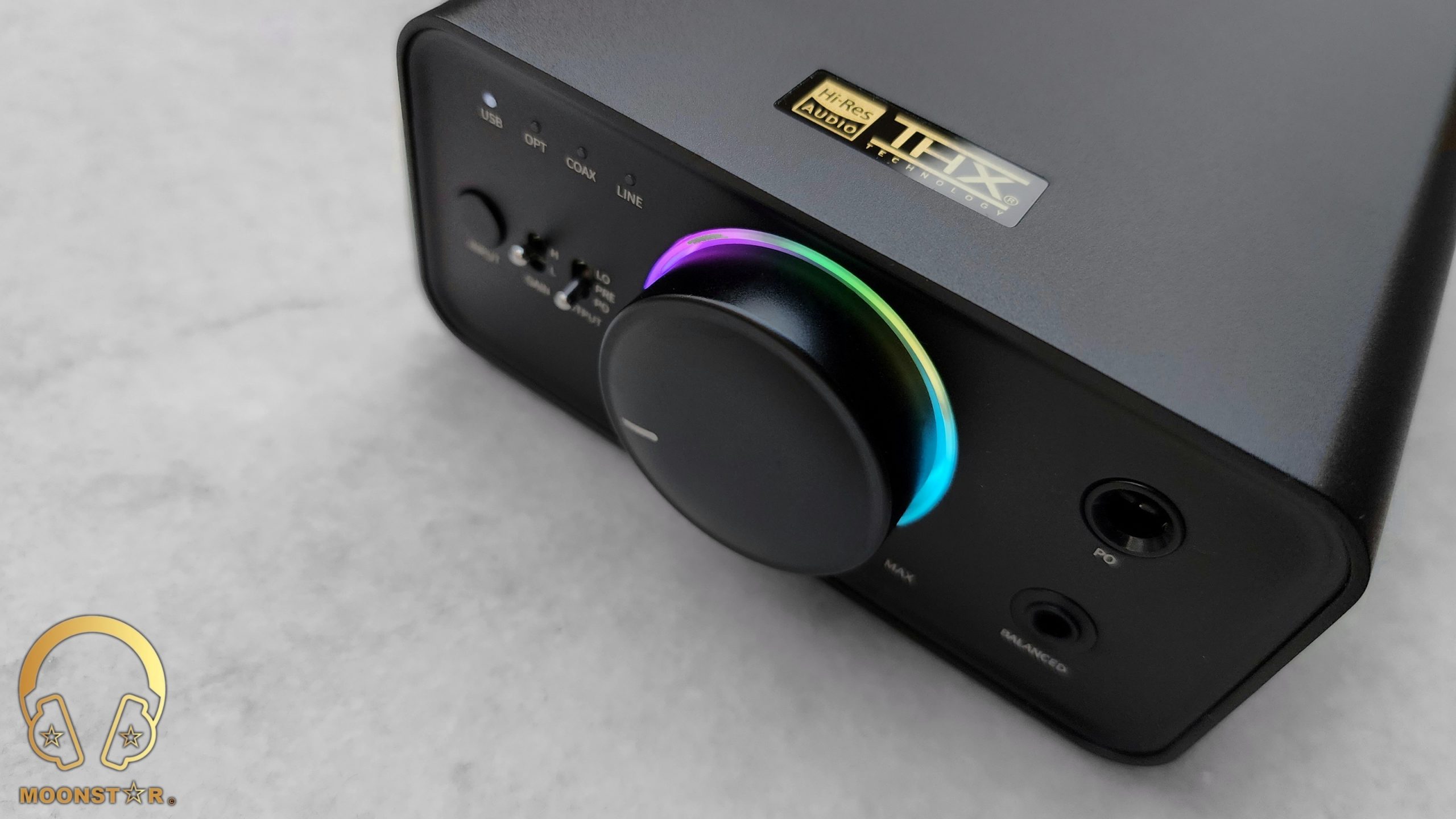
Disclaimer:
I would like to thank FiiO for providing me the K7 DAC & Headphone Amplifier as review sample. I am not affiliated with FiiO beyond this review and these words reflect my true and unaltered, opinions about the product.
Price & Availability:
The FiiO K7 is a quite reasonable priced Headphone DAC/Amplifier that is actually available for 199.99 US$. More information’s can be found under the link below;
Package & Accessories:
The FiiO K7 came inside a square shaped black box that was wrapped with a cardboard sleeve that has a fancy design that sport the illustration and some product related brandings with an iridescent finish on its surface.

The box of the K7 contains the following items:
- 1 x FiiO K7 Desktop Headphone DAC/Amplifier
- 1 x USB-A to USB-B cable
- 1 x Power Cable
- 1 x Power Adapter
- 1 x User Manual & Warranty card
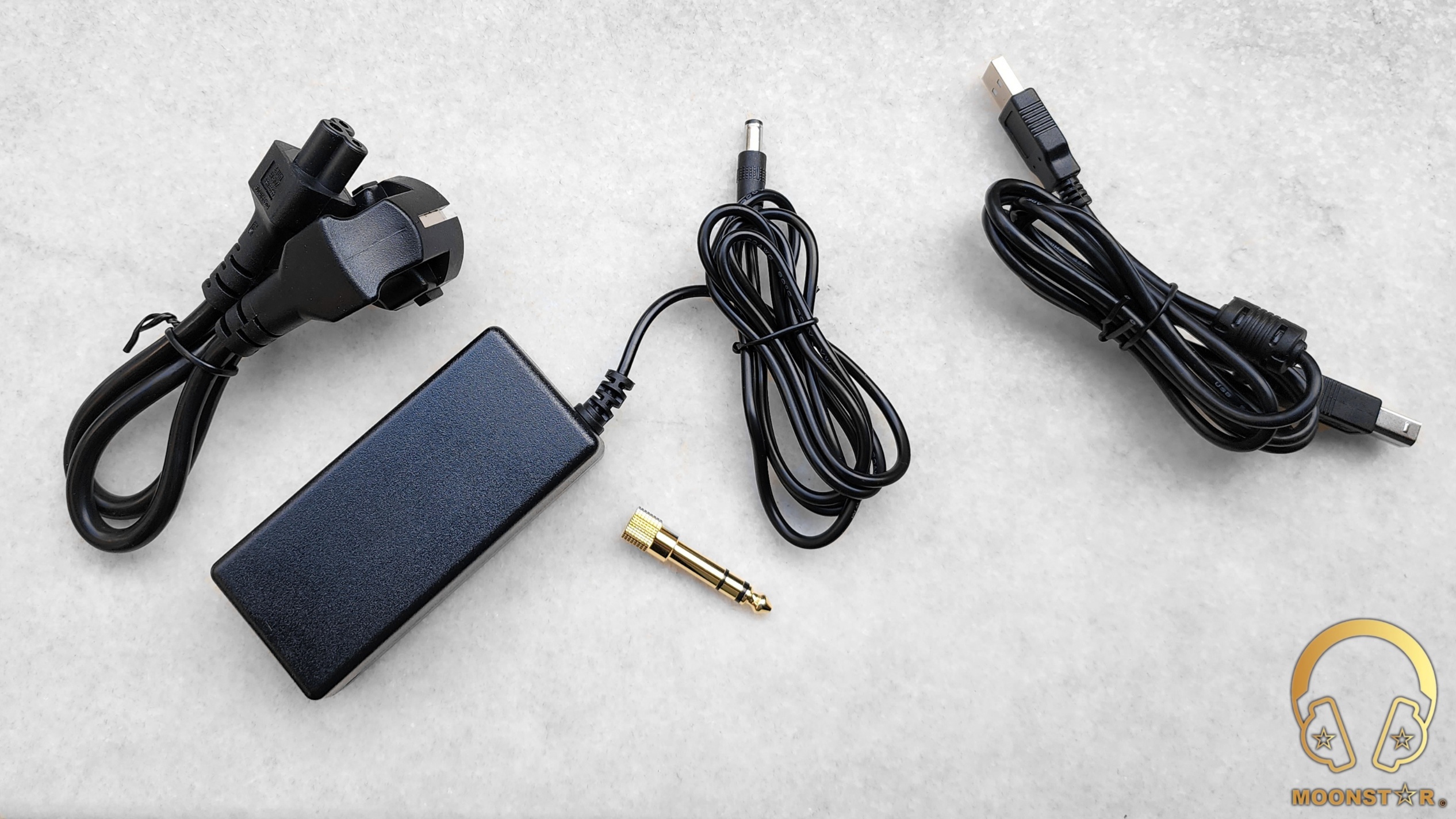
Design & Build Quality:
The FiiO K7 is the company’s latest true balanced desktop type DAC & Headphone Amplifier that features a pretty robust CNC machined Aluminum body with a black finish. The K7 is equipped with multiple input, output and control interfaces that are located on the front and rear side of the device. The device has dimensions of about 120 x 168 x 55mm and weights approx 610grams.
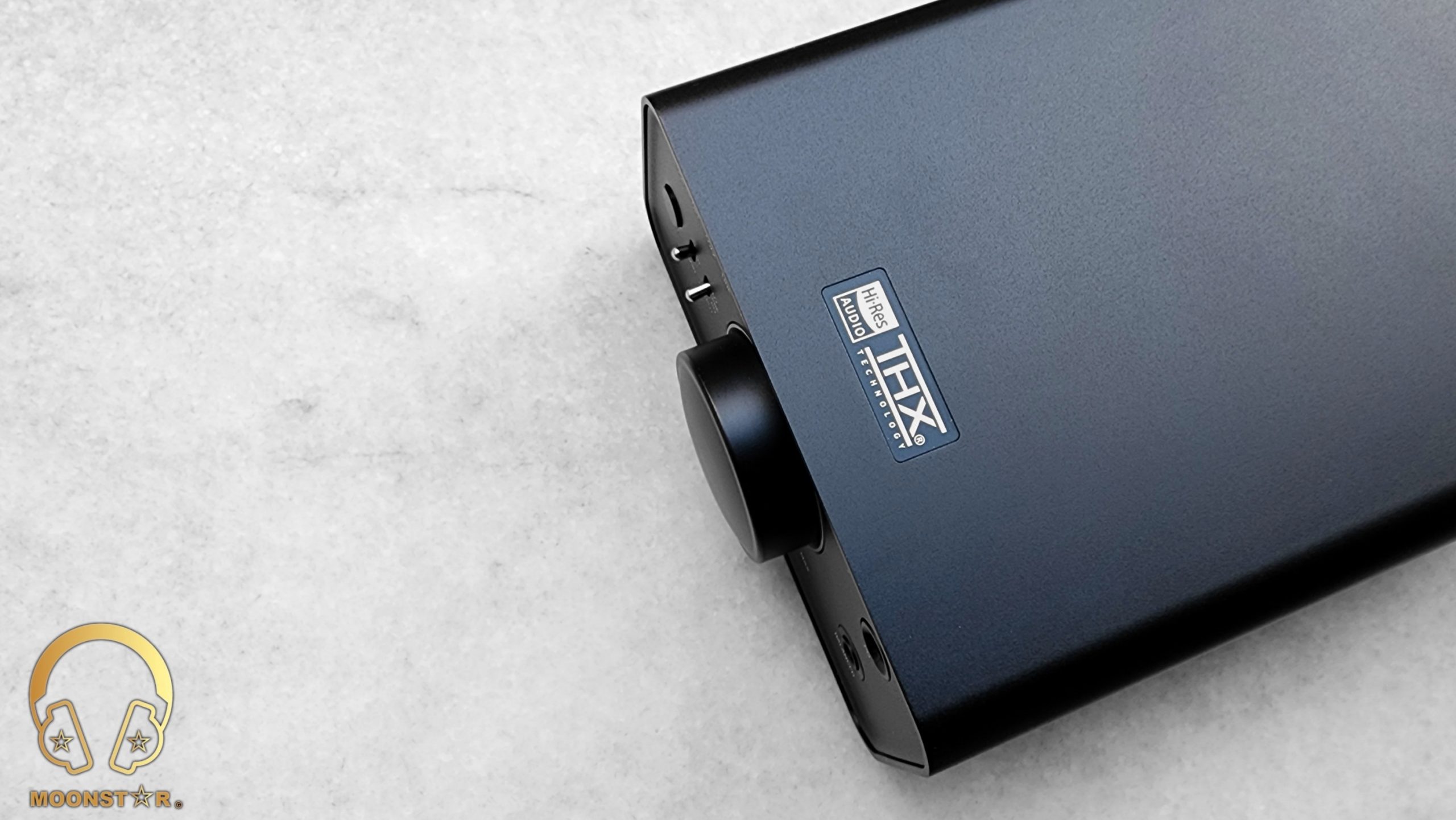
On the top of the device are the FiiO brand logo and a label with the Hi-Res Audio & THX Technology branding.
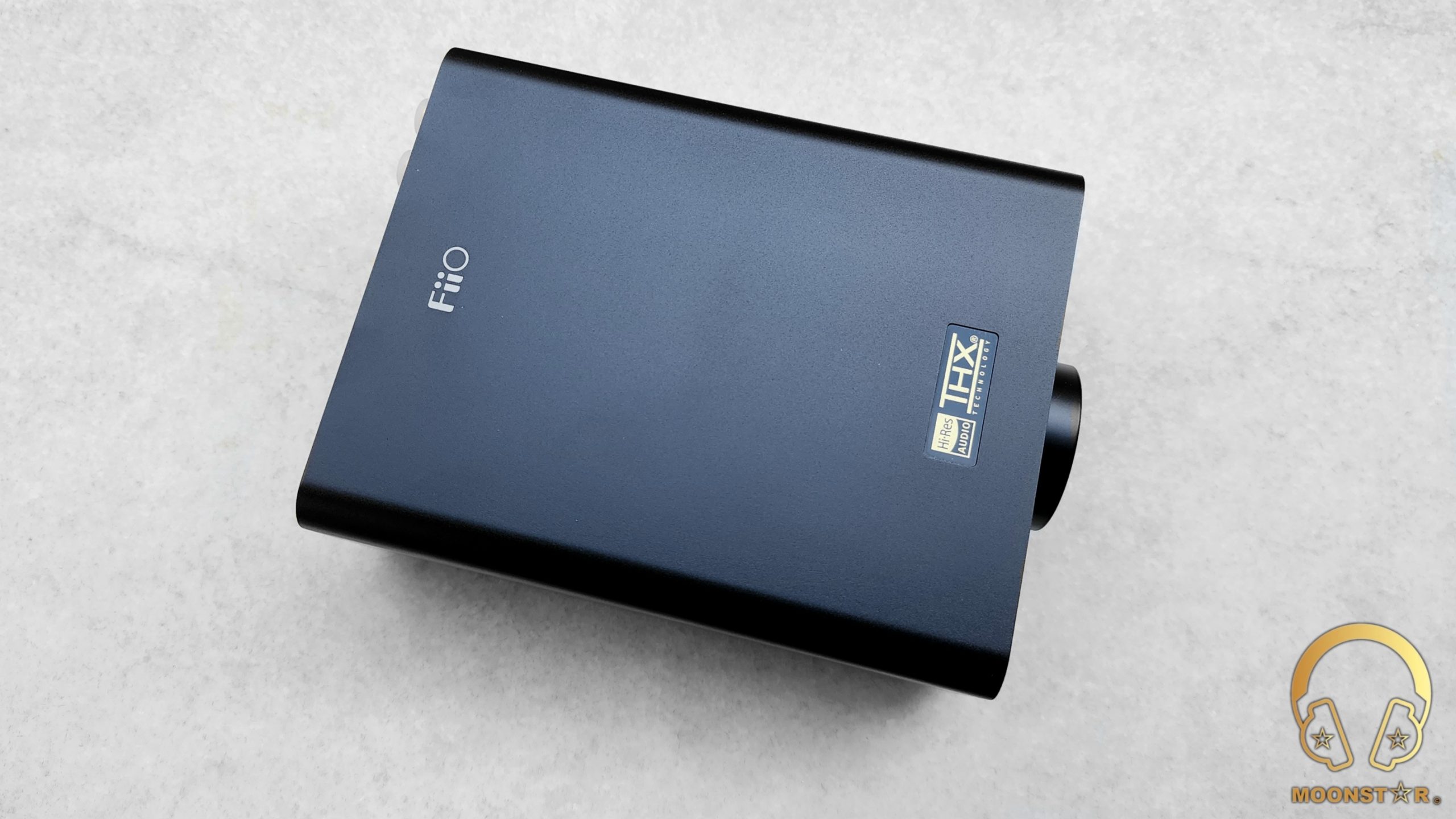
The front panel of the K7 is equipped with the analog outputs and multiple control tools such like buttons, potentiometers and switches.
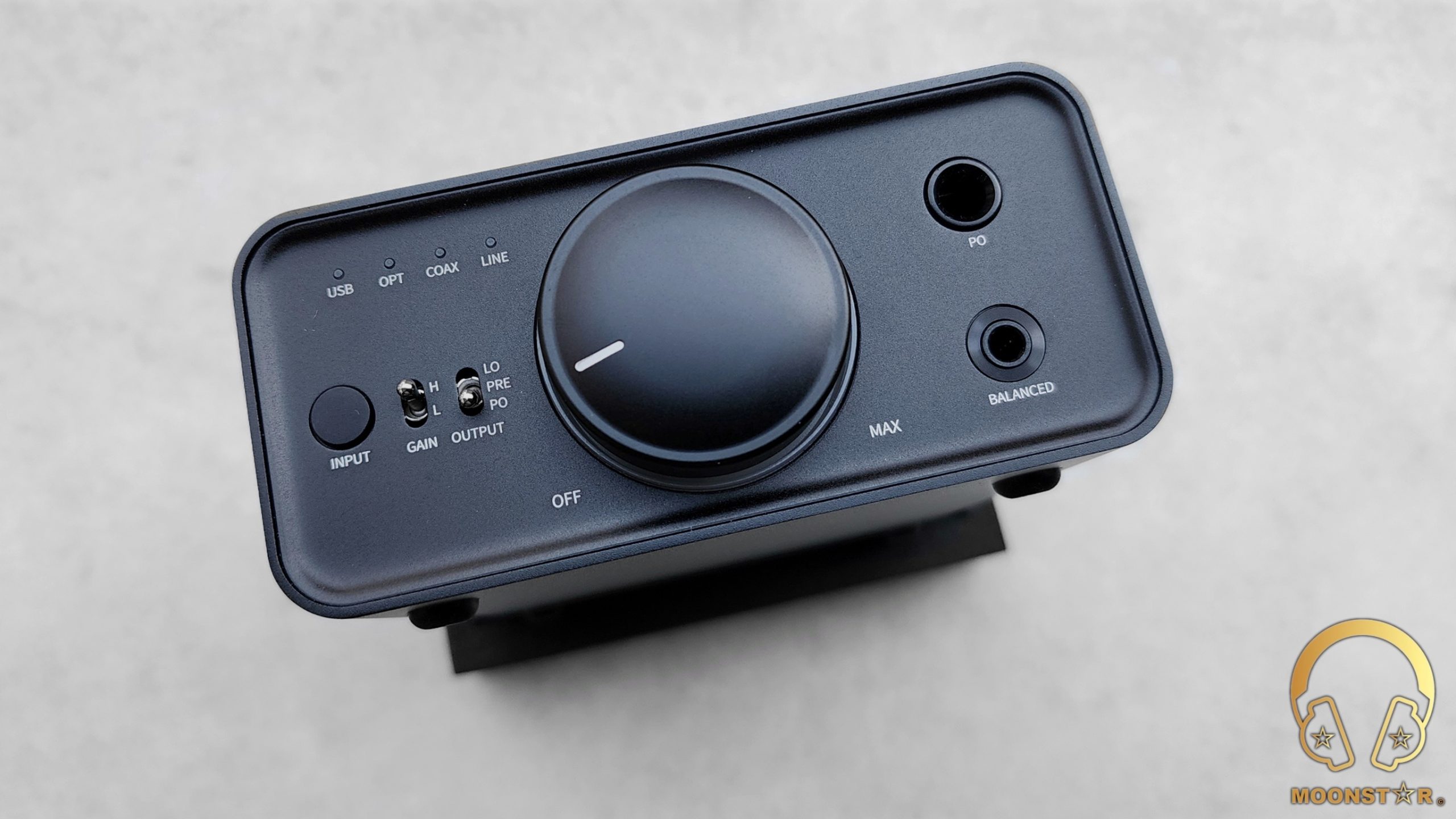
The right side of the front panel features the 6.35mm Single Ended and 4.4mm Balanced headphone outputs.
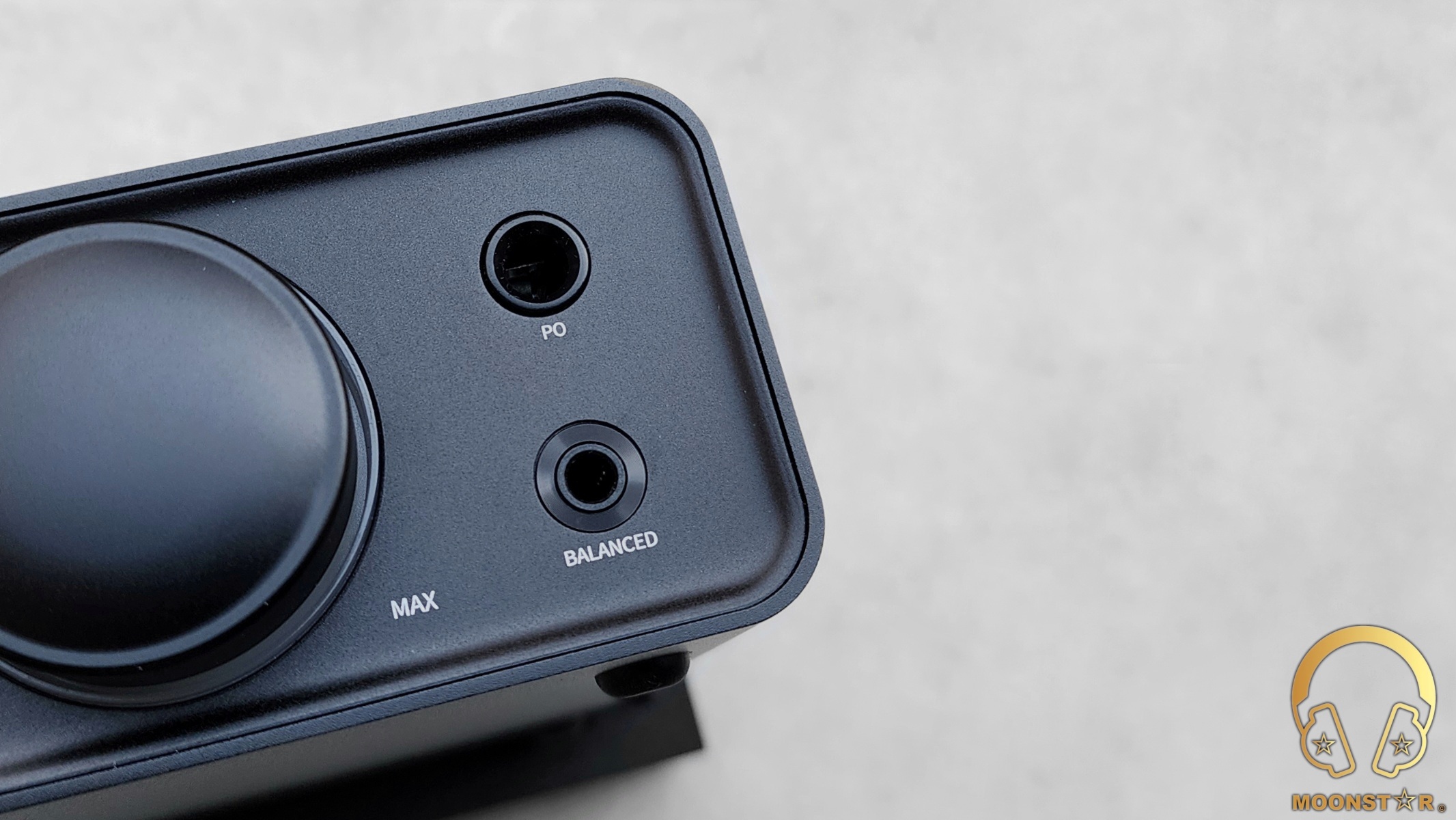
The center of the front panel is equipped with a volume wheel/potentiometer that sports a fancy looking RGB status indicator in form a ring that glows up in various colors depending of the codec and operating status of the device.
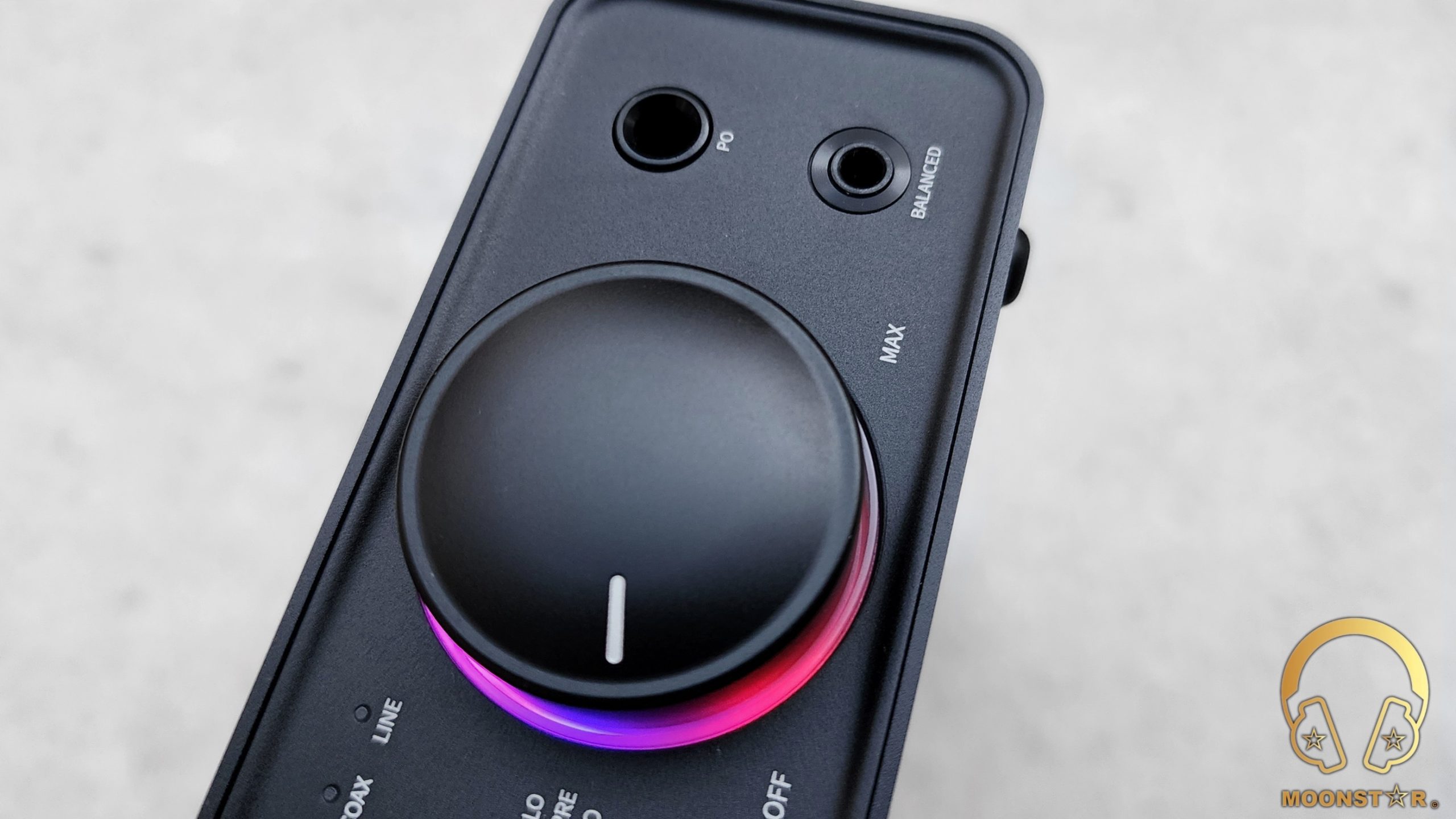
The left side of the front panel sports an input button and 4 LED indicators that give you information about the actual selected source. Moreover, here are two witches one for High/Low gain and one to select the output.
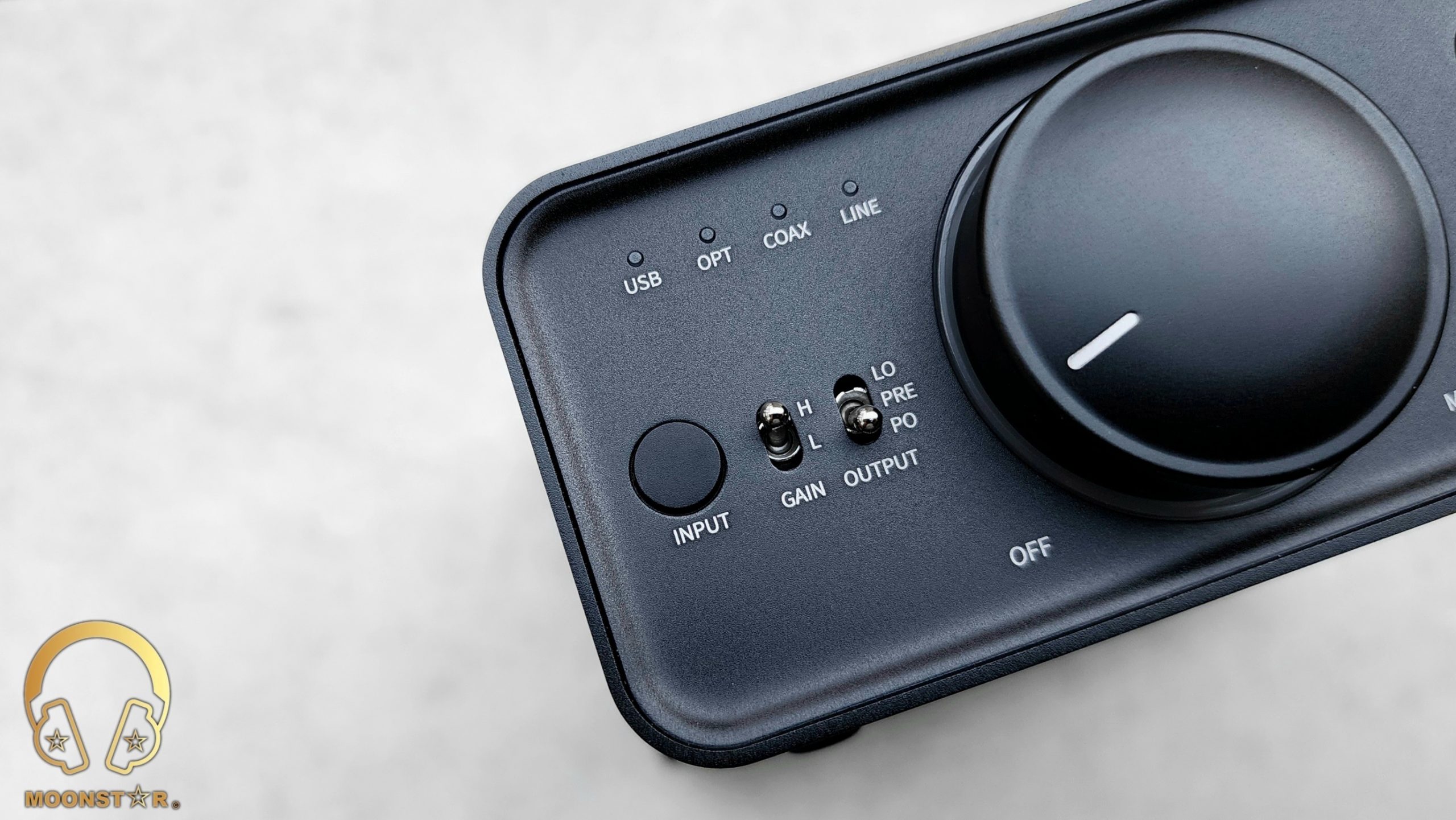
The rear panel of the K7 features a Single Ended Line-In, USB Type-B, Optical (Toslink), Coaxial Inputs and Single-Ended output interface. Here is also the power input of the device.
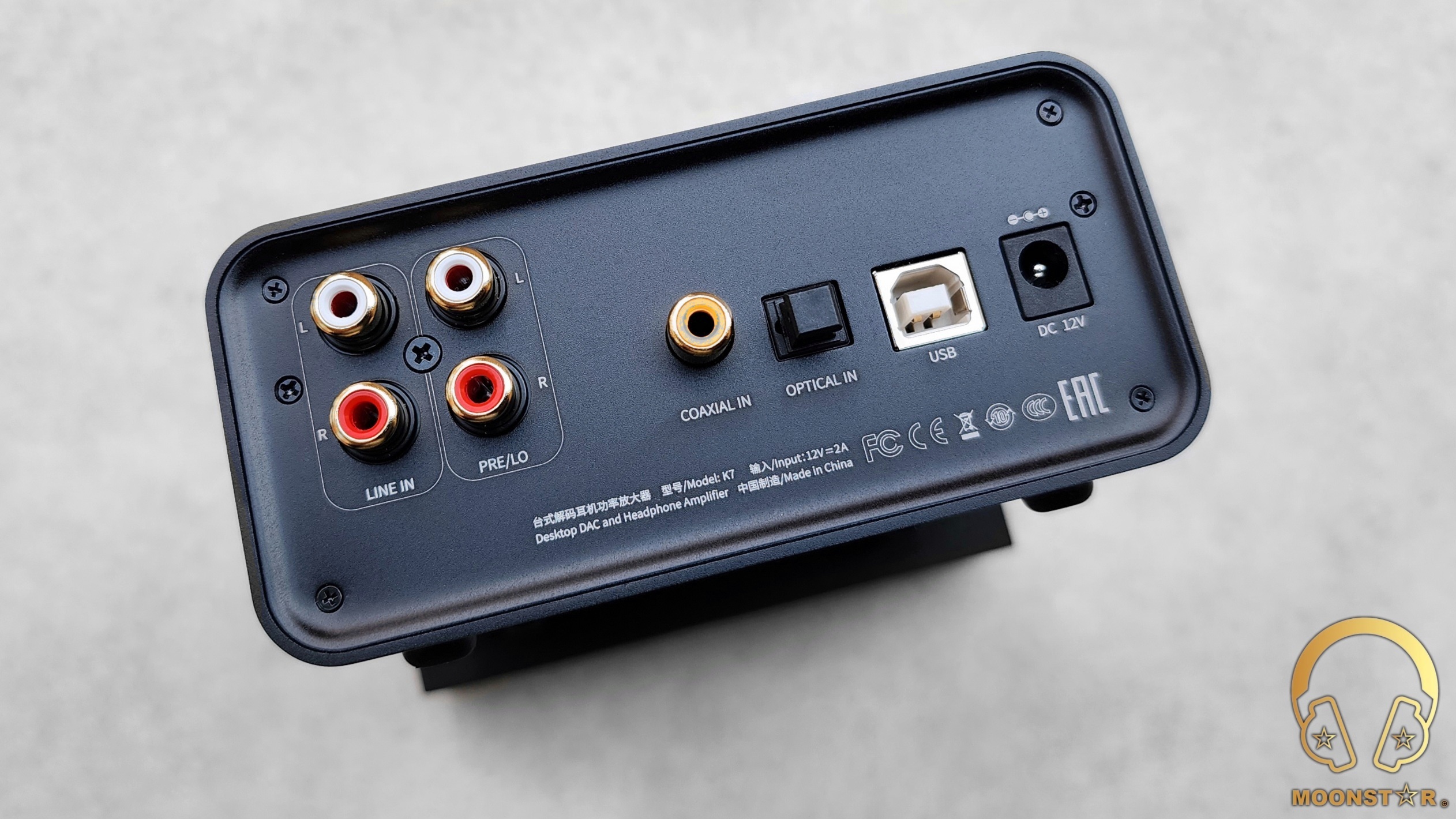
The overall build quality of the K7 meets my expectations from a devices at this price level same like other FiiO products.
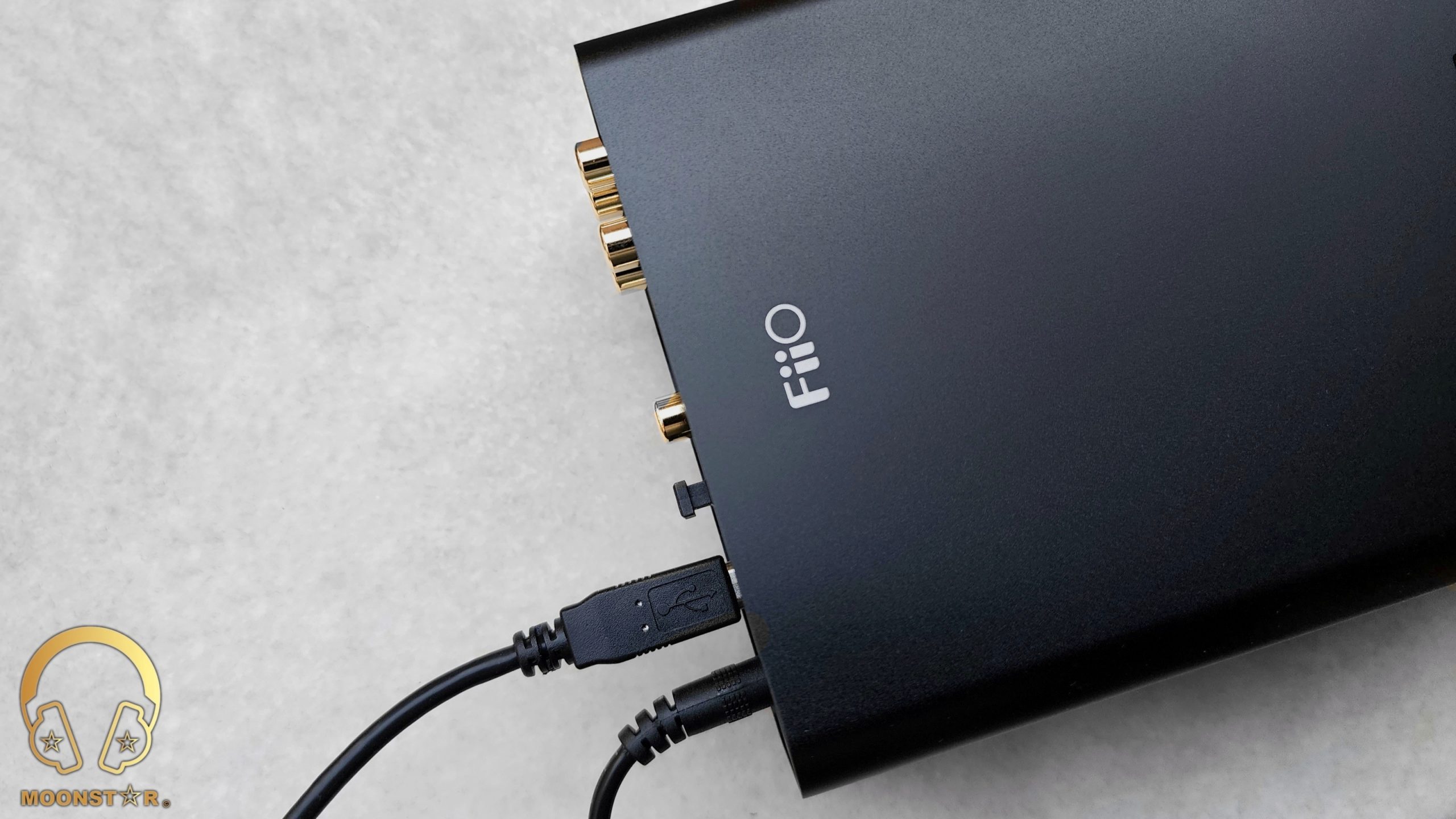
Specifications:
- Model : K7
- DAC : AK4493SEQ x2
- Decoder : XMOS XUF 208
- Amplifier : Dual THX AAA 788+
- Volume Chips : NJU72315+OP
- Outputs : 6.35mm Single-Ended + 4.4mm Balanced
- Inputs : USB, Optical, Coaxial, RCA
- 6.35mm SE Output : up to 1220mW @ 32Ω / 140mW @ 300Ω
- 4.4mm BAL Output : up to 2000mW @ 32Ω / 560mW @ 300Ω
- SNR : >120dB (A-weighted, UAC)
- Noise floor : PO<4.1uV
- THD+N : <0.0003% (1 kHz/32Ω/dbA)
- Output impedance : <1Ω
- Dimensions : 120 x 168 x 55mm
- Weight : 610g
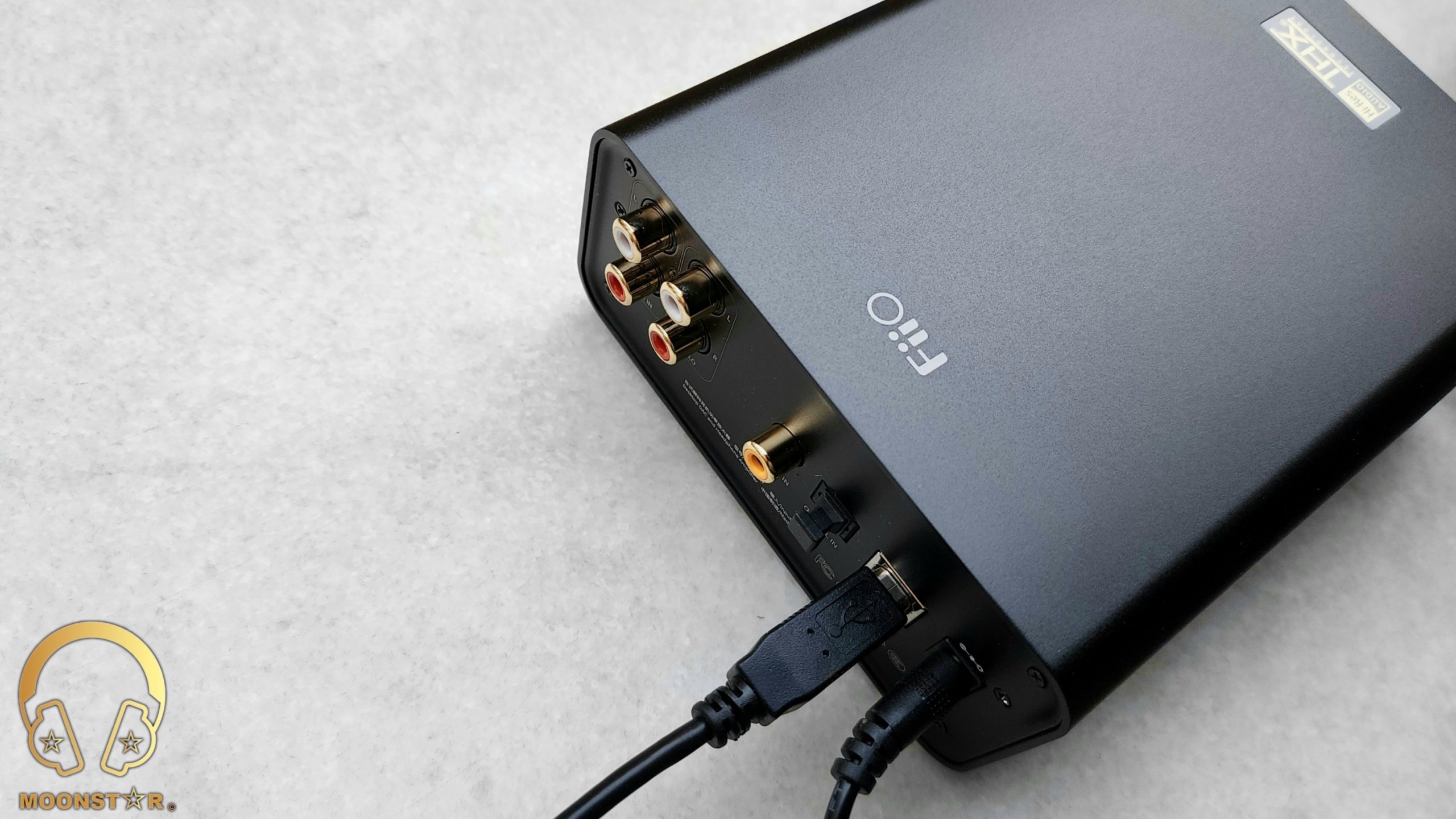
Hardware Features:
The FiiO K7 is a desktop DAC & Headphone Amplifier that features some interesting hardware specs such like a Dual AK4493SEQ DAC Chip setup, 2x THX AAA 788+ amplifiers, XMOS USB receiver and NJU72315+OP Volume chips.
AK4493SEQ DAC Chip:
The FiiO K7 is equipped with 2x AK4493SEQ DAC Chips of the company Ashai Kasei for its true balanced architecture. The AK4493SEQ is a high-performance 32-Bit Digital to Analog converter designed for audiophile-grade applications such as Digital Music players, Portable and Desktop type DAC’s and DAC/Amplifiers.
The AK4493SEQ inside the K7 offers a SNR (Signal to Noise Ratio) value of 120dB (A-weighted, UAC) and THD+N <0.0003% (1 kHz/32Ω/dbA).
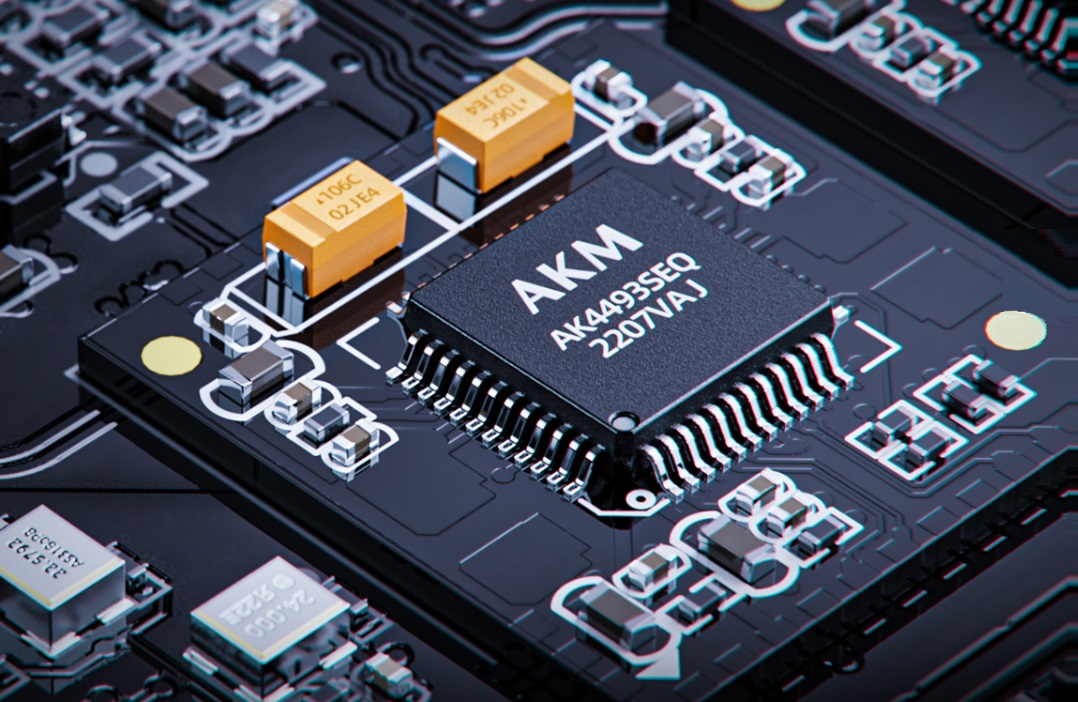
Analog Outputs & Amplification (2x THX AAA 788+):
The FiiO K7 is a quite powerful amplifier with a true balanced architecture, which means that each channel is driven independently. The K7 is equipped with both a 6.35mm Single-Ended and 4.4mm Balanced 3.5mm Single Ended (TRS) and 4.4mm Balanced (TRRRS) balanced outputs.
Another remarkable feature of the K7 is its THX AAA™ “Achromatic Audio Amplifier” design that was used to create a clean and powerful analog output. The K7 is able to create up to 1220mW per channel @ 32ohm over the 6.35mm Single-Ended output, while the 4.4mm Balanced out is even more powerful with up to 2000mW @ 32Ω and 560mW @ 300Ω, all with just 1% distortion, which is quite impressive.
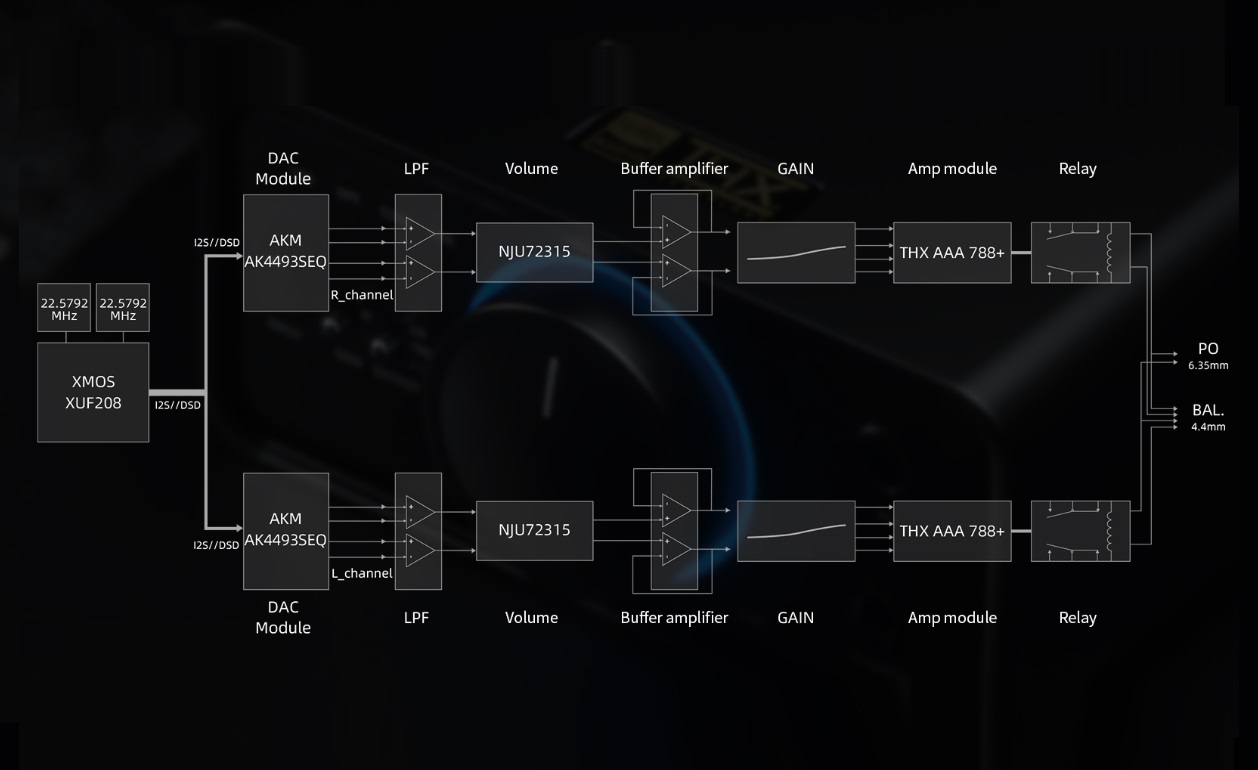
Here are some detailed Audio Parameters:
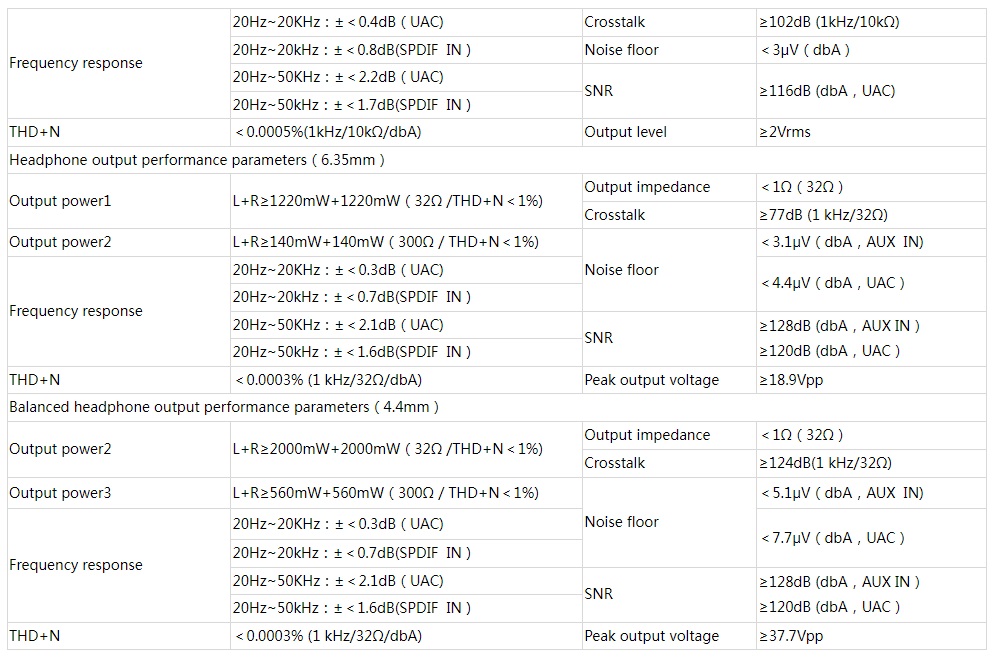
XMOS XU208 for Native DSD:
The FiiO New K7 is equipped with the XMOS XUF208 decoder chip that uses dual clock management in order to handle various music formats. XUF208 USB chip handles up to 384kHz-32bit PCM and Native DSD decoding up to DSD256 in USB DAC Mode.
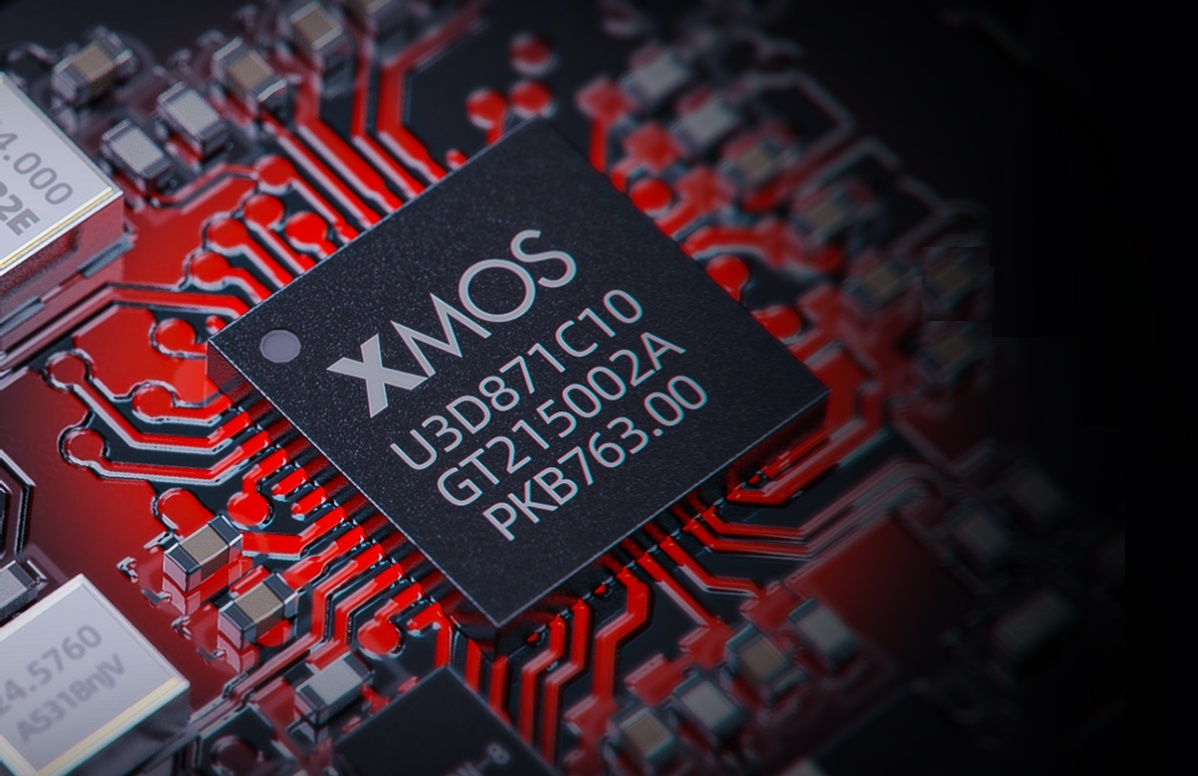
The RGB LED Indicator that surrounds the Potentiometer shows up the following sampling rates:
- Blue : 44.1KHz/48KHz
- Yellow :88.2/96/176.4/192/352.8/384KHz
- Green :DSD64/128/256

Low-Noise Power Supply:
The K7 features a power design consisting of multiple independent stages, with a voltage of each stage being regulated by low-noise LDO’s. Feeding this power design is an external 12V switching power supply.
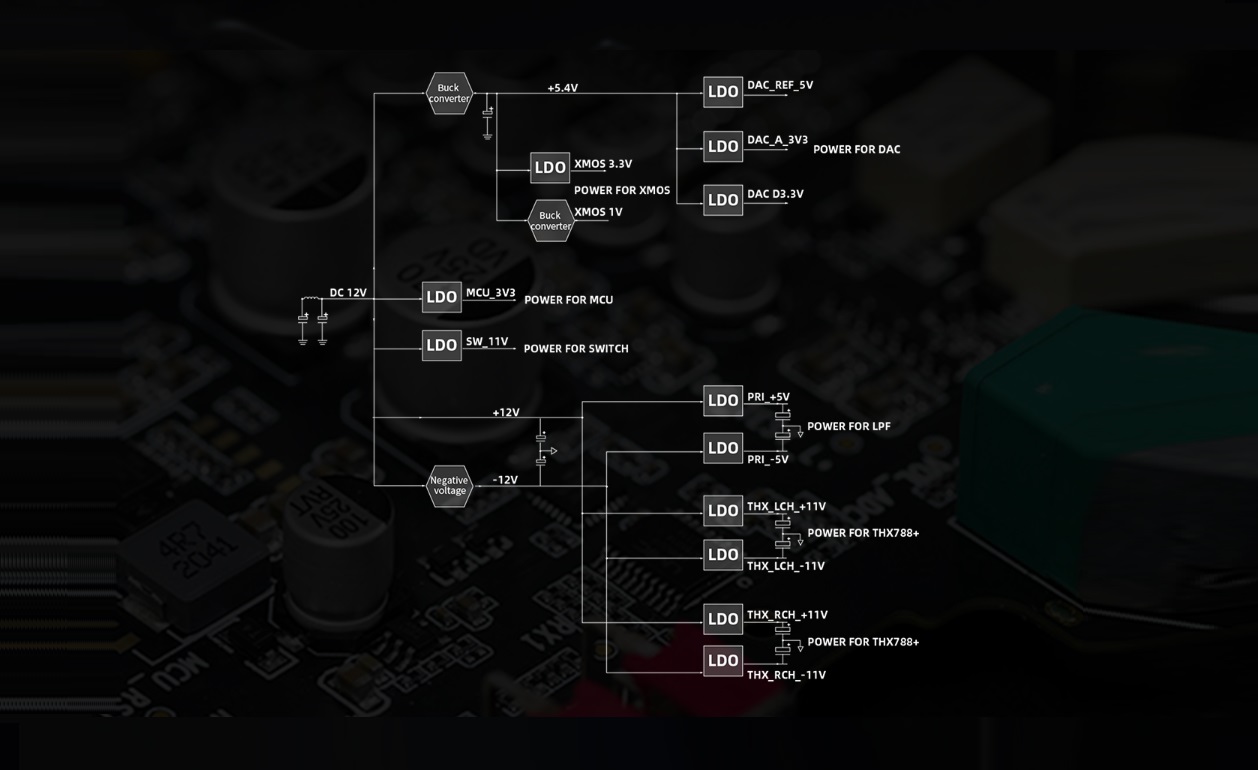
Equipment’s used for this review:
- DAC/Amplifier’s : FiiO K7
- Sources : ASUS TUF FX504GD
- IEM’s : FiiO FH9, FiiO FH7S, Meze Audio RAI Penta
- Headphones : HiFiMAN Sundara Closed-Back, HiFiMAN Edition XS
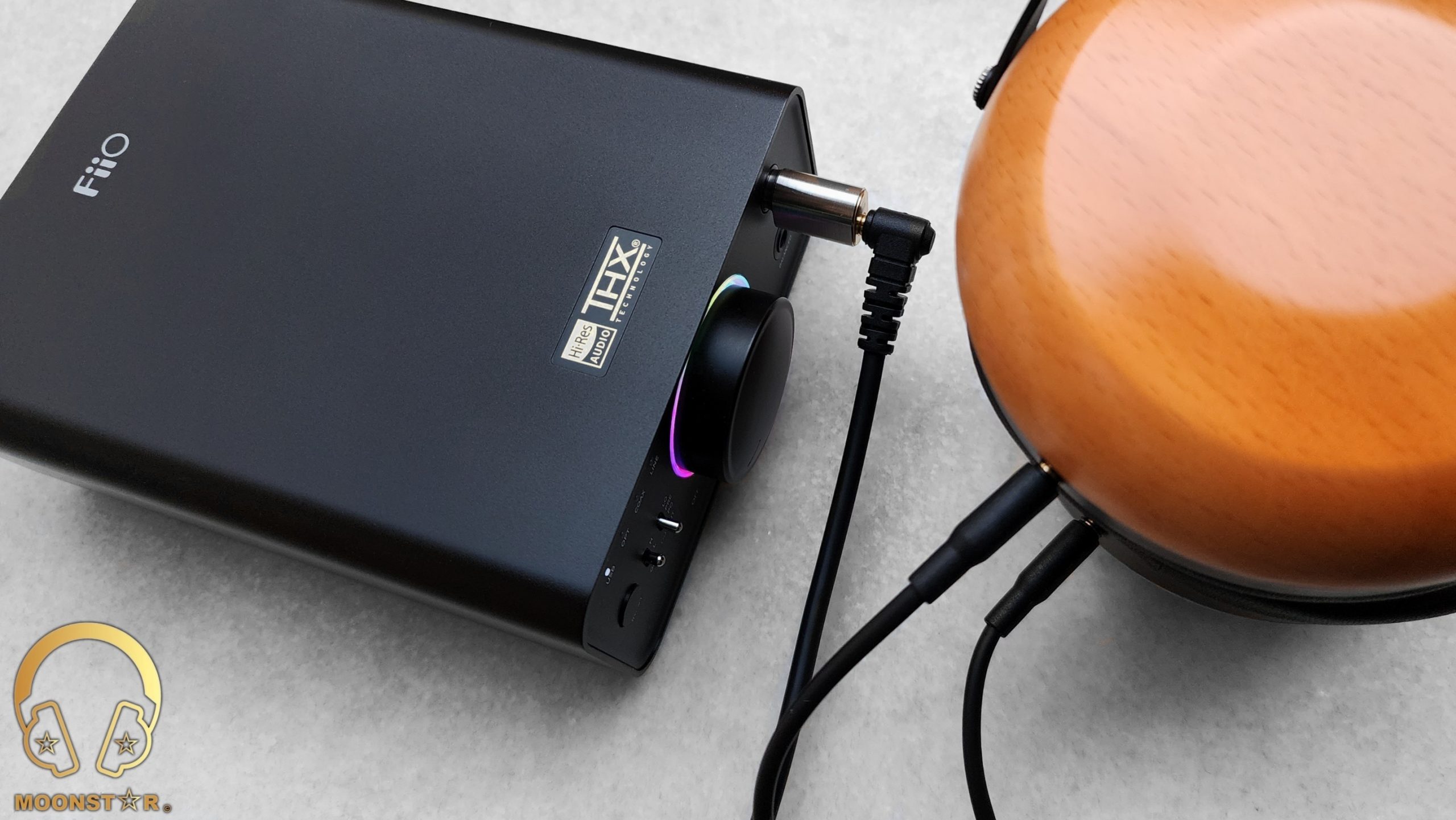
Albums & tracks used for this review:
- Adele – My Little Love (Dezzer HiFi)
- Randy Crawford – On Day I Will Fly Away (Flac 16bit/44.1kHz)
- Hayley Westenra – Odyssey Album (Dezzer HiFi)
- Dionne Warwick – Walk On By (Flac 16bit/44.1kHz)
- Sarah McLachlan – Angel (Flac 24bit/48kHz)
- Sertap Erener – Aşk (Flac 16bit/44.1kHz)
- Edith Piaf – Non Je Ne Regrette Rien (Flac 16bit/44.1kHz)
- Diana Krall – So Wonderful (DSF)
- Aretha Franklin – I Say A Little Payer (Flac 24bit/96kHz)
- Sonya Yoncheva – (Giuseppe Verdi) II Trovatore, ActI (Flac 24bit/96kHz)
- George Michael – Don’t Let the Sun Go Down on Me (Flac 24bit/192kHz)
- David Bowie – Heroes (Flac 24bit/192kHz)
- Elton John – Rocket Man ((Flac 24bit/96kHz)
- Barry White – Just The Way You Are (Flac 24bit/48kHz)
- Isaac Hayes – Walk On By (Flac 16bit/44.1kHz)
- Sting – Englishman in New York – (Flac 24bit/48kHz)
- Eric Clapton – Wonderful Tonight (Flac 24bit/96kHz)
- B. King – Riding With The King (Tidal Hi-Fi)
- Dave Gahan – Kingdom (Tidal Hi-Fi)
- U2 – Sunday Bloody Sunday (Flac 16bit/44.1kHz)
- Bro Safari, UFO! – Drama (Deezer HiFi)
- Armin Van Buuren – Vini Vici (Flac 16bit/44.1kHz)
- Daft Punk – Doin’ it Right (Flac 24bit/96kHz)
- Jo Blankenburg – Meraki (Spotify)
- Lorde – Royals (Flac 24bit/48kHz)
- Massive Attack – Angel (Flac 24bit/48kHz)
- Toutant – Rebirth (Deezer HiFi)
- Gogo Penguin – Raven (Flac 24bit/192kHz)
- Gogo Penguin – Murmuration (Flac 24bit/192kHz)
- Portishead – It Could Be Sweet (Spotify)
- Max Richter – On the Nature of Daylight (Flac 24bit/96kHz)
- Charly Antolini – Duwadjuwandadu (Flac 24bit/192kHz)
- Ferit Odman – Look, Stop & Listen (Flac 24bit/192kHz)
- Chopin – Nocturn No. 20 In C-Sharp Minor (Flac 16bit/44.1kHz)
- Fazıl Say – Nazım Oratoryosu (Live) (Flac 16bit/44.1kHz)
- Vivaldi – Le QuarttroStagioni “The Four Season” (Deezer HiFi)
- Otto Liebert & Luna Negra – The River (Flac 24bit/192kHz)
- Lunatic Soul – The Passage (Flac 16bit/44.1kHz)
- Deftones – My Own Summer (Shove it) (Flac 16bit/44.1kHz)
- Metallica – Sad but True (Flac 24bit/96kHz)
- Metallica – Master of Puppets (Flac 24bit/96kHz)
- Opeth – Windowpane (Flac 16bit/44.1kHz)
- Megadeth – Sweating Bullets (Tidal Hi-Fi)
- Rush’s – Leave That Thing Alone (Flac 16bit/44.1kHz)
- Slayer – Angel of Death (Spotify)
- Liquid Tension Experiment 2 – Acid Rain (Spotify)
- Yosi Horikawa – Bubbles (Spotify)
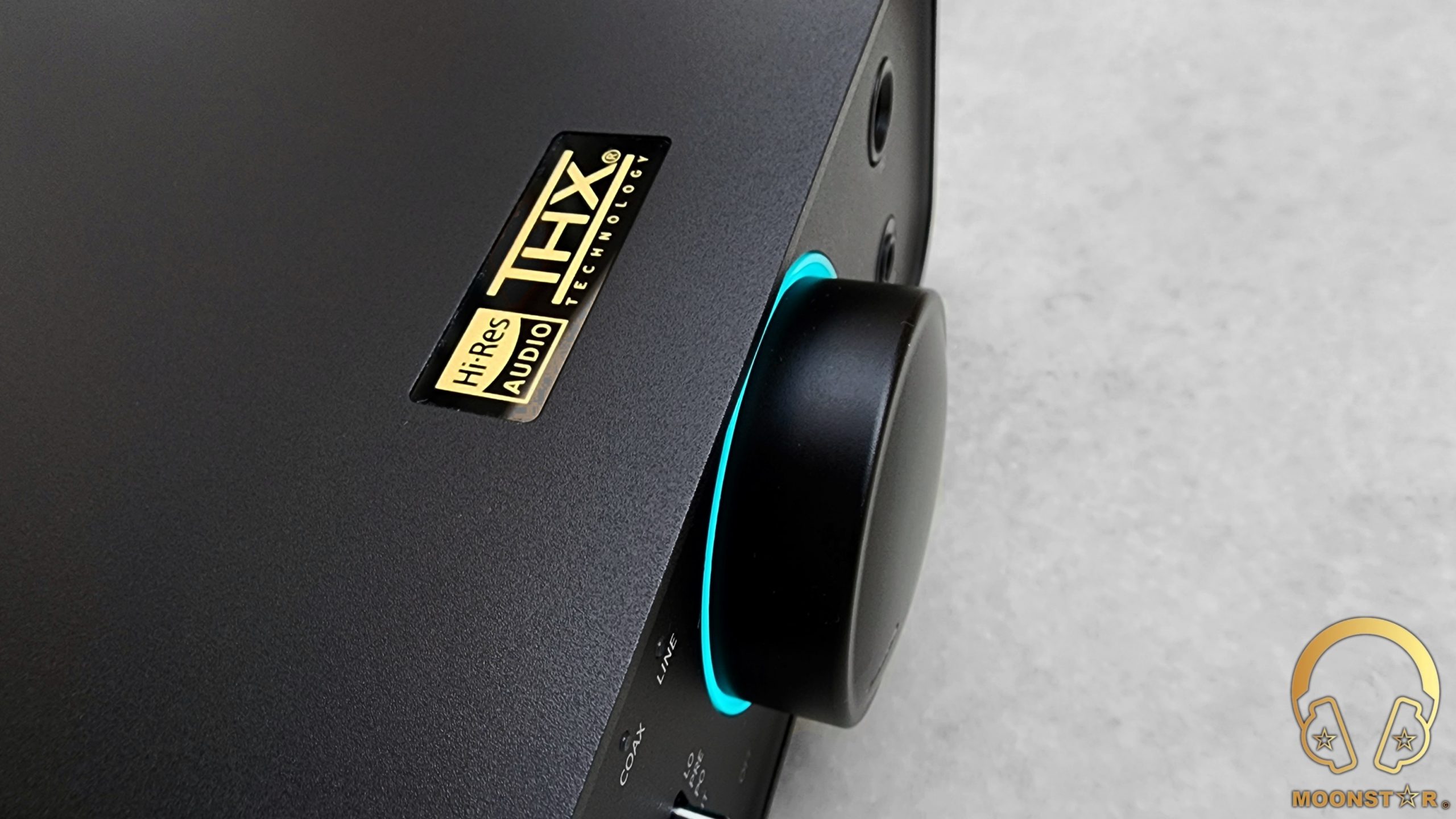
The Sound:
The FiiO K7 is a highly versatile and powerful DAC & Amplifier solution that impressed me with its very clean and natural presentation, that shows just the right amount of coloration in order to create a pretty musical and to avoid a to sterile overall sound presentation. The K7 is a pretty detailed and natural sounding source with decent sense of technicality and dynamics for its price that works great with both power hungry full sized Headphones and pretty sensitive In-Ear Monitors.
This review has been written after a burn-in period of around 100 – 110 hours. My sound experience below are mainly based on my impressions over the 4.4mm Balanced output paired with In-Ear Monitors such like the FiiO FH9, FH7S and Headphones like the HiFiMAN Sundara and SIVGA Oriole.
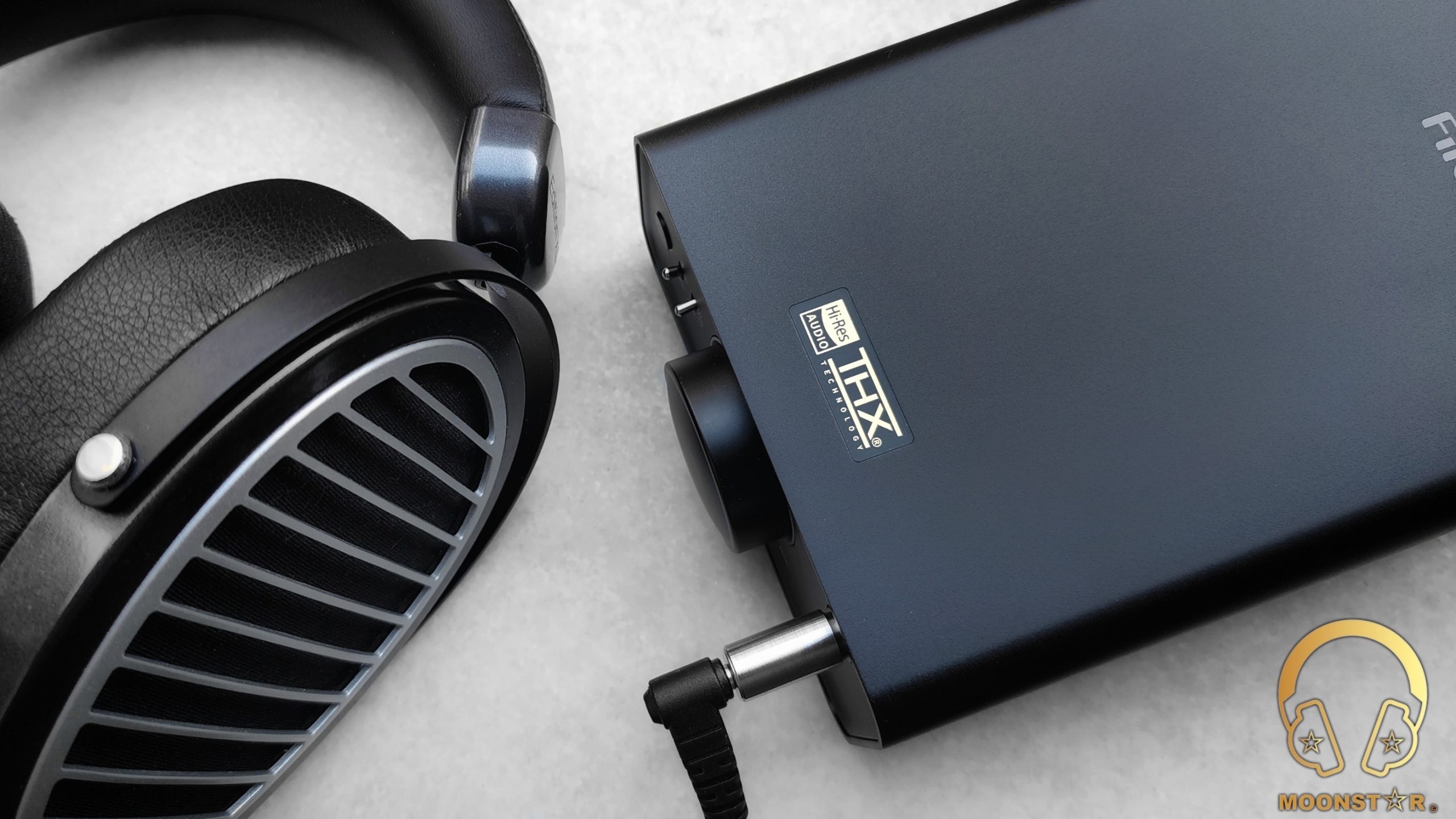
Bass:
The FiiO K7 offers a pretty natural, clean and nicely detailed overall bass response from the subbass up to the midbass region. It was also able to handle all headphones (HiFiMAN Sundara CB, HiFiMAN Edition XS) and IEM’s (FiiO FH9, FiiO FH7S, Meze Audio RAI Penta) in this area with decent sense of authority.
The subbass region of the K7 shows a decent grade of depth and authority with almost all IEM’s and Headphone I have listen to it. Some of my reference songs such like Lorde’s “Royals”, Massive Attack’s “Angle” or to Daft Punk “Doin’ it Right” have been produced with good level of rumble and extension.
The midbass region on the other hand is reproduced in a pretty natural and controlled manner along with a good sense of impact and intensity when I have listened to complex bass passages in songs like Gogo Penguin’s “Raven” or Charly Antolini’s “Duwadjuwandadu”. This is quite impressive for a device with such a reasonable pricing.
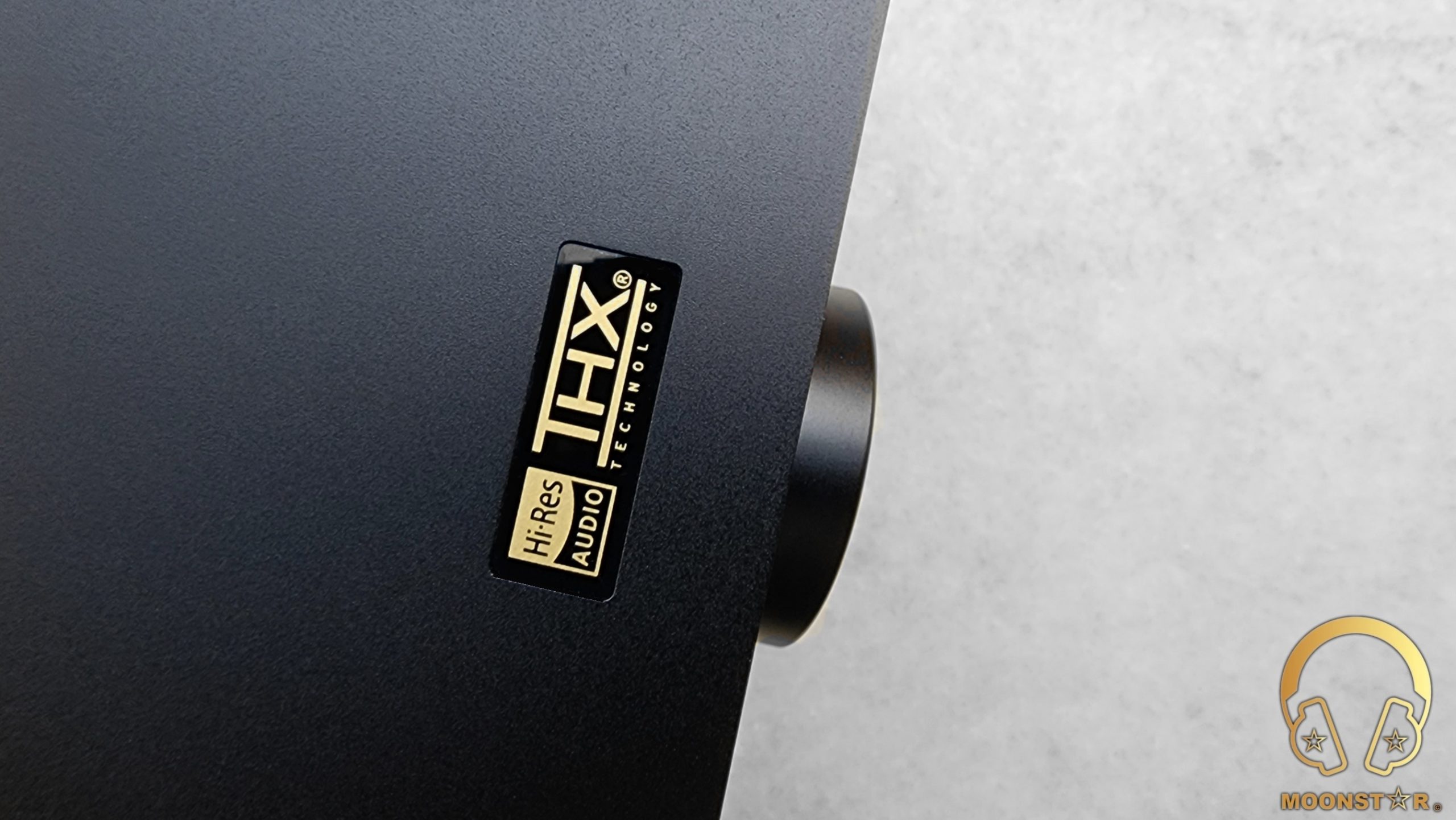
Midrange:
The midrange of the FiiO K7 stands out with it highly transparent and airy atmosphere when I listen to both vocals or to a wide variety of instruments, which shows again how capable this device is as a headphone/earphone DAC & Amplifier.
The sense of resolution from the lower up to the upper midrange area is excellent, especially with respect to the price of this device, which is also shown with an additional dynamism that comes with support from its pretty powerful THX AAA 788+ amplifier circuit.
I have listen to the K7 to a wide variety of instruments including violins, side flutes, cellos or pianos that have been reproduced with a decent level of resolution and naturalness, especially when paired with good In-Ear Monitors or headphones such like the FiiO FD7, Meze RAI Penta and HiFiMAN Edition XS, thanks to its quite airy and transparent midrange atmosphere.
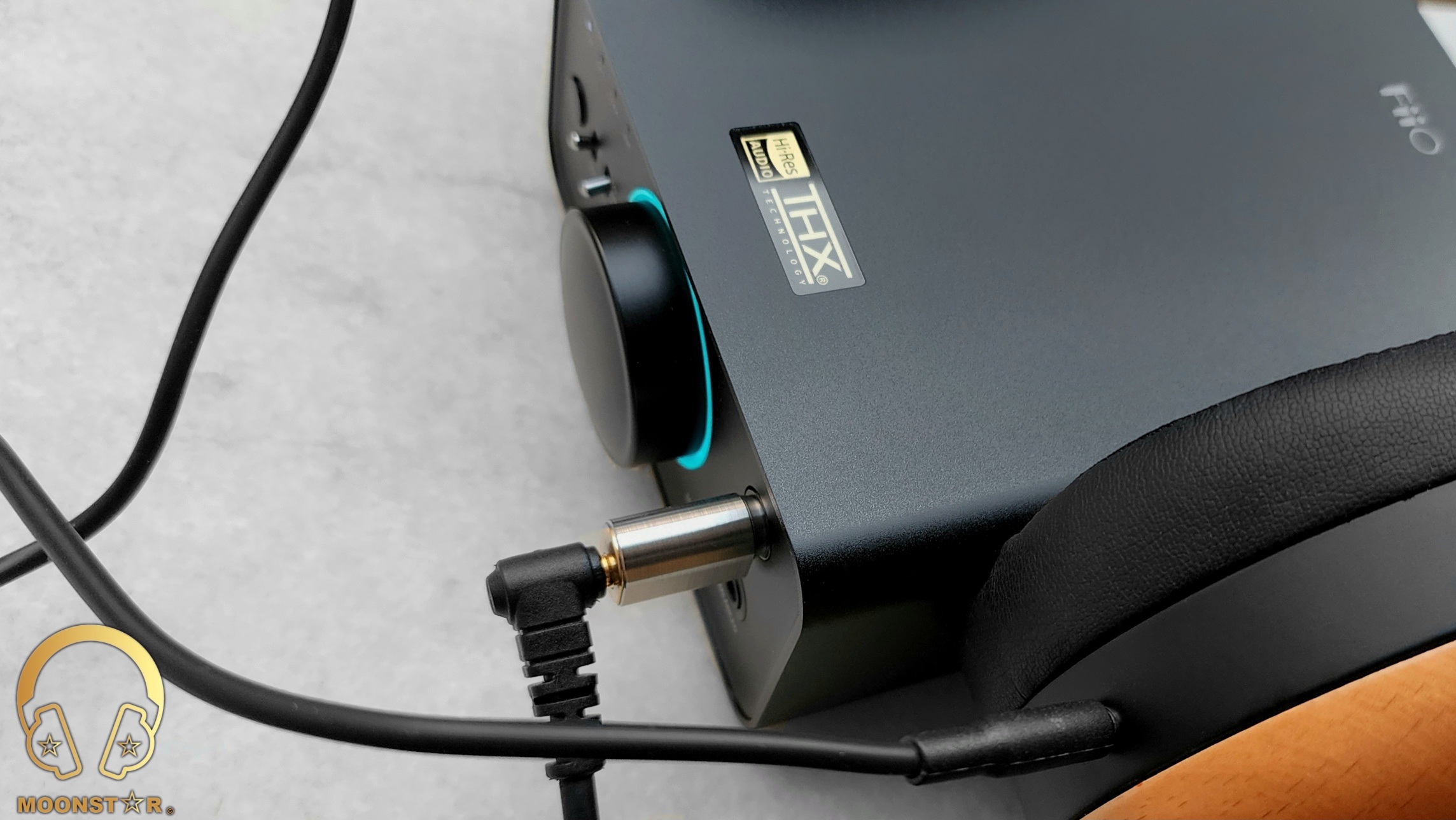
Treble:
What I really like about the treble presentation of the FiiO K7 is its pretty uncolored nature, which is also able to create a decent sense of clarity and sparkle with all IEM’s and Headphones I have paired the device. The grade of resolution and extension fulfills my expectation from a desktop DAC/Amplifier at this price level especially when I do listen to woodwinds, percussions and to soprano vocals.
Both the lower and the upper treble range are shown with a good level of balance. The lower treble area is shown with a decent grade of clarity and definition, while each individual instrument has been stand out pretty clearly. Instruments from hi-hats in metal music up to violins in classical music are reproduced with good level of presence and extension.
The upper treble area of the FiiO K7 creates a fairly open and airy atmosphere with good sense of brightness that is needed for vocals and for instruments such like cymbals, violins or clarinets without to show any remarkable hissing. The general extension and resolution of this area is again, excellent for a DAC/Amplifier at this level.

Soundstage & Imaging:
The FiiO K7 has a general soundstage presentation that is spacious and airy, which creates decent conditions for a pretty precise separation and placement of instruments and vocals. The soundstage is both fairly wide and deep, while the height of the stage is on a sufficient level.
Conclusion:
The K7 is another solid product from FiiO that impressed me with its versatility in terms of hardware features, compatibility and overall sound performance that pairs pretty well with both sensitive In-Ear Monitors and power hungry Planar Headphones. Moreover, it offers a clean, powerful and quite detailed listening experience that surprised me very well with respect to its reasonable price. The result is a DAC & Amplifier with a pretty small form factor that I can Highly Recommend!
Thank you for the Read!
Moonstar
100+ Head-Fier
Pros: Wonderful vocal, instrument and midrange presentation, Sound like a full sized open-back Headphone, Ideal for long listenings, Sexy Look
Cons: Some comfort issues
The ROSE Masya;
A earbud with an excellent and out of the head sound!
First of all, I would like to thank PenonAudio for giving me a discount in return for this review.
Here is the purchase link for the Rose Masya on PenonAudio;
http://penonaudio.com/Rose-Masya
Not: This is my first review in another language, so sorry for my bad English.

Introduction:
The company Rose Technology is founded by University students in China and is specialized in IEM and Earbuds.
The name Rose:
The company name Rose has actually nothing to do with the rose flower, the name spells in Chinese - '弱水‘, which actually means a mythical river (thanks to @ClieOS for this information).
Tracks and sources that I have use for this review:
a) Tracks:
b) Sources:
Digital Sources: Chord Hugo, Shanling M2S, Walnut V2s, Ipad Air 2,
Earbuds: Rose Masya, Auglamour RX1
Specifications:
Package and Accessories:
The Masya comes in a relative small and compact card box with a magnetic cover. The box contains a small carrying bag with the ROSE logo, a 2pin – 3,5mm TRS cable, a small plastic box with 3 pairs of soft foam cushions and a gold plated 3.5mm Female to 6.5mm Male adaptor.

BTW, on the front of the box is the motto of the company “Create difference” written.

Design and Build Quality:
As mentioned in previous reviews, the Masya’s outer shell is made of plastic using a complex 3D Printing Technology.
The Masya has a Retro look and is on the bigger side of earbuds. The quality of the shell is good and it looks really sexy.
BTW, it’s not a big deal but you can see some small imperfections on the sides and corners of the outer shell. It’s easily to understand that this earphone is not an industrial mass production unit and is more like a handmade boutique earbud with a special design.

The Masya has an 1.2cm long interchangeable, oxygen-free copper cable with 0,75mm diameter 2-pin connection that is thick, soft and without microphonic effects.
The bad thing about this cable is that the 0,75mm diameter is not a common like the 0,78mm 2-pin connection variant.
Compared to my other favorite erabud, the Auglamour RX1;
The RX1 has a more robust metal finish with a more modern looking design. It’s up to your personal taste but I love both. The RX1 is well made and looks more solid compared to the Masya, but I don’t think that the Masya is made of cheap plastic and it would surely survive a long period of usage.
The Masya has two dynamic drivers, same as the more expensive Mojito. The difference is that the Rose masya has 16mm & 10mm dynamic drivers and the Rose Mojito has 15.4mm & 10mm dynamic driver.
The Fit:
The RX1 has the upper hand when it comes to seal, comfort and insertion.
The earpiece of the Rose Masya is a bit bigger because the front driver has a diameter of 16mm, while the RX1 has only one driver with 15,4mm diameter.
Compared to the RX1 the insertion depth and holding position on your ears could a bit problematic for smaller sized ears.
But I think with the right foam cushions, especially the donuts, can provide a relative good seal.


The Sound:
I have burn-in the Masya for at least 80 Hours.
First of all, I am the sort of people that prefer in ear monitors (IEM’s), but after I listened to the RX1, I changed my mind. The sound of it was so spacious and detailed that I have started to search for Higher End erabuds.
The Rose Masya has a very expansive en effortless sound. It sound so out of my head that I was shocked at the first listening. So, I think the wow factor of this earbud is very high!
Tonality:
The Masya is a relative neutral earbud with a tad of warmth that comes from the midrange. It reminds me a little bit to the well known and one of my favorite open back headphone, the Sennheiser HD650.
The RX1 by the other side is in direct compassion more on the warm side of the sound spectrum.
The Bass:
The Bass is more on the Sub-bass side and without a good seal the Mid-bass region is a bit rolled off.
a) Sub-bass:
Track: Massive Attack – Angel
One of the strengths of the Masya vs. the RX1 is the sub-bass range, its reaches deeper has more definition and is also smoother when compared to the RX1. This region gives the Masya an immense body that is always welcome for an earbud.
b) Mid-Bass:
Tracks: Bang La Decks – Aide, Lorde – Royal, Dr. Chesky’s - Pamafunck
The mid-bass of the Masya have not the quantity of the RX1, it hits very well for an earbud, but the RX1 has the upper hand when it comes to quantity.
But, the game changes when it comes to quality.
The issue with the mid-bass of the RX1 is that it bleeds in to the midrange and the texture of the RX1 is not at the same level of the Masya. When compared next to the Masya, the RX1 sound hollow and muddy.
The Mid and Vocals:
Tracks: Mabel Matiz – Gel, Amber Rubarth – In the Creases,
This is where the Masya really shines. The midrange of the Masya is maybe the strongest and most impressive region and the rally highlight of this earbud.
The resolution and clarity of the mids is very good. It’s so emotional and musical that both, male and female vocals sounding crystal clear and emotional.
Also the instruments like piano, guitar or flutes don’t sound overly bold or thin. It a little colored in nature but it’s not annoying.
The RX1 on the other hand has the big problem with its mid-bass bleed. Vocals and instruments are sounding to warm, muddy and unnatural. I am not saying that the RX1 has a bad midrange, it sound very good for its price, but it can’t keep up with the glory of the Rose Masya.
Highs:
Tracks: Celine Dion – The Power of Love, Jehan Barbur – Seni Seviyorum
Highs have a nice resolution. There is no sibilance, it’s also non-fatiguing and is ideal for long listening periods.
The highs give the Masya a vivid and smooth presentation. With a good seal you can’t go wrong, because it sounds not harsh or overly aggressive like other earbuds with poor seal.
Soundstage:
Tracks: Track - Yosi Horikawa – Bubbles
The soundstage is very wide and has a holographic presentation that gives you the impression that you listen from a full-sized open back headphone. That’s a great wow factor and among the best of many earbud. When it comes to depth think it is also above average.
Conclusion:
The Masya is a wonderful sounding earbud that have many thing common with its full-sized brothers.
The only drawback of the Masya is the diameter of the earpiece.
Peoples with small ears should use donut foam cushions for a better seal.
By the end, I think that both Rose Masya and the Auglamour RX1 is one of the best sounding earphones in its price range.
Thank you for reading my review.
The END

A earbud with an excellent and out of the head sound!
First of all, I would like to thank PenonAudio for giving me a discount in return for this review.
Here is the purchase link for the Rose Masya on PenonAudio;
http://penonaudio.com/Rose-Masya
Not: This is my first review in another language, so sorry for my bad English.

Introduction:
The company Rose Technology is founded by University students in China and is specialized in IEM and Earbuds.
The name Rose:
The company name Rose has actually nothing to do with the rose flower, the name spells in Chinese - '弱水‘, which actually means a mythical river (thanks to @ClieOS for this information).
Tracks and sources that I have use for this review:
a) Tracks:
- Massive Attack – Angel (Tidal Hifi)
- Celine Dion – The Power of Love (Apple Music)
- Jehan Barbur – Seni Seviyorum (WAV 16bit 44khz)
- Bang La Decks – Aide (Tidal Hifi)
- Dr. Chesky’s – Pamafunck (Flac 24bit 192khz)
- Lorde – Royals (24bit 48khz)
- Mabel Matiz – Gel (320kbps)
- Amber Rubarth – In the Creases (Tidal Hifi)
- Yosi Horikawa – Bubbles
b) Sources:
Digital Sources: Chord Hugo, Shanling M2S, Walnut V2s, Ipad Air 2,
Earbuds: Rose Masya, Auglamour RX1
Specifications:
- Driver Type: 1 x 16mm & 1x 10mm = 2 DD (dual dynamic driver)
- Impedance: 12Ω
- Earphone sensitivity: 98db/mW
- Frequency range: 8-22000Hz
- Cable Connection Type: 2-pin 0,75 mm interface
- Interface: 3.5mm TRS jack
- Cable Length: 1.2m±5cm
- Weight: 18g (with cable)
Package and Accessories:
The Masya comes in a relative small and compact card box with a magnetic cover. The box contains a small carrying bag with the ROSE logo, a 2pin – 3,5mm TRS cable, a small plastic box with 3 pairs of soft foam cushions and a gold plated 3.5mm Female to 6.5mm Male adaptor.

BTW, on the front of the box is the motto of the company “Create difference” written.

Design and Build Quality:
As mentioned in previous reviews, the Masya’s outer shell is made of plastic using a complex 3D Printing Technology.
The Masya has a Retro look and is on the bigger side of earbuds. The quality of the shell is good and it looks really sexy.
BTW, it’s not a big deal but you can see some small imperfections on the sides and corners of the outer shell. It’s easily to understand that this earphone is not an industrial mass production unit and is more like a handmade boutique earbud with a special design.

The Masya has an 1.2cm long interchangeable, oxygen-free copper cable with 0,75mm diameter 2-pin connection that is thick, soft and without microphonic effects.
The bad thing about this cable is that the 0,75mm diameter is not a common like the 0,78mm 2-pin connection variant.
Compared to my other favorite erabud, the Auglamour RX1;
The RX1 has a more robust metal finish with a more modern looking design. It’s up to your personal taste but I love both. The RX1 is well made and looks more solid compared to the Masya, but I don’t think that the Masya is made of cheap plastic and it would surely survive a long period of usage.
The Masya has two dynamic drivers, same as the more expensive Mojito. The difference is that the Rose masya has 16mm & 10mm dynamic drivers and the Rose Mojito has 15.4mm & 10mm dynamic driver.
The Fit:
The RX1 has the upper hand when it comes to seal, comfort and insertion.
The earpiece of the Rose Masya is a bit bigger because the front driver has a diameter of 16mm, while the RX1 has only one driver with 15,4mm diameter.
Compared to the RX1 the insertion depth and holding position on your ears could a bit problematic for smaller sized ears.
But I think with the right foam cushions, especially the donuts, can provide a relative good seal.


The Sound:
I have burn-in the Masya for at least 80 Hours.
First of all, I am the sort of people that prefer in ear monitors (IEM’s), but after I listened to the RX1, I changed my mind. The sound of it was so spacious and detailed that I have started to search for Higher End erabuds.
The Rose Masya has a very expansive en effortless sound. It sound so out of my head that I was shocked at the first listening. So, I think the wow factor of this earbud is very high!
Tonality:
The Masya is a relative neutral earbud with a tad of warmth that comes from the midrange. It reminds me a little bit to the well known and one of my favorite open back headphone, the Sennheiser HD650.
The RX1 by the other side is in direct compassion more on the warm side of the sound spectrum.
The Bass:
The Bass is more on the Sub-bass side and without a good seal the Mid-bass region is a bit rolled off.
a) Sub-bass:
Track: Massive Attack – Angel
One of the strengths of the Masya vs. the RX1 is the sub-bass range, its reaches deeper has more definition and is also smoother when compared to the RX1. This region gives the Masya an immense body that is always welcome for an earbud.
b) Mid-Bass:
Tracks: Bang La Decks – Aide, Lorde – Royal, Dr. Chesky’s - Pamafunck
The mid-bass of the Masya have not the quantity of the RX1, it hits very well for an earbud, but the RX1 has the upper hand when it comes to quantity.
But, the game changes when it comes to quality.
The issue with the mid-bass of the RX1 is that it bleeds in to the midrange and the texture of the RX1 is not at the same level of the Masya. When compared next to the Masya, the RX1 sound hollow and muddy.
The Mid and Vocals:
Tracks: Mabel Matiz – Gel, Amber Rubarth – In the Creases,
This is where the Masya really shines. The midrange of the Masya is maybe the strongest and most impressive region and the rally highlight of this earbud.
The resolution and clarity of the mids is very good. It’s so emotional and musical that both, male and female vocals sounding crystal clear and emotional.
Also the instruments like piano, guitar or flutes don’t sound overly bold or thin. It a little colored in nature but it’s not annoying.
The RX1 on the other hand has the big problem with its mid-bass bleed. Vocals and instruments are sounding to warm, muddy and unnatural. I am not saying that the RX1 has a bad midrange, it sound very good for its price, but it can’t keep up with the glory of the Rose Masya.
Highs:
Tracks: Celine Dion – The Power of Love, Jehan Barbur – Seni Seviyorum
Highs have a nice resolution. There is no sibilance, it’s also non-fatiguing and is ideal for long listening periods.
The highs give the Masya a vivid and smooth presentation. With a good seal you can’t go wrong, because it sounds not harsh or overly aggressive like other earbuds with poor seal.
Soundstage:
Tracks: Track - Yosi Horikawa – Bubbles
The soundstage is very wide and has a holographic presentation that gives you the impression that you listen from a full-sized open back headphone. That’s a great wow factor and among the best of many earbud. When it comes to depth think it is also above average.
Conclusion:
The Masya is a wonderful sounding earbud that have many thing common with its full-sized brothers.
The only drawback of the Masya is the diameter of the earpiece.
Peoples with small ears should use donut foam cushions for a better seal.
By the end, I think that both Rose Masya and the Auglamour RX1 is one of the best sounding earphones in its price range.
Thank you for reading my review.
The END


Moonstar
100+ Head-Fier
Pros: Versatile Sound Character with decent level of Resolution & Dynamics,
Natural Bass Response,
Transparent & Detailed Midrange Tuning,
Powerful & Very Clean Output,
Almost any Type of Analog & Digital in- & outputs (4.4mm/2.5mm Balanced, Coaxial, BT),
Decent Hardware Specs (SD 660 CPU, THX-AAA-78 Module, ES9068AS*2 DAC, etc.),
Build Quality, Display, Design,
Intelligent Volume System,
Good Battery Life,
Premium Leather Case,
Price to Performance Ratio
Natural Bass Response,
Transparent & Detailed Midrange Tuning,
Powerful & Very Clean Output,
Almost any Type of Analog & Digital in- & outputs (4.4mm/2.5mm Balanced, Coaxial, BT),
Decent Hardware Specs (SD 660 CPU, THX-AAA-78 Module, ES9068AS*2 DAC, etc.),
Build Quality, Display, Design,
Intelligent Volume System,
Good Battery Life,
Premium Leather Case,
Price to Performance Ratio
Cons: Larger in size compared to the M11/M11 Pro,
Heavier than the M11/M11 Pro,
Only One Micro SD card slot
Heavier than the M11/M11 Pro,
Only One Micro SD card slot
FiiO M11 Plus Portable Digital Audio Player Review
Introduction:
I am sure that many audiophiles do remember that FiiO released last year the M11 Plus LTD with the AK4497*2 Dual DAC chipset, but since the fire outbreak in AKM’s factory the quantity of any AKM DAC chip is very limited on the market. However, FiiO promised that they do plan to release a M11 Plus with ESS Saber DAC chip in 2022.
The M11 Plus that I will now review for you comes with the latest ESS chipset, that utilizes two ES9068AS DAC’s (Digital to Analog Converter), which do offer an audible performance improvement over its AKM model with better SNR and THD+N values.
The M11 Plus offers also some other remarkable specs like the Snapdragon 660 Octa-Core SoC, THX AAA-78 Amp Module, 5.5” 18:9 bezel-less touch screen 2.5mm & 4.4mm Balanced outs, MQA 8x decoding, Two-way Bluetooth Transmission with LDAC support and many more.

Disclaimer:
I would like to thank FiiO for providing me the M11 Plus as review sample. I am not affiliated with FiiO beyond this review and these words reflect my true and unaltered, opinions about the product.
Price & Availability:
The actual price for the FiiO M11 Plus is 699.99 US$. More information’s can be found under the link below;
Package and Accessories:
The FiiO M11 Plus came inside a black box with FiiO branding on the top, which is wrapped with a fancy looking cardboard sleeve that displays the companies new package design. The cardboard sleeve has a black background and shows the illustration of the M11 Plus and some product related brandings on its surface that do have a nice iridescent effect.

This box is containing the following items/accessories;
- 1 x FiiO M11 Plus Digital Audio Player
- 1 x USB 3.0 Type-C to Type A Charging/Data Cable
- 1 x Coaxial Cable
- 1 x Micro SD Card Slot Removing Tool
- 1 x Leather Case
- 1 x Quick Start Guide
- 1 x Warranty Card
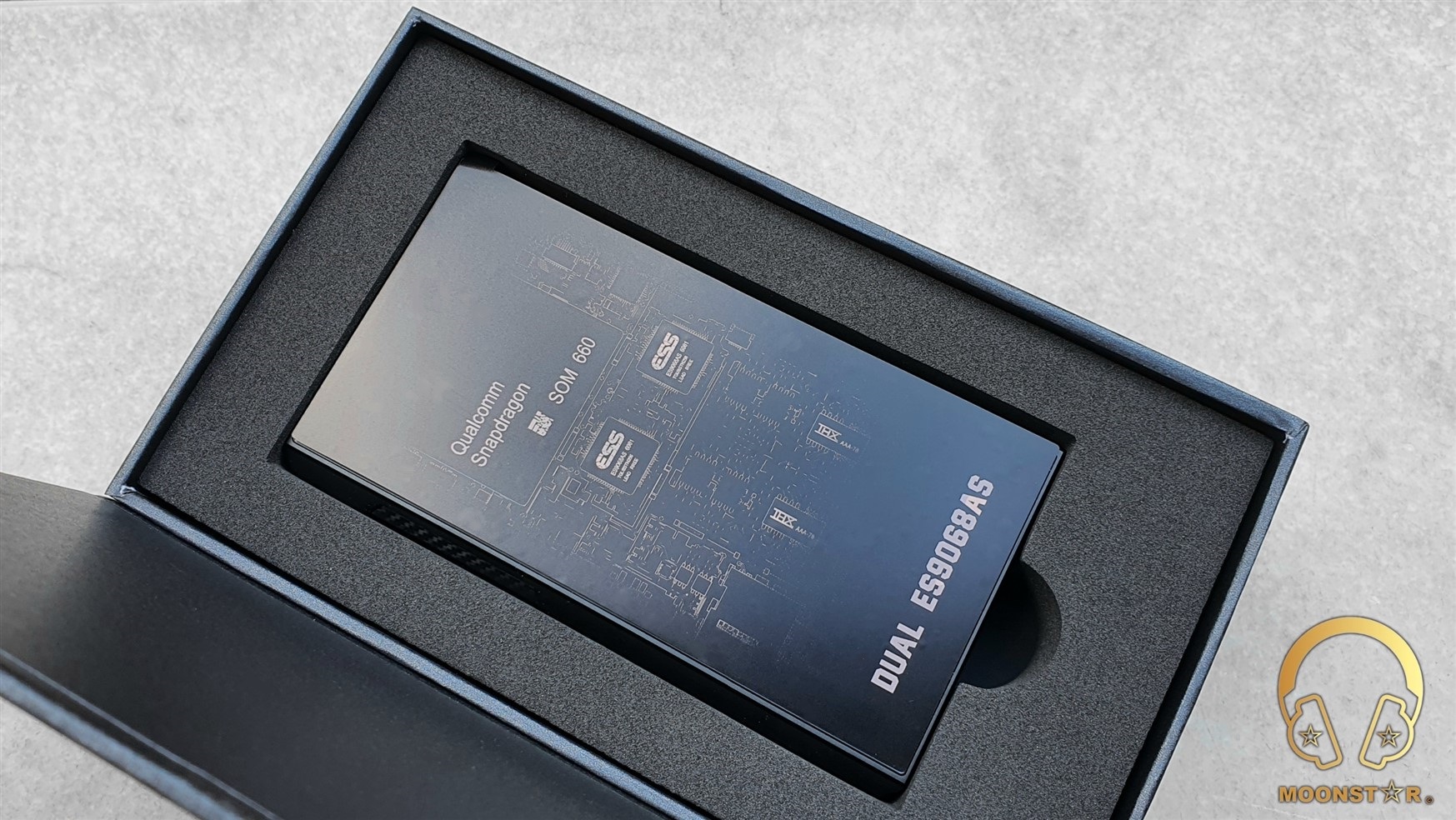
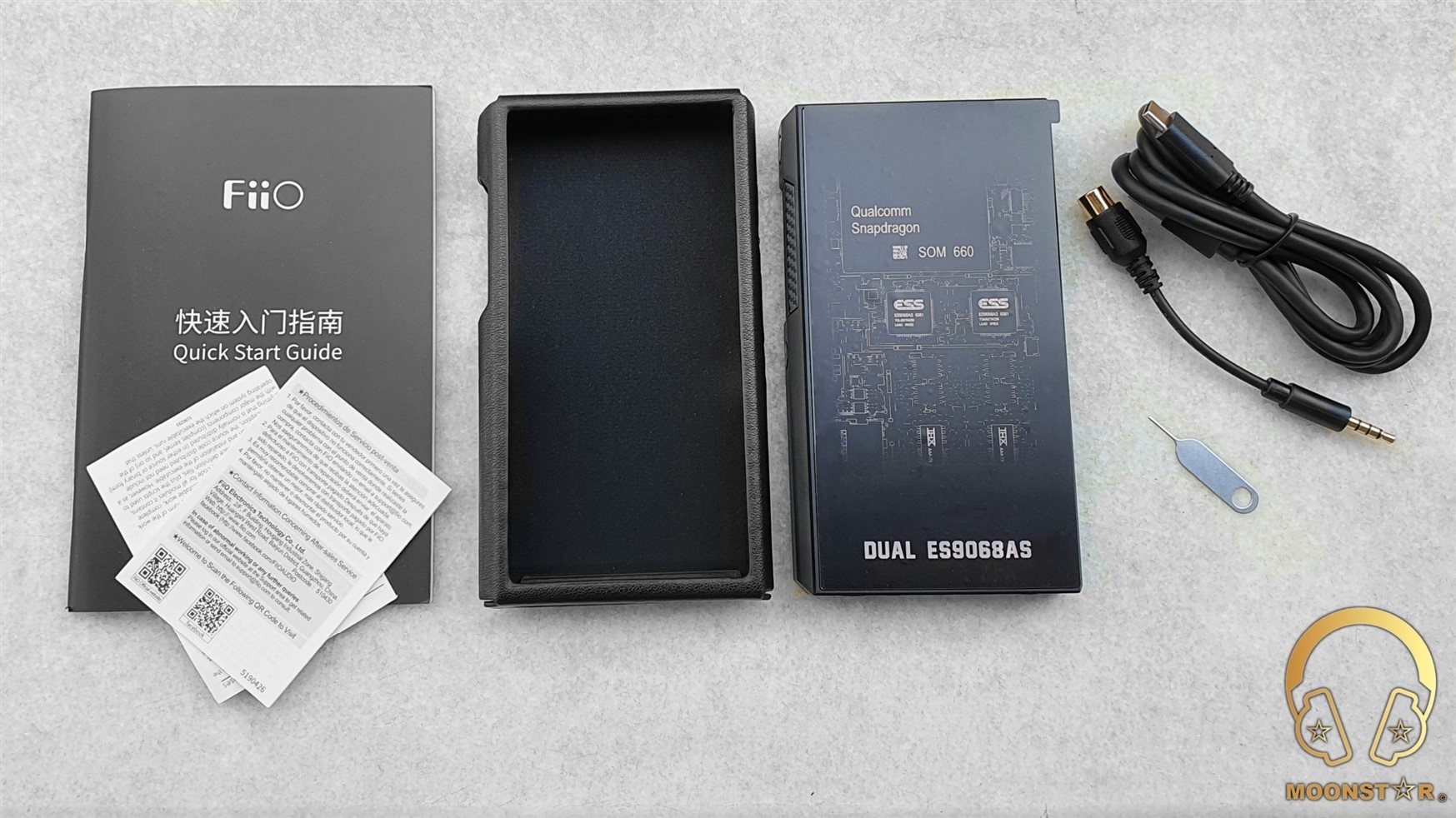
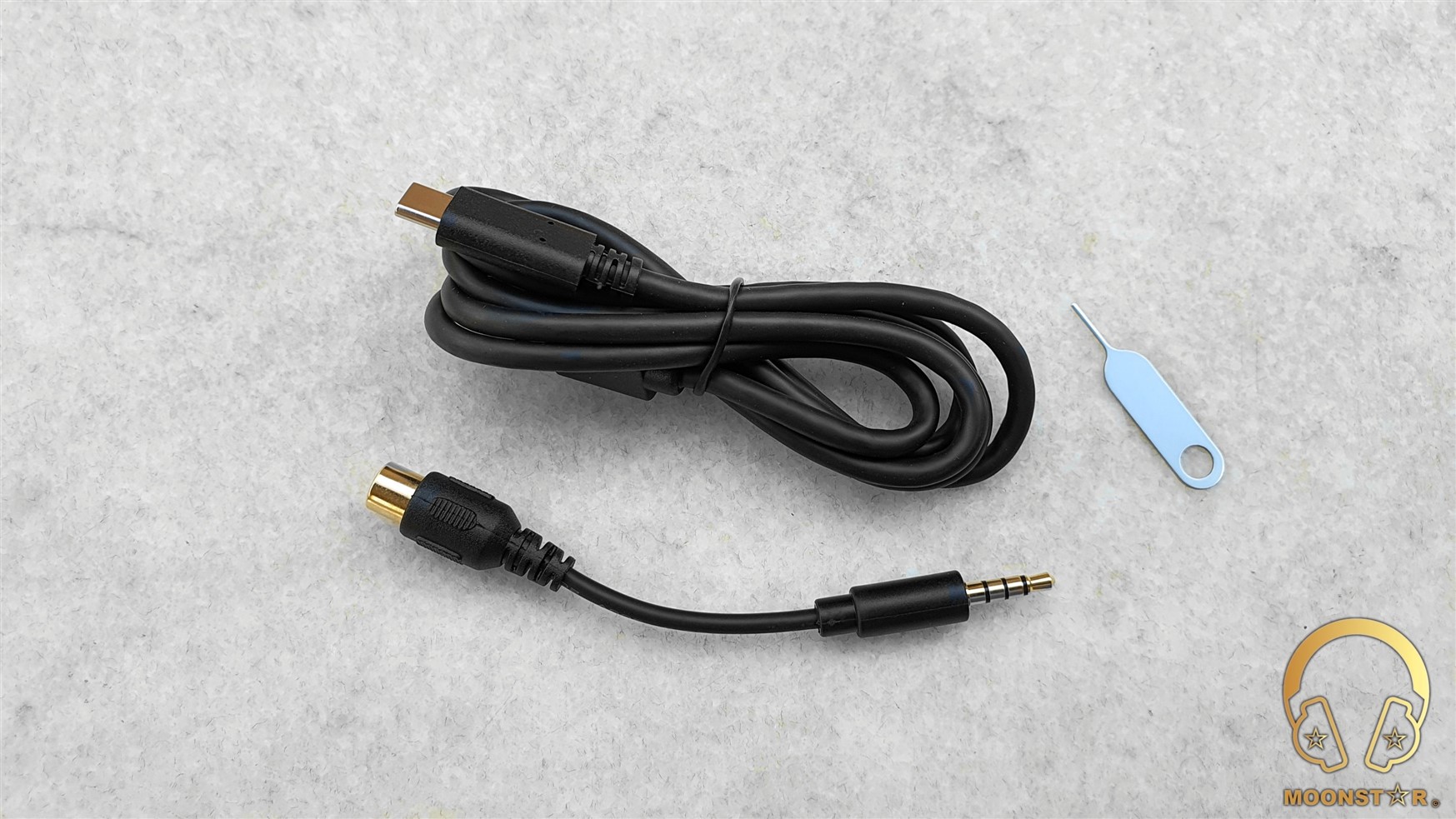
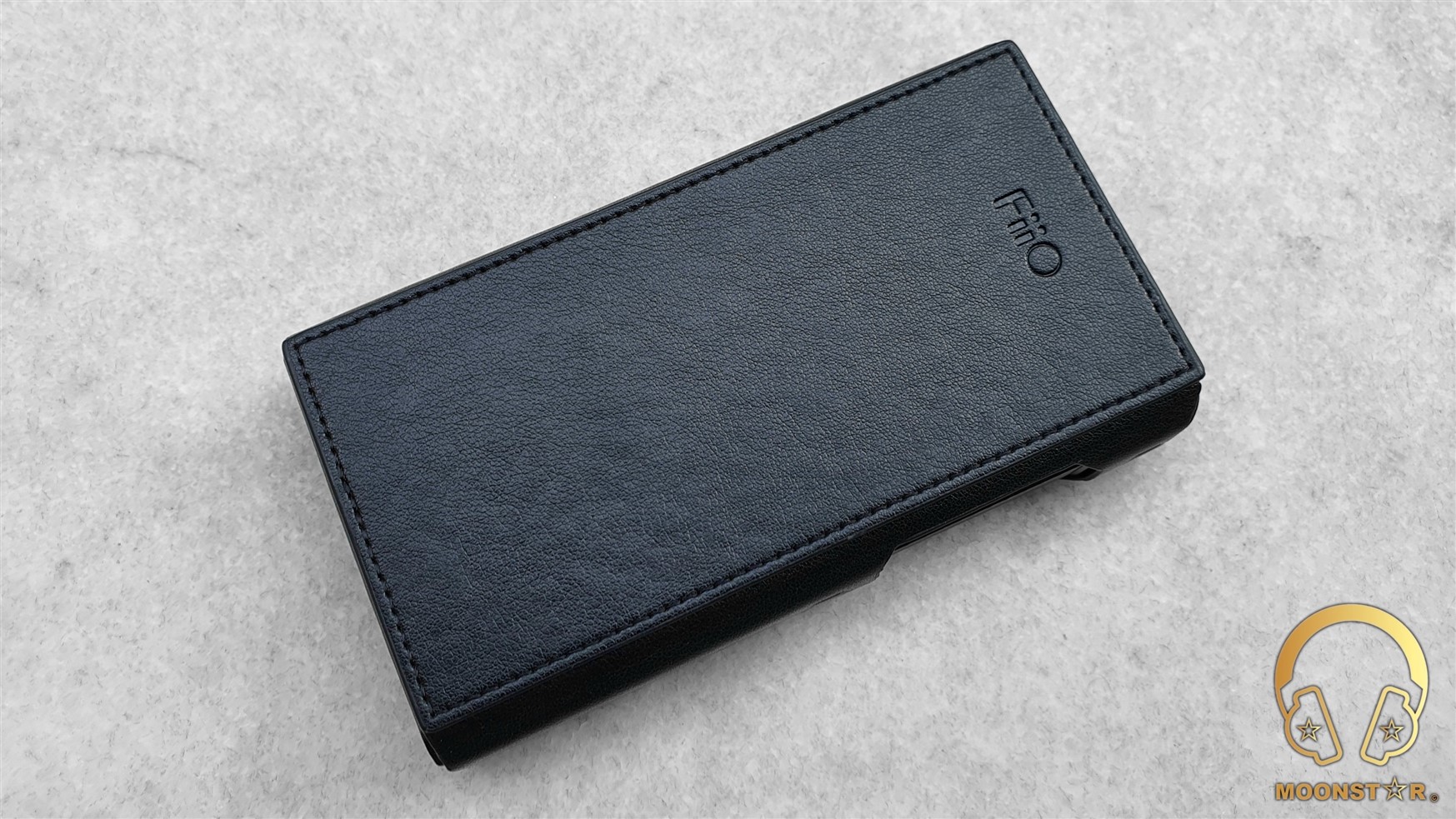
Design & Build Quality:
The M11 Plus adopts FiiO’s 6th Generation Honeycomb design, which stands out with Hexagonal design elements with aggressive edges that gives the device nice futuristic and premium looking appearance.
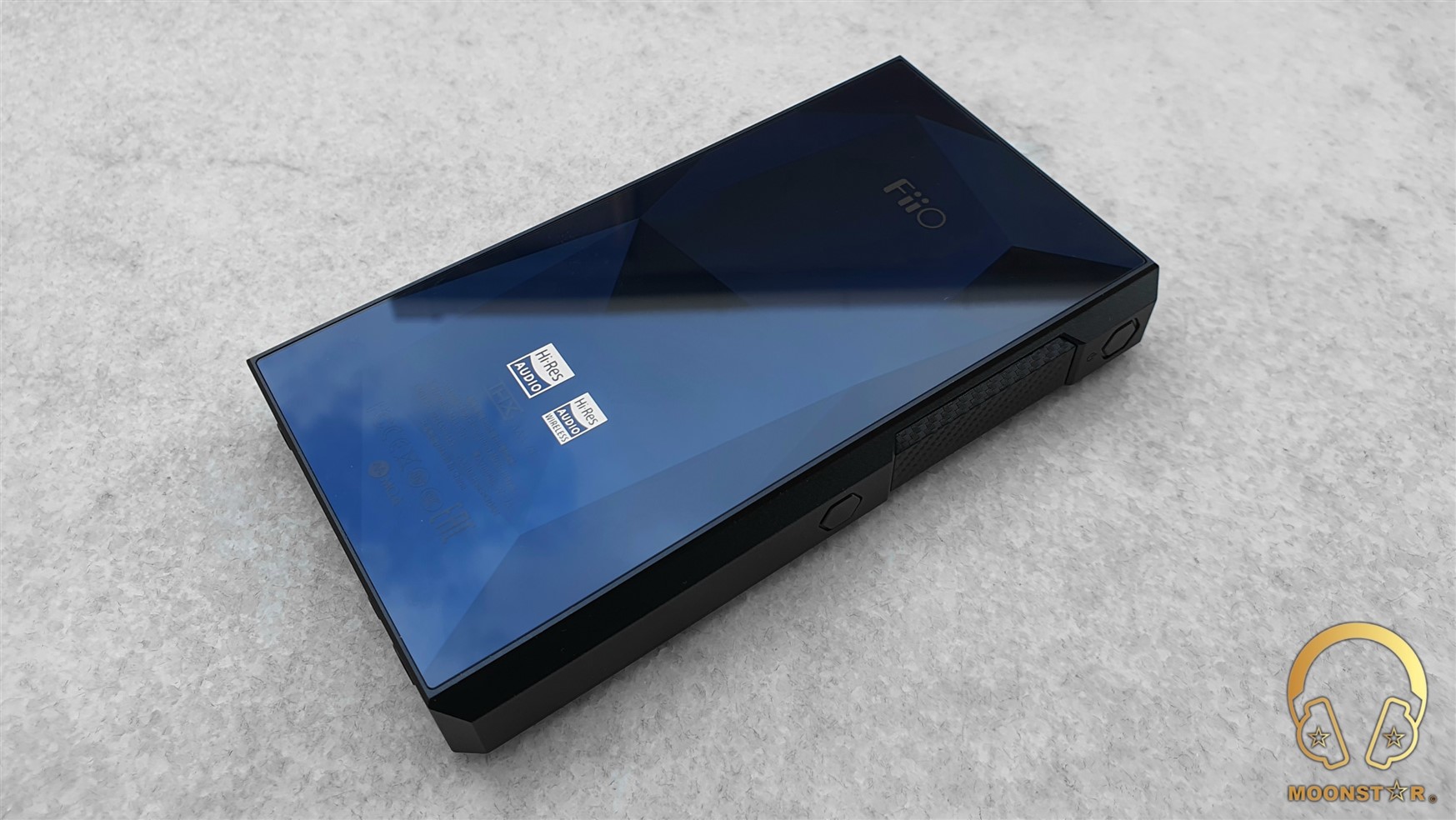
The M11 Plus has dimensions of 136.6×75.7×17.6mm and weights about 295grams, which gives you immediately an impression that you hold something solid and of high quality in your hands.
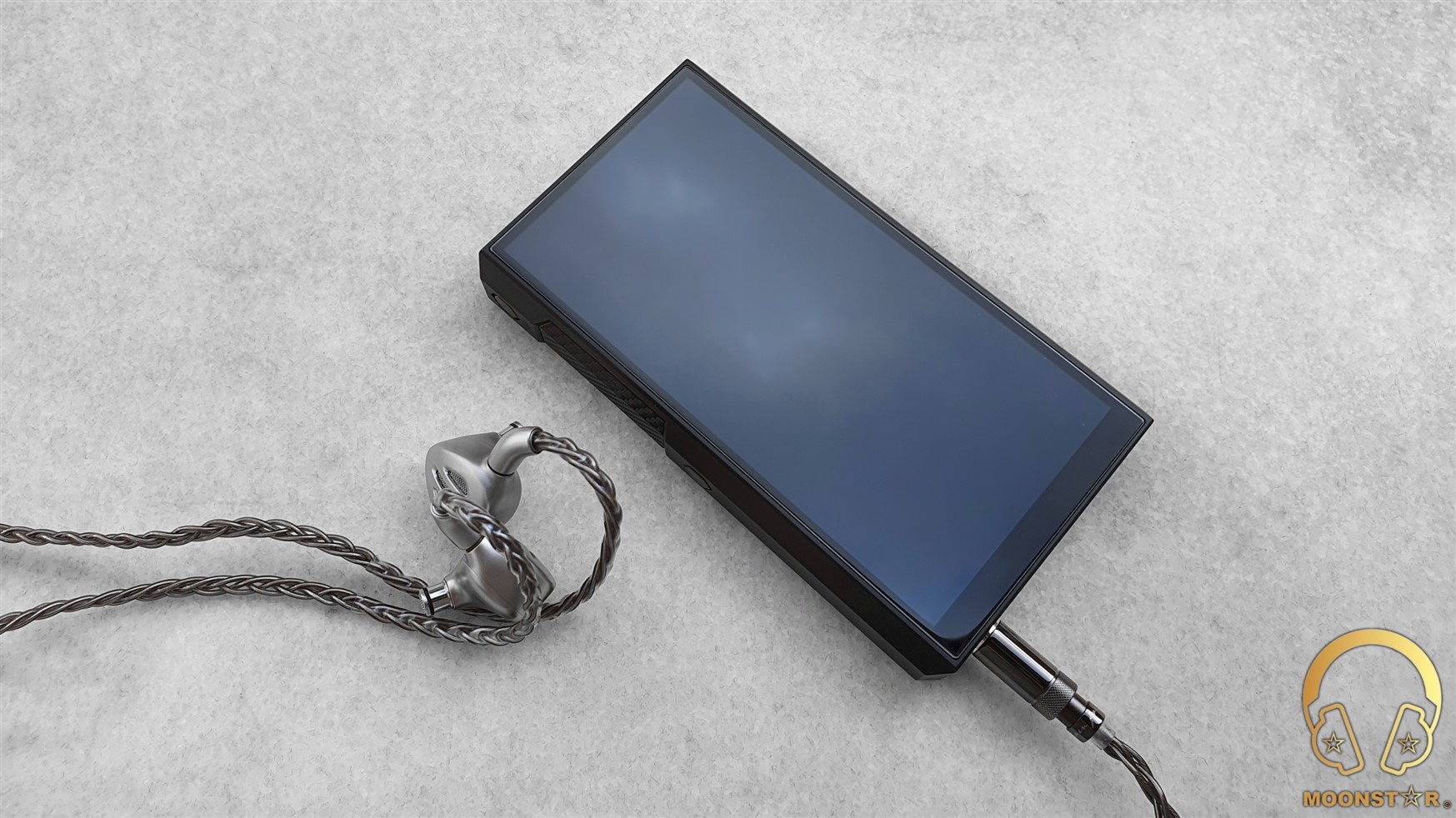
On the front of the device is a gorgeous looking 5.5’’ 18:9 touch screen with a resolution of 720*1440. The display shows a decent screen to body, which comes with a pre-installed glass screen protector that has soft edges with a 2.5D design.
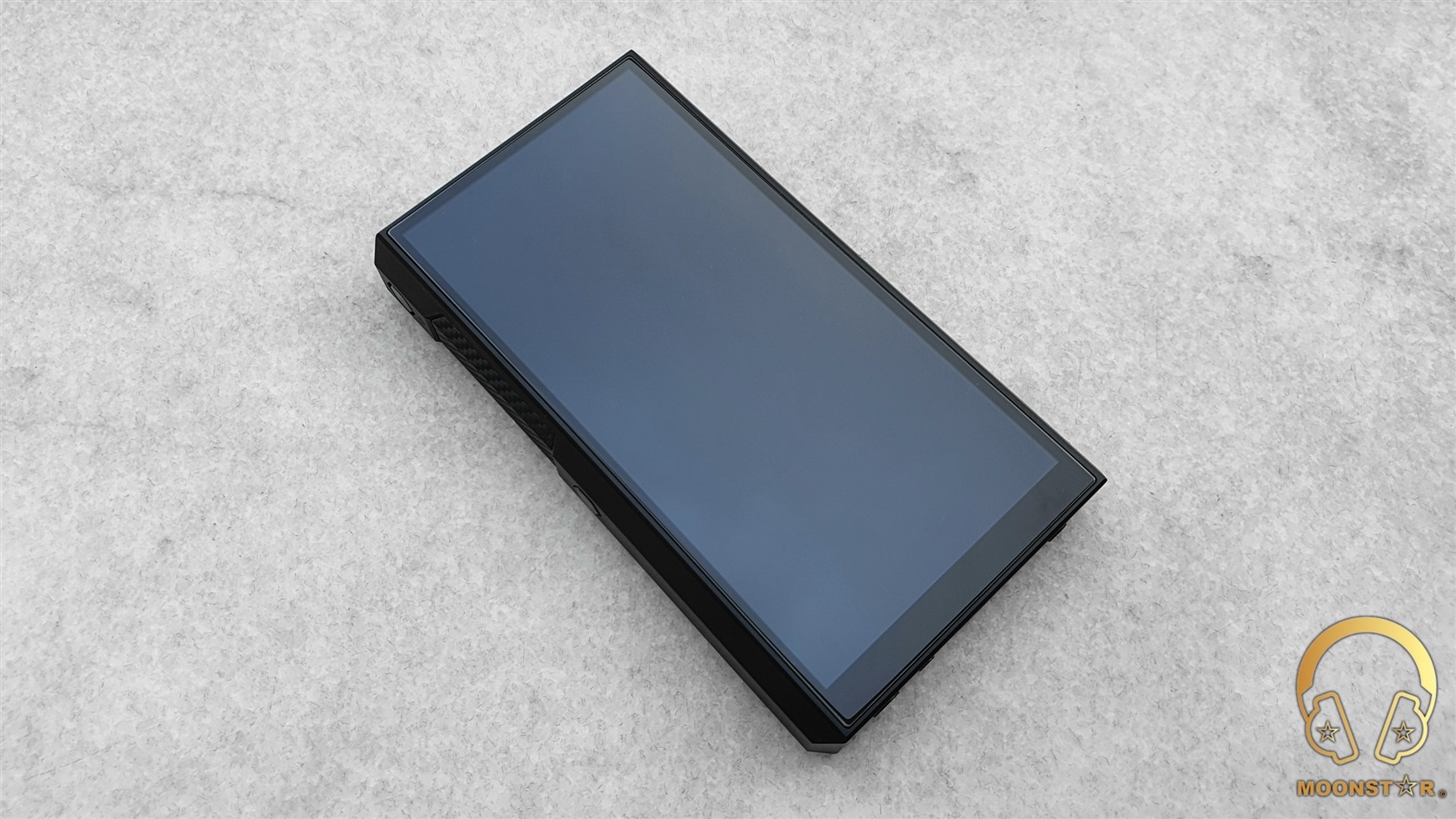
At bottom of the device is the area with many Analog & Digital interface, which features the 4.4mm (TRRRS) & 2.5mm (TRRS) Balanced outputs that do share lineout functions. Here is also a USB Type-C port that utilizes Digital Out, Data (File Transfers) and Charging functions.
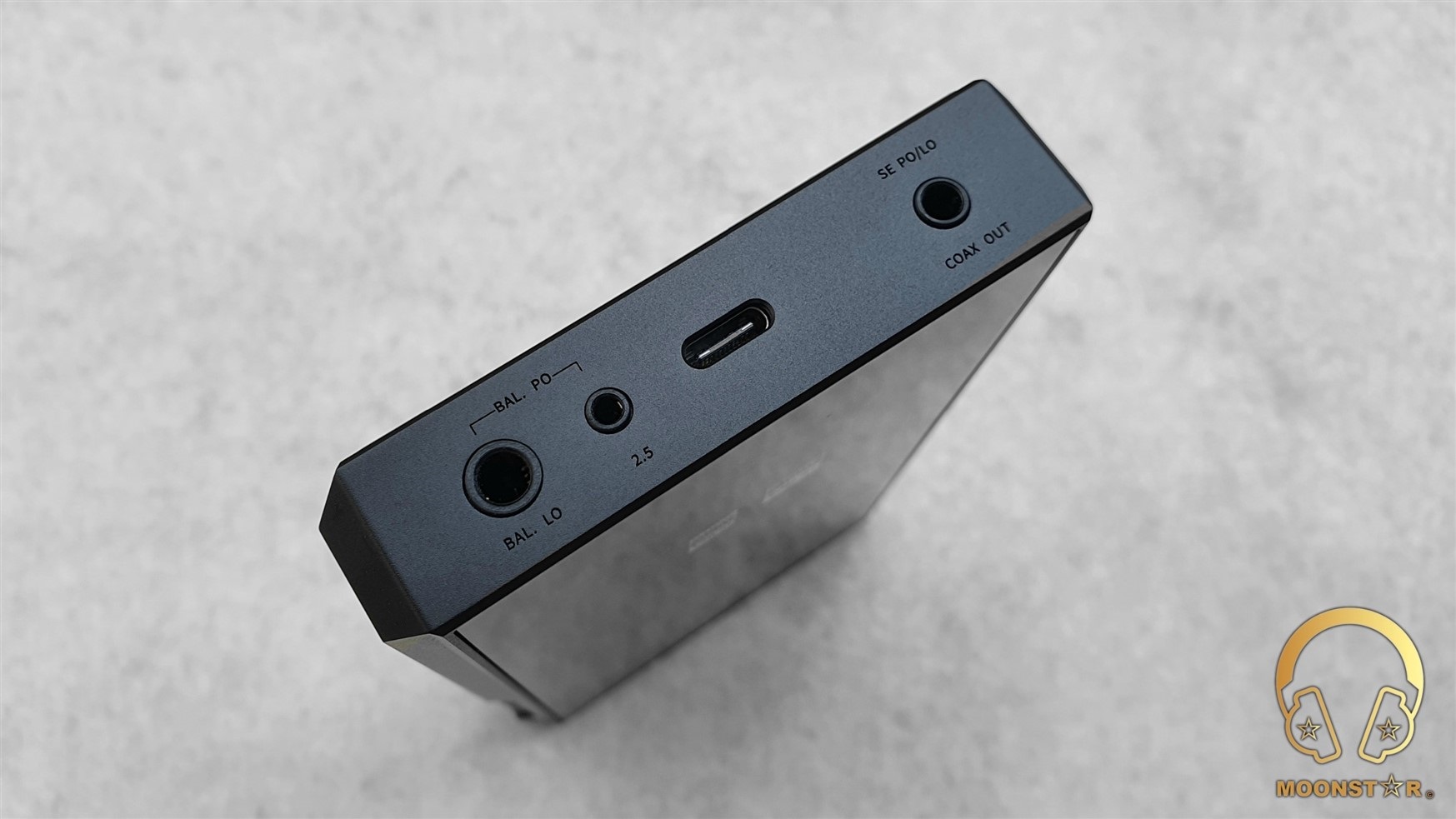
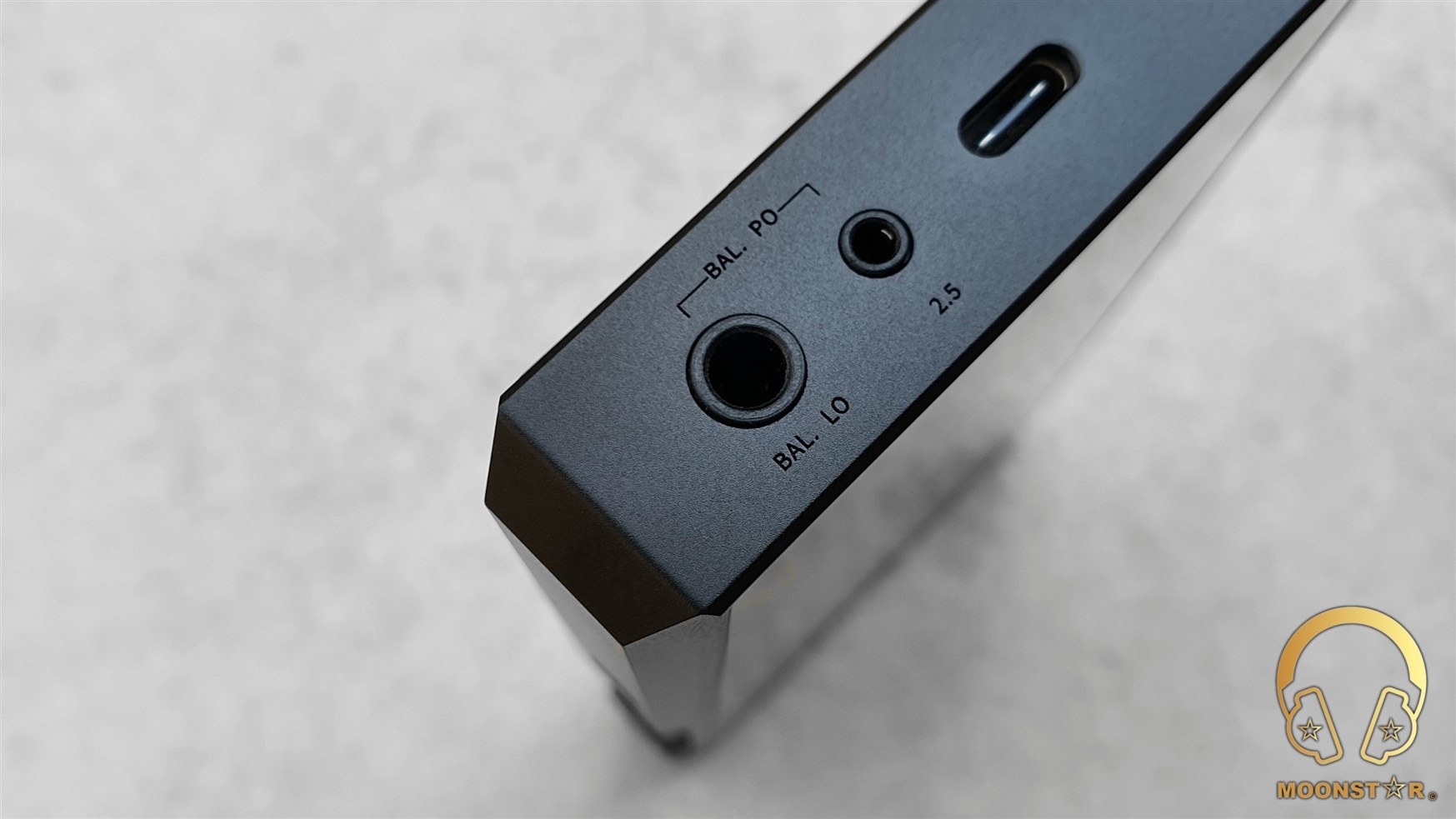
Another Analog output is the 3.5mm Single Ended headphone port that shares Phone Out, Line Out and SPDIF outputs.
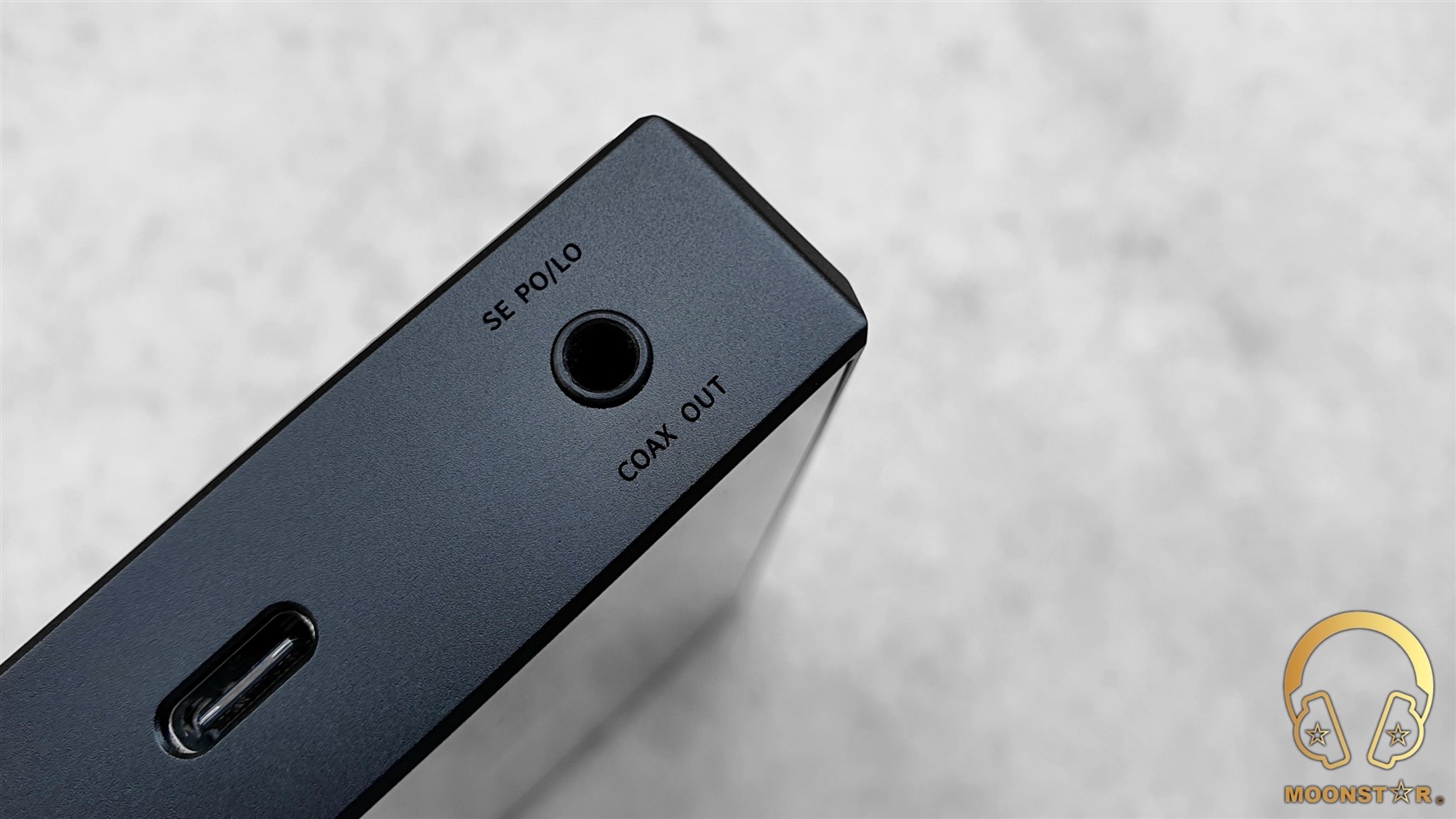
Both the Power/Lockscreen and the Multifunctional button do have hexagonal design, while the Power/Lockscreen button has a nice LED status indicator around the edges.
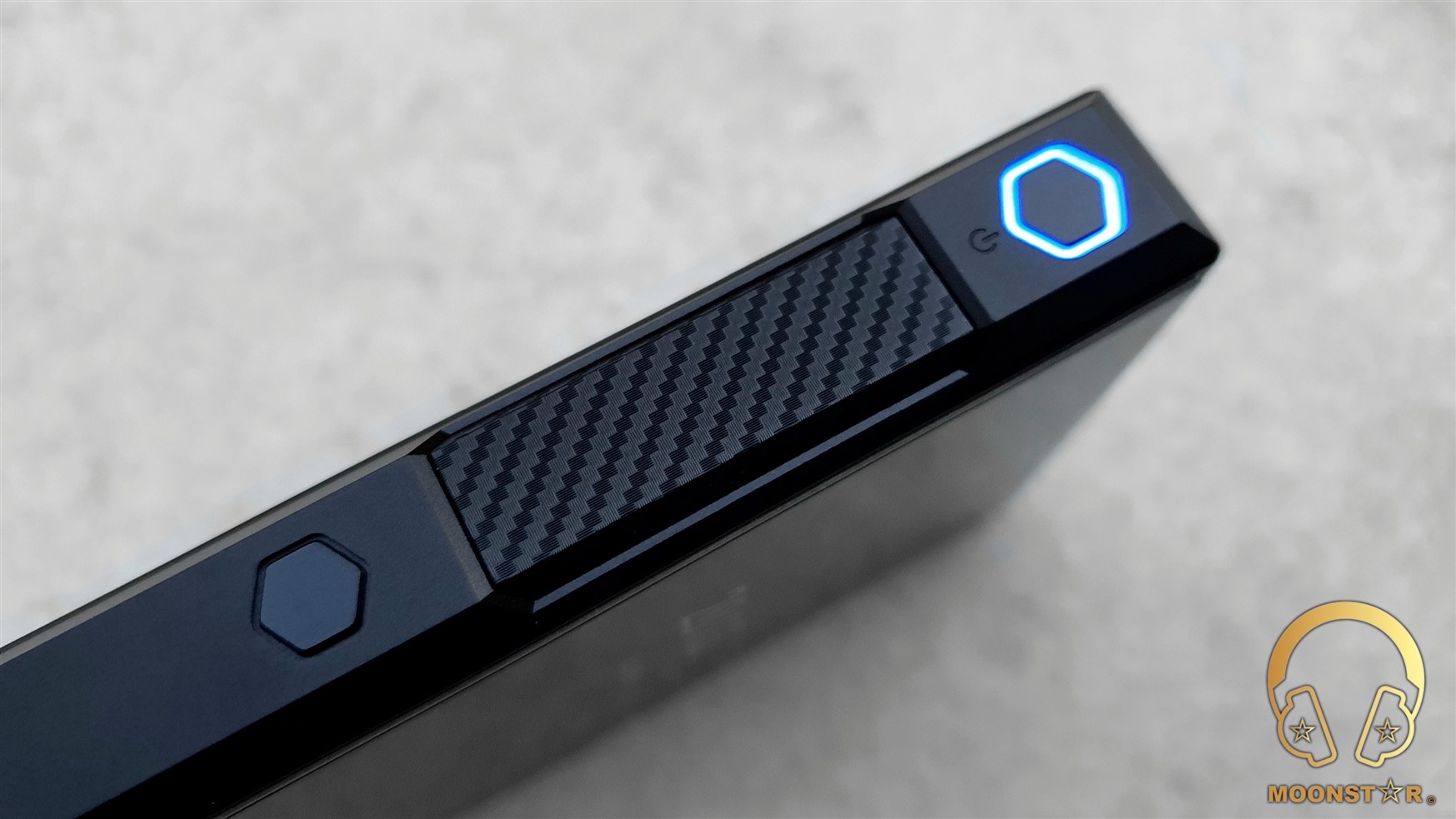
Here is also FiiO’s unique “all-in-one volume button + touch panel”, which has a beautiful looking carbon fibre surface. FiiO improved this innovative design that was used on the M11 Plus LTD with a Carbon Fiber design that offers now a more comfortable and precise volume adjustment.
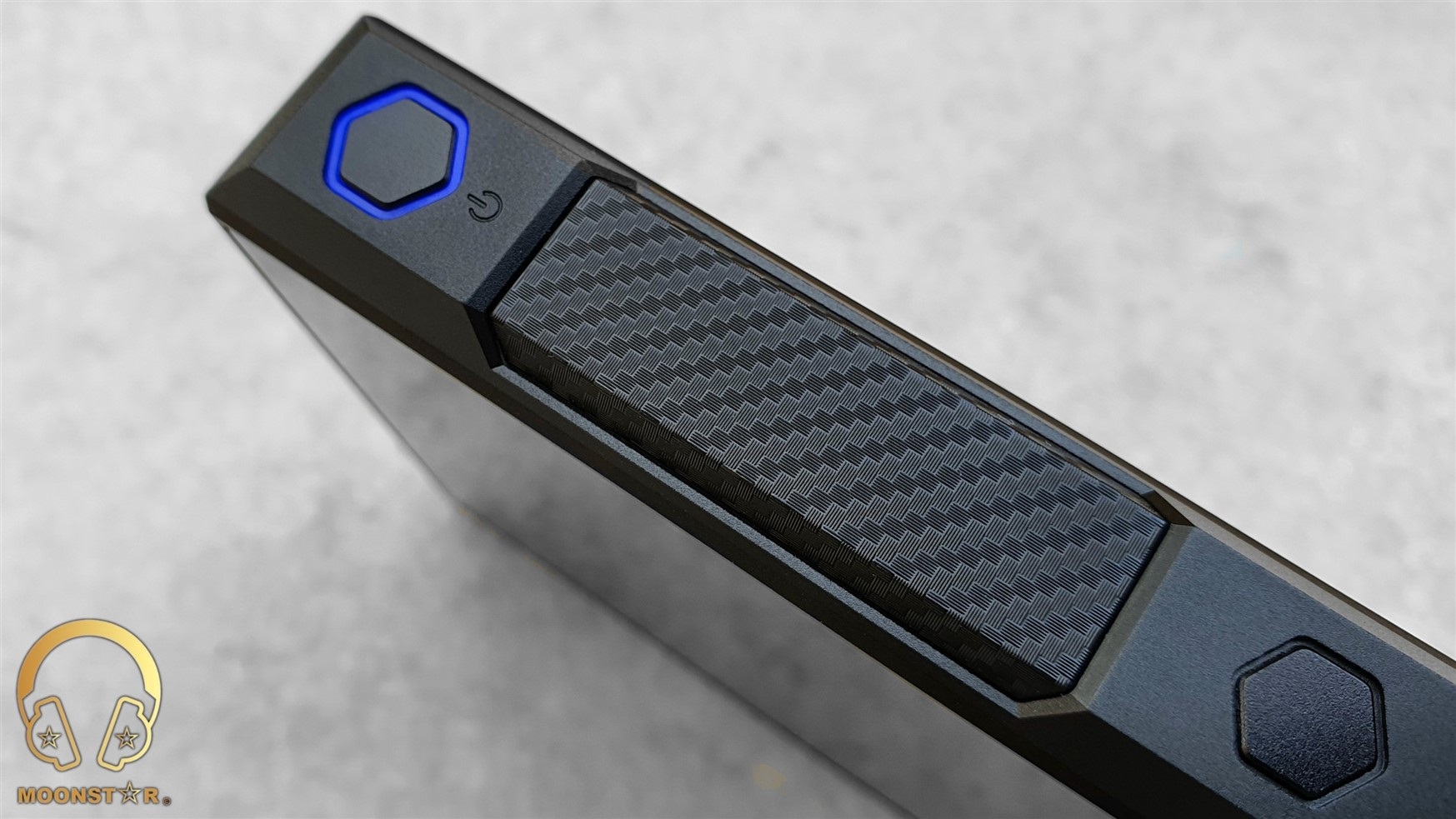
This interface supports both touch sensitive and mechanical actions for a precise volume up & down adjustment.
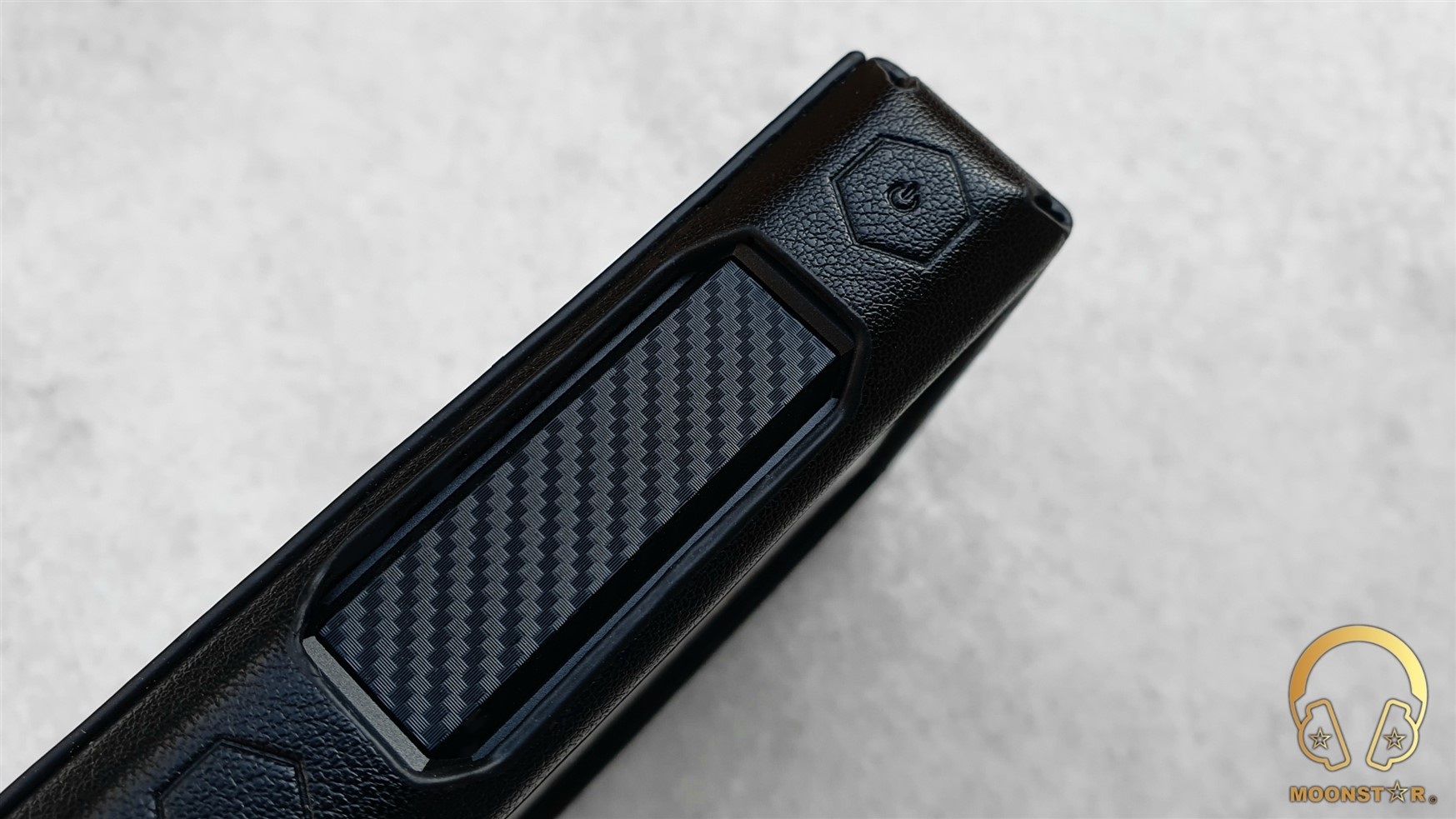
The right surface of the M11 Plus features a Hold Switch and 3 more buttons that are dedicated for actions like Play/Pause, Next and Previous track.
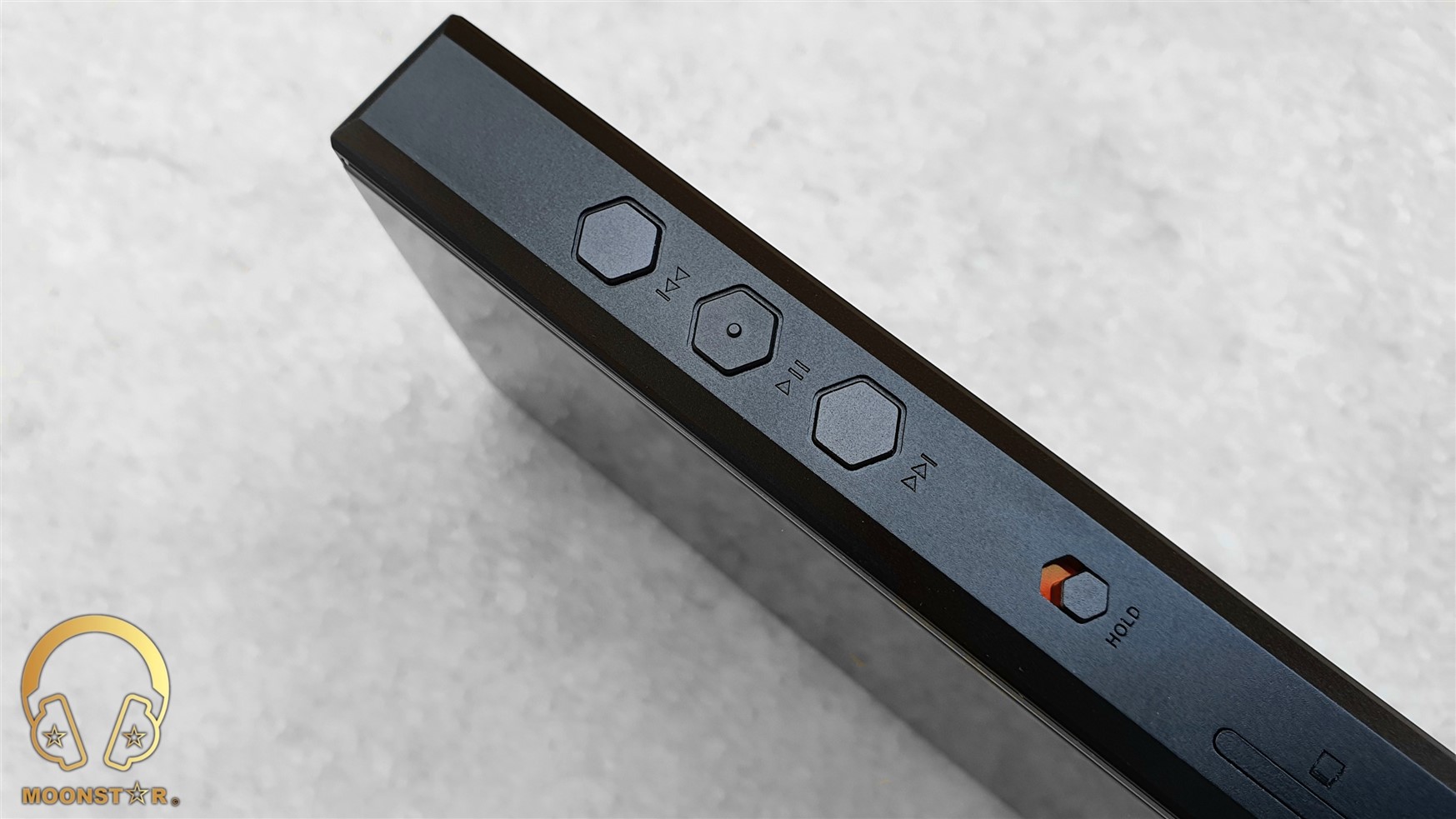
Here you can find a single micro SD card slot for storage expansion that supports storage cards with theoretically up to 2TB.
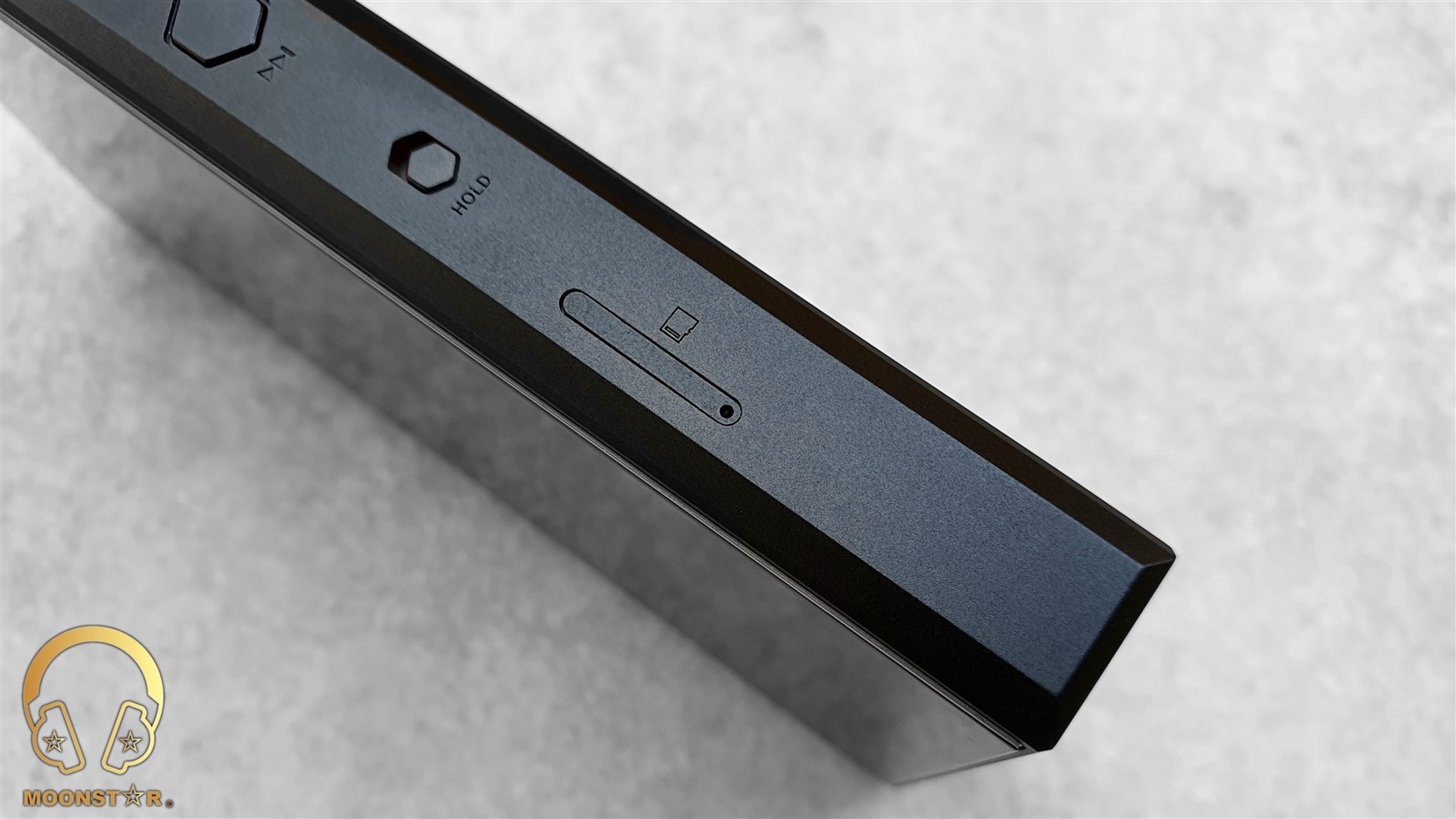
The rear side of the M11 Plus features a glass panel with a “Diamond Cut Textured” surface, which shows multiple colour effects from different angles.
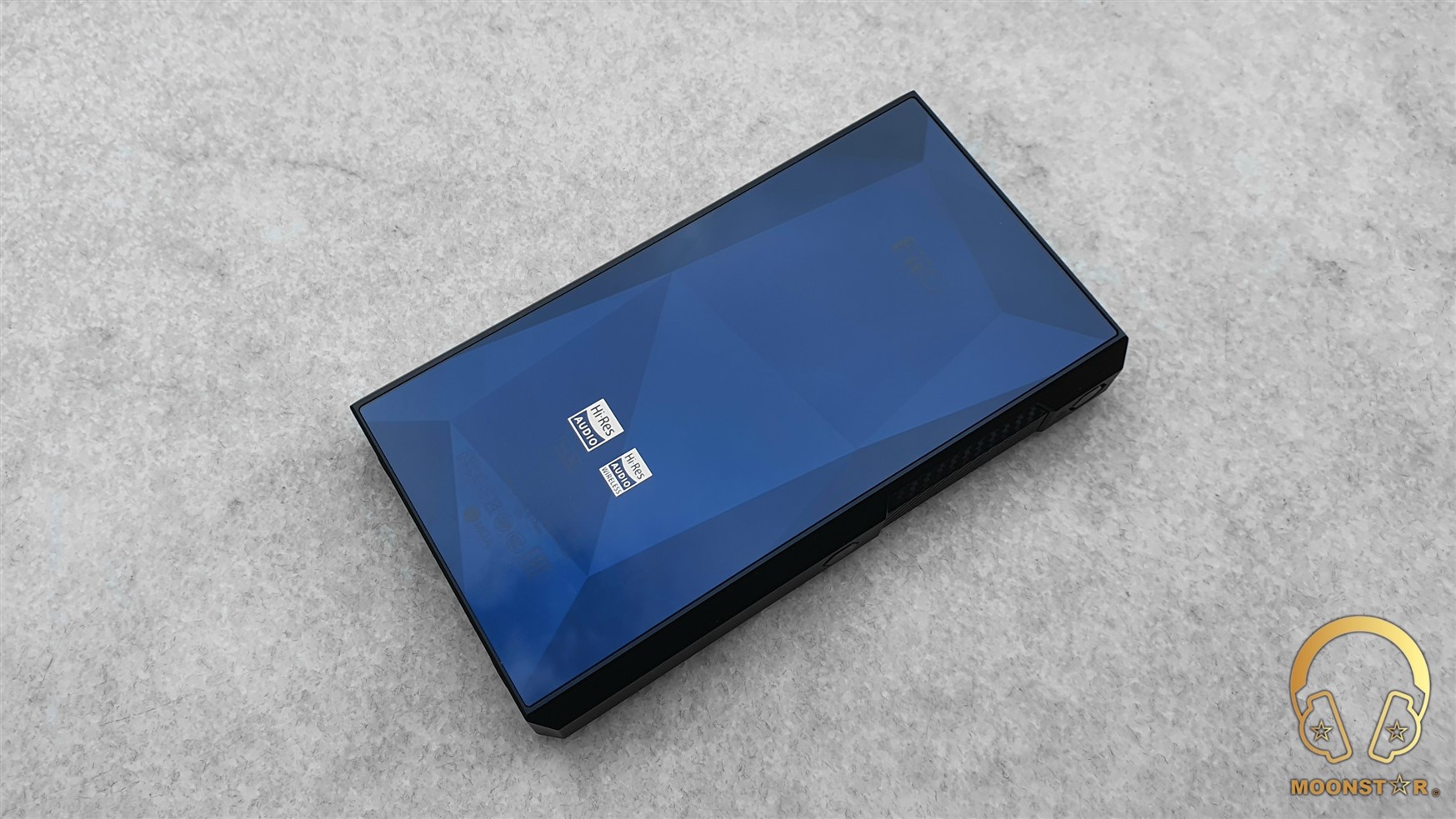
The device looks very robust any doesn’t show any imperfections like gaps, burrs or any openness, etc.
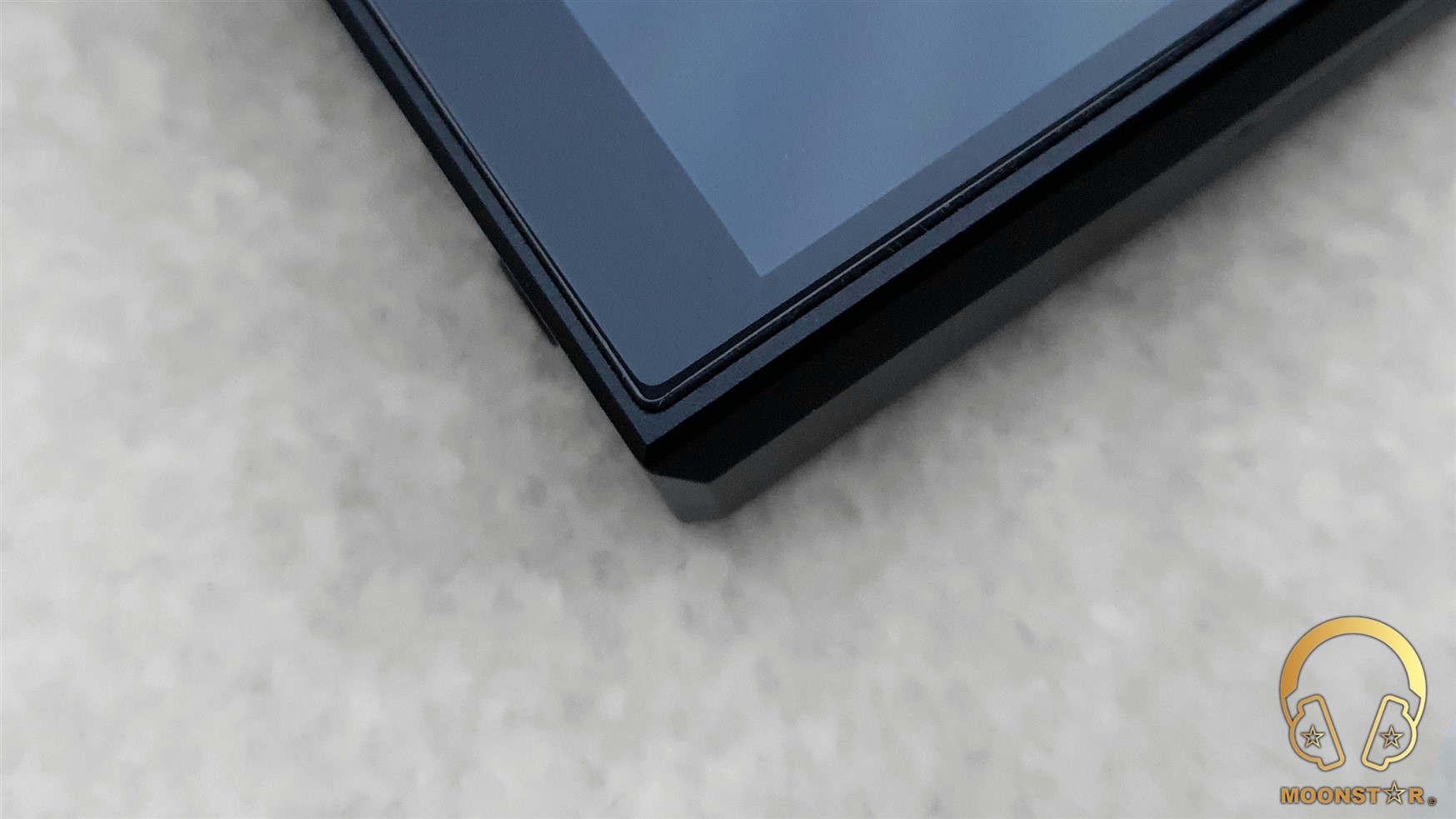
Some Technical Specifications:
- DAC : 2x ES9068AS
- CPU Model : Snapdragon 660 Octa-Core
- USB : XMOS XUF208
- Crystal Oscillator : 2x NDK Femtosecond Crystal Oscillator
- AMP : 2x THX AAA-78
- RAM : 4GB
- ROM : 64GB (46GB free 18GB reserved for OS)
- Screen : 5.5 inches (720*1440)
- Digital Out : USB Type-C
- Analog Outputs : 3.5mm Output for LO, PO & SPDIF, 2.5mm & 4.4mm Balanced Out
- Phone Out Power : 206mW @ 32 Ohm
- Balanced Out Power : 588mW @ 32 Ohm
- Output Impedance : ≤1Ω Single Ended / ≤2Ω Balanced
- Frequency Response : 5Hz – 90kHz (-5dB)
- THD+N : < 0.0006% (A-wt.)
- Noise Floor : <2µV Single Ended / < 3 µV Balanced
- Wi-Fi : 2.4 GHz & 5.0 GHz
- Bluetooth SoC : QCC5124
- Bluetooth Standard : 5.0
- Bluetooth Two-Way : SBC/AAC/APTX/APTX-HD/LDAC
- Battery : 6000mAh Li-polymer
- Battery Life : up to 14 Hours Single-Ended Output / 11.5 Hours Balanced Output
- Quick Charge Time : About 3 Hours (QC4.0)
- Dimensions : ~136.6×75.7×17.6mm
- Weight : about 295g
Supported Audio Formats:
The FiiO M11 Plus supports almost any traditional and modern audio format including MQA up to 8x unfold.
The full list of supported audio formats is below;
- DSD:DSD64/128/256(“.iso”,“.dsf”,“.dff”),DST iSO
- DXD:352.8K/24bit
- APE FAST/High/Normal:384kHz/24bit(MAX)
- APE Extra High:192kHz/24bit(MAX)
- APE Insane:96kHz/24bit(MAX)
- Apple Lossless:384kHz/32bit(MAX)
- AIFF:384kHz/32bit(MAX)
- FLAC:384kHz/32bit(MAX)
- WAV:384kHz/32bit(MAX)
- WMA LOSSLESS:96kHz/24bit(MAX)
- MP3,OGG,WMA,AAC, etc.
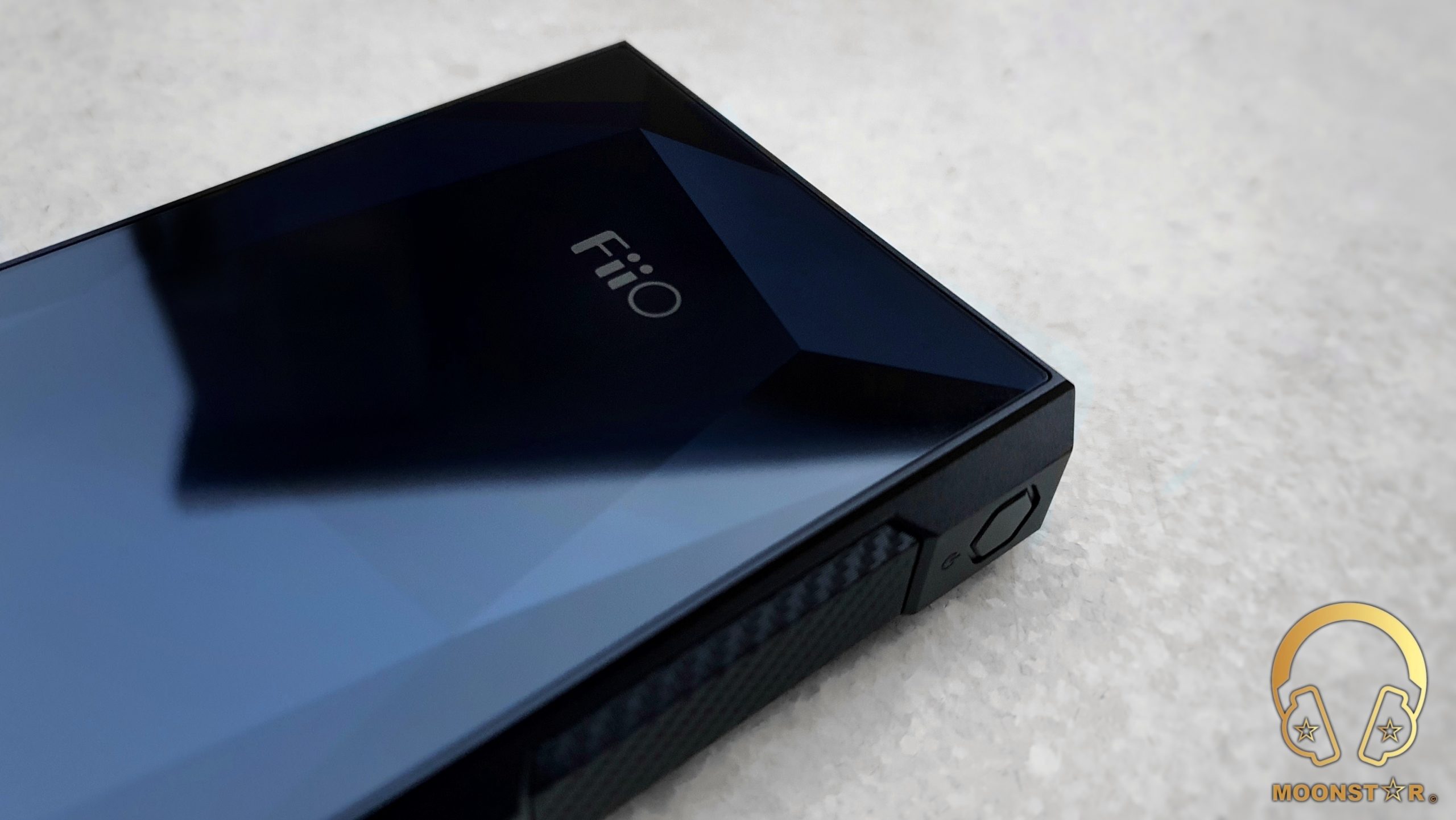
Hardware & Software Features:
The FiiO M11 Plus is a modern and advanced Portable DAP (Digital Audio Player) that features some impressive hardware and software specs, which I will now review for you.
A) ES9068AS DAC Chip & USB DAC Function:
FiiO has brought several updates with the new M11 Plus ESS variant. They not only have switched the DAC chipset from AK4497*2 to ES9068AS*2 DAC chips, they have also replaced the low-pass filter from OPA1662*2 to OPA927*2 matching the ESS DAC chipset. The chipset is now tuned to achieve high SNR ratings ensuring quality sound performance with cleaner background response.
It is tuned and adjusted for achieving improved performance, even better than the AKM counterpart with better Signal to Noise Ratio and Distortion ratings.
The FiiO M11 Plus offers USB DAC support that is compatible with MAC’s, Windows PC’s, Android and iOS devices. Windows PC’s do need the installation of an USB DAC driver that is available on FiiO’s website, while Android, iOS and MAC computers do not need any driver installation.
- Download link: https://www.fiio.com/Driver_Download
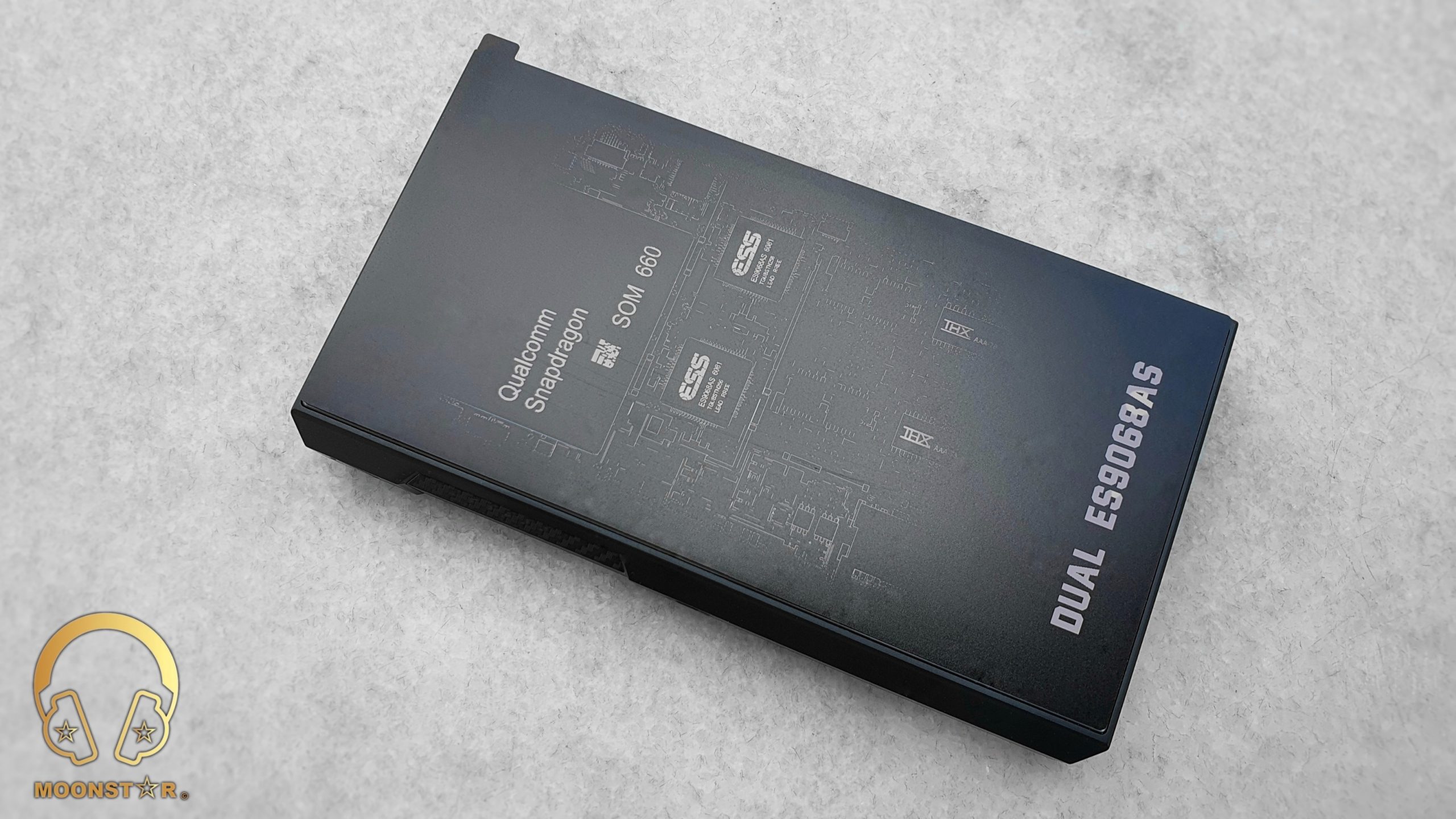
B) Snapdragon 660 CPU with Andreno 512 GPU + 4GB RAM:
The New M11 Plus is equipped with the Snapdragon 660 Octa-Core SoC that comes with a pretty capable Andreno 512 GPU, which is able to provide a smooth GUI (Graphical User Interface) for a Smartphone-Like user experience. The M11 Plus features also 4GB of RAM that will provide full functionality with the latest Android 10 OS.
The 18 GB of the internal storage is reserved for the OS (Operating System) of the device, while 46 GB’s are free to store your music files or for the installation of third party applications.
The M11 Plus is equipped with a Single Micro SD Card slot for storage expansion, which supports a theoretical expansion capacity of up to 2TB.
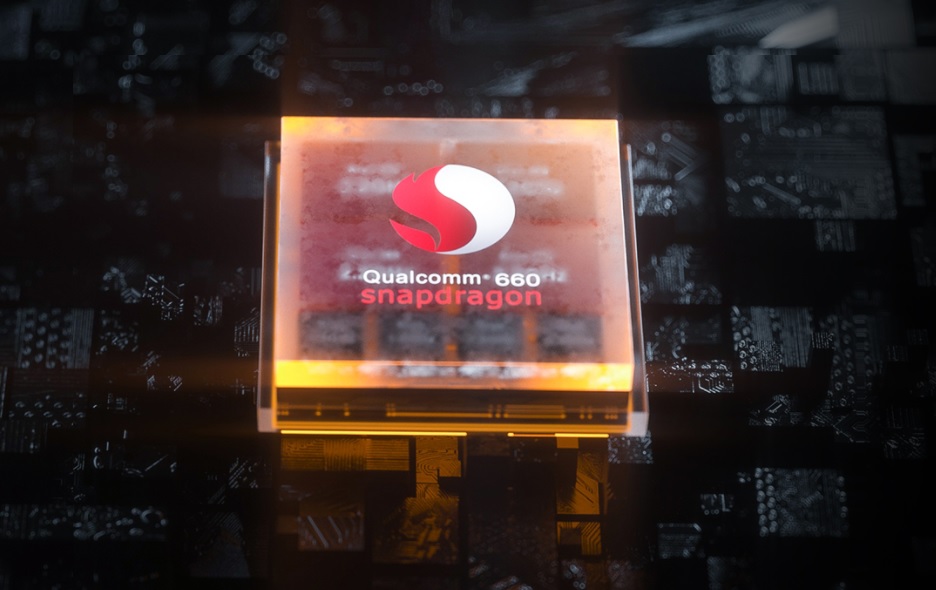
C) Outputs & Amplification:
The FiiO M11 Plus comes with the THX AAA-78 headphone amplifier module, which will deliver a higher output performance compared to the AKM variant with an output power rating of up to 660mW@32Ω of load. The Low-pass filter chip has been switched from OPA1662 to OPA927.
Here are some output specifications;
Line Out:
- THD+N : SE ≤0.0006%(1kHz/10kΩ)/ Balanced ≤0.0004%(1kHz/10kΩ)
- SNR : SE ≥118dB(dbA)/ Balanced ≥125dB(dbA)
- Crosstalk : SE ≥105dB(1kHz/10kΩ)/ Balanced ≥104dB(1kHz/10kΩ)
- Frequency response : SE 20Hz~50kHz (-0.5dB)/ Balanced 20Hz~50kHz(-0.5dB)
- Noise floor : SE ≤2.5μV(dbA)/ Balanced ≤2μV(dbA)
- Line Out level : SE 2.0V(1kHz/10kΩ)/ Balanced3.0V(1kHz/10kΩ)
3.5mm Headphone Out (@ High Gain):
- THD+N : ≤0.00054%(1kHz/32Ω)
- SNR : ≥122dB(dbA)
- Frequency response : 20Hz~20kHz(-1dB)
- Noise floor : ≤2.5μV(dbA)
- Output Impedance : ≤1Ω(32Ω)
- Output Power : ≥300mW @16Ω / ≥210mW @32Ω / ≥33mW @300Ω (THD+N<1%)
- Crosstalk : ≥76dB(1kHz/32Ω)
4.4mm & 2.5mm Balanced Out (@ High Gain):
- THD+N : ≤0.00085%(1kHz/32Ω)
- SNR : ≥126dB(dbA)
- Frequency response : 20Hz~80kHz(-1dB)
- Noise floor : ≤2.5μV(dbA)
- Output Impedance : ≤2Ω(32Ω)
- Output Power : ≥400mW @16Ω / ≥ 660mW @32Ω / ≥90mW @300Ω (THD+N<1%)
- Crosstalk : ≥111dB(1kHz/32Ω)
The recommended headphone impedance for the M11 Plus is 16~150Ω for the 3.5mm Single Ended headphone output and 16~300Ω for the 2.5mm + 4.4mm Balanced outputs.
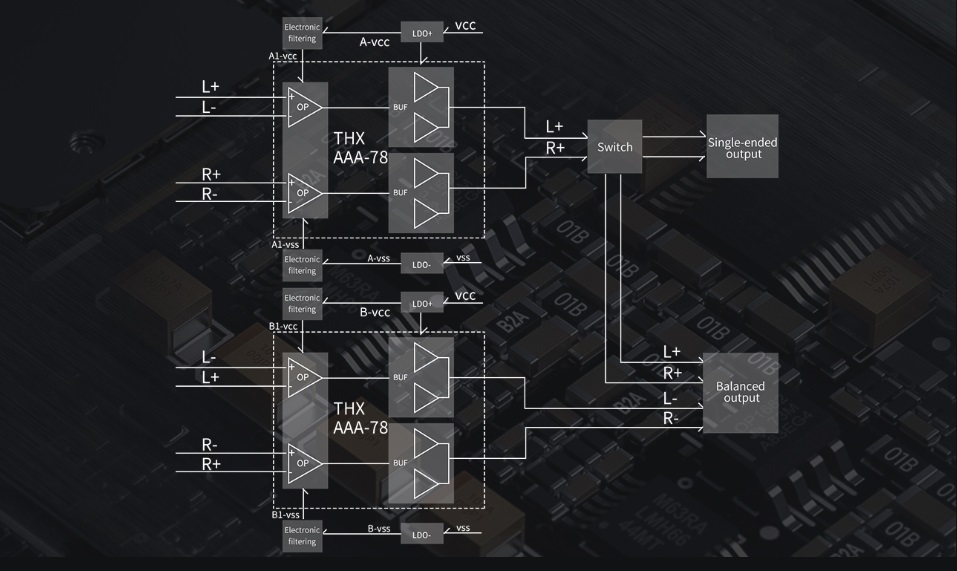
D) Wireless Connectivity:
The FiiO M11 Plus features a build in Wi-Fi antenna which supports the 802.11 b/g/n/ac protocols and 2.4GHz and 5.0 GHz frequency standards. The download speed, connectivity range and stability is the best I have experienced to date with a Digital Audio Player and performs pretty close to modern mobile phones.
The M11 Plus utilizes also Qualcomm’s QCC5124 Bluetooth SoC that offers High-Res Two-Way Bluetooth support with the BT5.0 standard. This BT SoC is able to transmit HWA/LDAC/aptX HD/aptX/SBC codec’s and to receive codec’s in AAC/SBC/LDAC quality.
The M11 Plus can be connected to Bluetooth transmitting devices like a mobile phone, working as a Bluetooth DAC/Amplifier.
The stabile Bluetooth operating distance of the M11 Plus is about 10 meters when I do connect it to Bluetooth devices like the Sony WF1000XM4 or FiiO UTWS5. What I also really like about the BT connectivity of the M11 Plus is the very low latency when I do watch to YouTube or Netflix Videos.
Please note that I didn’t have heard any waterfall noise issue that could be caused by the Wi-Fi antenna and any remarkable Bluetooth connection droppings with my sample during this review.
1. AirPlay & Wi-Fi file transfer:
The FiiO M11 Plus is able to play your songs stored on PC or NAS wirelessly through DLNA, or via AirPlay with iOS devices. You can also transfer your songs wirelessly to the M11 Plus by using the Wi-Fi transfer function which is a nice addition.
2. Anti-interference Circuit Design:
The FiiO M11 Plus adopts a new internal layout with a modular circuit design that feature its own shielding cover, in order to separate interferences of the digital and analog portions. This design was created to ensure that that does parts do not interference with each other.
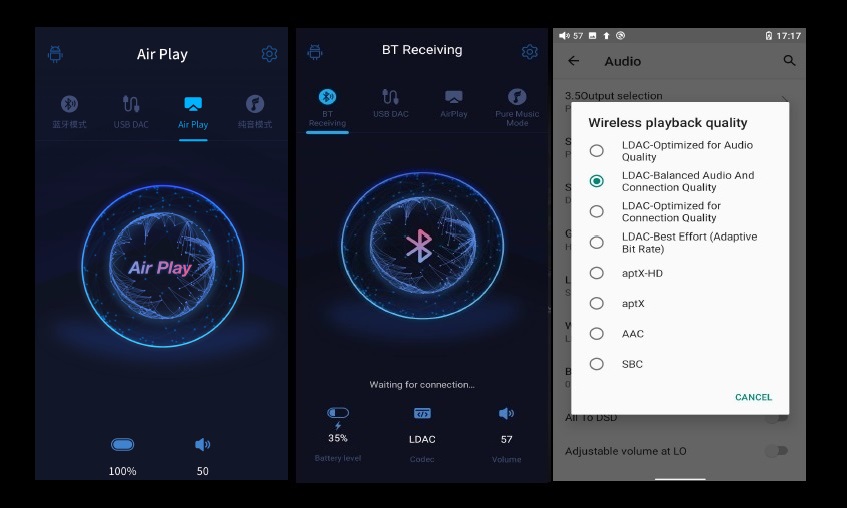
E) Battery Life:
FiiO M11 Plus ESS features a 6000mAh Li-Polymer battery, which supports Quick Charge QC3.0/4.0 that takes about 3.5 hours. The battery life of the new M11 Plus is improved from 11.5 hours on the AKM variant to up to 14 hours over the 3.5mm Single Ended output, while the 4.4mm & 2.5mm Balanced output drains the battery in around 11.5 – 12 hours.
Testing Conditions:
- Volume: 70 / Gain: Low / File: MP3 44.1 kHz/16bit / Screen: Off
2. Software & GUI:
The combination of Android 10 and relative capable Snapdragon 600 SoC + 4GB of Ram makes the FiiO M11 Plus to a DAP with a pretty fluid GUI. The fairly customized Android OS of the M11 Plus comes with pre-installed applications like Google Play Store, Chrome Browser, Gallery, Clock, Technical Support, FiiO Application Store, etc.

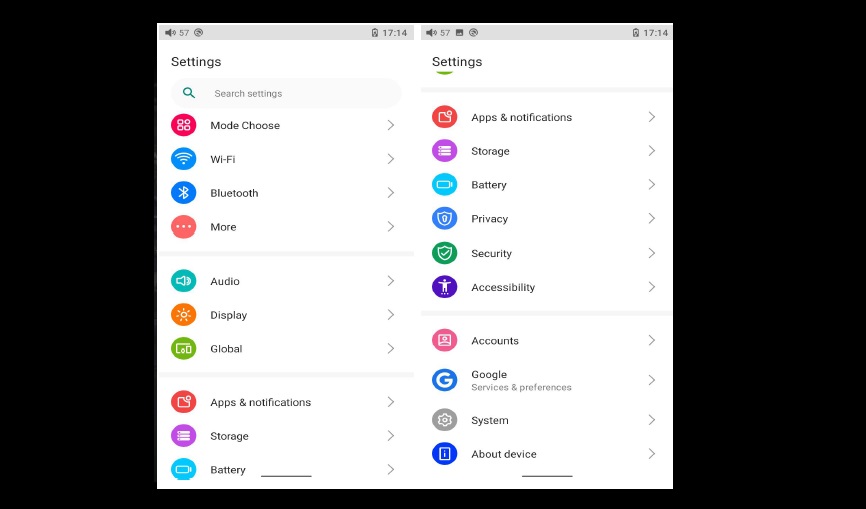
It’s great to see that Google Play Store is now pre-installed supported out of the box that gives you access to third party Streaming Services like Spotify, Tidal, Qobuz, Deezer, Apple Music and more. You can even install applications like Netflix, Amazon Prime or YouTube to watch your favorite TV shows, video clips or movies.
FiiO offers has also its own application that is called Application Store, where you can find all Music and Radio Streaming Services or Thirty Party APP Stores like APKPure, CoolApk or Yingyongao under one page.
FiiO Music Player is another highlight of the M11 Plus that comes with tons of features, settings and a very nice Graphical User Interface (GUI).
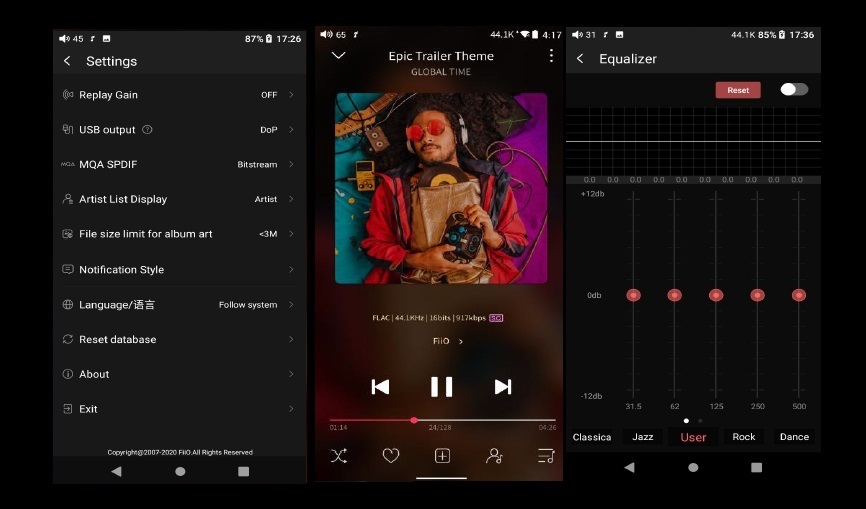
The FiiO M11 Plus supports five working modes, including Android mode, Pure Music mode, AirPlay, USB DAC mode and Bluetooth Receiving mode. The default is Android mode when the device is powered on for the first time, which can be switched to other modes on the drop-down or settings menu.
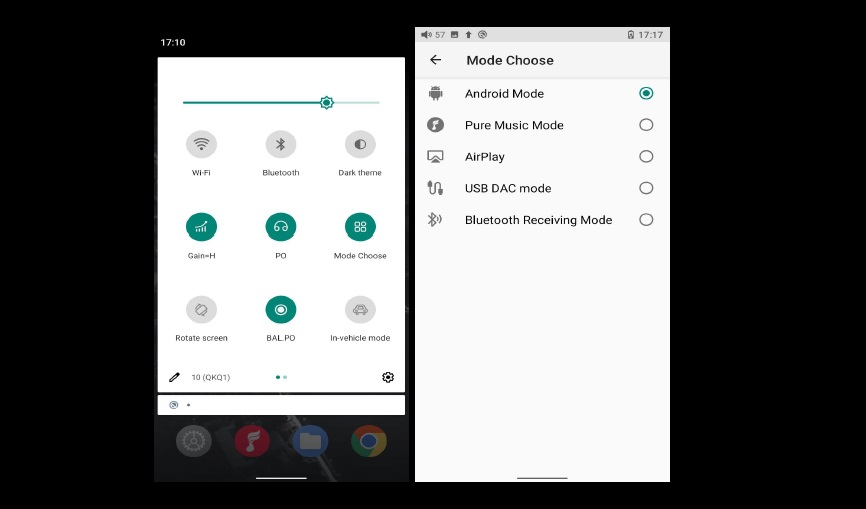
All-in all, the M11 Plus offers a very user friendly and familiar UI (User Interface) that gets constantly updates. What I also really like is the Technical Support Menu that gives you a quick access to FW Updates (OTA and Local), Quick Start Guide, Online Feedback and many more, which is a nice addition.

Full List of Remarkable Features:
- Android 10 OS
- MQA 8X Decoding Support
- ES9068AS*2 Dual DAC Chip’s
- THX-AAA 78*2 Headphone Amplifier.
- Snapdragon 660 CPU (Octa-Core)
- 6th Gen Honeycomb Design
- 5” Bezel-less Touch-Screen with 18:9 ratio
- New-Gen Interactive Intelligent Volume System with an upgraded carbon-fiber panel.
- New Digital Audio Purification System (DAPS) with Self-Developed 4th Gen FPGA+NDK Femtosecond crystal oscillators
- High-Res Two-Way Bluetooth Support (V5.0 Connectivity)
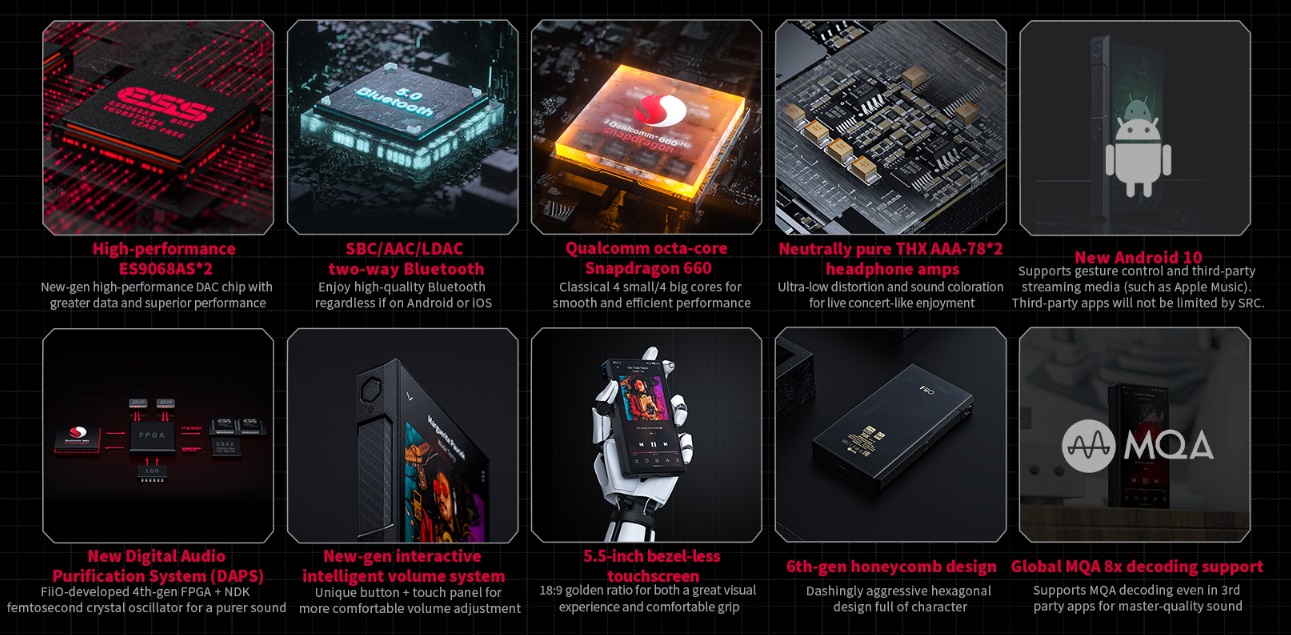
Equipment’s used for this review:
- DAP’s : FiiO M11 Plus, Sony WMA1, FiiO M11 Pro
- IEM’s : FiiO FD7, FiiO FH9, Meze Audio Rai Penta, Kinera URD, Moondrop Variations
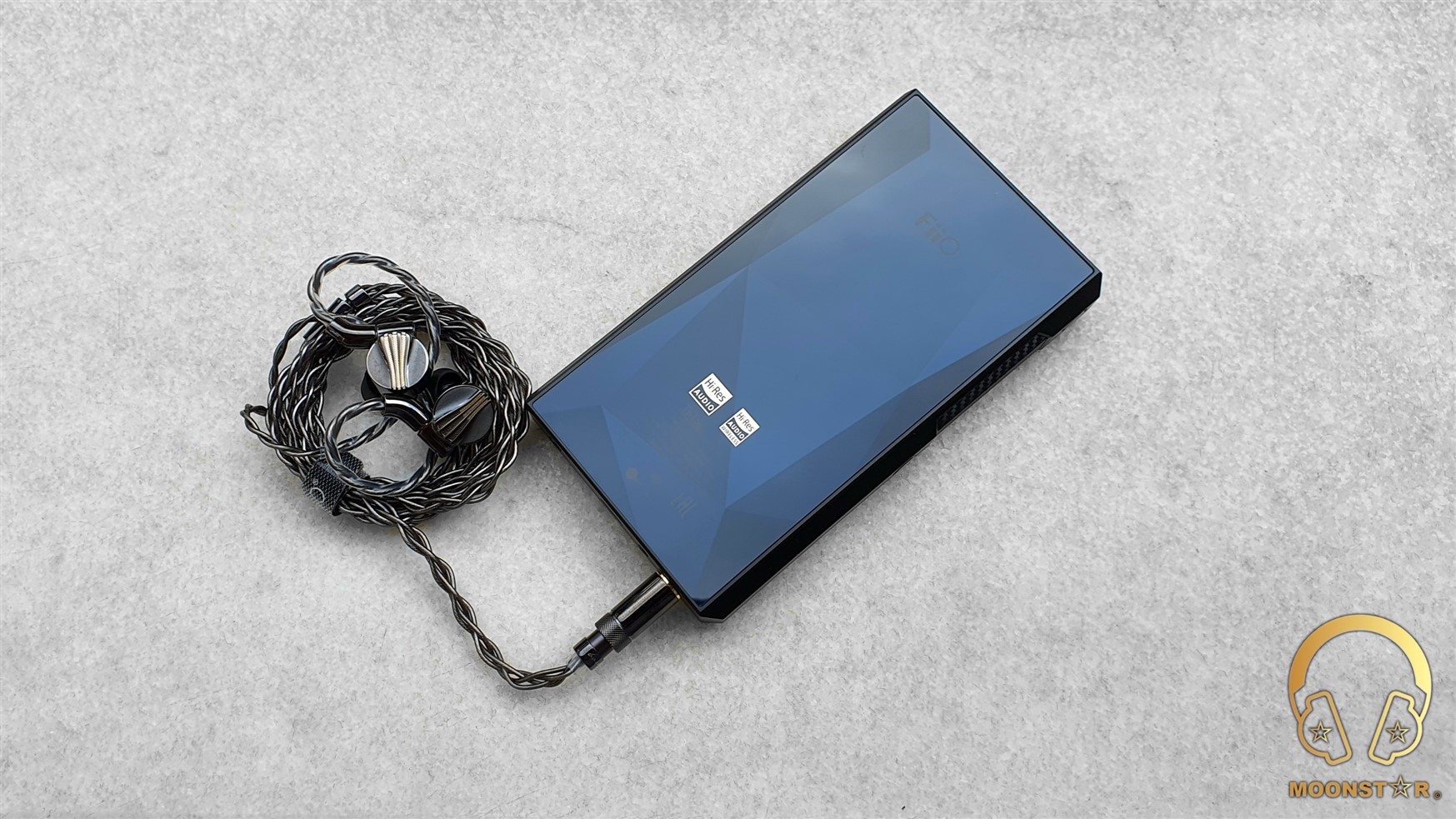
Albums & tracks used for this review:
- Adele – My Little Love (Spotify)
- Randy Crawford – On Day I Will Fly Away (Flac 16bit/44.1kHz)
- Hayley Westenra – Odyssey Album (Dezzer HiFi)
- Dionne Warwick – Walk On By (Flac 16bit/44.1kHz)
- Sarah McLachlan – Angel (Flac 24bit/48kHz)
- Sertap Erener – Aşk (Flac 16bit/44.1kHz)
- Edith Piaf – Non Je Ne Regrette Rien (Flac 16bit/44.1kHz)
- Diana Krall – So Wonderful (DSF)
- Aretha Franklin – I Say A Little Payer (Flac 24bit/96kHz)
- David Bowie – Heroes (Flac 24bit/192kHz)
- Elton John – Rocket Man ((Flac 24bit/96kHz)
- Barry White – Just The Way You Are (Flac 24bit/48kHz)
- Isaac Hayes – Walk On By (Flac 16bit/44.1kHz)
- Sting – Englishman in New York – (Flac 24bit/48kHz)
- Eric Clapton – Wonderful Tonight (Flac 24bit/96kHz)
- B.B. King – Riding With The King (Tidal Hi-Fi)
- Dave Gahan – Kingdom (Tidal Hi-Fi)
- U2 – Sunday Bloody Sunday (Flac 16bit/44.1kHz)
- Bro Safari, UFO! – Drama (Deezer HiFi)
- Armin Van Buuren – Vini Vici (Flac 16bit/44.1kHz)
- Really Slow Motion – Deadwood (Deezer HiFi)
- Jo Blankenburg – Meraki (Spotify)
- Lorde – Royal (Flac 24bit/48kHz)
- Toutant – Rebirth (Deezer HiFi)
- Portishead – It Could Be Sweet (Spotify)
- Charly Antolini – Duwadjuwandadu (Flac 24bit/192kHz)
- Michael Jackson – Billie Jean (Flac 24bit/192kHz)
- Gogo Penguin – Raven (Flac 24bit/192kHz)
- 2Cellos – With or Without You (Spotify)
- Ferit Odman – Look, Stop & Listen (Flac 24bit/192kHz)
- Chopin – Nocturn No. 20 In C-Sharp Minor (Flac 16bit/44.1kHz)
- Fazıl Say – Nazım Oratoryosu (Live) (Flac 16bit/44.1kHz)
- Vivaldi – Le QuarttroStagioni “The Four Season” (Deezer HiFi)
- Otto Liebert& Luna Negra – The River (Flac 24bit/192kHz)
- Lunatic Soul – The Passage (Flac 16bit/44.1kHz)
- Deftones – My Own Summer (Shove it) (Flac 16bit/44.1kHz)
- Metallica – Sad but True (Flac 24bit/96kHz)
- Opeth – Windowpane (Flac 16bit/44.1kHz)
- Megadeth – Sweating Bullets (Tidal Hi-Fi)
- Rush’s – Leave That Thing Alone (Flac 16bit/44.1kHz)
- Slayer – Angel of Death (Spotify)s
- Liquid Tension Experiment 2 – Acid Rain (Spotify)
- Yosi Horikawa – Bubbles (Spotify)
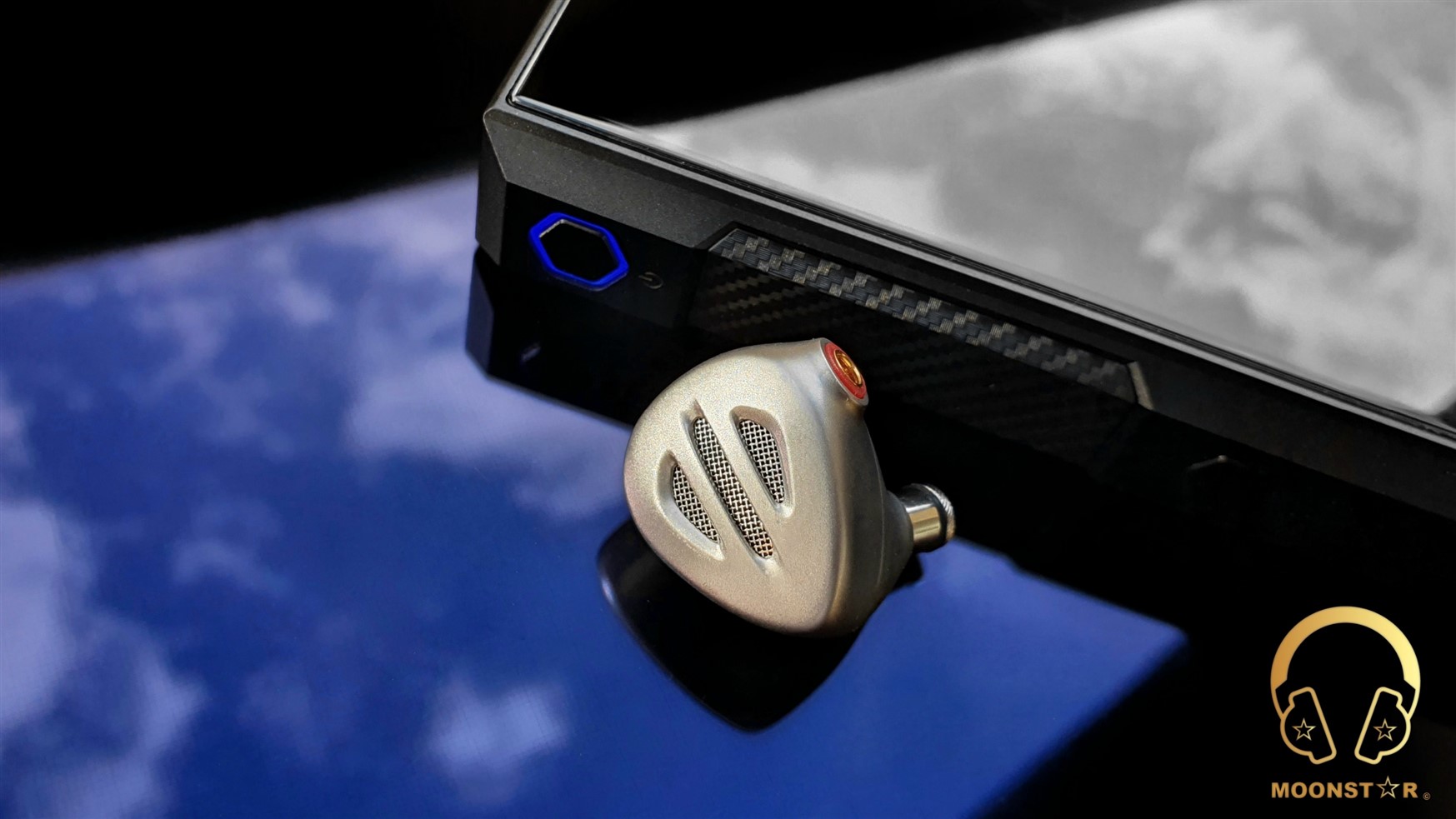
The Sound:
The FiiO M11 Plus shows a quite natural tonality with a hint of warmness that adds a nice sense of coloration to the overall presentation that is not overdone. It offers a pretty transparent and detailed sound profile with decent level of dynamics and resolution from the lows to up to the highs that show a good synergy with almost any earphone/headphone I have listen to it.
This review has been written after a burn-in period of about 150 hours. The sound impressions below are mainly based on my impressions over the with the 4.4mm Balanced Output of the device paired with IEM’s like the FiiO FH9 & FD7, Meze Rai Penta, Kinera URD and Moondrop Variations.
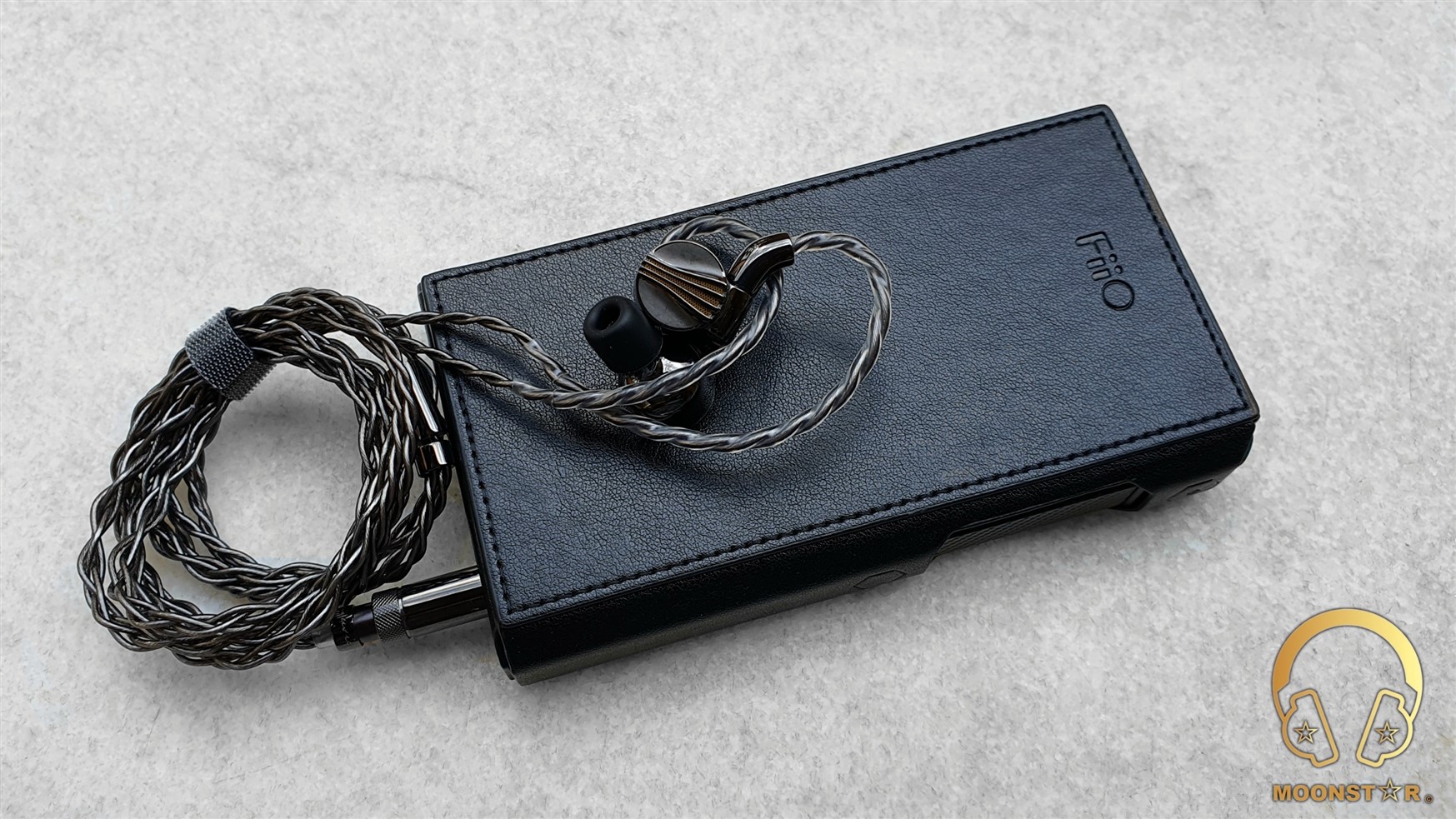
Bass:
The FiiO M11 Plus has a pretty neutral and dynamic subbass response that offers a good level of depth and emphasis when called upon. For example; songs such like Massive Attack’s “Angel”, Lorde’s “Royals” or Jo Blankenburg’s “Meraki” are show with an great sense of depth and rumble when I do pair the deice with In-Ear Monitors like the FiiO FH9 and FD7 or with Moondrop’s Variations. The subbass presentation stands out with its clean character and pretty fast decay and doesn’t show any remarkable negative conditions such like as muddiness or mixings.
The midbass region of the FiiO M11 Plus offers a fairly smooth, powerful and dynamic response. It is impactful yet controlled and doesn’t show any audible midbass hump or mixings when I do listen to midbass intensive tracks like Really Slow Motion “Deadwood” or Armin Van Buuren’s “Vini Vici”. The general midbass presentation of the M11 Plus can be described as transparent, clean and detailed, along with a decent sense of musicality that was especially audible when I have paired the device with IEM’s like the Kinera URD and Meze Audio Rai Penta.
Went it comes to the instrument presentation in this area, I can say that bass guitars, drums and trumpets are reproduced with an efficient grade of speed and intensity, while a contrabass is presented in a pretty crisp and detailed manner.
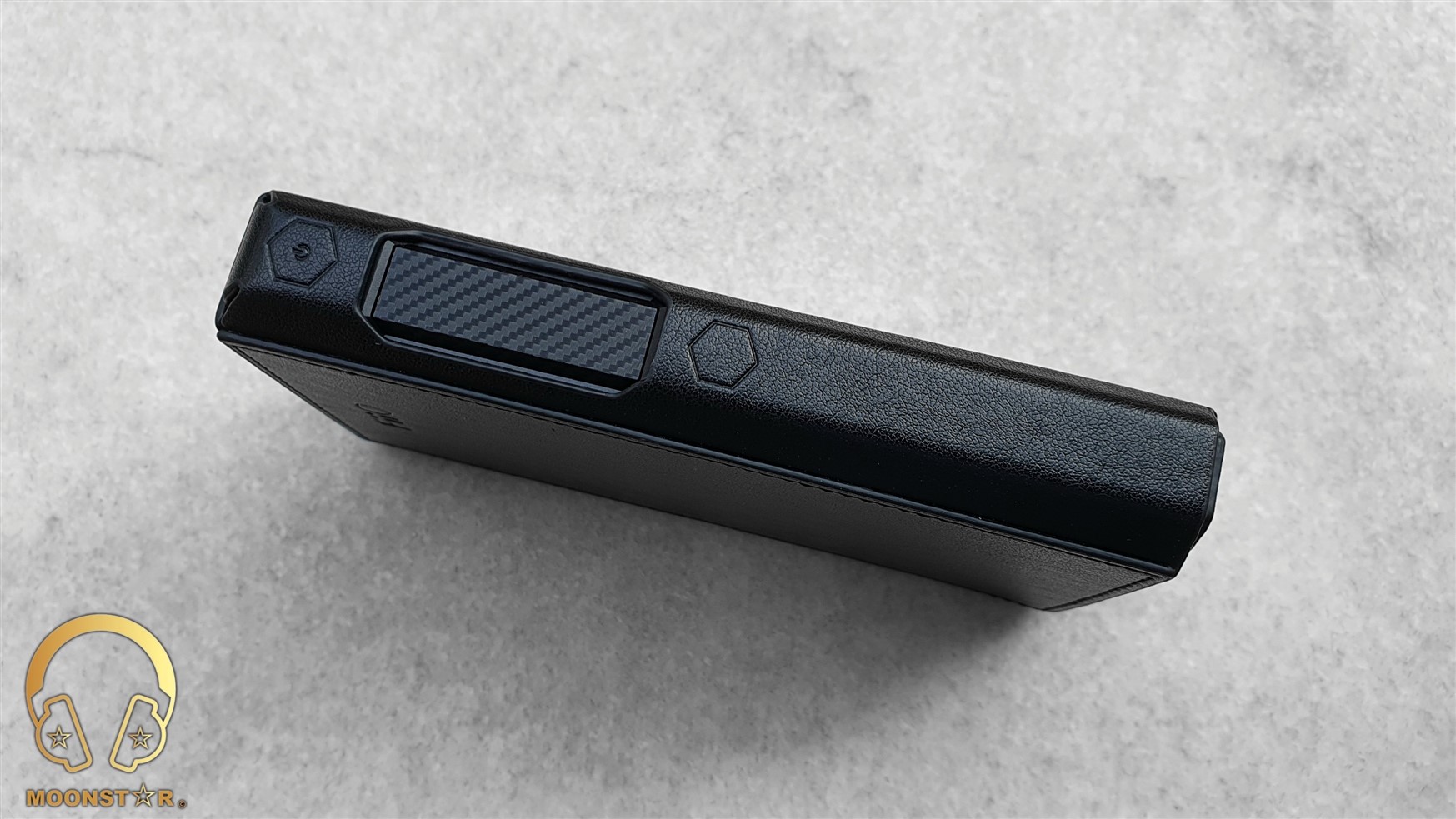
Midrange:
The FiiO M11 Plus shows a pretty transparent, airy and neutral midrange presentation with a slightly hint of warmness that comes from the lower midrange area that adds the overall presentation in this area a nice sense of coloration to cerate a more musical atmosphere.
Both female and male voices do sound pretty realistic and lively, while female voices are a bit more in the foreground due to the highly dynamic/energetic upper midrange character.
The lower midrange of the M11 Plus offers an efficient level of body and depth that is not overdone. Especially the clarity and resolution is remarkable, when I do listen to vocals or to instruments like cellos, violas or electro guitars. Male vocals from Barry White and Isaac Hayes to Sting and Eric Clapton are reproduced with a decent sense of depth and intensity.
The upper midrange is slightly more emphasized compared to the lower midrange register. This area offers a great sense of dynamism, an above average level resolution and extension, without to show any remarkable sibilance or over brightness when I do listen to female voices or to instruments such like clarinets, side flutes, pianos or violins. For example, female vocals such like Adel, Diana Krall, Edith Piaf or Sertap Erener are reproduced in a pretty clean, lively and detailed manner, especially when I pair it with In-Ear Monitors like the FiiO FH9, Moondrop Variatons or Meze Audio Rai Penta.
The overall midrange presentation of the FiiO M11 Plus can be described as highly versatile, natural and dynamic, which offers also a decent grade of transparency, airiness and resolution.
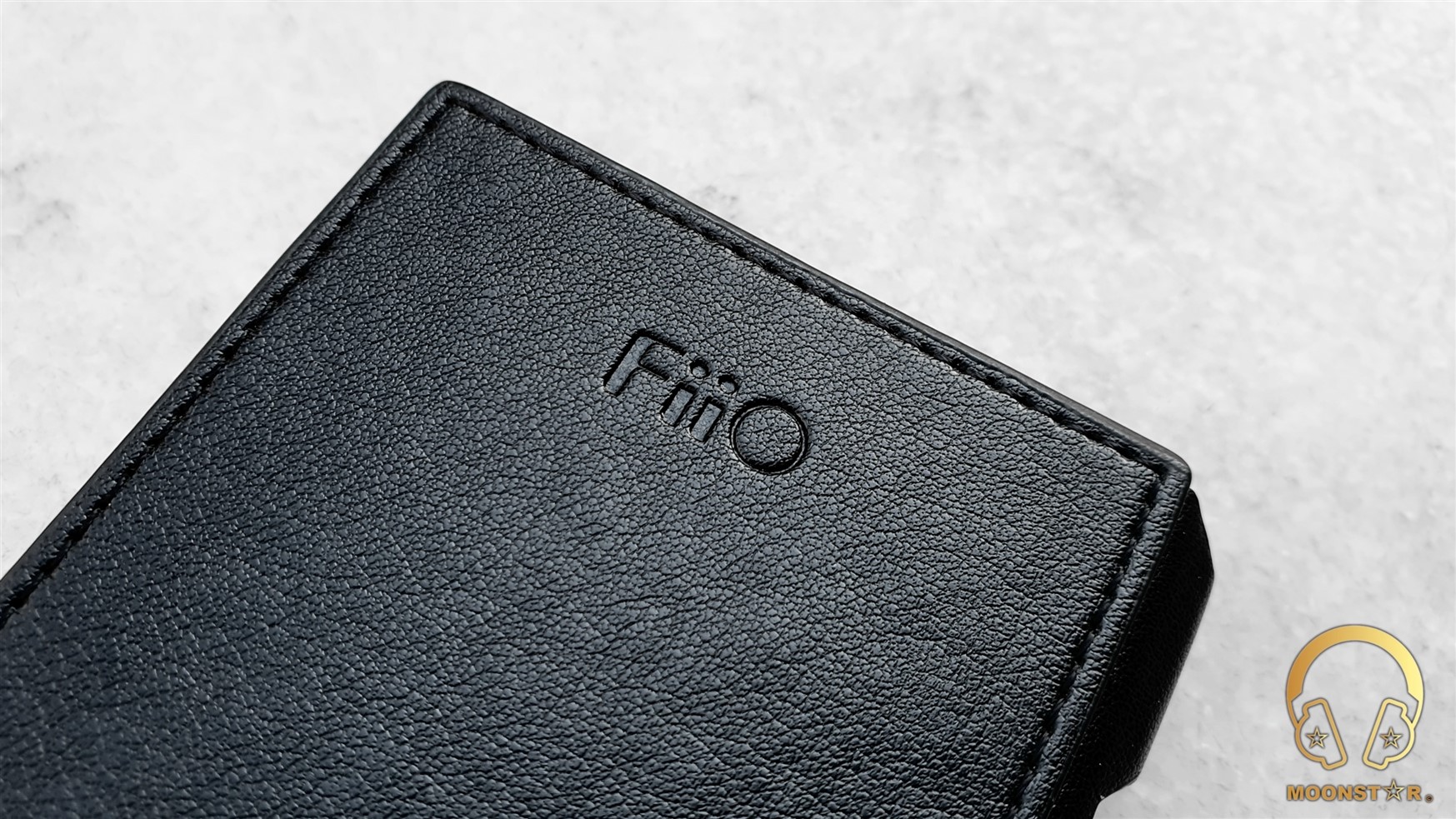
Treble:
The treble range of the FiiO M11 Plus shows a relative bright and energetic yet controlled response with good level of clarity and decent sense of airiness and sparkle. The general presentation of this region is quite detailed and crisp, while it is also pretty comfortable to listen to, especially hen I do pair it with IEM’s like the FiiO FD7, Kinera URD and Meze Rai Penta that do show a great synergy.
The transitions from the upper midrange that is pretty energetic, towards the lower treble region are in general controlled when instruments such like electro guitars are played with high level of distortion.
Instruments like Hi-hats do sound fairly pronounced and it was quite easy to count the hits, when I have listened to the FiiO FH9 or Moondrop Variations in complex passages. Crash and ride cymbals on the other hand are fast, pretty controlled and do are reproduced with a good grade extension. There is no interference when the piano is accelerating in Jazz songs; the hits are clear and pronounced.
The level of airiness in the treble range is pretty high, while the intensity decreases from the lower treble region towards the upper treble area in a fairly controlled manner. All in all, the overall treble performance of the FiiO M11 Plus fulfills my expatiations from a Digital Audio Player at this price level.

Soundstage & Imaging:
The FiiO M11 Plus offers a pretty realistic and expansive soundstage atmosphere, and a decent performance in terms of separation and positioning of instruments and vocals, thanks to the pretty wide and airy soundstage. The neutral air between the instruments and the clean/black background of the M11 Plus creates ideal conditions to listen to songs with lots of instruments and complex passages.
Some Comparisons:
FiiO M11 Plus versus FiiO M11 Pro:
The FiiO M11 Pro was one of my favorite DAP’s when it came out with its fast UI, good battery life, stabile connection and decent sound performance for its price. However, the new M11 Plus outperforms the M11 Pro in almost any area.
The M11 Plus offers a more mature sound profile that is more natural and versatile compared to those of the M11 Pro, which shows a higher grade of coloration. The M11 Plus is with no doubt superior in terms of technicality, overall resolution and naturalness.
The subbass region of the M11 Pro is slightly more pronounced, while it is missing the authority and clarity that the M11 Plus now offers. Both DAP’s are successful when it comes to the depth and impact of the midbass region. However, the M11 Plus sounds slightly natural and detailed in this area with better sense of layering and separation.
The FiiO M11 Pro has a slightly warmer midrange tonality that sounds also a bit more recessed in this area compared to the M11 Plus, which offers a better sense of transparency, airiness and dynamism, especially in the upper midrange register.
The lower midrange of the M11 Pro is lightly more highlighted but less transparent compared to the M11 Plus when I do listen to male vocals or to instruments like acoustic guitars or violas. The upper midrange of the M11 Plus is more pronounced, energetic and detail, which was pretty audible when I do listen to female voices or pianos, flutes or trumpets.
Both the FiiO M11 Pro and the M11 Plus do sound quite similar in the treble region. However, the M11 Plus has the upper hand in terms of micro detail retrieval, extension of instruments and general authority in this area, especially in the upper treble register.
The M11 Plus offers a more natural and out of the head soundstage atmosphere with better sense of airiness and separation. The soundstage of the M11 Plus shows a higher level of wideness, while the depth of both devices is fairly similar.
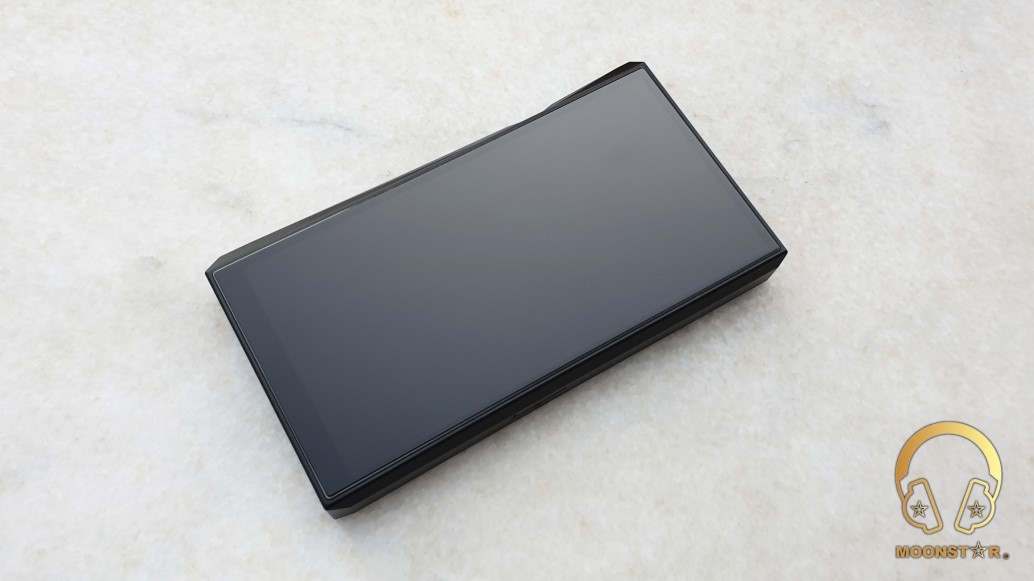
FiiO M11 Plus versus Sony WM1A (No Software Mode):
The Sony WM1A is another decent sounding Digital Audio Player that still very popular in the audiophile community especially after some thirty part software modes. It reflects Sony’s warmish and musical sound signature that is highly praised.
The WM1A has a warmer and smoother tonality and sounds in general a bit fuller compared too the M11 Plus that offers a more neutral tonality and energetic presentation towards the upper midrange region.
The subbass region of the WM1A is a tad deeper in response and shows a bit more rumble compared to the M11 Plu. The M11 Plus on the other hand stands out in terms of decay and clarity in this area, while both devices are pretty equal when it comes to the resolution. The midbass region of WM1A is slightly more highlighted and impactful, while it is missing the resolution and authority that the M11 Plus offers, when I do listen to strings like violas and bass guitars.
The midrange of the FiiO M11 Plus shows closer to neutral tonality and has a more transparent and airy presentation that shows a higher grade of dynamism towards the upper midrange register. The lower midrange of the Sony WM1A shows slightly more depth and body than those of the FiiO M11 Plus, which gives it the slightly edge when I do listen to male voices and instruments like trumpets, acoustic guitars or cellos. When it comes to the upper midrange, I can say that the M11 Plus is the DAP with the better level of dynamism, clarity and resolution, which was especially audible when I have listen to both female voices and instruments such like a piano, mandolin or side flute.
The treble range of both of devices shows an efficient level of clarity and resolution, while the FiiO M11 Plus has stands out in terms of overall airiness, extension and authority in this area especially when I do listen to soprano voices or to treble intensive instruments like cymbals, hi-hats or snare drums.
The soundstage of both devices is suitable for a precise placement and separation of instruments and vocals. The main difference is that the soundstage of the FiiO M11 Plus is slightly wider and a bit more airy compared to those of the Sony WM1A, while both are pretty similar in terms of soundstage depth.
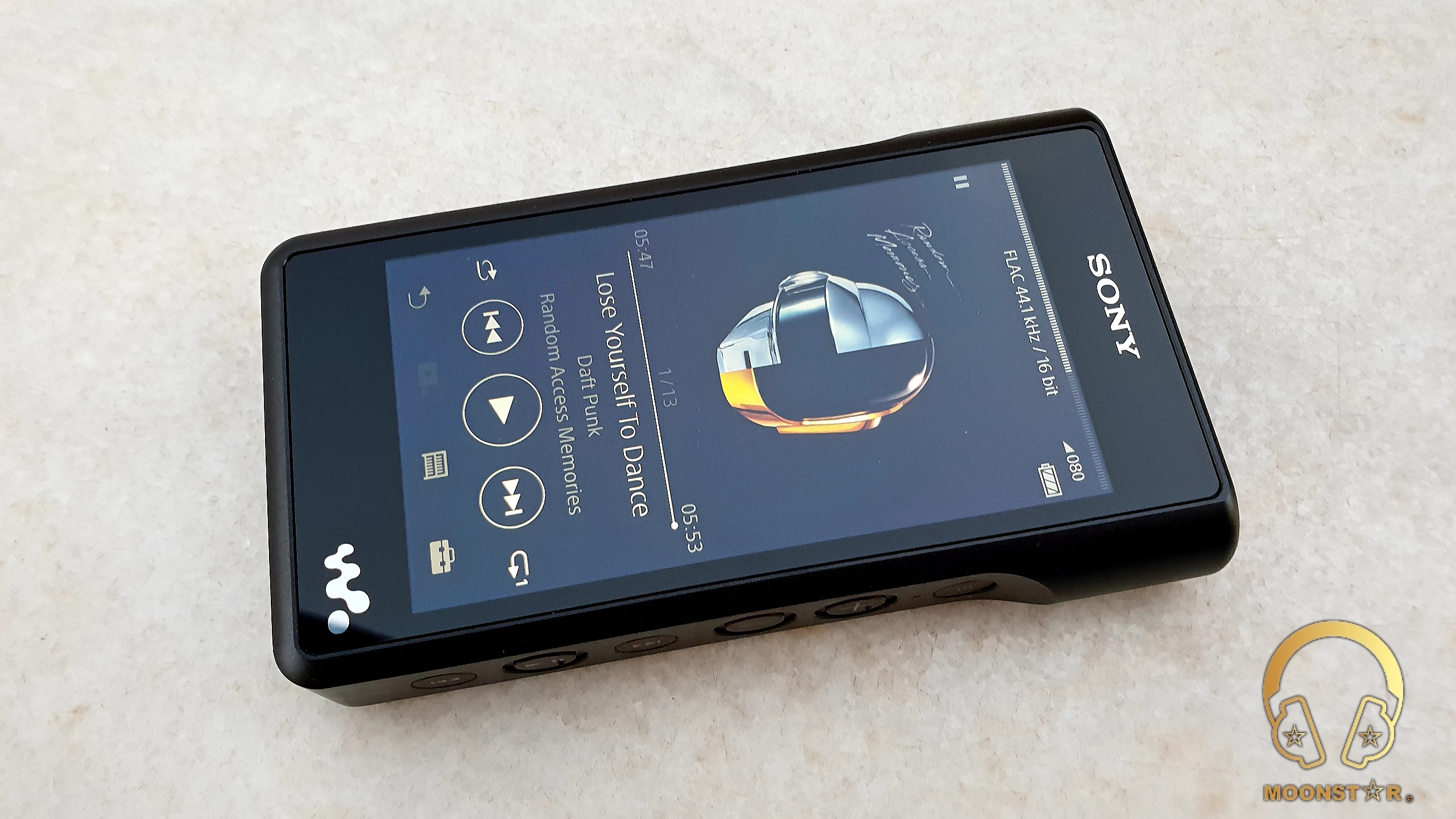
Conclusion:
The M11 Plus is definitely an upgrade over the highly successful M11 Pro that offers many improvements in terms of sound, software and hardware specs. What I really like about the sound of the M11 Plus is its versatile character that shows a decent sense of transparency, resolution and dynamics from the lows to up to the highs. Moreover, it has a very stylish industrial design and high build quality, while it offers tons of impressive features, such like a Dual ES9068AS DAC, a fast Snapdragon 660 Octa-Core SoC, a powerful THX AAA-78 Amp Module, an Intelligent Volume System, a gorgeous looking 5.5” bezel-less touch screen and almost any type of digital and analog in- & outputs, which should be in a modern device at this level.
Thank you for the Read!
View previous replies…
Moonstar
100+ Head-Fier
Pros: Excellent sound quality, Good price to performans ratio, Bulid like a Tank,
Changeable Op-Amp section, Balanced and Optical Out
Changeable Op-Amp section, Balanced and Optical Out
Cons: Battery life, Bulky design , Primitive GUI, No USB DAC function
The Yin Lu Mei D200+
A Pure Music Powerhorse!
First of all, I would like to thank Jim from NiceHCK for giving me a discount in return for this review.
Here is the purchase link for the Yin Lu Mei D200+ on NiceHCK Audio Store;
NiceHCK purchase link
So, let’s Start

1. Equipments used for this review:
DAP: Yin Lu Mei D200+, Fiio X5 MK3, Zishan Z2
IEM: LZ Big Dipper, Rose Cappuccino MK2, Oriolus Fosteni
EARBUD: Shozy BK, Rose Masya, NiceHCK Graphene, KS500
HEAPHONE: Audio-Technica ATH50M, Sennheiser HD650
2. Albums and track used for this review:
3. Inside the Box:
The device comes in a simple white box.
The box contains the following contents;

The device comes without any protection case or cable (coax/optical etc.). The good thing is the display comes with a pre-installed screen protector.
4. Design and Built quality:
In one word, a TANK!
The D200+ looks and feels like a tank. This device has a solid build quality with a mix of retro and industrial look.
The material used for D200+ is CNC engraved aluminum. This thing is well made no complains.
The design reminds me to the Hm901s, but the build quality of the D200+ is more robust.

The 2.2” TFT screen is located together with 5 physical buttons on the front of the device.
The screen has a resolution of 240*320 and the quality is average, in short nothing special!
Screen and buttons

The 5 physical buttons are dedicated for navigation. Up and down for next/previous song and navigate between de menus. The left button reacts as back button, the right for fast forward and the center button is for play/pause or confirmation.
The bottom with all connections

On the top of the device is the power button, the 3.5mm headphone out, the 3.5mm Line-out and the volume wheel. Quite interesting is the 3.5mm Headphone out, it can react as regular SE (Single Ended) and also as Balanced out that can be selected via a switch that is located at the bottom of the device.
The volume wheel is quite responsive and sensitive, it is also well protected, but the protection style is a con, because it is hard to navigate.
3.5mm SE/Balanced Out, power button, line out and volume wheel

On the bottom of the device is one Micro SD card slot, the Micro Usb port for charging, the optical out, a reset button and a switch to choose between SE and Balanced output for the dedicated 3.5mm Headphone Out that is located on the top o the device.
The backcover

On the back of the D200+ is a back plate that is hold by four screws. The crews can easily disassemble to reach inside the device. Devices like the Fiio X7, Ibasso DX200 and the Hifiman HM901s have swappable amp cards. The D200+ on the other hand reacts more like a DIY device. You have the option to change the op-amps when you remove this cover and put some other model. This is a quite funny thing for peoples who like to play with the sound and output power of such devices.
5. Specifications:
Model No.: D200+
DAC: AK4495SEQ
Op-Amp: 2 pcs x OPA2134P
SNR: 105dB
Voltage: ±10.5V
Outputs: 3.5mm SE + Balanced (one jack for both connection types), Optical out, 3.5mm Line Out
Battery: 3.7V 3800mah
Dimensions: 107*67*27mm
Weight: 260gr
6. Hardware:
The D200+ has no internal memory so you need to put a Micro SD card in to the device.
I have disassembled the device to look inside the device and I think it’s well made. The welding points on the PCB are quite good and it doesn’t look like cheap manufacturing.
a) DAC:
The D200+ has an AKM4495SEQ DAC under the hood, which is a brand of Akai Kasei Microdevices Corporation.
The AKM449x series is the flagship line of this company. It has found its way to many devices, especially in the last two years. Best examples are inexpensive devices like the Zishan Z2 (AKM4490), up to TOTL DAP’s like Astell&Kern’s AK380 (AKM4490).
The AKM4495SEQ is the best DAC right after the AKM4497 that can be found inside the D200+ Limited Edition that is in a stylish Red color, but sold only in China over Taobao.
The D200+ has no USB DAC function at the moment.
The Heart of the D200+

b) AMP:
The D200+ has two Burr-Brown OPA2134P op-amps a brand of TI Texas Instruments under the hood. They are quite powerful and have low noise reproduction. I didn’t notice any noise or interference, while using some of my sensitive IEM’s due this review.
One of the main reasons I bought the D200+ is, that I love to use Class A amplifications. The second reason is the ability to change the op-amps. You have the option to change the op-amps and put any type of 8pin op-amps to chance the sound characteristics and play with the output voltage = output power.
As I said before, the D200+ is a powerful device but it can handle both sensitive IEM’s and power hungry Headphones. There is no his or background noises while using some Sensitive IEM’s like the LZ Big Dipper, Rose Cappuccino MK2 or Oriolus Fosteni.
A closer look inside the D200+


7. Software and Interface:
The D200+ has a very simple Linux based in-house software. The GUI is very simple, but it is also easy to use. The only thing you can see on the screen while playing music is the Hi-Res Logo and the animated EQ bars, yeah quite simple and primitive
This device is for people who want a pure music experience. You have no online streaming options like other devices with Android operating system like the Fiio X5 MK3, Ibasso DX200, Sony ZX1 ZX2 etc. This is a pure music powerhorse!
GUI of the D200+

The device has no EQ option, but has some of the AKM DAC filters you can select over the setup menu.
The software of the D200+ plus is very fast, it took only 30 second to read all my music files that are on a 128Gb Mico Sd card.
Firmware updates are also possible, the only thing you need is to download a zip file and unzip it to your Mico Sd card.
8. Battery Life:
The main disadvantage of a Class A powered DAP is the battery life. The battery inside the D200+ has 3 hour of juice if you listen DSD (.dff and .dsf) files, 3.5 Hours for regular Flac’s and 4 Hours when you listen to 320 Kbps MP3 files. That sounds quite bad, but this is the side effect of a power hungry Class A powered device.
9. Audio Formats Supported:
APE, FLAC,WAV, WMA, AAC, ALAC, AIFF, OGG, MP3, 32bit/768 kHz Bit for Bit. Native DSD Support (DFF, DSF, DXD) 32bit/768 kHz
D200+, Lotoo Paw Gold with and without case and The LZ Big Dipper

10. The Sound:
PS: I have burn-in the device for approx. 200 hours before I wrote this review!
The first thing you will notice is the power and authority of this device. The D200+ can handle any type of genre and push the phones to its limits. This Chinese company did a great job with choosing the AKM4495 instead a Sabre DAC. It is on the warmer side of the sound spectrum but not too warm!
Bass:
D200+ has a full bodied sound tuning. The Bass region is well defined and goes never out of control.
It is always there but doesn’t bleed in to the mids and to the highs. The warmth of the bass on this device gives the listener an analog like sound with bold notes. But keep in mind; this is not the type of analog sound that is too overdone. It has the right doze for my taste and I think that many people that are familiar with devices that uses AKM DAC’s will love it.
The subbass goes low and gives a good rumble. You can feel the power of this device in any song. The Rose Cappuccino MK2 is a good example to hear how well controlled and deep can go the bass with an IEM on this device.
BTW, the midbass have a nice impact that never goes out of control and what I love of this device is the authority, it is always there and keeps every sound spectrum in control.
The best matches are IEM’s that have not a big midbass hump and I think that neutral phones will benefit most from this sound characteristic. I loved how the D200+ handeled hard to drive earbud like the KS500 and in opposite the easy to drive Rose Masya.
If I compared the D200+ with the Fiio X5 MK3 that has the same AKM449X series DAC chip, I can easily say that the D200+ has better control and resolution in both sub- and midbass department. The X5 MK3 holds well against the D200+ but losses the control when it comes to speed.
D200+ and Rose Cappuccino MK2

Mid:
The midrange of this device is extremely revealing and clean sounding and it’s also engaging and never painful or annoying. I love its presentation, especially in acoustic tracks, because it sounds so emotional and analog like.
The warmth that comes from the midbass gives the vocal and guitar strings a touch of body but in a good way. There is also no stress in the upper mids, that is a big welcome and a great well done!
The best parings with the D200+ were the Rose Masya and the Oriolus Fosteni, both male and female vocals sounded really good and emotional.
There is also enough space between the instruments so that you can hear each instrument flawlessly.
It is really hard to find a lack of this device because the resolution of the mids is the best I ever heard in this price range and I think that the D200+ is a hard to beat device due its effortless presentation.
If I compare it directly to the new Fiio X5 MK3, I can easily say that Fiio did a great job by choosing the AKM4490 chip and I think also that the X5 MK3 is a milestone for this company.
But why I say that? Because, I think that the X5 MK3 is the first device that doesn’t sound digital or harsh in the midrange. But again, the D200+ has the upper hand when it comes to micro details.
D200+ & Zishan Z2 and the Fiio X5 MK3

Highs:
The detail level of the D200+ is great and I didn’t hear any stress and sibilance in the highs. What I find interesting is that the top of the highs is rounded to prevent harshness but it is well tuned, so that you don’t loose too much of detail.
The D200+ has one of the most beautiful and sparkly upper areas in a portable player that I've ever heard, it is really a joke to hear such a sound form a device in this price range.
For example, the Oriolus Fosteni is a little bit harsh in the upper treble region, but the D200+ has such a good authority over the song that it magically tamed this IEM.
Again, this device is not the ultimate detail monster, but it has such a good performance for its price point that is hard to complain. It can easily outperform many devices that cost twice as much!
If we compare it directly against the Fiio X5 MK3, I can hear the same level of detail. The main difference between the D200+ and the X5 MK3 is the quantity. The X5 MK3 has slightly more treble presence. Quality wise both DAP’s sounding great.
D200+ and NiceHCK Graphen Earbud

Soundstage:
The soundstage of the D200+ is not the largest when compared to devices like Ibasso DX200 or the Hifiman HM901 that I have used before. But it is quite good especially for its price.
The imaging is accurate and all the instruments are having a nice separation with enough air.
The soundstage is wider then its deepness and the right and left channel separation is also quit good for its price point!
Compared to the Fiio X5 MK3 the D200+ has the same level of wideness, but the depth of the X5 is a little bit more, so that the X5 has a airy presentation.
D200+ & Rose Masya vs Zishan Z2 & NiceHCK Graphen

11. Conclusion:
The D200+ is for music lovers that want a pure music experience, lot of power and a bit DIY for a great price!
The Ultimate DAP collection on a small Audiophile Meeting in Istanbul

This review was originally posted on "Moonstar Reviews" :
https://moonstarreviews.net
A Pure Music Powerhorse!
First of all, I would like to thank Jim from NiceHCK for giving me a discount in return for this review.
Here is the purchase link for the Yin Lu Mei D200+ on NiceHCK Audio Store;
NiceHCK purchase link
So, let’s Start


1. Equipments used for this review:
DAP: Yin Lu Mei D200+, Fiio X5 MK3, Zishan Z2
IEM: LZ Big Dipper, Rose Cappuccino MK2, Oriolus Fosteni
EARBUD: Shozy BK, Rose Masya, NiceHCK Graphene, KS500
HEAPHONE: Audio-Technica ATH50M, Sennheiser HD650
2. Albums and track used for this review:
- Michael Jackson - Bad Album (Flac 24bit/96Hz)
- Michael Jackson - Billie Jean (DSF)
- Diana Krall - So Wonderful (DSF)
- Dr. Chesky’s Binaural Album (Flac 24bit/192Hz)
- Otto Liebert & Luna Negra - The River (DSF)
- Metallica - The Black Album (Flac 24bit/96Hz)
- Mile Davis - So What (DSF)
- Daft Punk - Random Access Memories Album (Flac 24bit/192Hz)
- Kraddy - Be A Light Album (MP3 320Kbps)
- Stevie Wonder - Rocket Love (DSF)
3. Inside the Box:
The device comes in a simple white box.
The box contains the following contents;
- Micro USB cable
- AC Adaptor
- USB to Micro SD converter
- Some manuals in Chinese language

The device comes without any protection case or cable (coax/optical etc.). The good thing is the display comes with a pre-installed screen protector.
4. Design and Built quality:
In one word, a TANK!
The D200+ looks and feels like a tank. This device has a solid build quality with a mix of retro and industrial look.
The material used for D200+ is CNC engraved aluminum. This thing is well made no complains.
The design reminds me to the Hm901s, but the build quality of the D200+ is more robust.

The 2.2” TFT screen is located together with 5 physical buttons on the front of the device.
The screen has a resolution of 240*320 and the quality is average, in short nothing special!
Screen and buttons

The 5 physical buttons are dedicated for navigation. Up and down for next/previous song and navigate between de menus. The left button reacts as back button, the right for fast forward and the center button is for play/pause or confirmation.
The bottom with all connections

On the top of the device is the power button, the 3.5mm headphone out, the 3.5mm Line-out and the volume wheel. Quite interesting is the 3.5mm Headphone out, it can react as regular SE (Single Ended) and also as Balanced out that can be selected via a switch that is located at the bottom of the device.
The volume wheel is quite responsive and sensitive, it is also well protected, but the protection style is a con, because it is hard to navigate.
3.5mm SE/Balanced Out, power button, line out and volume wheel

On the bottom of the device is one Micro SD card slot, the Micro Usb port for charging, the optical out, a reset button and a switch to choose between SE and Balanced output for the dedicated 3.5mm Headphone Out that is located on the top o the device.
The backcover

On the back of the D200+ is a back plate that is hold by four screws. The crews can easily disassemble to reach inside the device. Devices like the Fiio X7, Ibasso DX200 and the Hifiman HM901s have swappable amp cards. The D200+ on the other hand reacts more like a DIY device. You have the option to change the op-amps when you remove this cover and put some other model. This is a quite funny thing for peoples who like to play with the sound and output power of such devices.
5. Specifications:
Model No.: D200+
DAC: AK4495SEQ
Op-Amp: 2 pcs x OPA2134P
SNR: 105dB
Voltage: ±10.5V
Outputs: 3.5mm SE + Balanced (one jack for both connection types), Optical out, 3.5mm Line Out
Battery: 3.7V 3800mah
Dimensions: 107*67*27mm
Weight: 260gr
6. Hardware:
The D200+ has no internal memory so you need to put a Micro SD card in to the device.
I have disassembled the device to look inside the device and I think it’s well made. The welding points on the PCB are quite good and it doesn’t look like cheap manufacturing.
a) DAC:
The D200+ has an AKM4495SEQ DAC under the hood, which is a brand of Akai Kasei Microdevices Corporation.
The AKM449x series is the flagship line of this company. It has found its way to many devices, especially in the last two years. Best examples are inexpensive devices like the Zishan Z2 (AKM4490), up to TOTL DAP’s like Astell&Kern’s AK380 (AKM4490).
The AKM4495SEQ is the best DAC right after the AKM4497 that can be found inside the D200+ Limited Edition that is in a stylish Red color, but sold only in China over Taobao.
The D200+ has no USB DAC function at the moment.
The Heart of the D200+

b) AMP:
The D200+ has two Burr-Brown OPA2134P op-amps a brand of TI Texas Instruments under the hood. They are quite powerful and have low noise reproduction. I didn’t notice any noise or interference, while using some of my sensitive IEM’s due this review.
One of the main reasons I bought the D200+ is, that I love to use Class A amplifications. The second reason is the ability to change the op-amps. You have the option to change the op-amps and put any type of 8pin op-amps to chance the sound characteristics and play with the output voltage = output power.
As I said before, the D200+ is a powerful device but it can handle both sensitive IEM’s and power hungry Headphones. There is no his or background noises while using some Sensitive IEM’s like the LZ Big Dipper, Rose Cappuccino MK2 or Oriolus Fosteni.
A closer look inside the D200+


7. Software and Interface:
The D200+ has a very simple Linux based in-house software. The GUI is very simple, but it is also easy to use. The only thing you can see on the screen while playing music is the Hi-Res Logo and the animated EQ bars, yeah quite simple and primitive
This device is for people who want a pure music experience. You have no online streaming options like other devices with Android operating system like the Fiio X5 MK3, Ibasso DX200, Sony ZX1 ZX2 etc. This is a pure music powerhorse!
GUI of the D200+

The device has no EQ option, but has some of the AKM DAC filters you can select over the setup menu.
The software of the D200+ plus is very fast, it took only 30 second to read all my music files that are on a 128Gb Mico Sd card.
Firmware updates are also possible, the only thing you need is to download a zip file and unzip it to your Mico Sd card.
8. Battery Life:
The main disadvantage of a Class A powered DAP is the battery life. The battery inside the D200+ has 3 hour of juice if you listen DSD (.dff and .dsf) files, 3.5 Hours for regular Flac’s and 4 Hours when you listen to 320 Kbps MP3 files. That sounds quite bad, but this is the side effect of a power hungry Class A powered device.
9. Audio Formats Supported:
APE, FLAC,WAV, WMA, AAC, ALAC, AIFF, OGG, MP3, 32bit/768 kHz Bit for Bit. Native DSD Support (DFF, DSF, DXD) 32bit/768 kHz
D200+, Lotoo Paw Gold with and without case and The LZ Big Dipper

10. The Sound:
PS: I have burn-in the device for approx. 200 hours before I wrote this review!
The first thing you will notice is the power and authority of this device. The D200+ can handle any type of genre and push the phones to its limits. This Chinese company did a great job with choosing the AKM4495 instead a Sabre DAC. It is on the warmer side of the sound spectrum but not too warm!
Bass:
D200+ has a full bodied sound tuning. The Bass region is well defined and goes never out of control.
It is always there but doesn’t bleed in to the mids and to the highs. The warmth of the bass on this device gives the listener an analog like sound with bold notes. But keep in mind; this is not the type of analog sound that is too overdone. It has the right doze for my taste and I think that many people that are familiar with devices that uses AKM DAC’s will love it.
The subbass goes low and gives a good rumble. You can feel the power of this device in any song. The Rose Cappuccino MK2 is a good example to hear how well controlled and deep can go the bass with an IEM on this device.
BTW, the midbass have a nice impact that never goes out of control and what I love of this device is the authority, it is always there and keeps every sound spectrum in control.
The best matches are IEM’s that have not a big midbass hump and I think that neutral phones will benefit most from this sound characteristic. I loved how the D200+ handeled hard to drive earbud like the KS500 and in opposite the easy to drive Rose Masya.
If I compared the D200+ with the Fiio X5 MK3 that has the same AKM449X series DAC chip, I can easily say that the D200+ has better control and resolution in both sub- and midbass department. The X5 MK3 holds well against the D200+ but losses the control when it comes to speed.
D200+ and Rose Cappuccino MK2

Mid:
The midrange of this device is extremely revealing and clean sounding and it’s also engaging and never painful or annoying. I love its presentation, especially in acoustic tracks, because it sounds so emotional and analog like.
The warmth that comes from the midbass gives the vocal and guitar strings a touch of body but in a good way. There is also no stress in the upper mids, that is a big welcome and a great well done!
The best parings with the D200+ were the Rose Masya and the Oriolus Fosteni, both male and female vocals sounded really good and emotional.
There is also enough space between the instruments so that you can hear each instrument flawlessly.
It is really hard to find a lack of this device because the resolution of the mids is the best I ever heard in this price range and I think that the D200+ is a hard to beat device due its effortless presentation.
If I compare it directly to the new Fiio X5 MK3, I can easily say that Fiio did a great job by choosing the AKM4490 chip and I think also that the X5 MK3 is a milestone for this company.
But why I say that? Because, I think that the X5 MK3 is the first device that doesn’t sound digital or harsh in the midrange. But again, the D200+ has the upper hand when it comes to micro details.
D200+ & Zishan Z2 and the Fiio X5 MK3

Highs:
The detail level of the D200+ is great and I didn’t hear any stress and sibilance in the highs. What I find interesting is that the top of the highs is rounded to prevent harshness but it is well tuned, so that you don’t loose too much of detail.
The D200+ has one of the most beautiful and sparkly upper areas in a portable player that I've ever heard, it is really a joke to hear such a sound form a device in this price range.
For example, the Oriolus Fosteni is a little bit harsh in the upper treble region, but the D200+ has such a good authority over the song that it magically tamed this IEM.
Again, this device is not the ultimate detail monster, but it has such a good performance for its price point that is hard to complain. It can easily outperform many devices that cost twice as much!
If we compare it directly against the Fiio X5 MK3, I can hear the same level of detail. The main difference between the D200+ and the X5 MK3 is the quantity. The X5 MK3 has slightly more treble presence. Quality wise both DAP’s sounding great.
D200+ and NiceHCK Graphen Earbud

Soundstage:
The soundstage of the D200+ is not the largest when compared to devices like Ibasso DX200 or the Hifiman HM901 that I have used before. But it is quite good especially for its price.
The imaging is accurate and all the instruments are having a nice separation with enough air.
The soundstage is wider then its deepness and the right and left channel separation is also quit good for its price point!
Compared to the Fiio X5 MK3 the D200+ has the same level of wideness, but the depth of the X5 is a little bit more, so that the X5 has a airy presentation.
D200+ & Rose Masya vs Zishan Z2 & NiceHCK Graphen

11. Conclusion:
The D200+ is for music lovers that want a pure music experience, lot of power and a bit DIY for a great price!
The Ultimate DAP collection on a small Audiophile Meeting in Istanbul

This review was originally posted on "Moonstar Reviews" :
https://moonstarreviews.net
Moonstar
100+ Head-Fier
Pros: + Great look and fit
+ Customizable tuning
+ Non fatiguing sound tuning with lots of detail
+ Well controlled bass
+ Customizable tuning
+ Non fatiguing sound tuning with lots of detail
+ Well controlled bass
Cons: Upper treble sounds harsh with bad recorded tracks
Rose Cappuccino MK2;
The Beauty and the Beast!
First of all, I would like to thank PenonAudio for giving me a discount in return for this review.
Purchase Link: http://penonaudio.com/Rose-Cappuccino-MKII
Introduction:
The company Rose Technology is founded by University students in China and is specialized in IEM and Earbuds.
The Rose Cappuccino MKII is the Secondary flagship of the Company.
The motto of the company Rose is “Create difference”.

The main differences of First Cappuccino and MK2:
The first released version of the Cappuccino (aka MKI) had some minor issues with its 2 pin configuration.
After these issues, the company decided to use the new MMCX interface instead of the old 2 pin configuration for the new batch’s of the first Cappuccino and now for the new released MKII.
The biggest differences between the old Cappuccino and the new MK2 are the bass switch option.
The MK2 has a bass switch that lets you configure the bass amount.
The second improvement over the old Cappuccino is the re-designed and improved housing that gives a better wearing experience.
The third and last difference is the new Knowles 31736 balanced armature driver, which gives the MK2 a less distorted high frequency range.
Package and Accessories:
I think the company DUNU is the champion when it comes to accessories in the package.
The company Rose in the other hand gives us a small but useful accessory box.
So, what’s inside the box?
inside the box

The provided Hard case is small and handy, it looks like a pelican case but I don’t think that it is water resistant.
The eartips inside the box are soft and comfortable, but can’t compete with Sony and Spinfit silicone tips.
The soft case is made of a silk like material that feels good in your hands.
BTW, it is nice to see a 3.5mm to 6.5mm female adaptor inside the box.
About the cable;
The cable that came in the box with my Rose Cappuccino MK2 is made of a soft material. It feels good in your hand and has no microphonic effects. The connection type is MMCX.
Specification:
The Rose Cappuccino MK2 has a 2BA (Knowles type 31736 ) + 2 DD (Panasonic 13.5mm) driver configuration.
As mentioned before, the MK2 has two switch options;
OFF is suitable for genres like pop, electronic, RnB etc. and the switch position ON is for genres like classical and jazz music’s with focus of instrument presentation.
The On / Off switch

Here are some technical specifications:
Design and Build Quality:
Oh, this gear is a beauty!
The MK2 that I have ordered and shown in my pictures below is called Van Gogh Blue.
This color pattern is inspired by the well known painting Starry Night by Vincent Van Gogh.
Starry Night by Vincent Van Gogh

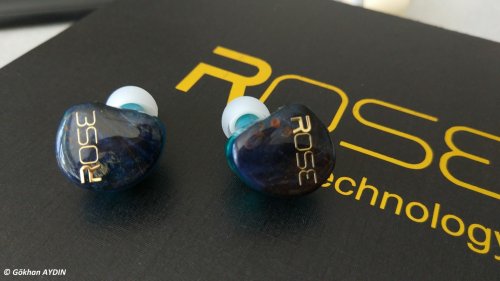
The MK2’s shell is built with a 3D painting technology and is made of plastic. The build quality of the unit is well done.
The 13.5mm diameter Dual Dynamic Driver made by Panasonic occupies the largest area in MK2’s shell. The two Knowles type 31736 Balanced Armature drivers are really small compared next to the Panasonic DD drivers. The BA drivers are located inside the Nozzle.
The BA drivers are located inside the Nozzle
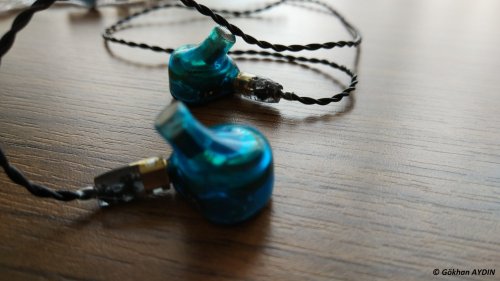
Fit and Isolation:
The MK2 is a relative small monitor for a 2BA + 2DD configuration that sits very comfortable in my ears. I think that the MK2 is one of the most comfortable Universal IEM’s that I have used to date.
The Earsonics Velvet and the Ibasso IT03 are good examples for comfort. But the MK2 is a step above this two.
The worst comfort I ever had with a UIEM was the InEar Stage Diver (not the S).
The isolation of the MK2 is better than my old Velvet and IT03, but the real champion in this category is the Stagediver SD3.
One example of the fit on my ear

Tracks and sources that I have use for this review:
a) Tracks:
b) Sources:
IFI Micro IDSD, Shanling M2S, Walnut V2s, Ipad Air 2, Rose Cappuccino MKII
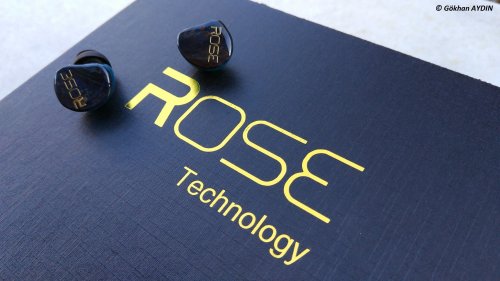
The Sound:
Note: Please note, I wrote this review after a burn-in process of 150 hours.
First of all, I think that the MK2 has a relative good price to performance ratio when compared to some higher priced IEM with the same configuration.
The MK2 is my first IEM that has a slightly L-shaped sound signature. The Bass is the most present frequency, followed form the highs and the mids. But don’t misunderstand me, the bass of the MK2 didn’t ruin the sound of this IEM and is in no way overpowering the sound when the switch is in reference mod.
Note: Please note, I wrote this review after a burn-in process of 150 hours.
Tonality:
The MK2 is not a cold or too warm sounding IEM. When the bass switch is on reference mod, the MK2 sound fairly natural. It has a small amount of warmth that is coming form the bass especially form the midbass section.
The Bass:
The MK2 has two dynamic drivers inside the shell. Only one of the dynamic drivers is active while the switch is in reference, so in on position.
In off position, the bass of the MK2 is well present but not overpowering. It is tight and has great dynamics, which gives a well bodied music presentation.
The subbass on the other hand gives a good rumble especial in pop and electronic music genres. The midbass kick is relative quick and responsive.
The best part of the bass presentation is, that it is not beading in to the mid section that would otherwise ruin the vocals and instrument presentation.
So, where is now the Beast?
Switching to bass mod:
The MK2 has an enormous bass kick capability when we switch it to the bass mod.
It has a deep and punchy “bass ability” that is also physical noticeable J
If you are a Basshead, the MK2 with its “bass mod” will provide you more than enough bass kick and rumble without ruining the whole music and sounding hollow.
The MK2 reminds me to my old Inear Stagediver SD3, but only quantity wise. When it comes to quality, the MK2 has the upper hand in every respect.
It is more controlled, detailed and has a better layering compared to the SD3 with is BA configuration.
BTW, the Bass quantity of the MK2 is not of my taste when the “bass mod” is on
“ Oh my God, I thing I am ageing ”.
”.
The Mid (Vocal, Instruments etc.):
The vocal presentation of the MK2 is relative neutral. The vocals are by no way recessed, due the L-shaped sound signature.
Both, female and male vocals sound realistic and have enough emotion to bring you in the middle of the stage. It is well defined and has a good layering with great detail that is welcome in this price range.
Nice to hear, that the midbass are not bleeding in to the mids, so that the vocals sound clean and not hollow.
Drums, guitars and flutes are sounding not to colored as I have expected form a dynamic + balanced driver combination. The instrument separation is above its price range.
Both vocals and instruments have a relative small amount of thickness when compared to the natural sound. This is not a big deal because it gives the mid presentation a slightly warmer presentation that is welcome for me.
The only negative side of the mid section is the upper mid presentation. There is a small amount of stress that is sometimes present, especially in bad recorded tracks like Metallica’s - Sad but True.
BTW, I think, that the MK2 is not only suitable for genres like pop, rock, electronic, RnB etc. It is also capable to make more critical listening with genres like classic and jazz music (for example Amber Rubarth).
Switching to bass mod:
If you listen to genres like classic, rock or metal music, I wouldn’t advise you to switch to the bass mod. The bass presence is not suitable for genres with to many instruments.
This mode is made more for electronic music fans that won’t compromise details in the music without loosing deep bass J and the MK2 does its job well!
The Highs:
One of the strong sides of the MK2 is the treble region. The overall treble presentation and detail level is surprisingly good for this price point.
The MK2 benefits from its L-shaped sound signature and doesn’t overpowering the rest of the frequency cart.
Complex passages with instruments like “cymbals” in my new favorite track “Meshuggah –Nostrum” sound well controlled and with good separation.
Male and female voices sounding vivid and clear and there is lot of detail.
One negative aspect of the MK2 is the upper treble. Some records with female voices sounds a bit harsh, especially tracks of Celine Dion (my favorite one is “The Power of Love”) could be more controlled.
I don’t know the specification of the stock cable, but a good upgrade cable could solve this problem.
The Soundstage:
The MK2 has a relative forward vocal presentation and there is also a good amount of air around each instrument with good stereo separation.
The soundstage is not gigantic like these of the Sennheiser ie800 or not expansive and airy like these of the Earsonics Velvet. But this two examples should be to unfair due the higher price tag.
The soundstage is a bit wider and deeper than the Ibasso IT03 and quite bigger and much airier than those of the Inear Stagediver SD3. The SD3 was a really claustrophobic IEM in this aspect!
Conclusion:
Rose Technology is a relative young company that has released many different earphones for all types of consumers. Rose Cappuccino MK2 is a good example how good Chi-Fi gears can sound.
The best description for the Rose Cappuccino MK2 is that it is a “good all-rounder”.
A beauty and a Beast!
Thank you for reading my second review, oh and sorry for my bad English
The Rose Cappuccino MK2 and Rose Masya side by side

Summary (plus and minus):
+ Great look and fit
+ Customizable tuning
+ Non fatiguing sound tuning with lots of detail
+ Well controlled bass
- Upper treble sounds harsh with bad recorded tracks
The Beauty and the Beast!
First of all, I would like to thank PenonAudio for giving me a discount in return for this review.
Purchase Link: http://penonaudio.com/Rose-Cappuccino-MKII
Introduction:
The company Rose Technology is founded by University students in China and is specialized in IEM and Earbuds.
The Rose Cappuccino MKII is the Secondary flagship of the Company.
The motto of the company Rose is “Create difference”.

The main differences of First Cappuccino and MK2:
The first released version of the Cappuccino (aka MKI) had some minor issues with its 2 pin configuration.
After these issues, the company decided to use the new MMCX interface instead of the old 2 pin configuration for the new batch’s of the first Cappuccino and now for the new released MKII.
The biggest differences between the old Cappuccino and the new MK2 are the bass switch option.
The MK2 has a bass switch that lets you configure the bass amount.
The second improvement over the old Cappuccino is the re-designed and improved housing that gives a better wearing experience.
The third and last difference is the new Knowles 31736 balanced armature driver, which gives the MK2 a less distorted high frequency range.
Package and Accessories:
I think the company DUNU is the champion when it comes to accessories in the package.
The company Rose in the other hand gives us a small but useful accessory box.
So, what’s inside the box?
- Cable with MMXC interface: 1 piece
- Silicone eartips (blue color) : 4 pairs
- Silicone eartips (in transparent white) : 1 pair
- Double flansh eartips : 1 pair
- Foam eartips : 1 pair
- Hard Case : 1 piece
- Soft pouch : 1 piece
- 3.5mm to 6.5mm female adaptor: 1 piece
- Clips: 1 piece
inside the box

The provided Hard case is small and handy, it looks like a pelican case but I don’t think that it is water resistant.
The eartips inside the box are soft and comfortable, but can’t compete with Sony and Spinfit silicone tips.
The soft case is made of a silk like material that feels good in your hands.
BTW, it is nice to see a 3.5mm to 6.5mm female adaptor inside the box.
About the cable;
The cable that came in the box with my Rose Cappuccino MK2 is made of a soft material. It feels good in your hand and has no microphonic effects. The connection type is MMCX.
Specification:
The Rose Cappuccino MK2 has a 2BA (Knowles type 31736 ) + 2 DD (Panasonic 13.5mm) driver configuration.
As mentioned before, the MK2 has two switch options;
OFF is suitable for genres like pop, electronic, RnB etc. and the switch position ON is for genres like classical and jazz music’s with focus of instrument presentation.
The On / Off switch

Here are some technical specifications:
- IEM Type: Hybrid type of IEM
- Driver Type: 2 BA (Knowles 31736 ) + 2 DD (Panasonic 13.5mm Dual Dynamic Driver)
- Sensitivity: 108dB / mW
- Impedance: 12Ω
- Frequency response range: 4-26000Hz
- Plug diameter: 3.5mm
- Connection Type: MMCX
- Switch: 1 Switch for Bass Tuning ON/OFF option
Design and Build Quality:
Oh, this gear is a beauty!
The MK2 that I have ordered and shown in my pictures below is called Van Gogh Blue.
This color pattern is inspired by the well known painting Starry Night by Vincent Van Gogh.
Starry Night by Vincent Van Gogh


The MK2’s shell is built with a 3D painting technology and is made of plastic. The build quality of the unit is well done.
The 13.5mm diameter Dual Dynamic Driver made by Panasonic occupies the largest area in MK2’s shell. The two Knowles type 31736 Balanced Armature drivers are really small compared next to the Panasonic DD drivers. The BA drivers are located inside the Nozzle.
The BA drivers are located inside the Nozzle

Fit and Isolation:
The MK2 is a relative small monitor for a 2BA + 2DD configuration that sits very comfortable in my ears. I think that the MK2 is one of the most comfortable Universal IEM’s that I have used to date.
The Earsonics Velvet and the Ibasso IT03 are good examples for comfort. But the MK2 is a step above this two.
The worst comfort I ever had with a UIEM was the InEar Stage Diver (not the S).
The isolation of the MK2 is better than my old Velvet and IT03, but the real champion in this category is the Stagediver SD3.
One example of the fit on my ear

Tracks and sources that I have use for this review:
a) Tracks:
- Massive Attack – Angel (Tidal HiFi)
- Celine Dion – The Power of Love (Apple Music)
- Opeth – Windowpane (Tidal HiFi)
- Metallica – Sad but True (Flac 24bit 192khz)
- Meshuggah – Nostrum (Tidal HiFi)
- Vaults – Mend This Love (Apple Music)
- Jehan Barbur – Seni Seviyorum (WAV 16bit 44khz)
- Bang La Decks – Aide (320kbps)
- Dr. Chesky’s – Pamafunck (Flac 24bit 192khz)
- Lorde – Royals (Flac 24bit 48khz)
- Mabel Matiz – Gel (320kbps)
- Amber Rubarth – In the Creases (Tidal HiFi)
- Max Richter - On the Nature of Daylight (Flac 24bit 48khz)
- Arnesen: MAGNIFICAT 4. Et misericordia (DSD 128 5.6448Mbit/s)
- Yosi Horikawa – Bubbles (Tidal HiFi)
b) Sources:
IFI Micro IDSD, Shanling M2S, Walnut V2s, Ipad Air 2, Rose Cappuccino MKII

The Sound:
Note: Please note, I wrote this review after a burn-in process of 150 hours.
First of all, I think that the MK2 has a relative good price to performance ratio when compared to some higher priced IEM with the same configuration.
The MK2 is my first IEM that has a slightly L-shaped sound signature. The Bass is the most present frequency, followed form the highs and the mids. But don’t misunderstand me, the bass of the MK2 didn’t ruin the sound of this IEM and is in no way overpowering the sound when the switch is in reference mod.
Note: Please note, I wrote this review after a burn-in process of 150 hours.
Tonality:
The MK2 is not a cold or too warm sounding IEM. When the bass switch is on reference mod, the MK2 sound fairly natural. It has a small amount of warmth that is coming form the bass especially form the midbass section.
The Bass:
The MK2 has two dynamic drivers inside the shell. Only one of the dynamic drivers is active while the switch is in reference, so in on position.
In off position, the bass of the MK2 is well present but not overpowering. It is tight and has great dynamics, which gives a well bodied music presentation.
The subbass on the other hand gives a good rumble especial in pop and electronic music genres. The midbass kick is relative quick and responsive.
The best part of the bass presentation is, that it is not beading in to the mid section that would otherwise ruin the vocals and instrument presentation.
So, where is now the Beast?
Switching to bass mod:
The MK2 has an enormous bass kick capability when we switch it to the bass mod.
It has a deep and punchy “bass ability” that is also physical noticeable J
If you are a Basshead, the MK2 with its “bass mod” will provide you more than enough bass kick and rumble without ruining the whole music and sounding hollow.
The MK2 reminds me to my old Inear Stagediver SD3, but only quantity wise. When it comes to quality, the MK2 has the upper hand in every respect.
It is more controlled, detailed and has a better layering compared to the SD3 with is BA configuration.
BTW, the Bass quantity of the MK2 is not of my taste when the “bass mod” is on
“ Oh my God, I thing I am ageing
 ”.
”.The Mid (Vocal, Instruments etc.):
The vocal presentation of the MK2 is relative neutral. The vocals are by no way recessed, due the L-shaped sound signature.
Both, female and male vocals sound realistic and have enough emotion to bring you in the middle of the stage. It is well defined and has a good layering with great detail that is welcome in this price range.
Nice to hear, that the midbass are not bleeding in to the mids, so that the vocals sound clean and not hollow.
Drums, guitars and flutes are sounding not to colored as I have expected form a dynamic + balanced driver combination. The instrument separation is above its price range.
Both vocals and instruments have a relative small amount of thickness when compared to the natural sound. This is not a big deal because it gives the mid presentation a slightly warmer presentation that is welcome for me.
The only negative side of the mid section is the upper mid presentation. There is a small amount of stress that is sometimes present, especially in bad recorded tracks like Metallica’s - Sad but True.
BTW, I think, that the MK2 is not only suitable for genres like pop, rock, electronic, RnB etc. It is also capable to make more critical listening with genres like classic and jazz music (for example Amber Rubarth).
Switching to bass mod:
If you listen to genres like classic, rock or metal music, I wouldn’t advise you to switch to the bass mod. The bass presence is not suitable for genres with to many instruments.
This mode is made more for electronic music fans that won’t compromise details in the music without loosing deep bass J and the MK2 does its job well!
The Highs:
One of the strong sides of the MK2 is the treble region. The overall treble presentation and detail level is surprisingly good for this price point.
The MK2 benefits from its L-shaped sound signature and doesn’t overpowering the rest of the frequency cart.
Complex passages with instruments like “cymbals” in my new favorite track “Meshuggah –Nostrum” sound well controlled and with good separation.
Male and female voices sounding vivid and clear and there is lot of detail.
One negative aspect of the MK2 is the upper treble. Some records with female voices sounds a bit harsh, especially tracks of Celine Dion (my favorite one is “The Power of Love”) could be more controlled.
I don’t know the specification of the stock cable, but a good upgrade cable could solve this problem.
The Soundstage:
The MK2 has a relative forward vocal presentation and there is also a good amount of air around each instrument with good stereo separation.
The soundstage is not gigantic like these of the Sennheiser ie800 or not expansive and airy like these of the Earsonics Velvet. But this two examples should be to unfair due the higher price tag.
The soundstage is a bit wider and deeper than the Ibasso IT03 and quite bigger and much airier than those of the Inear Stagediver SD3. The SD3 was a really claustrophobic IEM in this aspect!
Conclusion:
Rose Technology is a relative young company that has released many different earphones for all types of consumers. Rose Cappuccino MK2 is a good example how good Chi-Fi gears can sound.
The best description for the Rose Cappuccino MK2 is that it is a “good all-rounder”.
A beauty and a Beast!
Thank you for reading my second review, oh and sorry for my bad English

The Rose Cappuccino MK2 and Rose Masya side by side

Summary (plus and minus):
+ Great look and fit
+ Customizable tuning
+ Non fatiguing sound tuning with lots of detail
+ Well controlled bass
- Upper treble sounds harsh with bad recorded tracks
Moonstar
100+ Head-Fier
Pros: Good Sound,
Good Build Quality,
Perfect Price
Good Build Quality,
Perfect Price
Cons: Nothing to complain for this price
BQEYZ KB100
Good Sound, Good Build Quality, Perfect Price!
Introduction:
BQEYZ is a new player in the portable audio scene and that is offering wired and wireless equipments such as In Ear Monitors with Hybrid driver technology and Bluetooth cables, etc.
The BQEYZ KB100 is an In-Ear Monitor with 1 Balanced and 2 Dynamic drivers, which is available in two different color options that are a red-black and blue.
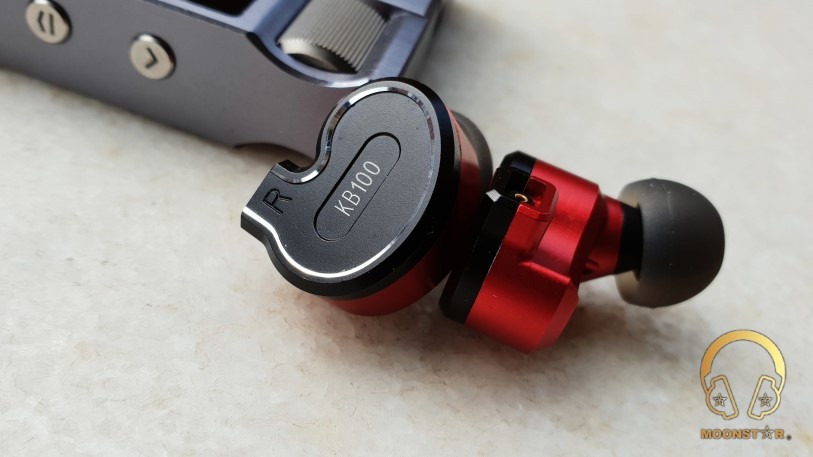
Disclaimer:
The BQEYZ KB100 was provided to me by BQEYZ via Penon Audio as a review sample.
I am not affiliated with BQEYZ or Penon Audio beyond this review and these words reflect my true, unaltered, opinions about the product.
About Me: https://moonstarreviews.net
Price:
The BQEYZ KB100 In-Ear Monitor is available on Penon Audio for 49,90 USD.
Purchase link: https://penonaudio.com/bqeyz-kb100.html
Package and Accessories:
The BQEYZ KB100 is coming in a textured black square cardboard box with the company branding on the top in silver color.
The box is containing the following items;

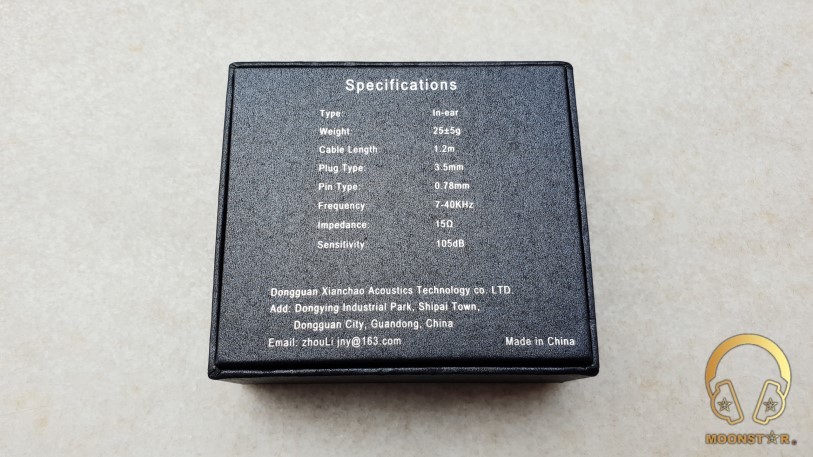
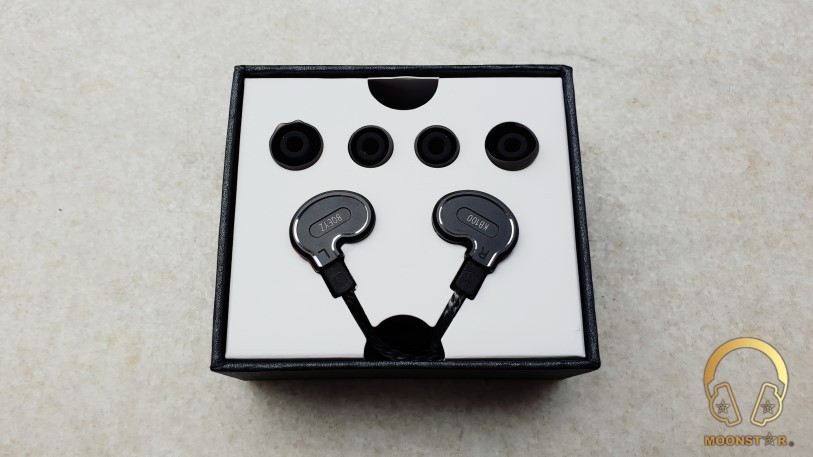

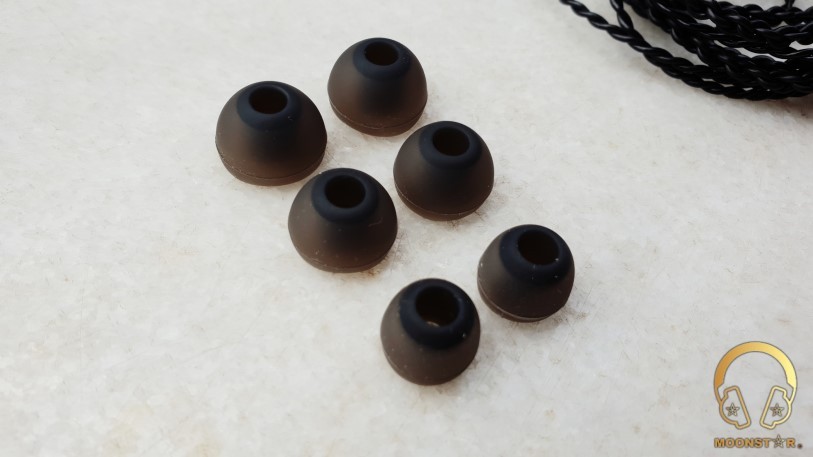
Technical Specifications:
Design and Build Quality:
The BQEYZ KB100 In-Ear Monitor housing is made of aluminum that looks robust and shows a good build quality. The KB100 is available in 2 different color options; those are red&black and blue. My review unit came in red&black combination looks pretty nice.

On the Top of this monitor is the 0.78mm 2-pin female connector.
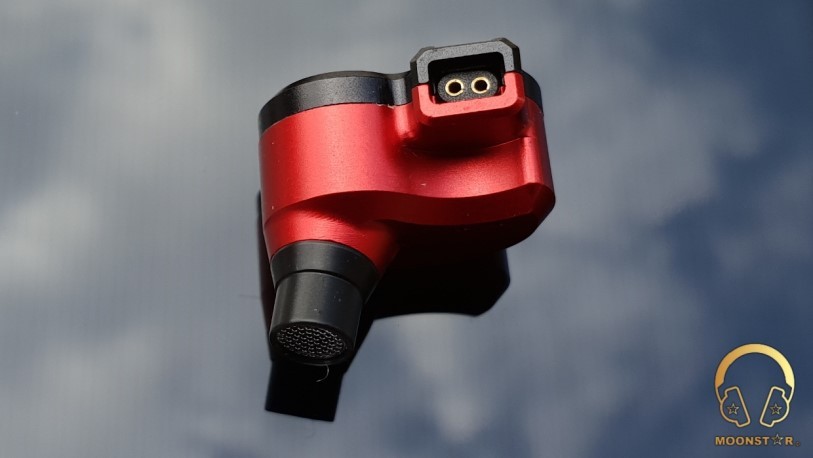
The back of the monitor shell is in red color and sports the slightly angled sound nozzle with a mesh on the top to prevent the insertion of earwax and dust. They are also two big and one smaller vent.

On the front is the faceplate, which is in black color with a engraving that is surrounding the edges of the faceplate. The faceplate sports also left (L) and right (R) markings and on the center of the left faceplate is the BQEYZ barding, while the right monitor has the KB100 model printing.
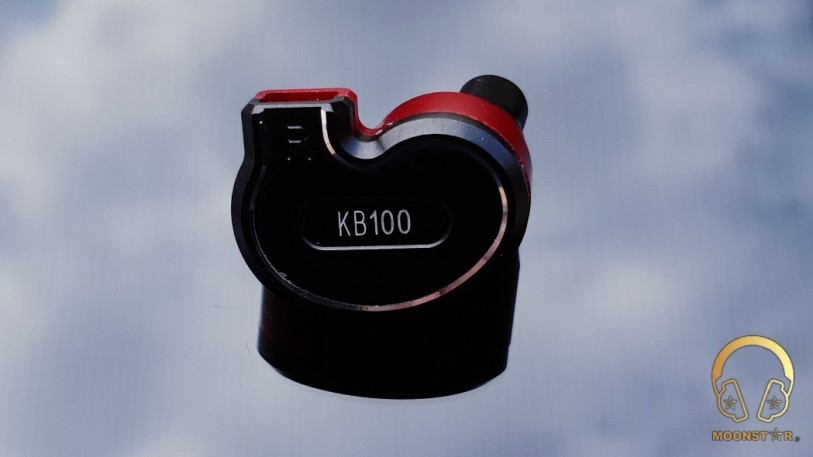
The cable that comes with the KB100 has a braided design and is made of a 4 core cooper wire, which has a black TPU coating.

The 0.78mm 2-pin male connectors on the cable have plastic housings with left and right markings and there is a heat shrink ear guide on each side.
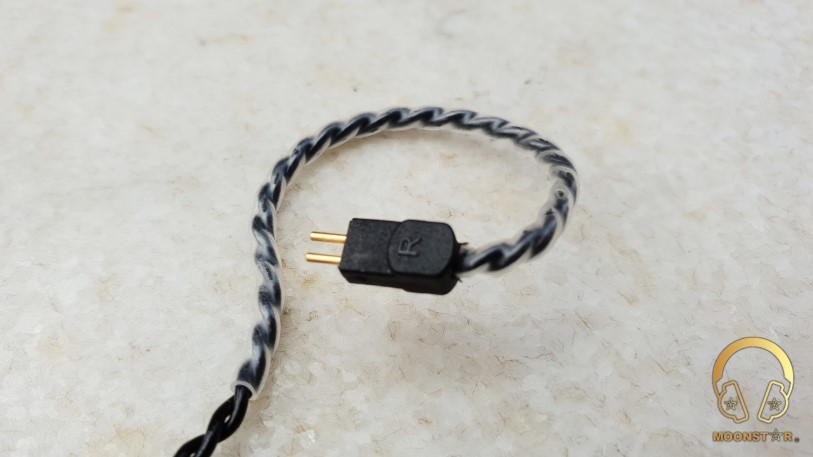
There cable sports a black metal Y splitter with BQEYZ branding and a transparent plastic chin slider.
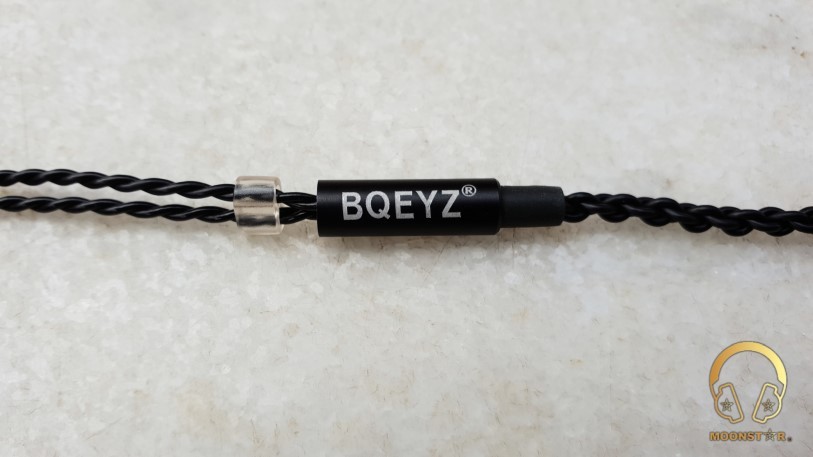
The 3.5mm TRS (3 pole) headphone jack has an L angled profile which I always prefer over a straight profiled jack.

Fit, Comfort and Isolation:
The BQEYZ KB100 has an ergonomic design and is quite comfortable to wear. The fit of this IEM is good and is showing an average level of isolation that is enough to use it in enjoinments such as bus, metro or train.
Equipment’s used for this review:

Albums & tracks used for this review:
The Sound:
The BQEYZ KB100 is an In-Ear Monitor with a tonality that is slightly warmer than neutral. The bass is strong and the midrange is transparent and musical, while the treble shows a bright but fatigue free presentation.
PS: This review is written after a burn-in process of 75 - 80 Hours. I have used the stock Bi flange Silicone ear tip and the stock 2 pin cable during this review.
Bass:
The bass which is coming form the dynamic driver is soft and has a warmish tonality. The subbass depth and extensions is pretty good, while the quantity and pressure is not too much or nor overdone. It is controlled and doesn’t sound overwhelming.
The midbass on the other hand are strong and hits pretty punchy, without any noticeable midbass hump that could ruin the overall presentation. The midbass quantity and pressure is above average hand while the final hits are hard and distinct.
The general bass speed of the KB100 is above average and can easily handle genres that need a fast bass presentation.
Instruments such as bass guitars sounding thick and warm, electro guitars are bright and soft, while the bass character of cross drums are pronounced and snare drums are tight.
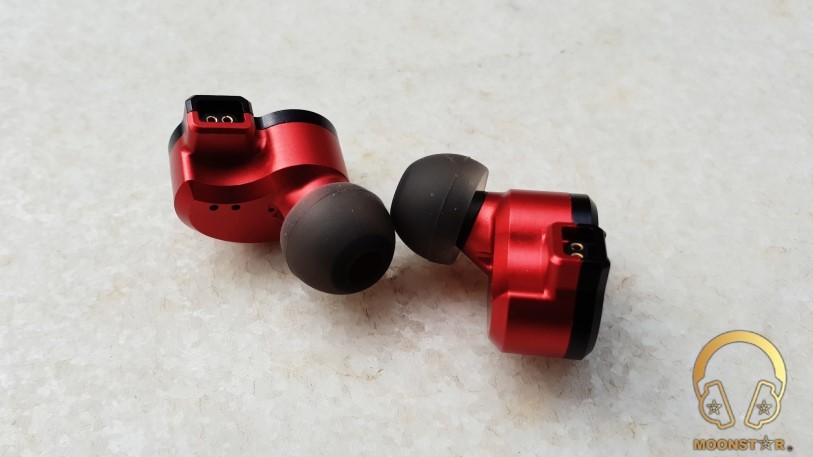
Midrange:
One of the good features of the BQEYZ KB100 is the slightly forward midrange presentation, which is rarely found in IEM’s in this price range.
The midrange of the KB100 sounds clear, slightly warm and detailed where instruments are sounding musical, soft and fairly natural.
Male vocals are sounding clean and thick enough with a musical presentation thanks to the lower midrange tuning. Female vocals have a slightly more forward presentation, which makes the female vocal performance slightly more successful.
The presentation of female vocals is emotional, soft and clear, which is on other nice feature of the BQWYZ KB100. The upper midrange shows a slightly emphasis, which is adding detail and good extension to the presentation of female vocals, without to cause unnecessary sharpness or sibilance.
The BQEYZ KB100 is showing a good separation and definition of instruments with a natural but fairly musical presentation. Instruments such as acoustic guitars are a bit bassy, warm and soft, while violins have a warm, slightly thick and emotional tonality.
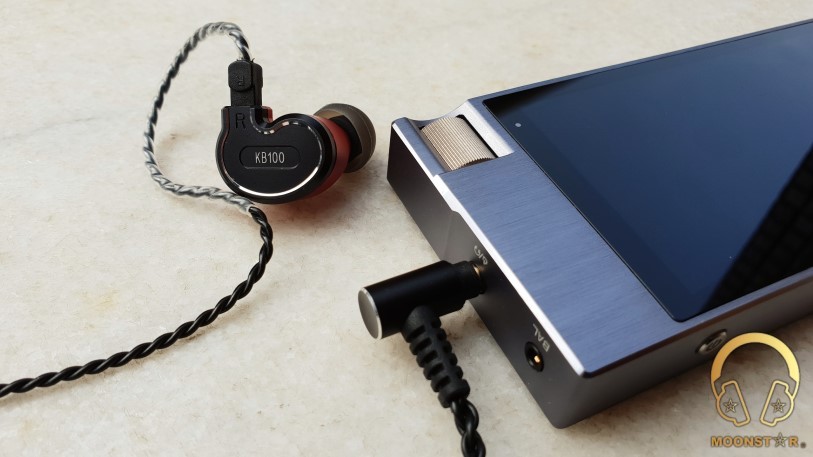
Upper Midrange & Treble:
The BQEYZ KB100 has lightly pronounced upper midrange region that is not very forward positioned and is showing a pretty soft transition. It is very controlled and there is no sharpness or unnecessary sparkling and shows a warmish, soft and musical tonality.
Violins are a bit on the brighter side and have good extensions, while pianos are showing a hint of warmness and a smooth presentation without any remarkable sharpness.
The treble range of the BQEYZ KB100 is positioned slightly behind the bass and the midrange, while is shows a smooth and musical presentation without any remarkable sharpness and fatiguing harshness.
The treble range of the BQEYZ KB100 is showing an average airiness, good resolution with above average speed and extension.
Soundstage:
The soundstage performance and the separation of instruments that the BQEYZ KB100 is showing are pretty good regarding its price. The soundstage width and depth is parallel to each other and are showing a moderate expansion and depth.
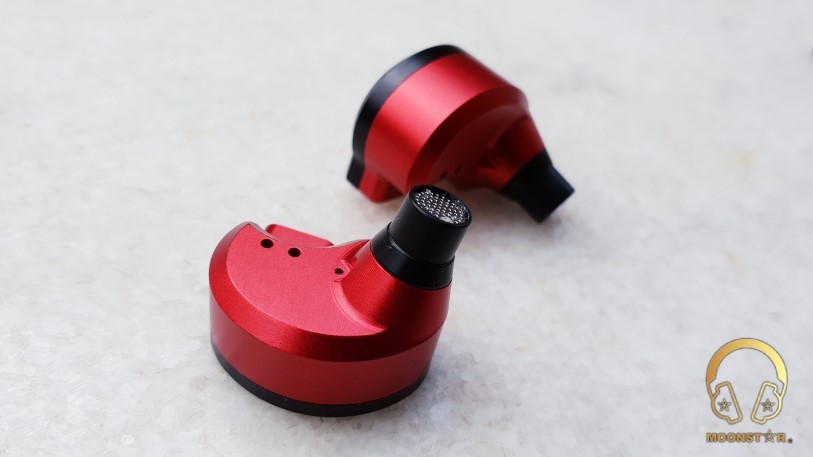
Comparisons:
BQEYZ KB100 versus SHOZY Hibiki
The SHOZY Hibiki shows sharply V shape sound character with a neutral to bright tonality, while the BQEYZ KB100 has more bass, forward oriented midrange along with a warmer than neutral tonality.
The KB100 is in terms of subbass quantity and depth superior to the Hibiki. The same situation exists in the midbass region, where the KB100 has the upper hand for both quantity and extension. The only area where the SHOZY Hibiki is better than the KB100 is the speed and tightness of the bass.
The midrange of the SHOZY Hibiki is sounding pretty neutral and dry, while the KB100 sounds lush and with more body and emotion.
The Hibiki is more successful with female vocals due to the more pronounced upper midrange, while the KB100 is superior in terms of male vocals. Male vocals are sounding a bit dry and thin with the Hibiki IEM, while the KB100 shows a thicker and more emotional in its presentation.
The upper midrange of the BQEYZ KB100 is smoother and more controlled than those of the SHOZY Hibiki, which sounds a bit too bright, sharp and uncontrolled in this area. The Hibiki shows a bit more detailed in this area, while the KB100 has the upper hand in terms of control and a fatigue free experience.
The treble range of the SHOZY Hibiki is more pronounced, vivid and bright than those of the BQEYZ KB100. The Hibiki has the upper hand for quantity and extension, while it is not as controlled and forgiving as the KB100, which has the upper hand for control. The KB100 doesn’t sounds harsh like the Hibiki with some instruments such as cymbals, pianos or violins and is ideal for those who are sensitive to treble brightness.
Both In-Ear Monitors have a suitable stage for several instruments. The main difference is that the SHOZY Hibiki has a slightly wider stage, while the BQEYZ KB100 is superior in terms of soundstage depth.

BQEYZ KB100 versus SHOZY Zero
The SHOZY Zero is an IN-Ear Monitor with a warmer tonality than those of the BQEYZ KB100 that sounds closer to natural.
The subbass of both IEM’s is showing a good depth and extension, while the KB100 shows slightly more depth and quantity.
The midbass of both In-Ear Monitors have a strong and warmish presentation. The SHOZY Zero shows more punch and quantity than those of the BQEYZ KB100 which has a more linear presentation. The SHOZY Zero has also a small midbass hump that the KB100 doesn’t have.
When it comes to the bass speed and tightness, I can conform that both IEM’s are showing an average speed and tightness.
The midrange of the SHOZY Zero is slightly more recessed than those of the BQEYZ KB100. Both In-Ear Monitors are offering a lush and musical midrange, while the KB100 is offering a more transparent and airy presentation.
The SHOZY Zero is more suitable for male vocals due to its lower midrange tuning, while the KB100 is superior in terms of female vocals performance with its clear and well extending upper midrange character.
The instrument separation of both IEM’s is successful. The instrument presentation of the Zero is a bit veiled, while the KB100 is showing a clearer and more natural presentation. The KB100 is more successful in terms of the detail performance in the midrange.
Both In-Ear Monitors are successful in the upper mids and treble range. The upper midrange of the SHOZY Zero is more pronounced and sharp, while the BQEYZ KB100 sounds smoother and controlled. The Shozy Zero is slightly better in terms of upper midrange detail and extension.
The treble range of the SHOZY Zero is a bit recessed compared to those of the BQEYZ KB100. The KB100 is superior to the Zero in terms of treble detail, extension and quantity.
Both the BQEYZ KB100 and the SHOZY Zero are showing a suitable stage for fairly precise instrument placement. The BQEYZ KB100 is superior in terms of soundstage depth and airiness, while the SHOZY Zero has a slightly wider soundstage.

Conclusion:
BQEYZ is a new player in the portable audio scene while the KB100 sounds quite mature with its sound. The combination of good sound, good build quality for a perfect pricing makes me curious about future products of this company.
Pros and Cons:
Good Sound, Good Build Quality, Perfect Price!
Introduction:
BQEYZ is a new player in the portable audio scene and that is offering wired and wireless equipments such as In Ear Monitors with Hybrid driver technology and Bluetooth cables, etc.
The BQEYZ KB100 is an In-Ear Monitor with 1 Balanced and 2 Dynamic drivers, which is available in two different color options that are a red-black and blue.

Disclaimer:
The BQEYZ KB100 was provided to me by BQEYZ via Penon Audio as a review sample.
I am not affiliated with BQEYZ or Penon Audio beyond this review and these words reflect my true, unaltered, opinions about the product.
About Me: https://moonstarreviews.net
Price:
The BQEYZ KB100 In-Ear Monitor is available on Penon Audio for 49,90 USD.
Purchase link: https://penonaudio.com/bqeyz-kb100.html
Package and Accessories:
The BQEYZ KB100 is coming in a textured black square cardboard box with the company branding on the top in silver color.
The box is containing the following items;
- 1 pair x BQEYZ KB100 In-Ear Monitor
- 1 pcs x 0.78mm 2-Pin cable with 3.5mm headphone jack
- 3 pairs x Bi flange silicone ear tips (size S/M/L)





Technical Specifications:
- Driver unit : 1 balanced armature + 2 dynamic hybrid driver
- Frequency response : 7-40 kHz
- Impedance : 15Ω
- Sensitivity : 105 dB / mW
- Plug : 3.5mm
- Connector : 2pin 0.78mm
- Weight : 25±5g
Design and Build Quality:
The BQEYZ KB100 In-Ear Monitor housing is made of aluminum that looks robust and shows a good build quality. The KB100 is available in 2 different color options; those are red&black and blue. My review unit came in red&black combination looks pretty nice.

On the Top of this monitor is the 0.78mm 2-pin female connector.

The back of the monitor shell is in red color and sports the slightly angled sound nozzle with a mesh on the top to prevent the insertion of earwax and dust. They are also two big and one smaller vent.

On the front is the faceplate, which is in black color with a engraving that is surrounding the edges of the faceplate. The faceplate sports also left (L) and right (R) markings and on the center of the left faceplate is the BQEYZ barding, while the right monitor has the KB100 model printing.

The cable that comes with the KB100 has a braided design and is made of a 4 core cooper wire, which has a black TPU coating.

The 0.78mm 2-pin male connectors on the cable have plastic housings with left and right markings and there is a heat shrink ear guide on each side.

There cable sports a black metal Y splitter with BQEYZ branding and a transparent plastic chin slider.

The 3.5mm TRS (3 pole) headphone jack has an L angled profile which I always prefer over a straight profiled jack.

Fit, Comfort and Isolation:
The BQEYZ KB100 has an ergonomic design and is quite comfortable to wear. The fit of this IEM is good and is showing an average level of isolation that is enough to use it in enjoinments such as bus, metro or train.
Equipment’s used for this review:
- IEM’s : BQEYZ KB100, SHOZY Zero, SHOZY Hibiki
- DAP/DAC/AMP : Astell&Kern A&norma SR15, Cayin N5II, Fiio M9, Musiland MU2

Albums & tracks used for this review:
- First Aid Kit - My Silver Lining (Spotify)
- London Grammar – Interlud (Live) (Flac 24bit/44kHz)
- Laura Pergolizzi – Lost On You “Live at Harvard and Stone” (Tidal Hi-Fi)
- Minor Empire – BulbulumAltinKafeste (Spotify)
- Leonard Cohen – You Wnt it Darker (Spotify)
- Dave Gahan – Kingdom (Tidal Hi-Fi)
- Eric Clapton – Wonderful Tonight True (Flac 24bit/96kHz)
- Vivaldi – Le QuarttroStagioni “The Four Season” (Tidal Hi-Fi)
- Alboran Trio’s – Cinque Lunghissimi Minuti (Tidal Hi-Fi)
- Otto Liebert & Luna Negra – Up Close “Album” (DSF) – Binaural Recording
- Lorde – Team (Flac 24bit/48kHz)
- Massive Attack – Angel (Tidal Hi-Fi)
- Portishead – It Could Be Sweet (Spotify)
- Liquid Tension Experiment 2 – Acid Rain (Spotify)
- Opeth – Damnation (Tidal Hi-Fi)
- Metallica – Sad but True (Flac 24bit/96kHz)
- Megadeth - Sweating Bullets (Tidal Hi-Fi)
The Sound:
The BQEYZ KB100 is an In-Ear Monitor with a tonality that is slightly warmer than neutral. The bass is strong and the midrange is transparent and musical, while the treble shows a bright but fatigue free presentation.
PS: This review is written after a burn-in process of 75 - 80 Hours. I have used the stock Bi flange Silicone ear tip and the stock 2 pin cable during this review.
Bass:
The bass which is coming form the dynamic driver is soft and has a warmish tonality. The subbass depth and extensions is pretty good, while the quantity and pressure is not too much or nor overdone. It is controlled and doesn’t sound overwhelming.
The midbass on the other hand are strong and hits pretty punchy, without any noticeable midbass hump that could ruin the overall presentation. The midbass quantity and pressure is above average hand while the final hits are hard and distinct.
The general bass speed of the KB100 is above average and can easily handle genres that need a fast bass presentation.
Instruments such as bass guitars sounding thick and warm, electro guitars are bright and soft, while the bass character of cross drums are pronounced and snare drums are tight.

Midrange:
One of the good features of the BQEYZ KB100 is the slightly forward midrange presentation, which is rarely found in IEM’s in this price range.
The midrange of the KB100 sounds clear, slightly warm and detailed where instruments are sounding musical, soft and fairly natural.
Male vocals are sounding clean and thick enough with a musical presentation thanks to the lower midrange tuning. Female vocals have a slightly more forward presentation, which makes the female vocal performance slightly more successful.
The presentation of female vocals is emotional, soft and clear, which is on other nice feature of the BQWYZ KB100. The upper midrange shows a slightly emphasis, which is adding detail and good extension to the presentation of female vocals, without to cause unnecessary sharpness or sibilance.
The BQEYZ KB100 is showing a good separation and definition of instruments with a natural but fairly musical presentation. Instruments such as acoustic guitars are a bit bassy, warm and soft, while violins have a warm, slightly thick and emotional tonality.

Upper Midrange & Treble:
The BQEYZ KB100 has lightly pronounced upper midrange region that is not very forward positioned and is showing a pretty soft transition. It is very controlled and there is no sharpness or unnecessary sparkling and shows a warmish, soft and musical tonality.
Violins are a bit on the brighter side and have good extensions, while pianos are showing a hint of warmness and a smooth presentation without any remarkable sharpness.
The treble range of the BQEYZ KB100 is positioned slightly behind the bass and the midrange, while is shows a smooth and musical presentation without any remarkable sharpness and fatiguing harshness.
The treble range of the BQEYZ KB100 is showing an average airiness, good resolution with above average speed and extension.
Soundstage:
The soundstage performance and the separation of instruments that the BQEYZ KB100 is showing are pretty good regarding its price. The soundstage width and depth is parallel to each other and are showing a moderate expansion and depth.

Comparisons:
BQEYZ KB100 versus SHOZY Hibiki
The SHOZY Hibiki shows sharply V shape sound character with a neutral to bright tonality, while the BQEYZ KB100 has more bass, forward oriented midrange along with a warmer than neutral tonality.
The KB100 is in terms of subbass quantity and depth superior to the Hibiki. The same situation exists in the midbass region, where the KB100 has the upper hand for both quantity and extension. The only area where the SHOZY Hibiki is better than the KB100 is the speed and tightness of the bass.
The midrange of the SHOZY Hibiki is sounding pretty neutral and dry, while the KB100 sounds lush and with more body and emotion.
The Hibiki is more successful with female vocals due to the more pronounced upper midrange, while the KB100 is superior in terms of male vocals. Male vocals are sounding a bit dry and thin with the Hibiki IEM, while the KB100 shows a thicker and more emotional in its presentation.
The upper midrange of the BQEYZ KB100 is smoother and more controlled than those of the SHOZY Hibiki, which sounds a bit too bright, sharp and uncontrolled in this area. The Hibiki shows a bit more detailed in this area, while the KB100 has the upper hand in terms of control and a fatigue free experience.
The treble range of the SHOZY Hibiki is more pronounced, vivid and bright than those of the BQEYZ KB100. The Hibiki has the upper hand for quantity and extension, while it is not as controlled and forgiving as the KB100, which has the upper hand for control. The KB100 doesn’t sounds harsh like the Hibiki with some instruments such as cymbals, pianos or violins and is ideal for those who are sensitive to treble brightness.
Both In-Ear Monitors have a suitable stage for several instruments. The main difference is that the SHOZY Hibiki has a slightly wider stage, while the BQEYZ KB100 is superior in terms of soundstage depth.

BQEYZ KB100 versus SHOZY Zero
The SHOZY Zero is an IN-Ear Monitor with a warmer tonality than those of the BQEYZ KB100 that sounds closer to natural.
The subbass of both IEM’s is showing a good depth and extension, while the KB100 shows slightly more depth and quantity.
The midbass of both In-Ear Monitors have a strong and warmish presentation. The SHOZY Zero shows more punch and quantity than those of the BQEYZ KB100 which has a more linear presentation. The SHOZY Zero has also a small midbass hump that the KB100 doesn’t have.
When it comes to the bass speed and tightness, I can conform that both IEM’s are showing an average speed and tightness.
The midrange of the SHOZY Zero is slightly more recessed than those of the BQEYZ KB100. Both In-Ear Monitors are offering a lush and musical midrange, while the KB100 is offering a more transparent and airy presentation.
The SHOZY Zero is more suitable for male vocals due to its lower midrange tuning, while the KB100 is superior in terms of female vocals performance with its clear and well extending upper midrange character.
The instrument separation of both IEM’s is successful. The instrument presentation of the Zero is a bit veiled, while the KB100 is showing a clearer and more natural presentation. The KB100 is more successful in terms of the detail performance in the midrange.
Both In-Ear Monitors are successful in the upper mids and treble range. The upper midrange of the SHOZY Zero is more pronounced and sharp, while the BQEYZ KB100 sounds smoother and controlled. The Shozy Zero is slightly better in terms of upper midrange detail and extension.
The treble range of the SHOZY Zero is a bit recessed compared to those of the BQEYZ KB100. The KB100 is superior to the Zero in terms of treble detail, extension and quantity.
Both the BQEYZ KB100 and the SHOZY Zero are showing a suitable stage for fairly precise instrument placement. The BQEYZ KB100 is superior in terms of soundstage depth and airiness, while the SHOZY Zero has a slightly wider soundstage.

Conclusion:
BQEYZ is a new player in the portable audio scene while the KB100 sounds quite mature with its sound. The combination of good sound, good build quality for a perfect pricing makes me curious about future products of this company.
Pros and Cons:
- + Good Sound
- + Good Build Quality
- + Perfect Price
- - Nothing to complain for this price
Moonstar
100+ Head-Fier
Pros: Very audible improvements in terms of bass depth, intensity & extension,
Adds fullness/body to the midrange without to downscale the overall clarity and airiness,
Beautiful Look & Very Good Build Quality,
Available with a wide variety of plugs and connectors
Adds fullness/body to the midrange without to downscale the overall clarity and airiness,
Beautiful Look & Very Good Build Quality,
Available with a wide variety of plugs and connectors
Cons: Looking forward for a more appealing packaging
ISN Audio CU4 Upgrade Cable Review
Introduction:
ISN Audio is a relative new Chinese brand that is producing portable audio gears like Earbuds, In-Ear Monitors and Cables.
The ISN Audio CU4 is a 4 core High Purity Single Crystal Copper upgrade cable with 115 strands and 460 wire (4×115) conductors in total.

Disclaimer:
I would like to thank ISN Audio for providing me the CU4 Upgrade Cable sample via Penon Audio for review purposes. I am not affiliated with ISN Audio and Penon Audio beyond this review and these words reflect my true and unaltered opinions about the product.
Original Post (Moonstar Reviews):
https://moonstarreviews.net/isn-audio-cu4-cable-review/
The Price:
The ISN Audio CU4 upgrade is available for 149,00 USD with MMCX and 2-Pin connectors. You have also the option to choose one of the 3.5mm unbalanced, 2.5mm balanced and 4.4mm Balanced (+10,00 USD) headphone plug.
Package and Accessories:
The ISN Audio CU4 upgrade cable came in a pretty small rectangular cardboard box that features some product brandings on the top.

The box is containing the following items:



Technical Specifications:
Design and Build Quality:
The ISN Audio CU4 is one of the higher level upgrade cables of the company that is made of Single Crystal Copper wire material. The cable has 4 cores and each core has 115 strands which makes 460 conductor wires in total. The total length of the cable is about 1.2 meter and looks very good in terms of craftsmanship.

The cable has a soft transparent PVC plastic insulation with a very low amount of microphonic effect.

The MMCX connectors have a metal housing in black color with L & R markings and two rings on each connector in gold color which gives the CU4 a nice stylish look.

The CU4 is available in two connector options, which are the MMCX (Micro Miniature Coaxial) and the 2-Pin (0.78mm) variant with male connectors. The joints are made of silver containing tin material.

Both connectors do features transparent plastic strain relieves to protect the connectors from damages.

The Y-splitter sports the ISN Brand logo and two gold rings/circles while the chin slider shows the CU4 branding and has one gold ring.


The ISN Audio CU4 features a Rhodium plated headphone plug that has a straight profiled headphone jack and is available in 3.5mm TRS unbalanced and 2.5mm TTRS or 4.4mm TRRRS (Pentaconn) balanced variants.
The headphone housing has a very stylish look and is made of metal in black color and features the same gold colored rings that we have seen on the other metal part of the CU4.

The ISN Audio CU4 is one of the best looking and very well made Upgrade Cables I have used to date.

Equipments used for this review:

Albums & tracks used for this review:
The Sound:
I have tested the ISN Audio CU4 upgrade cable with my ISN Audio H40, Campfire Audio ARA, Campfire Audio ATLAS and Final Audio E4000 In-Ear Monitors to hear the changes and improvements compared to their stock cables.

Bass / Midrange / Treble / Soundstage:
The ISN Audio CU4 is made of Single Crystal Copper material which means that the most audible difference will be occur in the lower frequency region like with most pure cooper cables.
When I connected the CU4 to the Final Audio E4000 and Campfire Audio ARA I have immediately noticed that the subbass region has shown a better level of depth, intensity and extension compared to their stock cable.

The ISN Audio CU4 gives also the midbass region additional body and fullness without to make the overall presentation muddy or veiled, which is a big plus point of the CU4. The CU4 added the ISN Audio H40 additional texture and control compared to its stock cable, which was otherwise pretty good.

Instruments like snare drums and guitars have gained more weight and fullness especially paired with the Final Audio E4000 and Campfire Audio ARA. The difference in terms of when paired with the Campfire Audio ATLAS was less audible.
The ISN Audio CU4 shows a pretty audible difference in the lower midrange region and gives the overall presentation in the midrange region slightly more body and musicality. The Final Audio E4000 and ISN Audio H40 gained more body while listen to instruments like electric guitars, pianos and hi-hats. Also soprano voices do sound more musical, have more depth and are more emotional especially with the Campfire Audio ARA compared to its stock cable.

The upper midrange smoothed out and the transition are more controlled with all IEM’s I have tested with the ISN Audio CU4. The treble extension and brightness remained pretty unchanged while some minor but pretty noticeable changes happened to treble intensive instruments like cymbals, kick drums or soprano voices that have been smoothed out in a noticeable manner, especially with the Final Audio E4000 and ISN Audio H40.
The treble notes do sound slightly thicker and while the rendered air remains almost the same.

The soundstage of all IEM’s I have tested with the ISN Audio CU4 showed minor differences with focal point to the wideness, while the most audible difference was with the Campfire Audio ARA.
Conclusion:
The ISN Audio CU4 is beautiful looking and very well made upgrade cable that offers pretty audible sound improvements especially in terms of subbass depth and midbass control & intensity. It adds also a nice amount of fullness and musicality to the midrange without to affect the overall clarity, while the treble region will be smoothed out without to scale down the overall sparkle and airiness of this area.
Original Post (Moonstar Reviews):
https://moonstarreviews.net/isn-audio-cu4-cable-review/
Introduction:
ISN Audio is a relative new Chinese brand that is producing portable audio gears like Earbuds, In-Ear Monitors and Cables.
The ISN Audio CU4 is a 4 core High Purity Single Crystal Copper upgrade cable with 115 strands and 460 wire (4×115) conductors in total.
- ISN Audio Official Website: https://isnaudio.com/
Disclaimer:
I would like to thank ISN Audio for providing me the CU4 Upgrade Cable sample via Penon Audio for review purposes. I am not affiliated with ISN Audio and Penon Audio beyond this review and these words reflect my true and unaltered opinions about the product.
Original Post (Moonstar Reviews):
https://moonstarreviews.net/isn-audio-cu4-cable-review/
The Price:
The ISN Audio CU4 upgrade is available for 149,00 USD with MMCX and 2-Pin connectors. You have also the option to choose one of the 3.5mm unbalanced, 2.5mm balanced and 4.4mm Balanced (+10,00 USD) headphone plug.
- Purchase Link: https://penonaudio.com/isn-audio-cu4.html
Package and Accessories:
The ISN Audio CU4 upgrade cable came in a pretty small rectangular cardboard box that features some product brandings on the top.
The box is containing the following items:
- 1 pcs x ISN Audio CU4 upgrade cable
- 1 pcs x Zipper Case
- 1 pcs x Cleaning Tool
- 1 pcs x Carabineer
Technical Specifications:
- Material : High Purity Single Crystal Copper Wire Material
- Cores : 4 Cores
- Strands : 115 Strands
- Conductors : 460 Conductor Wires (4×115)
- Interface : MMCX or 2PIN 0.78mm
- Plug Options : 3.5mm Unbalanced, 2.5mm Balanced and 4.4mm Balanced (Rhodium Plated)
- Cable Length : 1.2m
Design and Build Quality:
The ISN Audio CU4 is one of the higher level upgrade cables of the company that is made of Single Crystal Copper wire material. The cable has 4 cores and each core has 115 strands which makes 460 conductor wires in total. The total length of the cable is about 1.2 meter and looks very good in terms of craftsmanship.
The cable has a soft transparent PVC plastic insulation with a very low amount of microphonic effect.
The MMCX connectors have a metal housing in black color with L & R markings and two rings on each connector in gold color which gives the CU4 a nice stylish look.
The CU4 is available in two connector options, which are the MMCX (Micro Miniature Coaxial) and the 2-Pin (0.78mm) variant with male connectors. The joints are made of silver containing tin material.
Both connectors do features transparent plastic strain relieves to protect the connectors from damages.
The Y-splitter sports the ISN Brand logo and two gold rings/circles while the chin slider shows the CU4 branding and has one gold ring.
The ISN Audio CU4 features a Rhodium plated headphone plug that has a straight profiled headphone jack and is available in 3.5mm TRS unbalanced and 2.5mm TTRS or 4.4mm TRRRS (Pentaconn) balanced variants.
The headphone housing has a very stylish look and is made of metal in black color and features the same gold colored rings that we have seen on the other metal part of the CU4.
The ISN Audio CU4 is one of the best looking and very well made Upgrade Cables I have used to date.
Equipments used for this review:
- Cables : ISN Audio CU4 Upgrade Cable
- IEM’s : ISN Audio H40, Campfire Audio ARA & ATLAS, Final Audio E4000
- Sources : FiiO M11 Pro, iBasso DX220 MAX
Albums & tracks used for this review:
- Sting – Englishman in New York – (Flac 24bit/48kHz)
- Eric Clapton – Wonderful Tonight (Flac 24bit/96kHz)
- Dave Gahan – Kingdom (Tidal Hi-Fi)
- B.B. King – Riding With The King (Flac 24bit/96kHz)
- Chopin – Nocturn No. 20 In C-Sharp Minor (Flac 16bit/44.1kHz)
- Edith Piaf – Non Je Ne Regrette Rien (Flac 24bit/48kHz)
- Diana Krall – So Wonderful (DSF)
- First Aid Kit – My Silver Lining (Flac 16bit/44.1kHz)
- Sertap Erener – Aşk (Flac 16bit/44.1kHz)
- London Grammar – Interlud (Live) (Flac 24bit/44kHz)
- Laura Pergolizzi – Lost On You “Live at Harvard and Stone” (Tidal Hi-Fi)
- Fazıl Say – Nazım Oratoryosu (Live) (Flac 16bit/44.1kHz)
- Vivaldi – Le QuarttroStagioni “The Four Season” (Tidal Hi-Fi)
- Otto Liebert& Luna Negra – The River (Spotify)
- Armin Van Buuren – Vini Vici (Flac 16bit/44.1kHz)
- No Doubt – Hella Gut (Flac 16bit/44.1kHz)
- Lorde – Royal (Flac 24bit/48kHz)
- Massive Attack – Angel (Flac 24bit/192kHz)
- Twerl – Lishu (Spotify)
- U2 – Sunday Bloody Sunday (Flac 16bit/44.1kHz)
- Portishead – The Hidden Camera (MP3 320kpbs)
- Metallica – Sad but True (Flac 24bit/96kHz)
- Opeth – Windowpane (Flac 16bit/44.1kHz)
- Megadeth – Sweating Bullets (Tidal Hi-Fi)
- Rush’s – Leave That Thing Alone (Flac 16bit/44.1kHz)
- Slayer – Angel of Death (Spotify)
- Tom Player – Resonace Theory “Album” (Tidal Hi-Fi)
- Liquid Tension Experiment 2 – Acid Rain (Spotify)
The Sound:
I have tested the ISN Audio CU4 upgrade cable with my ISN Audio H40, Campfire Audio ARA, Campfire Audio ATLAS and Final Audio E4000 In-Ear Monitors to hear the changes and improvements compared to their stock cables.
Bass / Midrange / Treble / Soundstage:
The ISN Audio CU4 is made of Single Crystal Copper material which means that the most audible difference will be occur in the lower frequency region like with most pure cooper cables.
When I connected the CU4 to the Final Audio E4000 and Campfire Audio ARA I have immediately noticed that the subbass region has shown a better level of depth, intensity and extension compared to their stock cable.
The ISN Audio CU4 gives also the midbass region additional body and fullness without to make the overall presentation muddy or veiled, which is a big plus point of the CU4. The CU4 added the ISN Audio H40 additional texture and control compared to its stock cable, which was otherwise pretty good.
Instruments like snare drums and guitars have gained more weight and fullness especially paired with the Final Audio E4000 and Campfire Audio ARA. The difference in terms of when paired with the Campfire Audio ATLAS was less audible.
The ISN Audio CU4 shows a pretty audible difference in the lower midrange region and gives the overall presentation in the midrange region slightly more body and musicality. The Final Audio E4000 and ISN Audio H40 gained more body while listen to instruments like electric guitars, pianos and hi-hats. Also soprano voices do sound more musical, have more depth and are more emotional especially with the Campfire Audio ARA compared to its stock cable.
The upper midrange smoothed out and the transition are more controlled with all IEM’s I have tested with the ISN Audio CU4. The treble extension and brightness remained pretty unchanged while some minor but pretty noticeable changes happened to treble intensive instruments like cymbals, kick drums or soprano voices that have been smoothed out in a noticeable manner, especially with the Final Audio E4000 and ISN Audio H40.
The treble notes do sound slightly thicker and while the rendered air remains almost the same.
The soundstage of all IEM’s I have tested with the ISN Audio CU4 showed minor differences with focal point to the wideness, while the most audible difference was with the Campfire Audio ARA.
Conclusion:
The ISN Audio CU4 is beautiful looking and very well made upgrade cable that offers pretty audible sound improvements especially in terms of subbass depth and midbass control & intensity. It adds also a nice amount of fullness and musicality to the midrange without to affect the overall clarity, while the treble region will be smoothed out without to scale down the overall sparkle and airiness of this area.
Original Post (Moonstar Reviews):
https://moonstarreviews.net/isn-audio-cu4-cable-review/
Moonstar
100+ Head-Fier
Pros: Nice balanced sound with good detail level,
Decent build quality,
Wonderful packaging and accessories,
Great Price to Performance Ratio,
Easy to drive
Decent build quality,
Wonderful packaging and accessories,
Great Price to Performance Ratio,
Easy to drive
Cons: None for this price
PENON BS1 Official Version
Rich Sound in a Luxurious Package…
About Penon Audio:
Penon Audio is a well known Hong Kong based online store that is selling portable Hi-Fi equipments, desktop type Dac’s and Amplifiers.

Disclaimer:
This free sample was provided to me for the purpose of an honest review. I’m not affiliated with the company and all observations and opinions here are my own that are based on my experience with the product.
The Price:
The Penon BS1 Official is available on penon-official.com. There are 2 (two) different variants, one with 3.5mm audio plug that is sold for 99 USD and one with 2.5mm balanced plug that costs 109 USD.
Introduction:
The Penon BS1 Official earbud is the upgraded successor of the previous Experience version.
Package and Accessories:
The Penon BS1 comes in a blue and burgundy colored premium looking card box with a Golden Penon Logo on the top, which includes the following items;


The Penon BS1 Official is a premium earbud and you can feel that in every detail. The wooden case and the soft velvet pouch, looks & feels very expensive and luxurious.


Design, Fit and Build Quality:
The BS1 Official is a very well made earbud with a rounded black metal shell, which has a PENON written engraving on the top. On the front is a fine metal grill that looks also of high quality.
There is a metal piece on each monitor that protects the cable like a strain relief and works also as left / right marking. This metal piece is in red for the right monitor and in blue for the left monitor.
The Penon BS1 Official sits well on my ears and the isolation is one of the best right after some earbuds with mx500 housing. You can wear it over ear and straight down and I think that the over ear method will give you the most comfortable result. There is also a bass vent on the side.

Cable:
The cable of the BS1 Official is the most premium looking cable model I have ever seen on an earbud. I remember that I was very surprised when I first saw the cable that came with the NiceHCK EBX, but this one is even superior with its wonderful looking, 8 core braided design.
This has a hybrid material construction that is made of 19 strands per core in combination of SPC (Silver Plated Copper) and Copper. It has a transparent TPU coating that feels soft but sturdy.

The chin slider is made of a circular shaped metal material that has a black painted smooth surface. The Y splitter is also made of the same material and has a carbon fiber design that has a white BS1 printing.


The 3.5mm gold plated headphone jack has a straight profile and is made of metal that shares the same carbon fiber design, which looks and feels premium. There is also a 2.5mm Balanced (TRRS) plug version of the Penon BS1 Official available that is compatible for devices like AK100II, AK120II, AK240, AK300, AK320, AK380, Cayin N5II, Lotoo PAW5000 and other sources with 2.5mm balanced output.
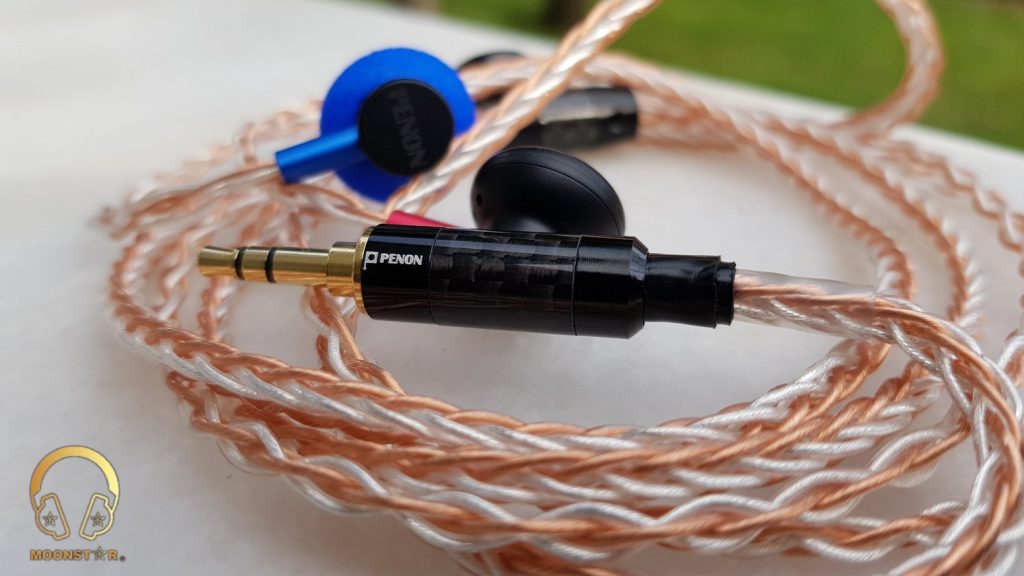
Specifications:
The Penon BS1 Official is a single dynamic driver earbud, that is relative efficient with it's relative low impedance of 32 ohm, which makes this earbud ideal for the usage with portable audio players or smartphones.
Technical Details:

Albums & tracks used for this review:

Sources used for this review:

The Sound:
I am the sort of people who believes in burn-in and the Penon BS1 Official review is written after a burn-in process of 140 - 150 hours. I have used the stock full foams due this review.
PS: The sound performance of earbuds is very fit dependent; even more than with In-Ear Monitors (IME’s). This can be result to different experiences with the same product.
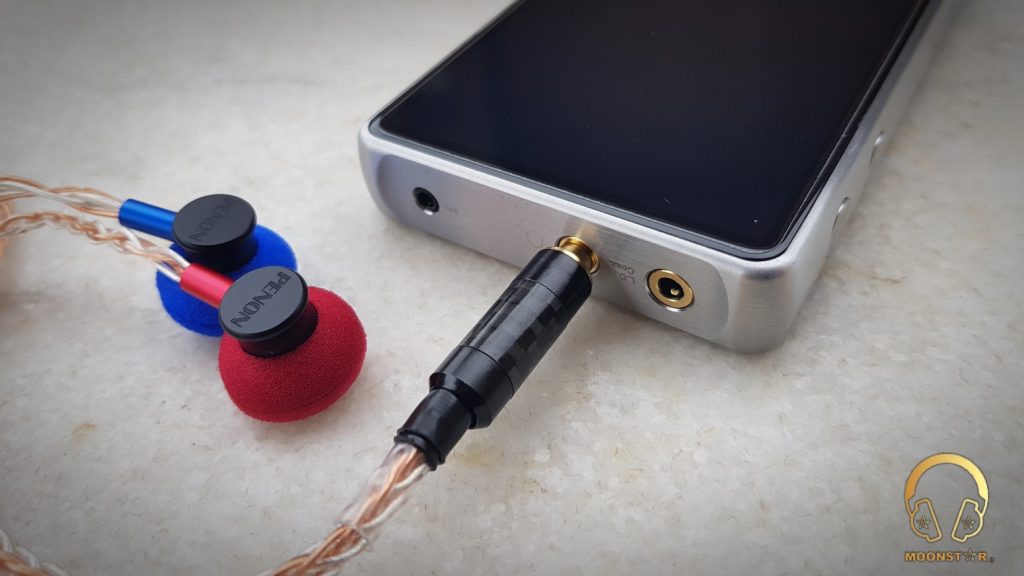
Sound Signature:
The Penon BS1 Official has a quite balanced sound signature with nice impactful bass response clear and transparent vocal presentation and nicely extended top end.
Frequencies:
The BS1 Offical has a quick and controlled sub-bass presentation, which is good in quantity and rumble. It reaches also surprisingly low for an earbud. The sub-bass of the BS1 Official extends very well and is providing a good sense of power that is rarely found on earbuds.
The bass doesn’t sound overpowered or too thin and it has the right amount at 100Hz region that gives the BS1 Official a nice hint of warmth without any loss of definition. Guitar strings in Otto Liebert’s - Up Close Album sounding quite realistic and have a nice fullness.
The midrange sounds clear and clean and there is small amount of warmness that gives instruments and vocals a nice touch of fullness, which adds additional emotion to the sound.
The level of resolution is very good for this price range and one of the best in my earbud collection.
Female vocals like Norah Johns or Saskia Bruin sounding quite natural, only some male voices like George Michael or Brian Adams sounding a hint more bold then normal.
The upper midrange has a slightly boast, but without any considerable result of harshness. Instruments sounding crisp and quite controlled and have a pretty natural presentation. The overall definition is in a high level.
The treble range sounds smooth and balanced without any loose of control. Instruments like cymbal’s in Lazarus A.D. - The Onslaught performance sounding controlled and fatigue free with all of my sources. There is a nice rendering of air that makes space for instruments.
The treble extension is in a pretty good level and the upper treble range between 10 – 12 kHz gives the overall sound a nice amount sparkle and an airy presentation.
The Soundstage and Imaging:
The Penon BS1 Official has a nice expansive soundstage presentation with a pretty good sense of space, which is especially good for songs with lots of instrument. The placement and the air between instruments are well done and the overall imaging is quite accurate in presentation. The instrument separation is great and Alboran Trio’s – Cinque Lunghissimi Minuti shows how well this erabud can perform.
Comparison with other Earbuds:
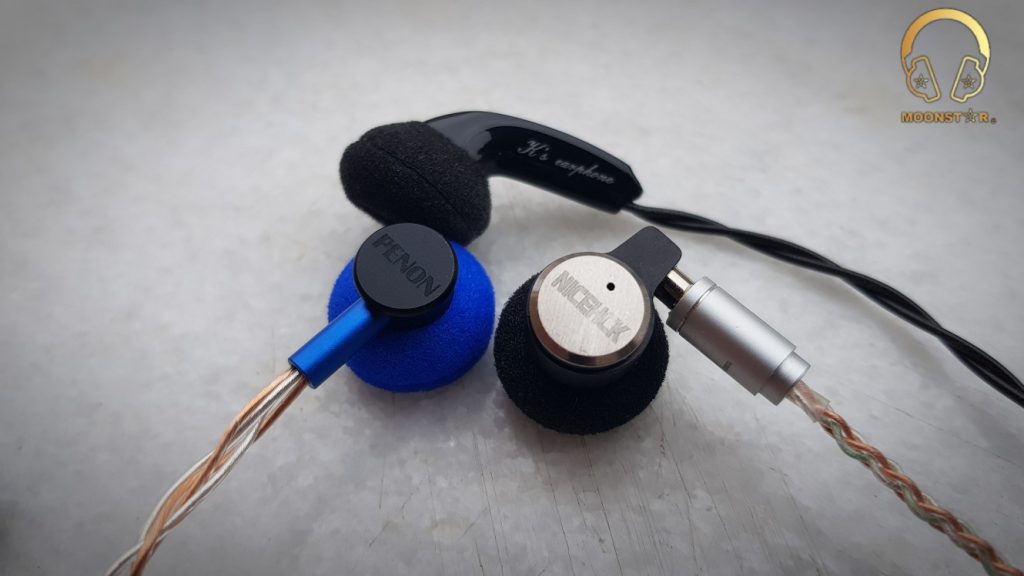
Vs. NiceHCK EBX :
The NiceHCK EBX is a very easy to drive (32 Ohm) earbud, same as BS1 Official with a nice build quality. The NiceHCK EBX earbud has a quite different tonality, which sounds brighter and less warm than BS1 Official.
The Penon BS1 Official sound fuller due the more present bass department. The sub-bass quantity is nearly the same but the BS1 Official goes lover in this register. The speed and control is quite identical on both, but the NiceHCK EBX has less extension in a small margin.
The main difference starts in the bass quantity, especially in the mid-bass department that makes the BS1 Official sounds fuller with more body. The EBX is missing some midbass that make the presentation a bit dry. The overall texture and resolution in this bass department is quite similar and there is no clear winner.
The Penon BS1 Official sounds warmer and fuller in the midrange, which makes female vocals and string instruments like guitars or violins sounding more emotional and intimate compared to the dryer and a bit colder sounding NiceHCK EBX. Both earbuds have a nice clarity and definition level, but I have notice that the BS1 Official has a touch more micro detail.
The Penon BS1 Official has better control in the upper midrange department, because it is handling female vocals and instrument that are prone to sibilance and harshness without any problem. The NiceHCK EBX has some sibilance especially with some instrument like violin, piano, etc.
The NiceHCK EBX and the Penon BS1 Official have the same level of treble clarity, but again the BS1 Official has the upper hand with additional micro detail and overall control in the upper treble range.
The NiceHCK EBX sounds quite spacious, but Penon BS1 Official is more natural and realistic in soundstage presentation. Bothe share the nearly the same level of imaging but the Penon BS1 Official is slightly more accurate.
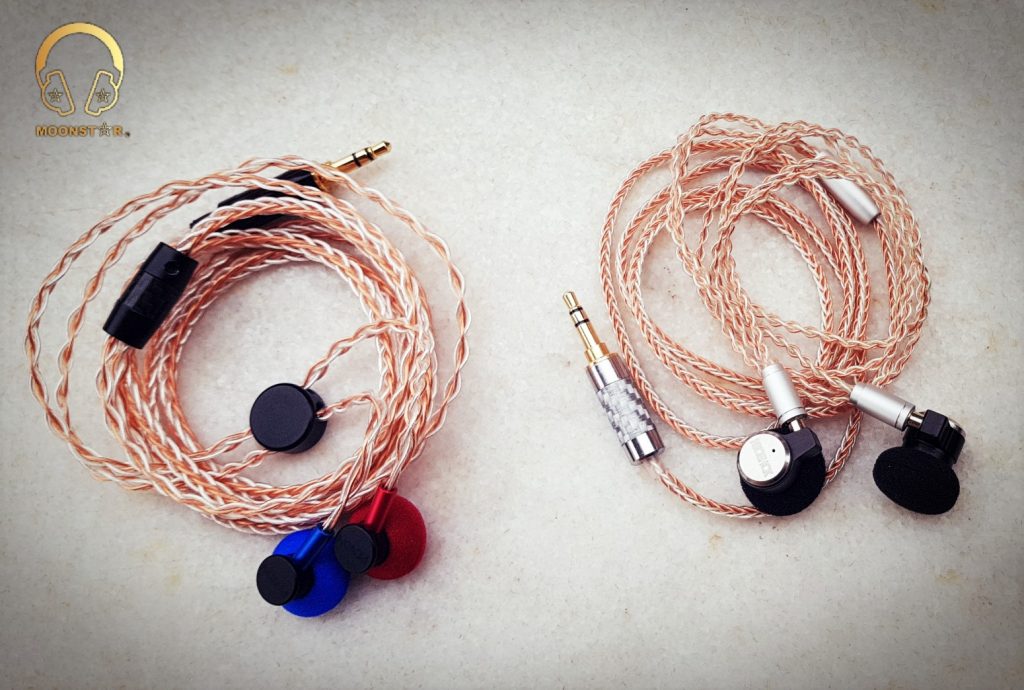
Vs. K’S 300 Samsara Version:
The K’S 300 Samsara Version is one of my favorite earbuds together with the NiceHCK EBX and its the warmest sounding of these three erabuds.
The K'S Samsra sounds warmer then BS1 Official and needs a lot of power two show its potential due the high impedance of 300ohm.
The K’S Samsara has more sub-bass quantity, compared to the more balanced sounding presentation of the BS1 Official. The BS1 official has the better texture and control in the sub-bass department. The mid-bass of the K’S Samsara have more slam and presence compared to the more natural sounding BS1 Official.
The Penon BS1 Official sounds more transparent and clean in the midrange compared to the K’S Samsara that has an overall darker and warmer midrange presentation. The male and female vocal presentation of the Penon BS1 Official sounds more life like and has a better detail retrieval.
The Penon BS1 Official sounds more realistic with string instruments. It also performs slightly better in instrument placement and separation. The midrange resolution of this earbuds is on par, maybe little bit better wit BS1 Official that has additional clearness and transparency.
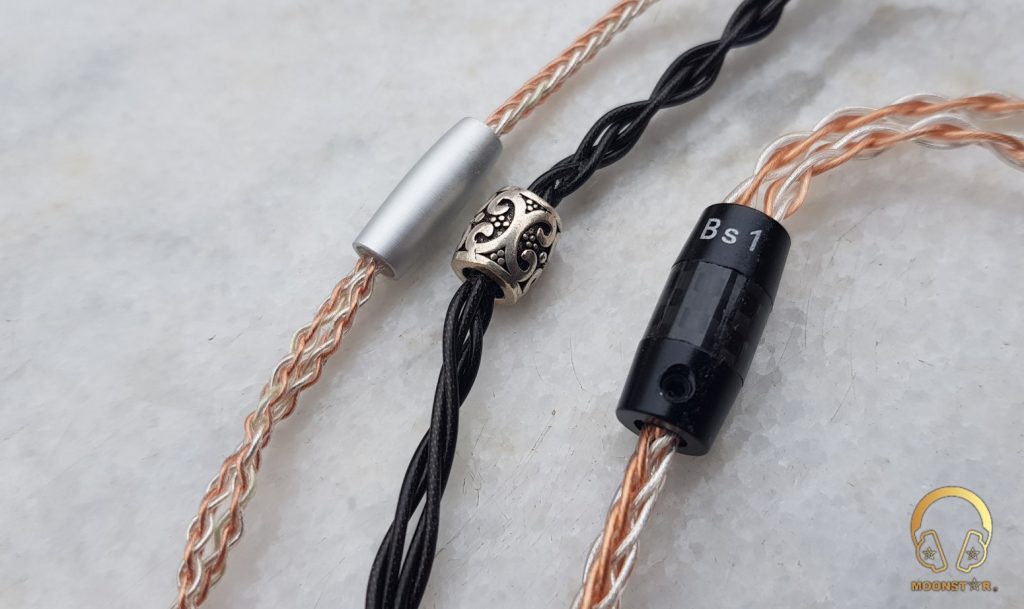
The K’S Samsara sounds softer and more controlled in the upper midrange, while the Penon BS1 Official has the better definition.
The treble presentation of the Penon BS1 Official is on the transparent and vivid side, while the K’S Samsara sounds a bit softer and darker in this department. Both earbuds sharing great control and doesn’t sound harsh.
The upper treble range of the Penon BS1 Official has more presence and sounds crisper and with slightly more definition. The BS1 Official has more resolution in the upper treble range. The differences are very small and in a micro detail level, but noticeable anyway.
Both earbuds share a decent soundstage, but there is a small difference. The Peonon BS1 Official has more width and the K’S Samsara more depth. The instrument placement and imaging on both earbuds performs wide above this price range and i think there is no clear winner.


Conclusion:
The Penon BS1 Official is one of the best or maybe the best earbud available in this price range. It has a wonderful balanced sound signature, great luxurious packaging and a decent build quality that is quite impressive for this price.
Summary (plus and minus):
+ Nice balanced sound with good detail level,
+ Decent build quality,
+ Wonderful packaging and accessories,
+ Great Price to Performance Ratio,
+ Easy to drive
- None for this price

This review was originally posted on "Moonstar Reviews" :
https://moonstarreviews.net
Rich Sound in a Luxurious Package…
About Penon Audio:
Penon Audio is a well known Hong Kong based online store that is selling portable Hi-Fi equipments, desktop type Dac’s and Amplifiers.

Disclaimer:
This free sample was provided to me for the purpose of an honest review. I’m not affiliated with the company and all observations and opinions here are my own that are based on my experience with the product.
The Price:
The Penon BS1 Official is available on penon-official.com. There are 2 (two) different variants, one with 3.5mm audio plug that is sold for 99 USD and one with 2.5mm balanced plug that costs 109 USD.
Introduction:
The Penon BS1 Official earbud is the upgraded successor of the previous Experience version.
Package and Accessories:
The Penon BS1 comes in a blue and burgundy colored premium looking card box with a Golden Penon Logo on the top, which includes the following items;
- Penon BS1 Official earbud
- Wood case
- 1 pair of Hiegi foam donut eartips
- 1 pair of Hiegi foam solid eatrips
- 4 pairs of donut foam eatips
- 4 pairs of solid foam eartips
- Soft Velvet Pouch
- Shirt Clip


The Penon BS1 Official is a premium earbud and you can feel that in every detail. The wooden case and the soft velvet pouch, looks & feels very expensive and luxurious.


Design, Fit and Build Quality:
The BS1 Official is a very well made earbud with a rounded black metal shell, which has a PENON written engraving on the top. On the front is a fine metal grill that looks also of high quality.
There is a metal piece on each monitor that protects the cable like a strain relief and works also as left / right marking. This metal piece is in red for the right monitor and in blue for the left monitor.
The Penon BS1 Official sits well on my ears and the isolation is one of the best right after some earbuds with mx500 housing. You can wear it over ear and straight down and I think that the over ear method will give you the most comfortable result. There is also a bass vent on the side.

Cable:
The cable of the BS1 Official is the most premium looking cable model I have ever seen on an earbud. I remember that I was very surprised when I first saw the cable that came with the NiceHCK EBX, but this one is even superior with its wonderful looking, 8 core braided design.
This has a hybrid material construction that is made of 19 strands per core in combination of SPC (Silver Plated Copper) and Copper. It has a transparent TPU coating that feels soft but sturdy.

The chin slider is made of a circular shaped metal material that has a black painted smooth surface. The Y splitter is also made of the same material and has a carbon fiber design that has a white BS1 printing.


The 3.5mm gold plated headphone jack has a straight profile and is made of metal that shares the same carbon fiber design, which looks and feels premium. There is also a 2.5mm Balanced (TRRS) plug version of the Penon BS1 Official available that is compatible for devices like AK100II, AK120II, AK240, AK300, AK320, AK380, Cayin N5II, Lotoo PAW5000 and other sources with 2.5mm balanced output.

Specifications:
The Penon BS1 Official is a single dynamic driver earbud, that is relative efficient with it's relative low impedance of 32 ohm, which makes this earbud ideal for the usage with portable audio players or smartphones.
Technical Details:
- Driver : 15mm Single Dynamic Driver
- Impedance : 32ohm
- Frequency response : 14Hz – 28 kHz
- Sensitivity : 120dB
- Cable : 8 shares 19-core copper & silver-plated mixed cable
- Plug : 2.5mm or 3.5mm copper gold-plated plug
- Cable length : 1.2m

Albums & tracks used for this review:
- Saskia Bruin – The Look of Love (DSF)
- Aretha Franklin – I Say a Little Prayer (Apple Music)
- Diana Krall - So Wonderful (DSF)
- LP (Laura Pergolizzi) – Lost On You “Live at Harvard and Stone” (Tidal Hi-Fi)
- Dire Straits – Money For Nothing (DSF)
- Geroge Michael – Older “Album” (Appel Music)
- Michael Jackson - Billie Jean (DSF)
- Emmanuel Pahud (Claude Debussy) – Syrinx (Apple Music)
- Otto Liebert & Luna Negra – Up Close “Album” (DSF) – Binaural Recording
- Alboran Trio’s – Cinque Lunghissimi Minuti (Tidal Hi-Fi)
- Lazarus A.D. – The Onslaught (ALAC)
- Opeth – Damnation (Tidal Hi-Fi)
- Daft Punk – Get Lucky (Flac 24bit/192kHz)
- Michael Jackson - Billie Jean (DSF)
- Yosi Horikawa – Bubbles (Flac 16bit/44kHz)

Sources used for this review:
- Erabud : Penon BS1 Official, NiceHCK EBX, K’S 300 Samsara Version,
- DAP/DAC : HiBy R6, Cayin N5II, Chord Mojo, Aune M2, Hifiman HM602s

The Sound:
I am the sort of people who believes in burn-in and the Penon BS1 Official review is written after a burn-in process of 140 - 150 hours. I have used the stock full foams due this review.
PS: The sound performance of earbuds is very fit dependent; even more than with In-Ear Monitors (IME’s). This can be result to different experiences with the same product.

Sound Signature:
The Penon BS1 Official has a quite balanced sound signature with nice impactful bass response clear and transparent vocal presentation and nicely extended top end.
Frequencies:
The BS1 Offical has a quick and controlled sub-bass presentation, which is good in quantity and rumble. It reaches also surprisingly low for an earbud. The sub-bass of the BS1 Official extends very well and is providing a good sense of power that is rarely found on earbuds.
The bass doesn’t sound overpowered or too thin and it has the right amount at 100Hz region that gives the BS1 Official a nice hint of warmth without any loss of definition. Guitar strings in Otto Liebert’s - Up Close Album sounding quite realistic and have a nice fullness.
The midrange sounds clear and clean and there is small amount of warmness that gives instruments and vocals a nice touch of fullness, which adds additional emotion to the sound.
The level of resolution is very good for this price range and one of the best in my earbud collection.
Female vocals like Norah Johns or Saskia Bruin sounding quite natural, only some male voices like George Michael or Brian Adams sounding a hint more bold then normal.
The upper midrange has a slightly boast, but without any considerable result of harshness. Instruments sounding crisp and quite controlled and have a pretty natural presentation. The overall definition is in a high level.
The treble range sounds smooth and balanced without any loose of control. Instruments like cymbal’s in Lazarus A.D. - The Onslaught performance sounding controlled and fatigue free with all of my sources. There is a nice rendering of air that makes space for instruments.
The treble extension is in a pretty good level and the upper treble range between 10 – 12 kHz gives the overall sound a nice amount sparkle and an airy presentation.
The Soundstage and Imaging:
The Penon BS1 Official has a nice expansive soundstage presentation with a pretty good sense of space, which is especially good for songs with lots of instrument. The placement and the air between instruments are well done and the overall imaging is quite accurate in presentation. The instrument separation is great and Alboran Trio’s – Cinque Lunghissimi Minuti shows how well this erabud can perform.
Comparison with other Earbuds:

Vs. NiceHCK EBX :
The NiceHCK EBX is a very easy to drive (32 Ohm) earbud, same as BS1 Official with a nice build quality. The NiceHCK EBX earbud has a quite different tonality, which sounds brighter and less warm than BS1 Official.
The Penon BS1 Official sound fuller due the more present bass department. The sub-bass quantity is nearly the same but the BS1 Official goes lover in this register. The speed and control is quite identical on both, but the NiceHCK EBX has less extension in a small margin.
The main difference starts in the bass quantity, especially in the mid-bass department that makes the BS1 Official sounds fuller with more body. The EBX is missing some midbass that make the presentation a bit dry. The overall texture and resolution in this bass department is quite similar and there is no clear winner.
The Penon BS1 Official sounds warmer and fuller in the midrange, which makes female vocals and string instruments like guitars or violins sounding more emotional and intimate compared to the dryer and a bit colder sounding NiceHCK EBX. Both earbuds have a nice clarity and definition level, but I have notice that the BS1 Official has a touch more micro detail.
The Penon BS1 Official has better control in the upper midrange department, because it is handling female vocals and instrument that are prone to sibilance and harshness without any problem. The NiceHCK EBX has some sibilance especially with some instrument like violin, piano, etc.
The NiceHCK EBX and the Penon BS1 Official have the same level of treble clarity, but again the BS1 Official has the upper hand with additional micro detail and overall control in the upper treble range.
The NiceHCK EBX sounds quite spacious, but Penon BS1 Official is more natural and realistic in soundstage presentation. Bothe share the nearly the same level of imaging but the Penon BS1 Official is slightly more accurate.

Vs. K’S 300 Samsara Version:
The K’S 300 Samsara Version is one of my favorite earbuds together with the NiceHCK EBX and its the warmest sounding of these three erabuds.
The K'S Samsra sounds warmer then BS1 Official and needs a lot of power two show its potential due the high impedance of 300ohm.
The K’S Samsara has more sub-bass quantity, compared to the more balanced sounding presentation of the BS1 Official. The BS1 official has the better texture and control in the sub-bass department. The mid-bass of the K’S Samsara have more slam and presence compared to the more natural sounding BS1 Official.
The Penon BS1 Official sounds more transparent and clean in the midrange compared to the K’S Samsara that has an overall darker and warmer midrange presentation. The male and female vocal presentation of the Penon BS1 Official sounds more life like and has a better detail retrieval.
The Penon BS1 Official sounds more realistic with string instruments. It also performs slightly better in instrument placement and separation. The midrange resolution of this earbuds is on par, maybe little bit better wit BS1 Official that has additional clearness and transparency.

The K’S Samsara sounds softer and more controlled in the upper midrange, while the Penon BS1 Official has the better definition.
The treble presentation of the Penon BS1 Official is on the transparent and vivid side, while the K’S Samsara sounds a bit softer and darker in this department. Both earbuds sharing great control and doesn’t sound harsh.
The upper treble range of the Penon BS1 Official has more presence and sounds crisper and with slightly more definition. The BS1 Official has more resolution in the upper treble range. The differences are very small and in a micro detail level, but noticeable anyway.
Both earbuds share a decent soundstage, but there is a small difference. The Peonon BS1 Official has more width and the K’S Samsara more depth. The instrument placement and imaging on both earbuds performs wide above this price range and i think there is no clear winner.


Conclusion:
The Penon BS1 Official is one of the best or maybe the best earbud available in this price range. It has a wonderful balanced sound signature, great luxurious packaging and a decent build quality that is quite impressive for this price.
Summary (plus and minus):
+ Nice balanced sound with good detail level,
+ Decent build quality,
+ Wonderful packaging and accessories,
+ Great Price to Performance Ratio,
+ Easy to drive
- None for this price

This review was originally posted on "Moonstar Reviews" :
https://moonstarreviews.net
noknok23
Can you compare with hifiboy dream? Thanks
Moonstar
The HiFi BOY Dream sounds warmer and has a laid back vocal presentation. The BS1 Official sounds brighter and vivid, compared to the darker sound signature of the Dream. Both are good Earbuds but I would prefer the BS1 Official due the sound signature and better packaging 

Moonstar
100+ Head-Fier
Pros: Great set of adapters
Solid build quality
Noticeable improvement in sound quality
Reasonable price
Solid build quality
Noticeable improvement in sound quality
Reasonable price
Cons: none
MEE audio Universal MMCX Balanced Audio Cable with Adapter Set; The “Swiss Army Knife” in the World of IEM cables.

Disclaimer:
First of all, I want to thank MEE audio for providing me this MEE audio Universal MMCX Balanced Audio Cable with Adapter Set. I am not affiliated with MEE audio beyond this review and these words reflect my true, unaltered, opinion about the product.
About MEE audio:
MEE Audio is established in the USA and is crafting headphones, earphone and audio accessories, etc. since 2005.
The Price:
The manufacturer's suggested retail price (in short MSRP) of the MEE audio Universal MMCX Balanced Audio Cable with Adapter Set is 99,99 USD.
Purchase Link
I will describe the Universal MMCX Balanced Audio Cable with Adapter Set in short as “Balanced Upgrade Cable” during this review.
What’s in the package?
The MEE audio balanced upgrade cable comes in a rectangular card box with a transparent plastic window that shows the following items inside the box;

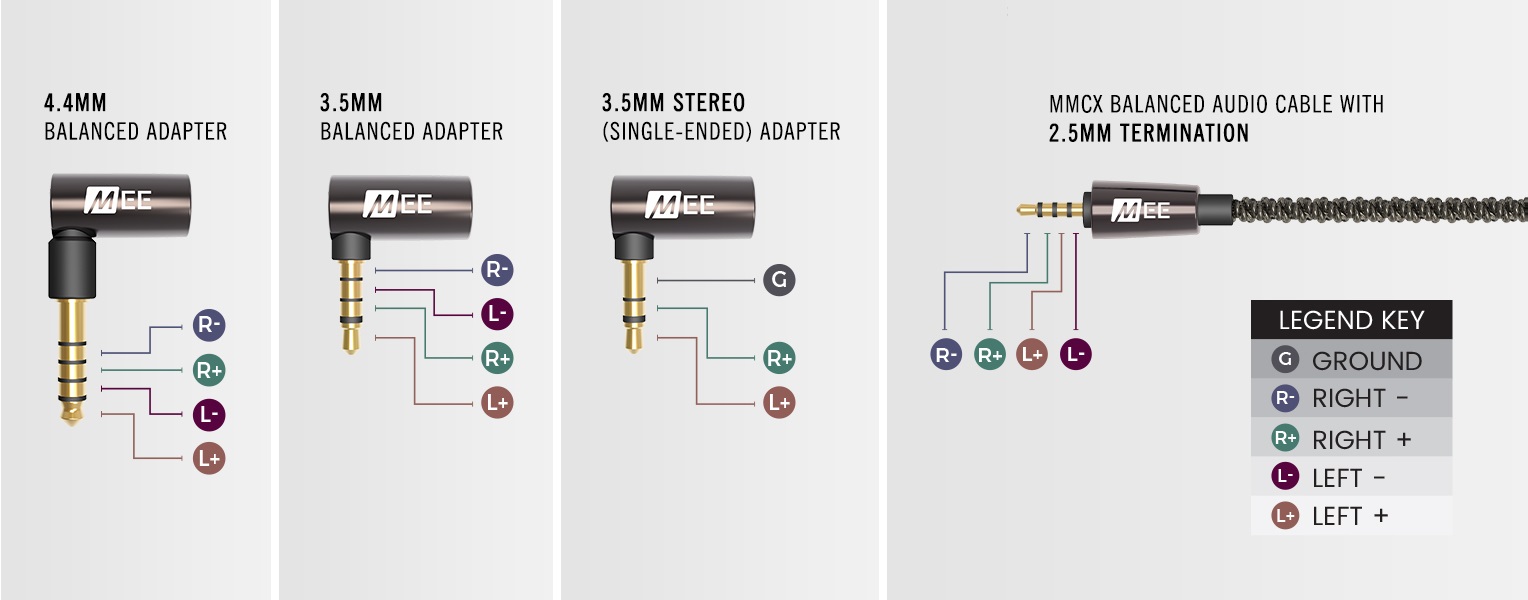
Additional information’s about this upgrade cable;
The MEE Audio Balanced Upgrade Cable is made of a Silver Plated Copper (SPC) wire with %99.99 purity that has MMCX (Micro-Miniature Coaxial) connectors, compatible with MEE audio products and other earphones that are using MMCX connectors.

This Upgrade Cable has a fully balanced design with a 4-core construction that has two isolated conductors per channel, which is braided for strength and a tangle-resistance.

The build quality of this cable looks rock solid and the gunmetal colored plastic isolation have no micro-phonic effects.


About the Sound;
I will compare the Balanced Upgrade Cable with the Stock cable of the Pinnacle P2 and have burn-in this cable for at least 100 Hours.
The first thing I have noticed is that the balanced upgrade cable adds additional body to the sound and bass better bass extension than the stock cable.
As for speed, smoothness, depth and controllability, I found the upgrade cable a bit more mature sounding then the stock cable.
The two cables are also successful in vocals. The upgrade cable sounds warmer and more emotional with female vocals than the stock one.
Both cables are successful by presenting instruments, but the upgrade cable wins when it comes to clarity and instrument accentuation / emphasis.
The stock cable sounds a bit aggressive in upper midrange, while the upgrade cable has some aggressiveness it changes the game with its better control over the upper midrange.
The two cables have a nearly similar performance in the treble region. The main difference is in the treble extension where the upgrade cable shows a better performance. It has also better control over the upper treble region and has also more micro details.
There are also some differences for soundstage presentation. The increasing of depth and width while using the upgrade cable over the stock cable is noticeable. Also the instrument placement benefits from the upgrade cable.

Conclusion:
The MEE audio Universal MMCX Balanced Audio Cable with Adapter Set is a great cable package for a reasonable price. It has a solid build; it improves the sound quality and has a great adapter set that makes it to a “Swiss Army Knife” in the world of IEM cables.

This review was originally posted on "Moonstar Reviews" :
https://moonstarreviews.net

Disclaimer:
First of all, I want to thank MEE audio for providing me this MEE audio Universal MMCX Balanced Audio Cable with Adapter Set. I am not affiliated with MEE audio beyond this review and these words reflect my true, unaltered, opinion about the product.
About MEE audio:
MEE Audio is established in the USA and is crafting headphones, earphone and audio accessories, etc. since 2005.
The Price:
The manufacturer's suggested retail price (in short MSRP) of the MEE audio Universal MMCX Balanced Audio Cable with Adapter Set is 99,99 USD.
Purchase Link
I will describe the Universal MMCX Balanced Audio Cable with Adapter Set in short as “Balanced Upgrade Cable” during this review.
What’s in the package?
The MEE audio balanced upgrade cable comes in a rectangular card box with a transparent plastic window that shows the following items inside the box;

- 1 Pcs of Silver-plated Copper (SPC) Cable with MMCX connector and 2.5mm Balanced Headphone Jack
- 1 Pcs of 4.4mm Balanced (Pentaconn) Adaptor
- 1 Pcs of 3.5mm Balanced (TRRS) Adaptor
- 1 Pcs of 3.5mm Single Ended (SE) Adaptor

Additional information’s about this upgrade cable;
The MEE Audio Balanced Upgrade Cable is made of a Silver Plated Copper (SPC) wire with %99.99 purity that has MMCX (Micro-Miniature Coaxial) connectors, compatible with MEE audio products and other earphones that are using MMCX connectors.

This Upgrade Cable has a fully balanced design with a 4-core construction that has two isolated conductors per channel, which is braided for strength and a tangle-resistance.

The build quality of this cable looks rock solid and the gunmetal colored plastic isolation have no micro-phonic effects.


About the Sound;
I will compare the Balanced Upgrade Cable with the Stock cable of the Pinnacle P2 and have burn-in this cable for at least 100 Hours.
The first thing I have noticed is that the balanced upgrade cable adds additional body to the sound and bass better bass extension than the stock cable.
As for speed, smoothness, depth and controllability, I found the upgrade cable a bit more mature sounding then the stock cable.
The two cables are also successful in vocals. The upgrade cable sounds warmer and more emotional with female vocals than the stock one.
Both cables are successful by presenting instruments, but the upgrade cable wins when it comes to clarity and instrument accentuation / emphasis.
The stock cable sounds a bit aggressive in upper midrange, while the upgrade cable has some aggressiveness it changes the game with its better control over the upper midrange.
The two cables have a nearly similar performance in the treble region. The main difference is in the treble extension where the upgrade cable shows a better performance. It has also better control over the upper treble region and has also more micro details.
There are also some differences for soundstage presentation. The increasing of depth and width while using the upgrade cable over the stock cable is noticeable. Also the instrument placement benefits from the upgrade cable.

Conclusion:
The MEE audio Universal MMCX Balanced Audio Cable with Adapter Set is a great cable package for a reasonable price. It has a solid build; it improves the sound quality and has a great adapter set that makes it to a “Swiss Army Knife” in the world of IEM cables.

This review was originally posted on "Moonstar Reviews" :
https://moonstarreviews.net
Moonstar
100+ Head-Fier
Pros: Lots of Adaptor Variants,
Great Build Quality and Appearance,
Nice Velvet Carry Pouch
Great Build Quality and Appearance,
Nice Velvet Carry Pouch
Cons: None
Penon HiFi Balanced Adapter Cable Review
About Penon Audio:
Penon Audio is a well known Hong Kong based online store that is selling portable Hi-Fi equipments, desktop type DAC’s and Amplifiers.
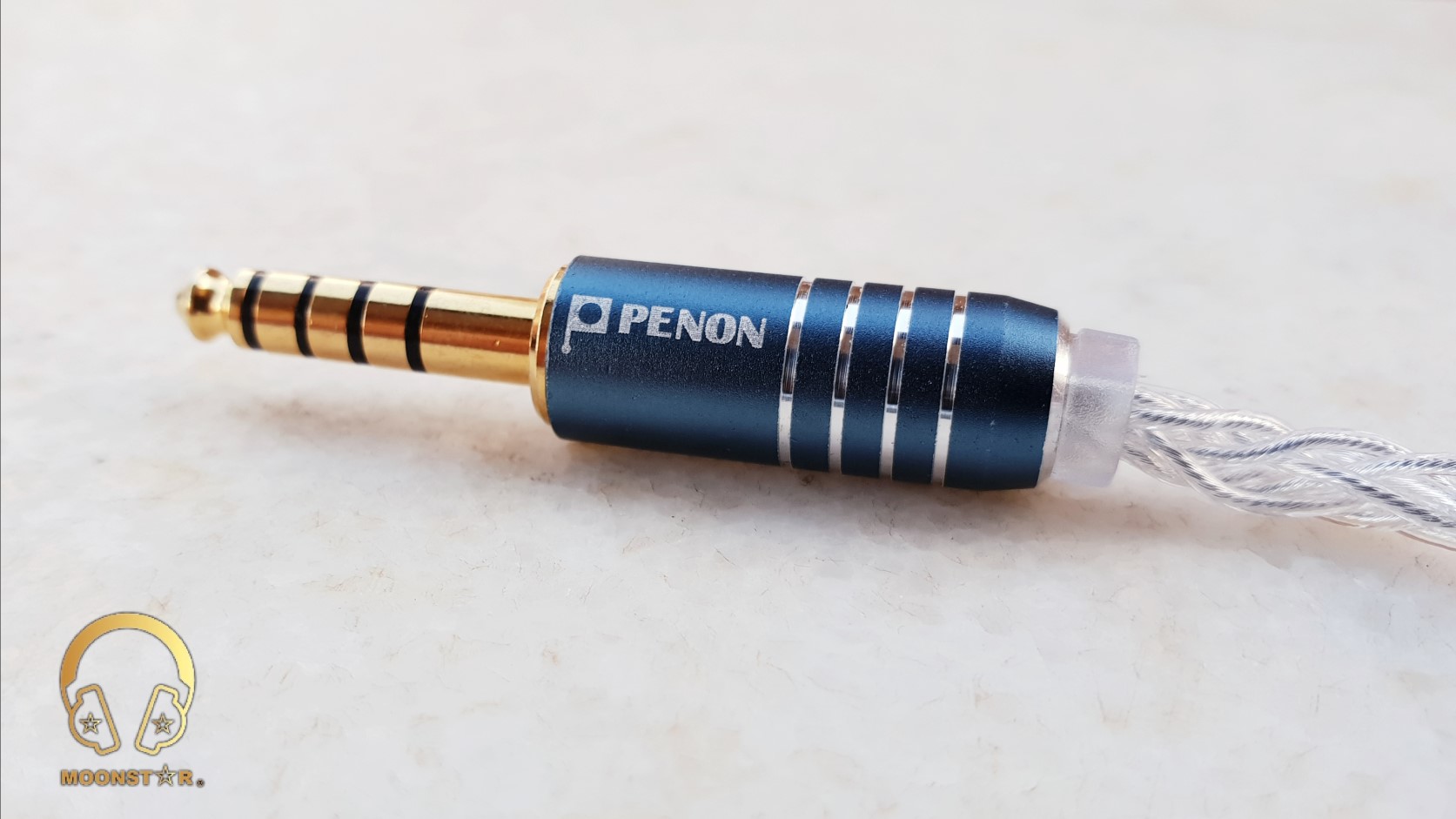
Disclaimer:
The Penon HiFi Balanced Adapter was provided to me by Penon Audio for review purposes. I am not affiliated with Penon Audio or any third person beyond this review and all these words reflect my true and unaltered, opinions about the product.
The Price:
The Penon HiFi Balanced Adapter Cable is a “Penon Exclusive” product and is available with the following connector variants;
The price of the adapters varies between 28.90 – 29.90 USD (4.4mm adapters costing 1,00 USD more).
The purchase links for these adapters is bellow;
https://penon-official.com/product/penon-hifi-balanced-adapter-cable/
Package and Accessories:
The Penon HiFi Balanced Adapter Cable comes in a plastic box which has a sticker on the top that shows the “Penon” branding, the illustration of the adapter and some technical detail of the actual product.

At the backside of the box is a second sticker that shows the available adaptor variants and the adapter which has been purchased.

Inside the box are the following items;

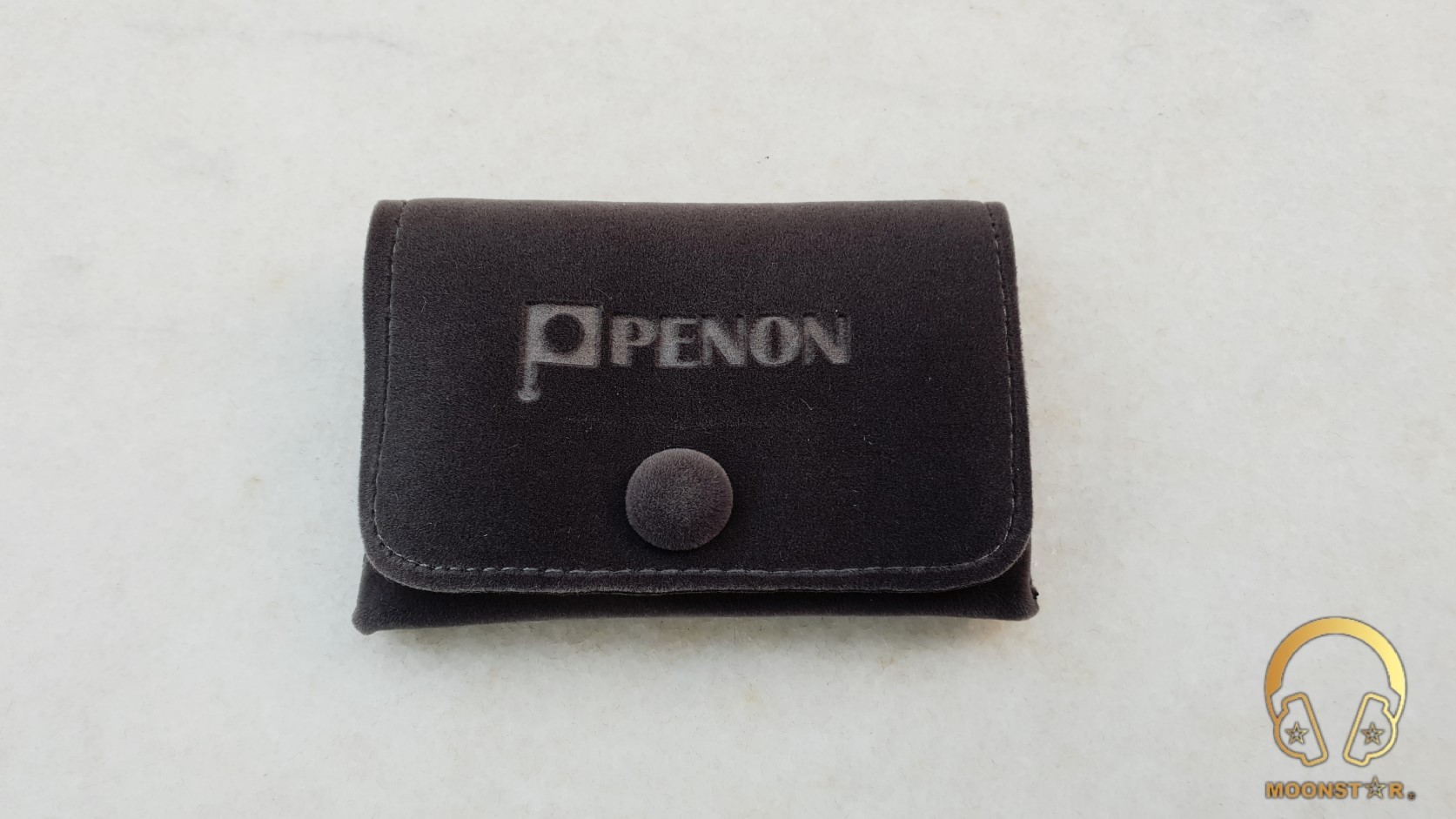
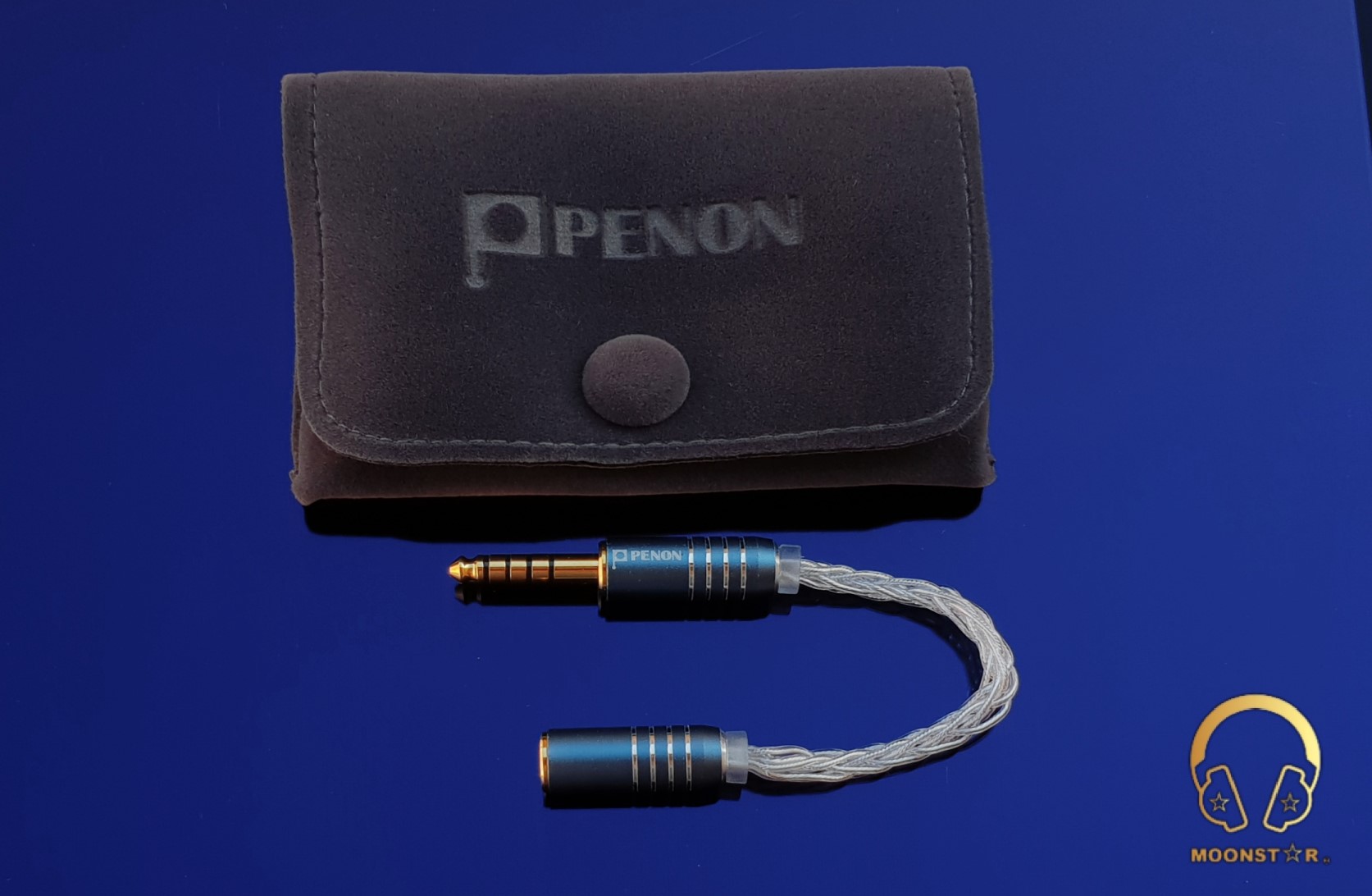
Technical Specifications:
Design and Build Quality:
The Penon HiFi Balanced Adapter Cable for Earbuds, IEM’s, DAC’s, DAP’s and Amplifiers.
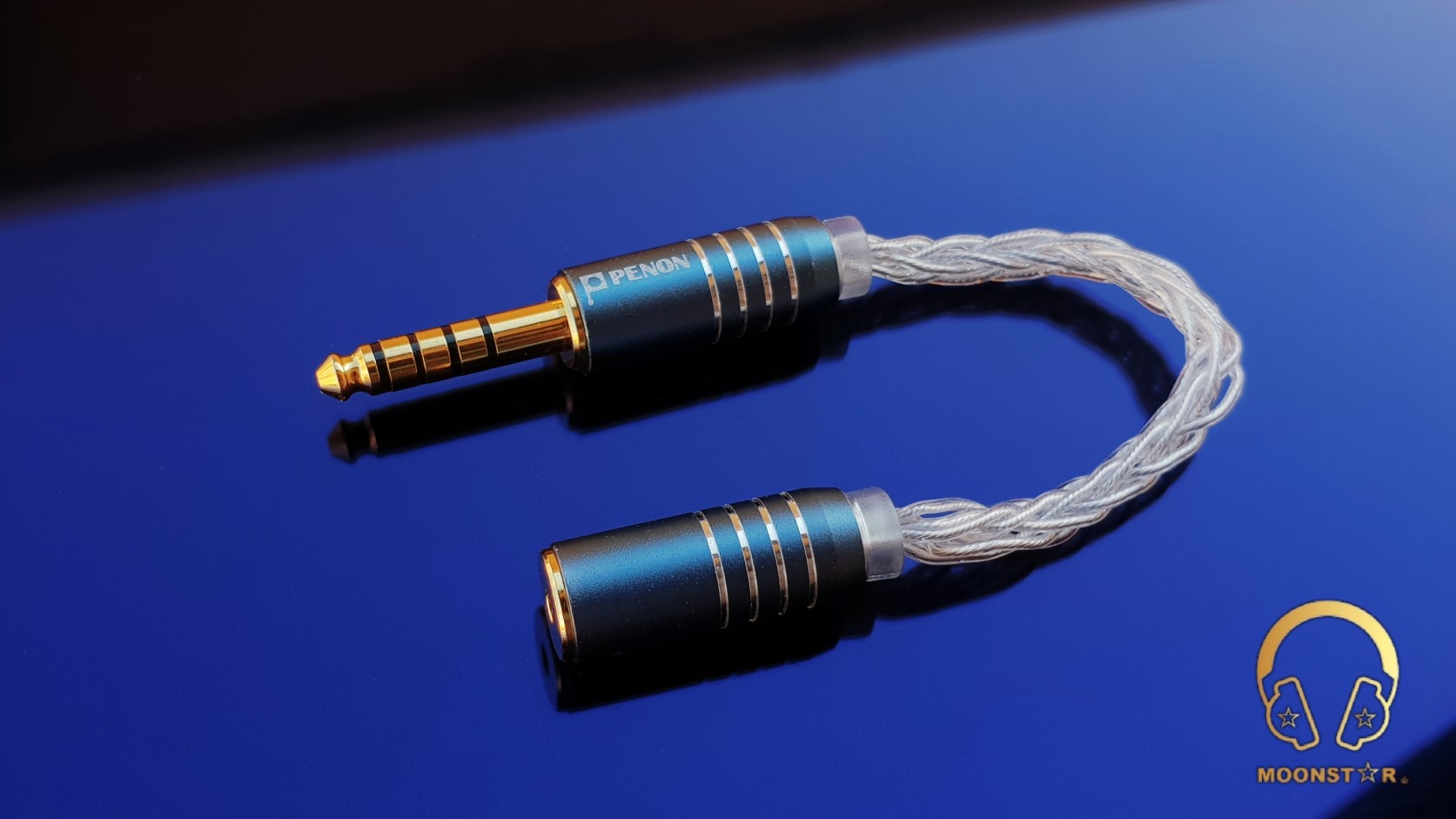
The cable is made of 3 parts; the male connector (headphone plug), the OCC wire and the female connector.

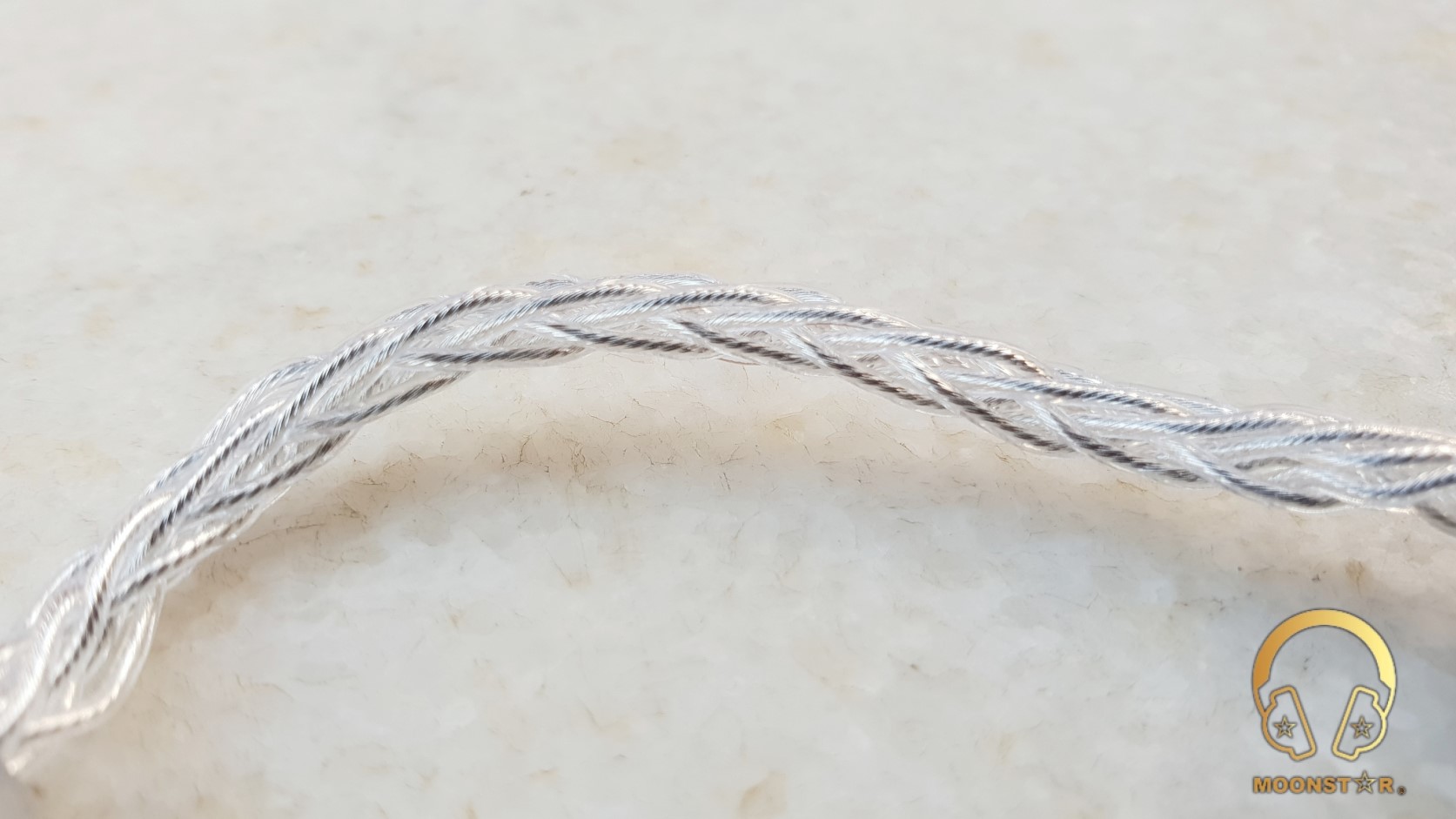
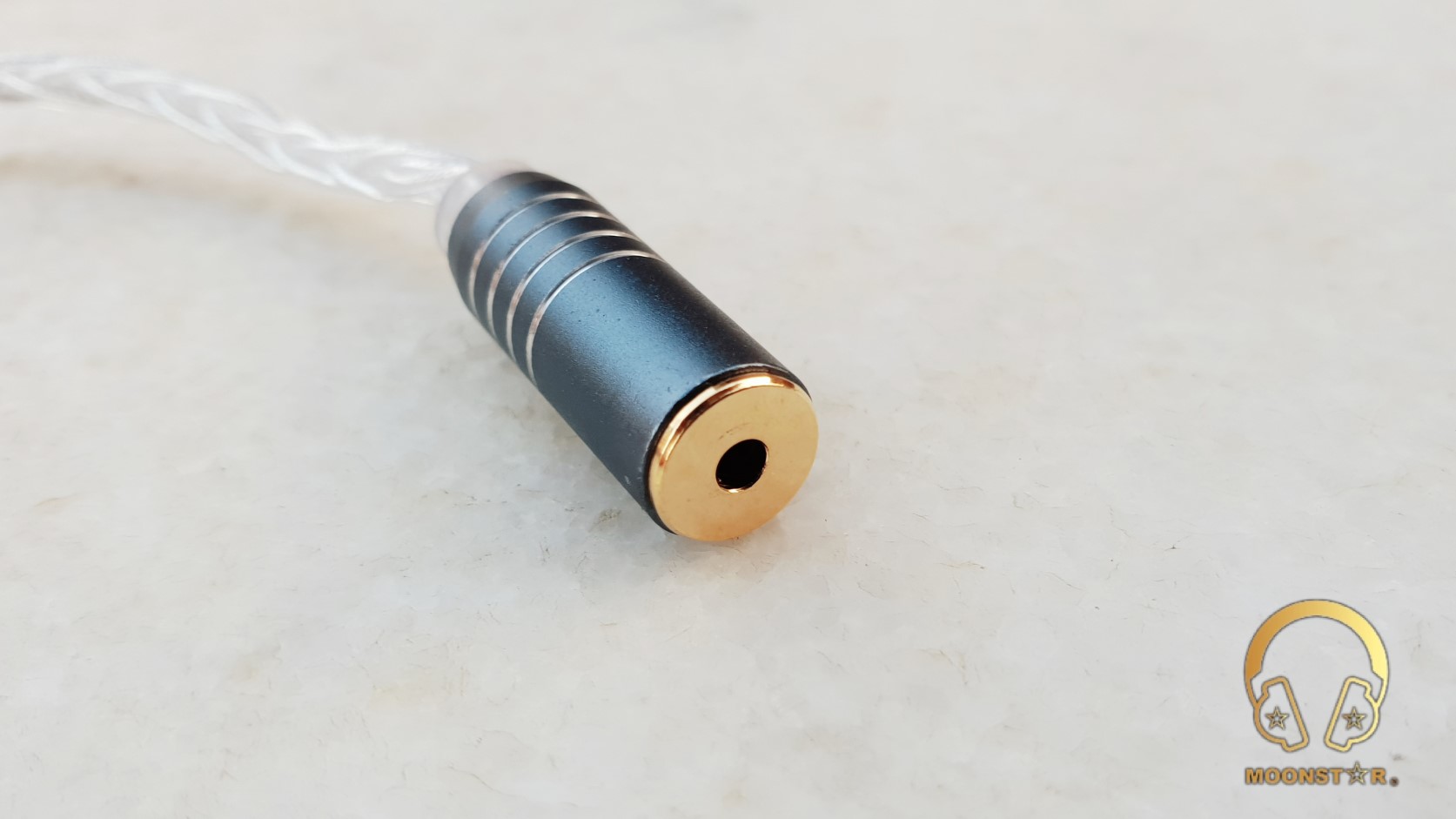
The cable of the adapter has a braided design and is made of silver plated OCC wire which is a Single Crystal Copper material. This cable features 8 cores and each core has 19 strands.

The cable wires have a nice TPU insulation which is transparent.
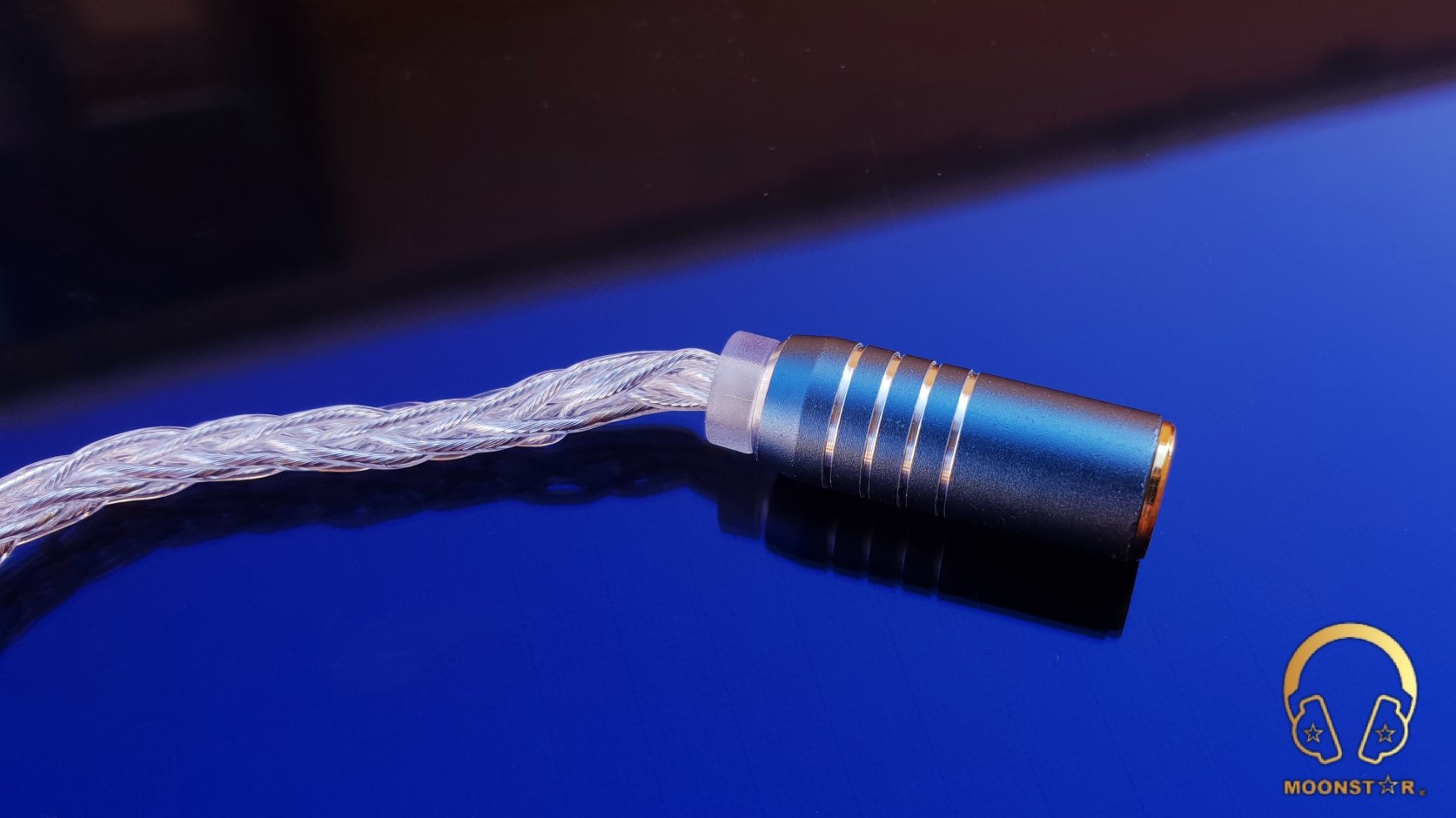
The sample I have received has a 4.4mm Pentaconn Balanced male headphone plug and a 2.5mm balanced female connector. The connectors and plugs are protected with a nice CNC machined metal housings.
Each of them features a transparent plastic strain relief for extra protection.

The cable is 8-9cm long and is showing a great craftsmanship.
Equipments used for this review:

Short Comparisons:
I have read before that adaptors are showing differences in sound performance and indeed there are differences between other adaptors. Now I want make some short comparisons with the Astrotec AT-P02 4.4mm and MEE audio 4.4mm adaptor.
Penon HiFi Adaptor:
The Penon HiFi adaptor shows the highest transparency and clarity level among those three adaptors. It has a slightly better instrument separation than the Astrotec AT-P02 adaptor. The midrange sounds crisper than the AT-P02 and has less warmth and body compared to the MEE Audio adaptor.
MEE audio Adaptor:
The MEE audio 4.4mm adaptor has a tad warmer and fuller tonality compared to the Penon HiFi and Astrotec AT-P02 adapters. It sounds slightly less crisp than the Penon HiFi adaptor and is fuller in the midrange compared to the Astrotec AT-P02. The MEE audio adapter has the smoothest treble presentation.
Astrotec AT-P02 Adaptor:
The Astrotec AT-P02 adaptor is a tad warmer in tonality compared to the Penon HiFi adaptor and shows a slightly better instrument separation than the MEE audio adaptor. The AT-P02 has a tad more midbass impact than the Penon HiFi adaptor but is slightly less in quantity compared to the MEE audio adapter.
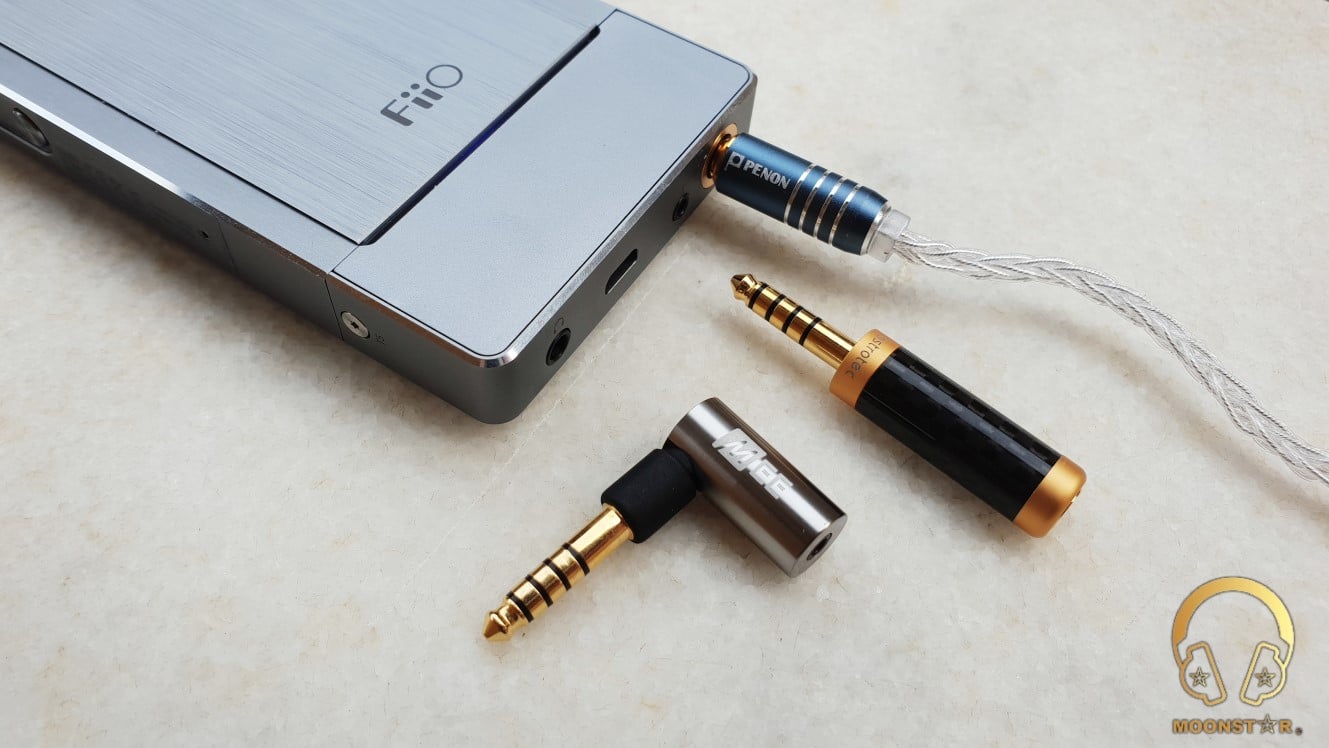
Conclusion:
The Penon HiFi Balanced Adapter Cable is a nice looking and very well made adaptor solution that you can use with your Earbuds, In-Ear Monitors, Digital Audio Players, DAC's (Digital to Analog Converters) and/or Amplifiers.
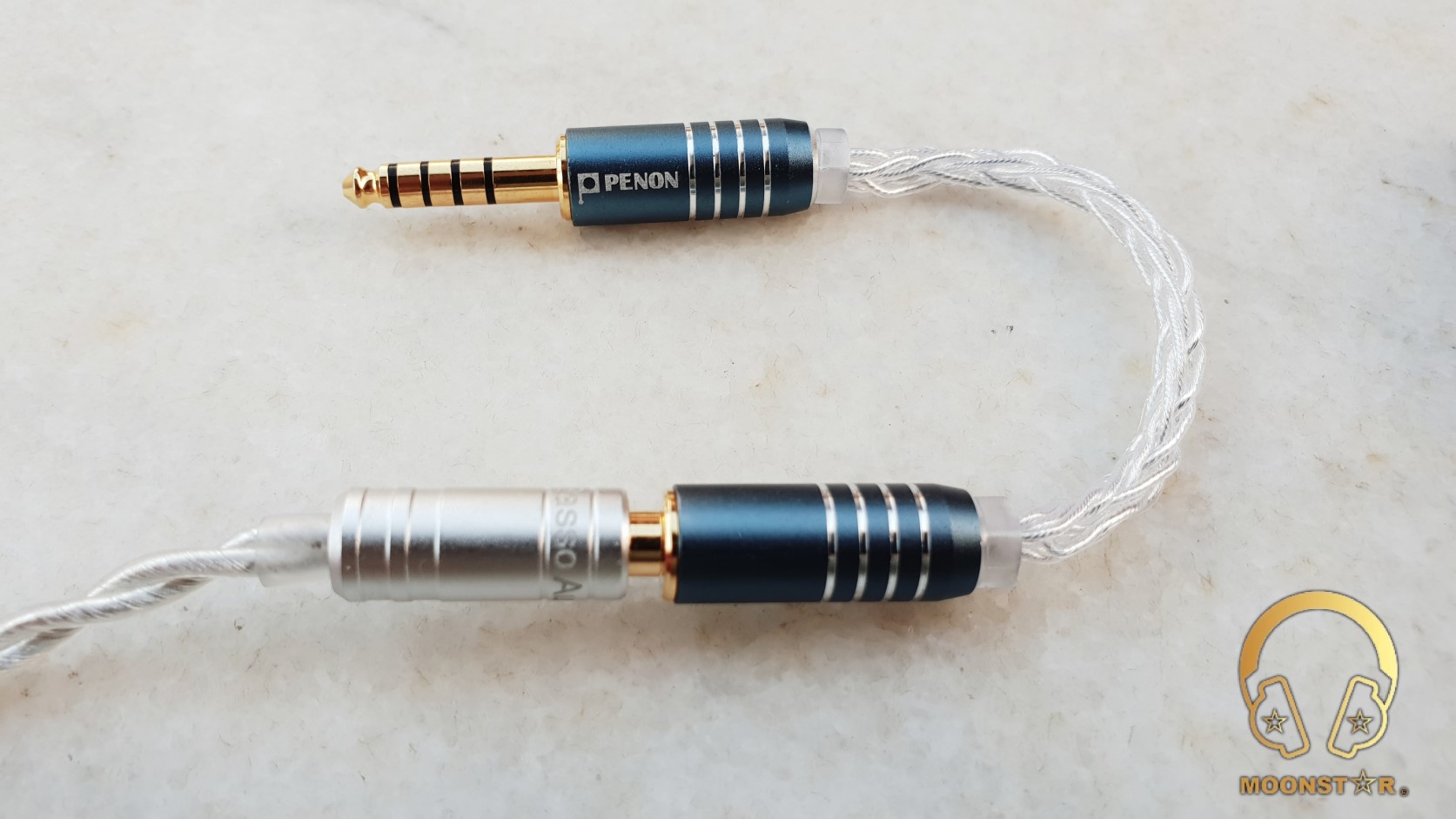
Pros and Cons:
About Penon Audio:
Penon Audio is a well known Hong Kong based online store that is selling portable Hi-Fi equipments, desktop type DAC’s and Amplifiers.

Disclaimer:
The Penon HiFi Balanced Adapter was provided to me by Penon Audio for review purposes. I am not affiliated with Penon Audio or any third person beyond this review and all these words reflect my true and unaltered, opinions about the product.
The Price:
The Penon HiFi Balanced Adapter Cable is a “Penon Exclusive” product and is available with the following connector variants;
- 4.4mm Balanced Male to 2.5mm Balanced Female
- 2.5mm Balanced Male to 4.4mm Balanced Female
- 2.5mm Balanced Male to 3.5mm Balanced Female
- 3.5mm Balanced Male to 4.4mm Balanced Female
- 3.5mm Balanced Male to 2.5mm Balanced Female
- 3.5mm Audio Male to 4.4mm Balanced Female
- 3.5mm Audio Male to 3.5mm Balanced Female
- 3.5mm Audio Male to 2.5mm Balanced Female
The price of the adapters varies between 28.90 – 29.90 USD (4.4mm adapters costing 1,00 USD more).
The purchase links for these adapters is bellow;
https://penon-official.com/product/penon-hifi-balanced-adapter-cable/
Package and Accessories:
The Penon HiFi Balanced Adapter Cable comes in a plastic box which has a sticker on the top that shows the “Penon” branding, the illustration of the adapter and some technical detail of the actual product.

At the backside of the box is a second sticker that shows the available adaptor variants and the adapter which has been purchased.

Inside the box are the following items;
- 1 pcs x Penon HiFi Balanced Adapter Cable
- 1 pcs x Penon Velvet Pouch



Technical Specifications:
- Material: 8 shares 19 cores silver plated OCC wire (Single Crystal Copper)
- Plug: 2.5mm balanced, 3.5mm Balanced, 4.4mm Balanced, 3.5mm Unbalanced (Gold Plated)
- Cable Length: 8-9cm
Design and Build Quality:
The Penon HiFi Balanced Adapter Cable for Earbuds, IEM’s, DAC’s, DAP’s and Amplifiers.

The cable is made of 3 parts; the male connector (headphone plug), the OCC wire and the female connector.



The cable of the adapter has a braided design and is made of silver plated OCC wire which is a Single Crystal Copper material. This cable features 8 cores and each core has 19 strands.

The cable wires have a nice TPU insulation which is transparent.

The sample I have received has a 4.4mm Pentaconn Balanced male headphone plug and a 2.5mm balanced female connector. The connectors and plugs are protected with a nice CNC machined metal housings.
Each of them features a transparent plastic strain relief for extra protection.

The cable is 8-9cm long and is showing a great craftsmanship.
Equipments used for this review:
- Adaptors : Penon HiFi 4.4mm/2.5mm Balanced Adapter Cable, Astrotec AT-P02
- 4.4mm/2.5mm adaptor, MEE audio 4.4mm/2.5mm Adaptor
- Cables : DUNU Hulk and iBasso IT01S cable with 2.5mm Balanced Plug
- DAPs/DACs : Sony WM1A, FiiO Q5s
- IEM's : iBasso IT01S, HiFiMAN RE2000

Short Comparisons:
I have read before that adaptors are showing differences in sound performance and indeed there are differences between other adaptors. Now I want make some short comparisons with the Astrotec AT-P02 4.4mm and MEE audio 4.4mm adaptor.
Penon HiFi Adaptor:
The Penon HiFi adaptor shows the highest transparency and clarity level among those three adaptors. It has a slightly better instrument separation than the Astrotec AT-P02 adaptor. The midrange sounds crisper than the AT-P02 and has less warmth and body compared to the MEE Audio adaptor.
MEE audio Adaptor:
The MEE audio 4.4mm adaptor has a tad warmer and fuller tonality compared to the Penon HiFi and Astrotec AT-P02 adapters. It sounds slightly less crisp than the Penon HiFi adaptor and is fuller in the midrange compared to the Astrotec AT-P02. The MEE audio adapter has the smoothest treble presentation.
Astrotec AT-P02 Adaptor:
The Astrotec AT-P02 adaptor is a tad warmer in tonality compared to the Penon HiFi adaptor and shows a slightly better instrument separation than the MEE audio adaptor. The AT-P02 has a tad more midbass impact than the Penon HiFi adaptor but is slightly less in quantity compared to the MEE audio adapter.

Conclusion:
The Penon HiFi Balanced Adapter Cable is a nice looking and very well made adaptor solution that you can use with your Earbuds, In-Ear Monitors, Digital Audio Players, DAC's (Digital to Analog Converters) and/or Amplifiers.

Pros and Cons:
- + Lots of Adaptor Variants
- + Great Build Quality and Appearance
- + Nice Velvet Carry Pouch
- - None
Moonstar
100+ Head-Fier
Pros: Small form factor,
Nice Accessory Package,
Great sound Quality,
Good Battery Life,
Low to none hissing
Nice Accessory Package,
Great sound Quality,
Good Battery Life,
Low to none hissing
Cons: none for this price
Nexum AQUA+ The 32 bit Wireless Headphone DAC & Amplifier

1. Disclaimer:
First of all, a big thanks to NEXUM for providing me a free sample of the AQUA+for review purposes. I am not affiliated with NEXUM beyond this review and these words reflect my true, unaltered opinions about the product.
2. About NEXUM:
NEXUM comes from Taiwan and is established in 2013 with focusing on wireless audio technology design. Over the years, NEXUM launched several products into the market like the MEMO, AQUA, TuneBox2 and LINKA. They are care about design to bring more value to our lives.
NEXUM Official Web Page: https://www.nexum-design.com/
Price: $139.00
3. What is the AQUA+:
The AQUA+ is Wireless operating DAC with a built in amplifier that supports Hi-Res music files with sampling rates up to 32bit 384K and is compatible with multiple operating systems like Windows, Mac, Android or IOS etc.

4. Package and Accessories:
The device comes in small card-box and contains the following items;



5. Design and Build Quality:
The NEXUM AQUA + is a small (4.5*4.5*1.2cm), lightweight (25g) and well made device that has a square shape with rounded corners. The AQUA+ has a frame that is made of aluminum, while the top and back covers/caps are made of plastic for a better wireless transmission.
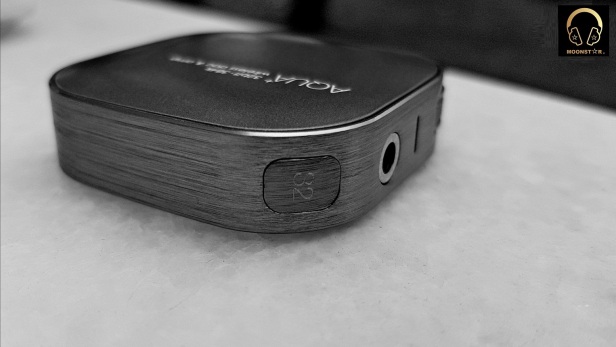
On the sides you can find the power button with a 32 bit marking, the volume wheel that has multiple functions, a led light and the 3.5mm headphone jack.
The NEXUM AQUA+ has three different options for the cover caps; these are midnight black, Sublime Gold and Radiant white. My device is Sublime Gold model.
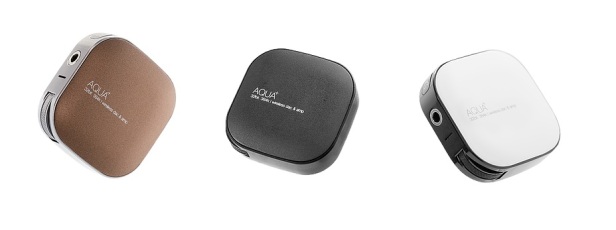
6. Technical Specifications:

7. Hardware and Operation:
The NEXUM AQUA + has some nice hardware specs like a high quality DAC, Wireless charging etc. that I will now explain for you.
a) DAC Section:
The DAC (Digital to Analog Converter) used in the NEXUM AQUA+ is the CS43130 of the Company Cirrus Logic Inc. that supports sampling rates up to 32bit – 384kHz. According to Cirrus Logic, the CS43130 features a high impedance of 600 Ω and inter channel isolation of >110 dB to minimize pre-echos and ringing artifacts.
The CS43130 is designed with proprietary digital-interpolation filters that support five selectable digital filter responses. Filtering options include low group delay with pseudo-linear phase and a fast or slow roll-off. Volume matching of the analog output levels and channel mixing enable a seamless transition between the DSD and PCM playback paths.
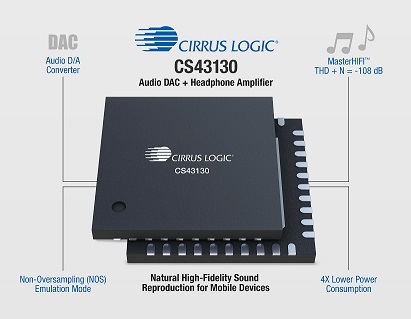
The onboard low noise, ground-centered headphone amplifier provides proprietary AC impedance detection to support headphone fingerprinting to provide a consistent and transparent audio experience for the end user regardless of transducer impedances or frequency responses.

b) AMP Section and Drivability:
The NEXUM AQUA + has an onboard amplifier that is integrated in to the CS43130 SOC (System on a Chip). The amplifier supports earphones & headphones with impedance between 8ohm-300ohm and has an output power rating of 7.5mW@300ohm per channel (1.5Vrms output).
The AQUA+ was able to drive my Audio-Technica ATH M50 to pretty loud volume levels.
According to Cirrus Logic, the onboard headphone amplifier provides proprietary AC impedance detection to support headphone fingerprinting to provide a consistent and transparent audio experience for the end user regardless of transducer impedances or frequency responses.

c) Bluetooth and supported Audio Codecs:
The AQUA+ supports the Bluetooth 4.2 protocol and different types of codecs. This means whenever you pair the AQUA+ with a Bluetooth device it selects the best possible codec that your audio source (DAP, Tablet, Smartphone) supports.
Supported codecs are aptX / aptXLL / AAC and SBC. That means that you no longer hear an FLAC, WAV, MP3, DSD, etc. music file. All audio formats will be decoded by the output device to PCM and then transcoded to aptX, AAC or SBC via Bluetooth audio (in 16bit) to AQUA+. Then AQUA+ leverages its 2 embedded chipsets, high-quality SRC & Hi-Res DAC, to convert it to 32bit.

What do these codes actually mean?
aptX:
In digital audio data reduction technology, aptX (formerly apt-X) is a family of proprietary audio codec compression algorithms currently owned by Qualcomm.
The aptX audio codec is used for wireless audio applications, notably the real-time streaming of lossy stereo audio over the Bluetooth A2DP connection/pairing between a “source” device such as a Smartphone, Tablet Laptop or a DAP. Products bearing the CSR aptX logo are certified for interoperability with each other. (Ref: Wikipedia)
aptX LL:
aptX LL = Low Latency is intended for video and gaming applications requiring comfortable audio-video synchronization whenever the stereo audio is transmitted over short-range radio to the listener(s) using the Bluetooth A2DP audio profile standard. The technology offers an end-to-end latency of 32 ms over Bluetooth. By comparison, the latency of standard Bluetooth stereo varies greatly depending on the system implementation and buffering. Solutions are available that use standard SBC encoding/decoding that achieve end-to-end latency of less than 40 ms. (Ref: Wikipedia)
AAC:
Advanced Audio Coding (AAC) is a proprietary audio coding standard for lossy digital audio compression. (Ref: Wikipedia)
SBC:
SBC, or low-complexity sub-band codec, is an audio sub-band codec specified by the Bluetooth Special Interest Group (SIG) for the Advanced Audio Distribution Profile (A2DP). SBC is a digital audio encoder and decoder used to transfer data to Bluetooth audio output devices like headphones or loudspeakers. It can also be used on the Internet.
It was designed to obtain a reasonably good audio quality at medium bit rates while keeping low computational complexity, having Bluetooth bandwidth limitations and processing power in mind. (Ref: Wikipedia)
How the Bluetooth pairing works:
The Bluetooth pairing of NEXUM AQUA + is quite simple and has an operating range of about 10 meters. You need to press to the 32 bit key until the led flashes in red and blue colors. This operation is needed only for the first time. For the next time you need only to power on the device and enable Bluetooth connection of your source (Smartphone, Tablet, etc.) and a female voice of the NEXUM AQUA + will say “device is connected”.
Please note, that the AQUA+ is designed for headphones with 3.5mm jacks and is unable to support wireless headphones.
d) Wireless Charging:
The Nexum AQUA+ supports the Qi Wireless charging that is an open interface standard that defines wireless power transfer using an inductive charging over distances of up to 4 cm (1.6 inches). Thanks to this feature, the only thing you should do is to but the AQUA+ on the charging pad that is included in the package AQUA+. The charging time takes about 2 hours and has even charge my Samsung Galaxy S8+ that also supports this feature.


e) Battery life:
According to NEXUM, the AQUA+ should be able to play for 8 hours @ 16bits and 5.5 hours @ 32bits on a full charge.
My test have show that the AQUA+ is able top ley for 7.5 – 8 Hours in 16 Bit mode and approx. 5 hours in 32 Bit mode. These values are pretty good for such a small and constantly wireless working device.
f) Background Noise / Hissing:
The NEXUM AQUA + is a very silent working device. There was small to non hissing with some of my sensitive IEM’s like the HiFi BOY OS V3 and Dunu Falcon-C. This is a great capability for a wireless working device.
g) Operation:
The Nexum AQUA+ is easy to handle and has two physical keys/buttons. The first key is the digital volume control wheel of the AQUA+ that supports 64 different volume points and that has also some multiple functions. These functions are Play/Pause (Short Press) /Next Song (Double Short) /Prev. Song (Triple Short).
The second is the 32 Bit key. The 32 Bit key operates as power on/off button and it also activates or deactivates the 32bit/384kHz up-sampling function of the device. The led light changes to a turquoise color when you activate this feature.
h) Microphone:
The headphone mic and wire control will not work while connected, but AQUA+ has a built-in mic and can perform wire control functions with the keys on the device.
8) Equipments used for this review:

9) Albums & tracks used for this review:
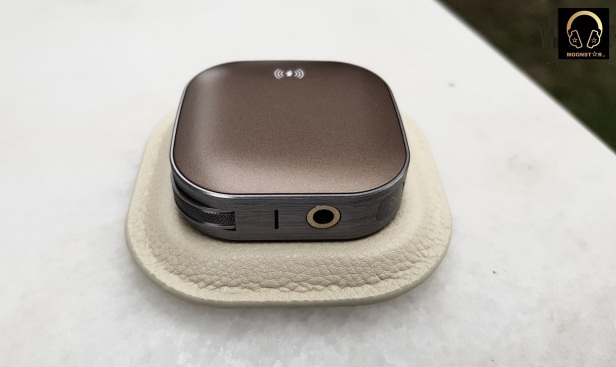
10. Sound:
I believe in burn-in and have done that for approx. 100 hours before I wrote this review.
Please note that this is a low budget Bluetooth DAC and all my comments about the sound quality are in consideration of this price range.
Tonality / Bass / Mid / Treble / Soundstage & Imagine:
The AQUA+ is a balanced sounding source with a relative flat frequency response and quite neutral tonality.
The AQUA+ is an energetic sounding device with a well extended and tight bass response. The bass is textured and it sounds pretty transparent. The most impressive part about the bass is the speed; it is pretty fast and accurate for a DAC (especially a Bluetooth one) in this price range.
As mentioned before the AQUA+ is a relative neutral sounding device around the whole sound spectrum. The midrange of this device sounds clear and transparent and has also a good amount of detail retrieval.
After some intensive vocal comparisons I have come to the conclusion that Female vocals like Lorde, Diana Krall or Melody Gardot sounded more natural and emotional then most of the male vocals I have listened during this review.
The instrument presentation sounded pretty natural with some of my IEMs like the HiFi BOY OS V3 and the TFZ TEQUILA1, but the especially the synergy with the AUDEZE iSine20 was very satisfying. The separation and definition of instruments is also pretty good.
The upper midrange of the AQUA+ sounds soft and quite controlled. There is no over sharpness that would be uncomfortable after long listening periods.
The treble range of the NEXUM AQUA + sounds fast, clear and vivid. It is not too bright or too smooth. The detail level is above average and presents a nice amount of shimmer/glimmer.
The soundstage of the AQUA+ is well extended and has a nice sense of space. The soundstage depth is above average but it is pretty wide in staging.
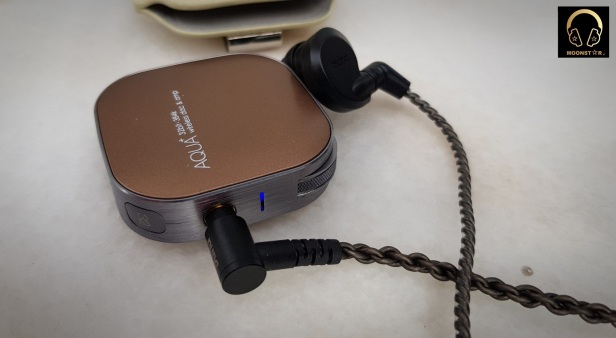
11. Comparison:
Nexum AQUA+ vs Astell&Kern XB10:
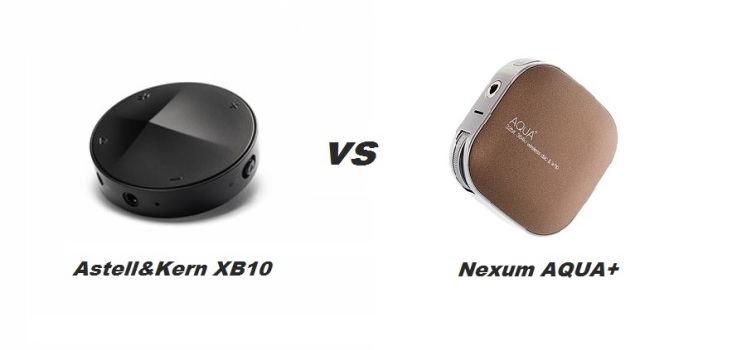
The Astell&Kern AK XB10 and the Nexum AQUA+ are one of the best choices if you are looking for a wireless DAC/AMP solution. They are sharing also the same retrial price.
a) Design & Build Quality:
Both devices are well made and very lightweight. The AK XB10 weights only 23g and the AQUA+ 25g.
The Astell&Kern XB10 has an all plastic shell while the AQUA+ has an aluminum frame with plastic caps. Both devices are very small and share the same form factor. The size of the XB10 is 5*5*12.3cm vs 4.5*4.5*1.2cm for the AQUA+.
b) Technical Specifications:
The AK XB10 has to headphone outputs, one for 2.5mm balanced wit a power output of 1.8Vrms and one 3.5mm single ended headphone out with a output power of 0.9Vrms. The AQUA+ has only one 3.5mm single ended output but with a higher output power of 1.5Vrms.
The AQUA+ supports the aptX/aptX LL/AAC/SBC Bluetooth Audio Codec’s, while the SBC, AAC, aptX and aptX HD. The main difference is that the AQUA+ supports aptX LL vs aptX HD for the XB10.
Both devices have a built in microphone that is needed for phone calls.
The AK XB10 has a battery life is around 5 hours while the AQUA+ is able to play up to 7.5 Hours. The AQUA+ has also the Qi Wireless charging option that is a nice extra.
Hi-Fi DAC of both devices is capable of reproducing high-quality sound. The AK XB10 supports sampling rates up to 24-bit/192 kHz, while the AQUA+ is capable to support sampling rates up to 32bit – 384kHz.
c) Sound Comparison:
The AQUA+ has a quite neutral tonality and a relative flat frequency response, while the Astell&Kern XB10 sounds warmer and has a V shaped frequency allocation.
The bass of the AQUA+ sounds faster, tighter and is more natural in presentation, while the AK XB10 has more quantity and depth.
The bass of the AQUA+ sounds cleaner, clearer and has more detail rendering compared to the XB10. The bass of the XB10 is not as tight as the AQUA+ and sounds a little bit loose.
The midrange presentation of the Astell&Kern XB10’s sounds a bit muffled compared the clearer midrange of the AQUA+. The Astell&Kern XB10 sounds better with Male vocals, while the AQUA+ performs better with female vocals.
I think that the AQUA+ has the upper hand in terms of instrument clarity, separation and naturalness.
The upper midrange of XB10 sounds a bit too stiff compared to the softer and more controlled sounding AQUA+.
The treble range of the Astell&Kern XB10 sounds pretty good, but it can not commentate with the performance of the Aqua+, which has the sharper, more extended and faster treble response. Because of these characteristics, the AQUA+ sounds like the better choice if you listen to tracks that need additional speed and control.
Both devices have a good soundstage performance, but the Astell&Kern XB10 has the better depth while the AQUA+ has the better send for soundstage wideness.

12. Conclusion:
The NEXUM AQUA+ is a good performer with its great features, nice build quality and quite detailed sound performance. People who are looking for a wireless DAC/Amp solution should definitely give the AQUA + a try.
13) Pros and Cons:
+ Small form factor
+ Nice Accessory Package
+ Great sound Quality
+ Good Battery Life
+ Low to none hissing
– None for this price
[last edit 08.03.2018]

This review was originally posted on my Review Blog "Moonstar Reviews" :
https://moonstarreviews.net

1. Disclaimer:
First of all, a big thanks to NEXUM for providing me a free sample of the AQUA+for review purposes. I am not affiliated with NEXUM beyond this review and these words reflect my true, unaltered opinions about the product.
2. About NEXUM:
NEXUM comes from Taiwan and is established in 2013 with focusing on wireless audio technology design. Over the years, NEXUM launched several products into the market like the MEMO, AQUA, TuneBox2 and LINKA. They are care about design to bring more value to our lives.
NEXUM Official Web Page: https://www.nexum-design.com/
Price: $139.00
3. What is the AQUA+:
The AQUA+ is Wireless operating DAC with a built in amplifier that supports Hi-Res music files with sampling rates up to 32bit 384K and is compatible with multiple operating systems like Windows, Mac, Android or IOS etc.

4. Package and Accessories:
The device comes in small card-box and contains the following items;
- 1 x AQUA+
- 1 x Charging Pad
- 1 x Leather Clip
- 1 x microUSB cable
- 1 x User Manual



5. Design and Build Quality:
The NEXUM AQUA + is a small (4.5*4.5*1.2cm), lightweight (25g) and well made device that has a square shape with rounded corners. The AQUA+ has a frame that is made of aluminum, while the top and back covers/caps are made of plastic for a better wireless transmission.

On the sides you can find the power button with a 32 bit marking, the volume wheel that has multiple functions, a led light and the 3.5mm headphone jack.
The NEXUM AQUA+ has three different options for the cover caps; these are midnight black, Sublime Gold and Radiant white. My device is Sublime Gold model.

6. Technical Specifications:
- Audio Codec : aptX/aptX LL/AAC/SBC
- Support Impedance : 8ohm-300ohm
- Output Power : 7.5mW@300ohm per channel (1.5Vrms output)
- Bluetooth Range : 10M
- Noise Level : -93dB
- Dynamic Range : 92.7dB
- THD+N @1KHz : 0.0067%
- Stereo Crosstalk : -92.5dB
- Microphone : MEMS type with high sensitivity
- Charging time : 2hours
- Certifications : BQB/FCC/CE/NCC
- Size : 4.5*4.5*1.2cm
- Weight : 25g

7. Hardware and Operation:
The NEXUM AQUA + has some nice hardware specs like a high quality DAC, Wireless charging etc. that I will now explain for you.
a) DAC Section:
The DAC (Digital to Analog Converter) used in the NEXUM AQUA+ is the CS43130 of the Company Cirrus Logic Inc. that supports sampling rates up to 32bit – 384kHz. According to Cirrus Logic, the CS43130 features a high impedance of 600 Ω and inter channel isolation of >110 dB to minimize pre-echos and ringing artifacts.
The CS43130 is designed with proprietary digital-interpolation filters that support five selectable digital filter responses. Filtering options include low group delay with pseudo-linear phase and a fast or slow roll-off. Volume matching of the analog output levels and channel mixing enable a seamless transition between the DSD and PCM playback paths.

The onboard low noise, ground-centered headphone amplifier provides proprietary AC impedance detection to support headphone fingerprinting to provide a consistent and transparent audio experience for the end user regardless of transducer impedances or frequency responses.

b) AMP Section and Drivability:
The NEXUM AQUA + has an onboard amplifier that is integrated in to the CS43130 SOC (System on a Chip). The amplifier supports earphones & headphones with impedance between 8ohm-300ohm and has an output power rating of 7.5mW@300ohm per channel (1.5Vrms output).
The AQUA+ was able to drive my Audio-Technica ATH M50 to pretty loud volume levels.
According to Cirrus Logic, the onboard headphone amplifier provides proprietary AC impedance detection to support headphone fingerprinting to provide a consistent and transparent audio experience for the end user regardless of transducer impedances or frequency responses.

c) Bluetooth and supported Audio Codecs:
The AQUA+ supports the Bluetooth 4.2 protocol and different types of codecs. This means whenever you pair the AQUA+ with a Bluetooth device it selects the best possible codec that your audio source (DAP, Tablet, Smartphone) supports.
Supported codecs are aptX / aptXLL / AAC and SBC. That means that you no longer hear an FLAC, WAV, MP3, DSD, etc. music file. All audio formats will be decoded by the output device to PCM and then transcoded to aptX, AAC or SBC via Bluetooth audio (in 16bit) to AQUA+. Then AQUA+ leverages its 2 embedded chipsets, high-quality SRC & Hi-Res DAC, to convert it to 32bit.

What do these codes actually mean?
aptX:
In digital audio data reduction technology, aptX (formerly apt-X) is a family of proprietary audio codec compression algorithms currently owned by Qualcomm.
The aptX audio codec is used for wireless audio applications, notably the real-time streaming of lossy stereo audio over the Bluetooth A2DP connection/pairing between a “source” device such as a Smartphone, Tablet Laptop or a DAP. Products bearing the CSR aptX logo are certified for interoperability with each other. (Ref: Wikipedia)
aptX LL:
aptX LL = Low Latency is intended for video and gaming applications requiring comfortable audio-video synchronization whenever the stereo audio is transmitted over short-range radio to the listener(s) using the Bluetooth A2DP audio profile standard. The technology offers an end-to-end latency of 32 ms over Bluetooth. By comparison, the latency of standard Bluetooth stereo varies greatly depending on the system implementation and buffering. Solutions are available that use standard SBC encoding/decoding that achieve end-to-end latency of less than 40 ms. (Ref: Wikipedia)
AAC:
Advanced Audio Coding (AAC) is a proprietary audio coding standard for lossy digital audio compression. (Ref: Wikipedia)
SBC:
SBC, or low-complexity sub-band codec, is an audio sub-band codec specified by the Bluetooth Special Interest Group (SIG) for the Advanced Audio Distribution Profile (A2DP). SBC is a digital audio encoder and decoder used to transfer data to Bluetooth audio output devices like headphones or loudspeakers. It can also be used on the Internet.
It was designed to obtain a reasonably good audio quality at medium bit rates while keeping low computational complexity, having Bluetooth bandwidth limitations and processing power in mind. (Ref: Wikipedia)
How the Bluetooth pairing works:
The Bluetooth pairing of NEXUM AQUA + is quite simple and has an operating range of about 10 meters. You need to press to the 32 bit key until the led flashes in red and blue colors. This operation is needed only for the first time. For the next time you need only to power on the device and enable Bluetooth connection of your source (Smartphone, Tablet, etc.) and a female voice of the NEXUM AQUA + will say “device is connected”.
Please note, that the AQUA+ is designed for headphones with 3.5mm jacks and is unable to support wireless headphones.
d) Wireless Charging:
The Nexum AQUA+ supports the Qi Wireless charging that is an open interface standard that defines wireless power transfer using an inductive charging over distances of up to 4 cm (1.6 inches). Thanks to this feature, the only thing you should do is to but the AQUA+ on the charging pad that is included in the package AQUA+. The charging time takes about 2 hours and has even charge my Samsung Galaxy S8+ that also supports this feature.


e) Battery life:
According to NEXUM, the AQUA+ should be able to play for 8 hours @ 16bits and 5.5 hours @ 32bits on a full charge.
My test have show that the AQUA+ is able top ley for 7.5 – 8 Hours in 16 Bit mode and approx. 5 hours in 32 Bit mode. These values are pretty good for such a small and constantly wireless working device.
f) Background Noise / Hissing:
The NEXUM AQUA + is a very silent working device. There was small to non hissing with some of my sensitive IEM’s like the HiFi BOY OS V3 and Dunu Falcon-C. This is a great capability for a wireless working device.
g) Operation:
The Nexum AQUA+ is easy to handle and has two physical keys/buttons. The first key is the digital volume control wheel of the AQUA+ that supports 64 different volume points and that has also some multiple functions. These functions are Play/Pause (Short Press) /Next Song (Double Short) /Prev. Song (Triple Short).
The second is the 32 Bit key. The 32 Bit key operates as power on/off button and it also activates or deactivates the 32bit/384kHz up-sampling function of the device. The led light changes to a turquoise color when you activate this feature.
h) Microphone:
The headphone mic and wire control will not work while connected, but AQUA+ has a built-in mic and can perform wire control functions with the keys on the device.
8) Equipments used for this review:
- DAC’s : Nexum AQUA +, Astell&Kern XB10
- Digital Sources : Ipad Air 2, Samsung Galaxy S8+
IEM’s : Audeze iSine20, Dunu Flacon-C, TFZ TEQUILA1,
Earbuds : Penon BS1 Official Version, NiceHCK EBX, HiFi BOY Dream - Headphones : Audio-Technica ATH50M

9) Albums & tracks used for this review:
- Sebastian Ingrosso, Thommy Trash &John M. – Reload (Apple Music)
- Michael Jackson – Billie Jean (DSD)
- Casey Abrams – Robot Lovers (Tidal Hi-Fi)
- Emmanuel Pahud (Claude Debussy) – Syrinx (Flac 16bit/44kHz)
- Melody Gardot – Who Will Comfort Me (Flac 16bit/44kHz)
- Aretha Franklin – I Say a Little Prayer (DSF)
- Diana Krall – So Wonderful (DSF)
- Otto Liebert & Luna Negra – Up Close “Album” (DSD) – Binaural Recording
- Alboran Trio’s – Cinque Lunghissimi Minuti (Flac 16bit/44kHz)
- Megadeth – Sweating Bullets (Flac 16bit/44kHz)
- Opeth – Damnation (Tidal Hi-Fi)
- Metallica – The Black Album (Flac 24bit/96Hz)
- Lorde – Royals (Flac 24bit/48kHz)

10. Sound:
I believe in burn-in and have done that for approx. 100 hours before I wrote this review.
Please note that this is a low budget Bluetooth DAC and all my comments about the sound quality are in consideration of this price range.
Tonality / Bass / Mid / Treble / Soundstage & Imagine:
The AQUA+ is a balanced sounding source with a relative flat frequency response and quite neutral tonality.
The AQUA+ is an energetic sounding device with a well extended and tight bass response. The bass is textured and it sounds pretty transparent. The most impressive part about the bass is the speed; it is pretty fast and accurate for a DAC (especially a Bluetooth one) in this price range.
As mentioned before the AQUA+ is a relative neutral sounding device around the whole sound spectrum. The midrange of this device sounds clear and transparent and has also a good amount of detail retrieval.
After some intensive vocal comparisons I have come to the conclusion that Female vocals like Lorde, Diana Krall or Melody Gardot sounded more natural and emotional then most of the male vocals I have listened during this review.
The instrument presentation sounded pretty natural with some of my IEMs like the HiFi BOY OS V3 and the TFZ TEQUILA1, but the especially the synergy with the AUDEZE iSine20 was very satisfying. The separation and definition of instruments is also pretty good.
The upper midrange of the AQUA+ sounds soft and quite controlled. There is no over sharpness that would be uncomfortable after long listening periods.
The treble range of the NEXUM AQUA + sounds fast, clear and vivid. It is not too bright or too smooth. The detail level is above average and presents a nice amount of shimmer/glimmer.
The soundstage of the AQUA+ is well extended and has a nice sense of space. The soundstage depth is above average but it is pretty wide in staging.

11. Comparison:
Nexum AQUA+ vs Astell&Kern XB10:

The Astell&Kern AK XB10 and the Nexum AQUA+ are one of the best choices if you are looking for a wireless DAC/AMP solution. They are sharing also the same retrial price.
a) Design & Build Quality:
Both devices are well made and very lightweight. The AK XB10 weights only 23g and the AQUA+ 25g.
The Astell&Kern XB10 has an all plastic shell while the AQUA+ has an aluminum frame with plastic caps. Both devices are very small and share the same form factor. The size of the XB10 is 5*5*12.3cm vs 4.5*4.5*1.2cm for the AQUA+.
b) Technical Specifications:
The AK XB10 has to headphone outputs, one for 2.5mm balanced wit a power output of 1.8Vrms and one 3.5mm single ended headphone out with a output power of 0.9Vrms. The AQUA+ has only one 3.5mm single ended output but with a higher output power of 1.5Vrms.
The AQUA+ supports the aptX/aptX LL/AAC/SBC Bluetooth Audio Codec’s, while the SBC, AAC, aptX and aptX HD. The main difference is that the AQUA+ supports aptX LL vs aptX HD for the XB10.
Both devices have a built in microphone that is needed for phone calls.
The AK XB10 has a battery life is around 5 hours while the AQUA+ is able to play up to 7.5 Hours. The AQUA+ has also the Qi Wireless charging option that is a nice extra.
Hi-Fi DAC of both devices is capable of reproducing high-quality sound. The AK XB10 supports sampling rates up to 24-bit/192 kHz, while the AQUA+ is capable to support sampling rates up to 32bit – 384kHz.
c) Sound Comparison:
The AQUA+ has a quite neutral tonality and a relative flat frequency response, while the Astell&Kern XB10 sounds warmer and has a V shaped frequency allocation.
The bass of the AQUA+ sounds faster, tighter and is more natural in presentation, while the AK XB10 has more quantity and depth.
The bass of the AQUA+ sounds cleaner, clearer and has more detail rendering compared to the XB10. The bass of the XB10 is not as tight as the AQUA+ and sounds a little bit loose.
The midrange presentation of the Astell&Kern XB10’s sounds a bit muffled compared the clearer midrange of the AQUA+. The Astell&Kern XB10 sounds better with Male vocals, while the AQUA+ performs better with female vocals.
I think that the AQUA+ has the upper hand in terms of instrument clarity, separation and naturalness.
The upper midrange of XB10 sounds a bit too stiff compared to the softer and more controlled sounding AQUA+.
The treble range of the Astell&Kern XB10 sounds pretty good, but it can not commentate with the performance of the Aqua+, which has the sharper, more extended and faster treble response. Because of these characteristics, the AQUA+ sounds like the better choice if you listen to tracks that need additional speed and control.
Both devices have a good soundstage performance, but the Astell&Kern XB10 has the better depth while the AQUA+ has the better send for soundstage wideness.

12. Conclusion:
The NEXUM AQUA+ is a good performer with its great features, nice build quality and quite detailed sound performance. People who are looking for a wireless DAC/Amp solution should definitely give the AQUA + a try.
13) Pros and Cons:
+ Small form factor
+ Nice Accessory Package
+ Great sound Quality
+ Good Battery Life
+ Low to none hissing
– None for this price
[last edit 08.03.2018]

This review was originally posted on my Review Blog "Moonstar Reviews" :
https://moonstarreviews.net
SexAndManCity
I can get behind this. I picked one up from their Kickstarter campaign and have been very impressed with its capabilities. It powered my Mitchell & Johnson GL2SE really well, providing a powerful, clear and detailed sound but I mainly use it connected to my amp at home for convenience. The 32 bit upsampling really makes up for the inadequacies of streaming services like Spotify and Amazon Music.
Peddler
Outstanding review - you're really setting the standard here Moonstar. I also have one of these and I think they're surprisingly excellent.
Moonstar
Thank you very much for your nice words  Yes I was also very surprised for the first time. Nexum did a really good job with the Aqua+ !
Yes I was also very surprised for the first time. Nexum did a really good job with the Aqua+ !
 Yes I was also very surprised for the first time. Nexum did a really good job with the Aqua+ !
Yes I was also very surprised for the first time. Nexum did a really good job with the Aqua+ !Moonstar
100+ Head-Fier
Pros: High price to performance ratio,
Good detail and clarity,
Nice and solid metal housing,
Many cables (great to see a free Bluetooth cable)
Good detail and clarity,
Nice and solid metal housing,
Many cables (great to see a free Bluetooth cable)
Cons: No backup for the small sound filters,
Missing of some dynamism of the sound,
Only two pairs of silicone eartips, but lots of foam tips
Missing of some dynamism of the sound,
Only two pairs of silicone eartips, but lots of foam tips
Magaosi K3Pro 2.0
The bang for The buck!
Introduction:
Magaosi is a brand of HiLisening Co. that is located in Guangdong - China. The Magaosi product line is covering products series marked with M, BK, K, DT and B. The M series have mainly a metallic housing with Balance Armature and /or Hybrid Drivers. The BK series have wood housing with Balance Armature and/or Dynamic Hybrid drivers.
The K3Pro 2.0 is the updated version of the original K3Pro with additional upgrade cable, which belongs to the top of the line product category with 2 (BA) +1 (DD) Hybrid driver configuration.

Disclaimer:
Magaosi K3Pro 2.0 was provided to me by Magaosi via Penon Audio for free of charge as a review sample. I am not affiliated with Magaosi or Penon Audio beyond this review and these words reflect my true, unaltered, opinions about the product.
The Price:
The Magaosi K3Pro 2.0 is available on Penon Audio for 109,90 USD.
Purchase link: https://penonaudio.com/magaosi-k3-pro.html
Package and Accessories:
The Magaosi K3.Pro 2.0 comes in a black cardboard box with the Magaosi Logo, which is printed in gold color. This box has a transparent plastic (pvc) window, where you can see the Magaosi K3Pro 2.0
This box containing the following items/accessories;


The carry bag that comes with the Magaosi K3Pro 2.0 is made of a faux leather coating, which is well made and quite useful with its dimensions.
The foam and semi transparent (white) silicone ear tips are quite comfortable.
There are also 2 different types of sound tuning filters. The black one came preinstalled, which boost the treble range by a small but noticeable margin. The silver sounds more balanced and is my favorite filter, which I will also use during this review.

I would advice you to be carefully while replacing the filters, because these filters are very small and there is no backup included to the package.

Cables:
The Magaosi K3Pro 2.0 comes with 3 different cables that are included to the package.
The first cable comes with a microphone that was compatible with my Samsung Galaxy S8+ with Android OS.

The cable is in black and has a straight plug that is made of metal.

The MMCX connectors are also made of metal and have Left and Right markings. The ear guides are a bit stiff but without any discomfort.

The second cable is the upgrade cable, which has a stylish appearance with a transparent coating and thick, braided cable wire that sports also a Y splitter, which is made of metal and a plastic chin slider.

The MMCX connectors and the headphone plug have a housing that is made of metal. These MMCX connectors are marked in red for right and blue the left channel.

The 3.5mm headphone jack (TRRS) has an angled connector housing that looks quite stylish with its design.

The third and cable, which comes with the Magaosi K3Pro 2.0 is a Bluetooth cable with build in DAC and amplifier with build a build in battery, which is in my opinion a very nice addition.

This Bluetooth cable is lightweight and made of plastic material. There are 3 buttons and one mic for phone conversations. The sound is not bad at all for a free accessory, while the battery life is approx. 2.5 hours.
Design and Build Quality:
The Magaosi K3Pro 2.0 is an In-Ear Monitor with a pretty small size and ergonomic design, which is made of a all metal aluminum alloy that looks and feels quite solid in its appearance.

The Magaosi K3Pro 2.0 is available in 3 different colors; those are gray, silver and blue. My review unit came gray color that looks pretty nice.

I have read that some units at the first batch of the original K3Pro have had connector issues, which has been solved according to Magaosi. The MMCX (Micro Miniature Coaxial) connectors of my Magaosi K3Pro 2.0 review units have had no interruption issues during this review.
The nozzle is slightly angled (around 45 degrees) and has a detachable sound filter for fine-tuning of the sound.

Fit, Comfort and Isolation:
The Magaosi K3Pro 2.0 is an In-Ear Monitor (IEM) with a small and ergonomic design. I didn’t have had any discomfort issues due this review and could wear it for many ours without any noticeable fatigue my ears. The noise isolation of the K3Pro 2.0 is above average and good enough to use it in quite noise public environments, but not ideal for the stage.

Some Technical Specifications:
Drivability (Impedance):
The Magaosi K3Pro 2.0 is a sensitive IEM, which is easy to drive from almost any source. The nominal impedance that is 16 Ohm makes it suitable for the use with portable devices like Smartphones, Tablet’s or DAP’s without the need of any amplifier.
Sources:
a) In Ear Monitor : Magaosi K3Pro, MEE audio Pinnacle P1,
b) DAP/DAC : Hidizs HD1000, Cayin N5II, Chord Mojo, Ipad Air2

c) Albums & tracks used for this review:
Sound Analysis and Comparisons:
Please note that this review is written after a burn-in process of more than 120 hours. I have use the semi transparent silicone eartips, the silver filter and the upgrade cable that are included to the package.
Please note that this is an entry level mid-fi IEM and all my comments about the sound quality are in consideration of this price range.
Sound Signature and Tonality:
The Magaosi K3Pro 2.0 has a slightly V shaped sound signature with a warmer than neutral tonality that is adding some musicality to the overall presentation.
Bass:
The Magasoi K3Pro is a solid performer in the bass department, which is focused on the mid-bass area.
The sub-bass is there but not in the foreground or better say the highlight of this IEM. It is reachs to a pretty low register, but is missing a bit of rumble and weight, which offers otherwise great control and texture.
The bass, especially the mid-bass area sounds quite controlled and has good speed characteristics. The K3Pro have had a very good performance with Morbid Angel’s – Drum Check, which is my new reference song regarding to speed and control, which has show me how good a Chi-fi IEM in this price category can perform.
The mid-bass are a real highlight of this IEM. It extends well, has good texture and nice slam when it called for. There is a nice transition between bass and the midrange, where I didn’t hear any remarkable bleed of the mid-bass to the midrange.
Some instruments like drums, bass guitars etc. sounding quite natural and are exiting.
Midrange:
The midrange sounds clean and transparent, with velvet like presentation. It doesn’t sounds thin or very full and has a nice balanced presentation. There is a nice amount of warmth that comes fro the lower midrange, which is avoiding a dry and too analytical presentation and is adding musicality to the overall presentation.
Vocals are one step behind of instruments and sounding in a quite natural way. Here is also a nice sense of space and where you can find enough air between instruments. Both, male and female vocals are represented in quite realistic way and have enough emotion to bring you in to the middle of the stage. The midrange shares also some nice definition, with pretty good detail retrieval at this price range, where string instruments like violin, guitar etc. have a nice presentation.
The upper midrange of the Magaosi K3Pro 2.0 sounds dynamic and fairly controlled, without to be overly harsh or ear piercing. People who are sensitive in this regarding will like the tuning of the K3Pro 2.0.
Treble:
The Magaosi K3Pro 2.0 has a quite balanced treble presentation that doesn’t sounds too bright or harsh and the overall control in this area is pretty good for an IEM in the mid-fi category.
The clarity level and definition is pretty good and the general treble presentation is at the natural and relaxing side of IEM’s with a V Shaped sound signature.
There is also a nice rendering of air that opens space for instruments, which is especially good for songs with many instruments like Charly Antolini's - Duwadjuwandadu. The treble extension has an above average performance, with no significant sibilance thanks to the fairly balanced tuning in the higher frequency region of the Magaosi K3Pro 2.0.
The upper treble region has a fairly good level of resolution, together with a crisp and airy presentation, which is a great ability especially in this price category.
Soundstage:
The soundstage of the Magaosi K3Pro 2.0 is quite expansive with its wideness, while the depth is in a moderate level. Instruments are placed in a horizontal direction where the vocal is in the middle of the stage.

Some Comparisons:
Vs. iBasso IT01
The iBasso IT01 is a very capable IEM with a very energetic and crisp presentation.
When I compare the iBasso IT01 with the Magaosi K3Pro 2.0, one of the first noticeable differences is in the treble response. The treble range of the IT01 is more energetic and crisp than those of the K3Pro 2.0, which has less presence, especially in the upper treble range. The Magaosi IEM maybe doesn’t sounds as energetic as the IT01 in this department, but offers better balance and has also slightly more control.
Instruments and vocals are slightly more upfront with the iBasso IT01, while the Magaosi K3Pro 2.0 has a touch warmer and darker presentation. The difference is very low, but the K3Pro 2.0 offers additional detail level and slightly better separation of instruments. The upper midrange of the iBasso IT01 sounds a bit more lifelike.
The iBasso IT01 has more bass impact and rumble, which makes the overall presentation more dynamic. The Magaosi K3Pro 2.0 on the other hand has slightly better extension. The bass speed of booth IEM is nearly identical maybe a touch faster with the IT01, while the K3Pro 2.0 sounds a bit more controlled.
The soundstage of the Magaosi K3Pro 2.0 is slightly deeper then those of the iBasso IT01 while both are nearly identical for wideness.
Vs. MEE audio Pinnacle P2
The MEE audio Pinnacle P2 and Magaosi K3Pro 2.0 have similarities for tonality; both are on the warmer side of neutral, while the Pinnacle P2 has slightly more bass emphasis a bit more roll-off of at the treble range.
The Magaosi K3Pro 2.0 sound a bit brighter and has a smooth and fairly controlled treble tuning. The Pinnacle P2 on the other hand sounds darker and has a noticeable roll-off in treble range. The Magaosi K3Pro 2.0 is the more capable IEM, due the better extension and more authority in the treble range. The Magaosi K3Pro 2.0 is also slightly faster, especially with music genres like metal music, for which are both not very suitable.
The midrange of the Pinncale P2 sounds a bit veiled and grainy compared to the more transparent tuning of the K3Pro 2.0. The Pinnacle P2 sounds engaging but a bit too thin and dry, especially while listening to male vocals. The Magaosi IEM sounds also a bit more detail and has the better instrument separation. I can also confirm that the upper midrange of the Pinnacle P2 is slightly more forward and has a bit more definition, while K3Pro 2.0 offers better control.
The iBasso IT01 has more bass impact and rumble, which makes the overall presentation more dynamic. The Magaosi K3Pro 2.0 on the other hand has the slightly better extension, while the speed of both IEM's is nearly identical maybe a touch faster with the IT01.
The soundstage of the Magaosi K3Pro 2.0 is slightly deeper then those of the iBasso IT01 while both are nearly identical for wideness.
Conclusion:
I can easily say that the Magaosi K3Pro 2.0 is a real bang for the buck. It has a good sound, a solid metal housing (no plastic used) and lots of accessories, which makes it to one of the best options in this price category.
Pros and Cons:

.
.
.
This review was originally posted on "Moonstar Reviews" :
https://moonstarreviews.net
.
.
.
.
The bang for The buck!
Introduction:
Magaosi is a brand of HiLisening Co. that is located in Guangdong - China. The Magaosi product line is covering products series marked with M, BK, K, DT and B. The M series have mainly a metallic housing with Balance Armature and /or Hybrid Drivers. The BK series have wood housing with Balance Armature and/or Dynamic Hybrid drivers.
The K3Pro 2.0 is the updated version of the original K3Pro with additional upgrade cable, which belongs to the top of the line product category with 2 (BA) +1 (DD) Hybrid driver configuration.

Disclaimer:
Magaosi K3Pro 2.0 was provided to me by Magaosi via Penon Audio for free of charge as a review sample. I am not affiliated with Magaosi or Penon Audio beyond this review and these words reflect my true, unaltered, opinions about the product.
The Price:
The Magaosi K3Pro 2.0 is available on Penon Audio for 109,90 USD.
Purchase link: https://penonaudio.com/magaosi-k3-pro.html
Package and Accessories:
The Magaosi K3.Pro 2.0 comes in a black cardboard box with the Magaosi Logo, which is printed in gold color. This box has a transparent plastic (pvc) window, where you can see the Magaosi K3Pro 2.0
This box containing the following items/accessories;
- 1 pair x K3Pro 2.0
- 1 x MMCX cable with L-shaped plug
- 1 x MMCX cable with Mic and straight plug
- 1 x MMCX Bluetooth cable
- 1 pair x Silver & Gray tuning filters
- 1 pair x L and S sized silicone eartips
- 1 pair x L/M/S sized foam eartips
- 1 x USB cable for charging of the Bluetooth cable
- 1 x Cary Case


The carry bag that comes with the Magaosi K3Pro 2.0 is made of a faux leather coating, which is well made and quite useful with its dimensions.
The foam and semi transparent (white) silicone ear tips are quite comfortable.
There are also 2 different types of sound tuning filters. The black one came preinstalled, which boost the treble range by a small but noticeable margin. The silver sounds more balanced and is my favorite filter, which I will also use during this review.

I would advice you to be carefully while replacing the filters, because these filters are very small and there is no backup included to the package.

Cables:
The Magaosi K3Pro 2.0 comes with 3 different cables that are included to the package.
The first cable comes with a microphone that was compatible with my Samsung Galaxy S8+ with Android OS.

The cable is in black and has a straight plug that is made of metal.

The MMCX connectors are also made of metal and have Left and Right markings. The ear guides are a bit stiff but without any discomfort.

The second cable is the upgrade cable, which has a stylish appearance with a transparent coating and thick, braided cable wire that sports also a Y splitter, which is made of metal and a plastic chin slider.

The MMCX connectors and the headphone plug have a housing that is made of metal. These MMCX connectors are marked in red for right and blue the left channel.

The 3.5mm headphone jack (TRRS) has an angled connector housing that looks quite stylish with its design.

The third and cable, which comes with the Magaosi K3Pro 2.0 is a Bluetooth cable with build in DAC and amplifier with build a build in battery, which is in my opinion a very nice addition.

This Bluetooth cable is lightweight and made of plastic material. There are 3 buttons and one mic for phone conversations. The sound is not bad at all for a free accessory, while the battery life is approx. 2.5 hours.
Design and Build Quality:
The Magaosi K3Pro 2.0 is an In-Ear Monitor with a pretty small size and ergonomic design, which is made of a all metal aluminum alloy that looks and feels quite solid in its appearance.

The Magaosi K3Pro 2.0 is available in 3 different colors; those are gray, silver and blue. My review unit came gray color that looks pretty nice.

I have read that some units at the first batch of the original K3Pro have had connector issues, which has been solved according to Magaosi. The MMCX (Micro Miniature Coaxial) connectors of my Magaosi K3Pro 2.0 review units have had no interruption issues during this review.
The nozzle is slightly angled (around 45 degrees) and has a detachable sound filter for fine-tuning of the sound.

Fit, Comfort and Isolation:
The Magaosi K3Pro 2.0 is an In-Ear Monitor (IEM) with a small and ergonomic design. I didn’t have had any discomfort issues due this review and could wear it for many ours without any noticeable fatigue my ears. The noise isolation of the K3Pro 2.0 is above average and good enough to use it in quite noise public environments, but not ideal for the stage.

Some Technical Specifications:
- Driver Configuration : 2x Balanced Armature + 1x Dynamic Driver (Hybrid Configuration)
- Impedance : 16 Ω
- Frequency Response : 20Hz - 30 KHz
- Sensitivity : 120db
- Connector Type : MMCX
- Interface : 3.5mm (single ended)
- Cable length : 1.2m±5cm
- Weight : 30g
Drivability (Impedance):
The Magaosi K3Pro 2.0 is a sensitive IEM, which is easy to drive from almost any source. The nominal impedance that is 16 Ohm makes it suitable for the use with portable devices like Smartphones, Tablet’s or DAP’s without the need of any amplifier.
Sources:
a) In Ear Monitor : Magaosi K3Pro, MEE audio Pinnacle P1,
b) DAP/DAC : Hidizs HD1000, Cayin N5II, Chord Mojo, Ipad Air2

c) Albums & tracks used for this review:
- Sertab Erener – Aşk (Spotify)
- Jehan Barbur – Yollar (Spotify)
- Minor Empire – Bulbulum Altin Kafeste (Spotify)
- London Grammar – Interlud (Live) (Flac 24bit/44kHz)
- Morbid Angel – Drum Check (Spotify)
- Liquid Tension Experiment 2 – Acid Rain (Spotify)
- Metallica – Sad But True (Flac 24bit/96kHz)
- Opeth – Damnation (Tidal Hi-Fi)
- Megadeth – Sweating Bullets (Flac 16bit/44kHz)
- The Glitch Mob – Mind of A Beast (Flac 24bit/96kHz)
- Lorde – Team (Flac 24bit/48kHz)
- Tom Player – Resonace Theory “Album” (Tidal Hi-Fi)
- Deeperise feat. Jabbar – Move On (Spotify)
- Dire Straits – Money for Nothing (DSD 64)
- Steve Srauss – Mr. Bones (Flac 16bit/44kHz)
- Gothart – Jovano, Jovanke (Spotify)
- Casey Abrams – Robot Lover (Tidal Hi-Fi)
- Otto Liebert & Luna Negra – The River (DSF) – Binaural Recording
- GoGo Penguin – Fanfares (Tidal Hi-Fi)
- Charly Antolini’s – Duwadjuwandadu (Tidal Hi-Fi)
Sound Analysis and Comparisons:
Please note that this review is written after a burn-in process of more than 120 hours. I have use the semi transparent silicone eartips, the silver filter and the upgrade cable that are included to the package.
Please note that this is an entry level mid-fi IEM and all my comments about the sound quality are in consideration of this price range.
Sound Signature and Tonality:
The Magaosi K3Pro 2.0 has a slightly V shaped sound signature with a warmer than neutral tonality that is adding some musicality to the overall presentation.
Bass:
The Magasoi K3Pro is a solid performer in the bass department, which is focused on the mid-bass area.
The sub-bass is there but not in the foreground or better say the highlight of this IEM. It is reachs to a pretty low register, but is missing a bit of rumble and weight, which offers otherwise great control and texture.
The bass, especially the mid-bass area sounds quite controlled and has good speed characteristics. The K3Pro have had a very good performance with Morbid Angel’s – Drum Check, which is my new reference song regarding to speed and control, which has show me how good a Chi-fi IEM in this price category can perform.
The mid-bass are a real highlight of this IEM. It extends well, has good texture and nice slam when it called for. There is a nice transition between bass and the midrange, where I didn’t hear any remarkable bleed of the mid-bass to the midrange.
Some instruments like drums, bass guitars etc. sounding quite natural and are exiting.
Midrange:
The midrange sounds clean and transparent, with velvet like presentation. It doesn’t sounds thin or very full and has a nice balanced presentation. There is a nice amount of warmth that comes fro the lower midrange, which is avoiding a dry and too analytical presentation and is adding musicality to the overall presentation.
Vocals are one step behind of instruments and sounding in a quite natural way. Here is also a nice sense of space and where you can find enough air between instruments. Both, male and female vocals are represented in quite realistic way and have enough emotion to bring you in to the middle of the stage. The midrange shares also some nice definition, with pretty good detail retrieval at this price range, where string instruments like violin, guitar etc. have a nice presentation.
The upper midrange of the Magaosi K3Pro 2.0 sounds dynamic and fairly controlled, without to be overly harsh or ear piercing. People who are sensitive in this regarding will like the tuning of the K3Pro 2.0.
Treble:
The Magaosi K3Pro 2.0 has a quite balanced treble presentation that doesn’t sounds too bright or harsh and the overall control in this area is pretty good for an IEM in the mid-fi category.
The clarity level and definition is pretty good and the general treble presentation is at the natural and relaxing side of IEM’s with a V Shaped sound signature.
There is also a nice rendering of air that opens space for instruments, which is especially good for songs with many instruments like Charly Antolini's - Duwadjuwandadu. The treble extension has an above average performance, with no significant sibilance thanks to the fairly balanced tuning in the higher frequency region of the Magaosi K3Pro 2.0.
The upper treble region has a fairly good level of resolution, together with a crisp and airy presentation, which is a great ability especially in this price category.
Soundstage:
The soundstage of the Magaosi K3Pro 2.0 is quite expansive with its wideness, while the depth is in a moderate level. Instruments are placed in a horizontal direction where the vocal is in the middle of the stage.

Some Comparisons:
Vs. iBasso IT01
The iBasso IT01 is a very capable IEM with a very energetic and crisp presentation.
When I compare the iBasso IT01 with the Magaosi K3Pro 2.0, one of the first noticeable differences is in the treble response. The treble range of the IT01 is more energetic and crisp than those of the K3Pro 2.0, which has less presence, especially in the upper treble range. The Magaosi IEM maybe doesn’t sounds as energetic as the IT01 in this department, but offers better balance and has also slightly more control.
Instruments and vocals are slightly more upfront with the iBasso IT01, while the Magaosi K3Pro 2.0 has a touch warmer and darker presentation. The difference is very low, but the K3Pro 2.0 offers additional detail level and slightly better separation of instruments. The upper midrange of the iBasso IT01 sounds a bit more lifelike.
The iBasso IT01 has more bass impact and rumble, which makes the overall presentation more dynamic. The Magaosi K3Pro 2.0 on the other hand has slightly better extension. The bass speed of booth IEM is nearly identical maybe a touch faster with the IT01, while the K3Pro 2.0 sounds a bit more controlled.
The soundstage of the Magaosi K3Pro 2.0 is slightly deeper then those of the iBasso IT01 while both are nearly identical for wideness.
Vs. MEE audio Pinnacle P2
The MEE audio Pinnacle P2 and Magaosi K3Pro 2.0 have similarities for tonality; both are on the warmer side of neutral, while the Pinnacle P2 has slightly more bass emphasis a bit more roll-off of at the treble range.
The Magaosi K3Pro 2.0 sound a bit brighter and has a smooth and fairly controlled treble tuning. The Pinnacle P2 on the other hand sounds darker and has a noticeable roll-off in treble range. The Magaosi K3Pro 2.0 is the more capable IEM, due the better extension and more authority in the treble range. The Magaosi K3Pro 2.0 is also slightly faster, especially with music genres like metal music, for which are both not very suitable.
The midrange of the Pinncale P2 sounds a bit veiled and grainy compared to the more transparent tuning of the K3Pro 2.0. The Pinnacle P2 sounds engaging but a bit too thin and dry, especially while listening to male vocals. The Magaosi IEM sounds also a bit more detail and has the better instrument separation. I can also confirm that the upper midrange of the Pinnacle P2 is slightly more forward and has a bit more definition, while K3Pro 2.0 offers better control.
The iBasso IT01 has more bass impact and rumble, which makes the overall presentation more dynamic. The Magaosi K3Pro 2.0 on the other hand has the slightly better extension, while the speed of both IEM's is nearly identical maybe a touch faster with the IT01.
The soundstage of the Magaosi K3Pro 2.0 is slightly deeper then those of the iBasso IT01 while both are nearly identical for wideness.
Conclusion:
I can easily say that the Magaosi K3Pro 2.0 is a real bang for the buck. It has a good sound, a solid metal housing (no plastic used) and lots of accessories, which makes it to one of the best options in this price category.
Pros and Cons:
- + High price to performance ratio
- + Good detail and clarity
- + Nice and solid metal housing
- + Many cables (great to see a free Bluetooth cable)
- - No backup for the small sound filters
- - Missing of some dynamism of the sound
- - Only two pairs of silicone eartips, but lots of foam tips

.
.
.
This review was originally posted on "Moonstar Reviews" :
https://moonstarreviews.net
.
.
.
.
Attachments
Moonstar
100+ Head-Fier
Pros: Build Quality,
Accessories (especially the tips selection),
Wonderful Lively Presentation,
Musical Tuning,
Very Forgiving,
Cable Quality
Accessories (especially the tips selection),
Wonderful Lively Presentation,
Musical Tuning,
Very Forgiving,
Cable Quality
Cons: Soundstage could be slightly wider,
Upper Treble Roll-Off
Upper Treble Roll-Off
The IEM with the beauty of a Butterfly
Introduction:
Fiio is a Chinese HiFi brand that was established in 2007 and has experience in researching and developing countless portable music products of different types, and sell Fiio-branded products through sales agents worldwide. The brand name Fiio is composed of Fi (fidelity from HiFi) and iO (number 1&0), representing the real feeling and convenient life that digital brings to life. Meanwhile, the Chinese “飞傲” is the transliteration of Fiio, indicating the positive and innovative spirit as thriving as spring.
After the success of Fiio’s most popular IEMs the F9 PRO and FH1 they launched their latest flagship the FH5 that has a 4 driver Hybrid (3 Balanced + 1 Dynamic) configuration and that I will now review for you.

Disclaimer:
I would like to thank Fiio for providing me the Fiio FH5 as review sample. I am not affiliated with Fiio beyond this review and all these words are reflecting my true and unaltered opinions about the product.
# This review was originally posted on my blog and now I want to share it with the Head-Fi community.
Price:
The MSRP price for the Fiio FH5 is 259,99 USD
Package and Accessories:
The Fiio FH5 In-Ear Monitor is coming in a relative big cardboard box compared to the F9Pro that came in a smaller packaging. This box has a sleeve cover that displays a drawing of the FH5.
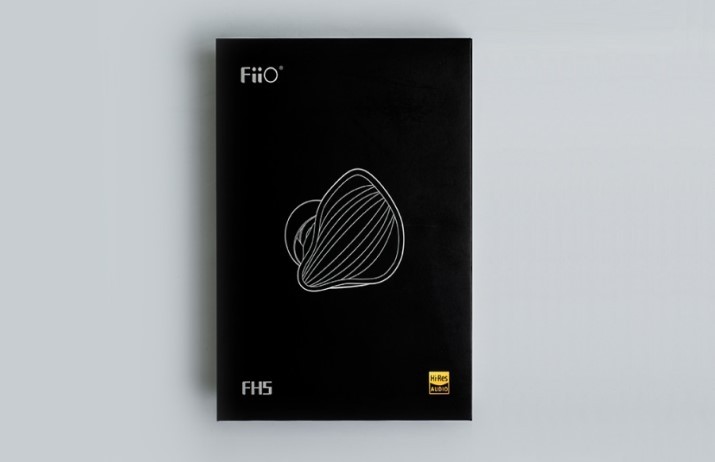
After you open this cover you will see the FH5 that is placed in a removable foam pad. The first appearance of the FH5 is pretty impressive and gives you the impression that you have bought a special product.

Right after you remove the foam pad you will see the nicely placed foam and silicone ear tips and the pelican case with Fiio branding.
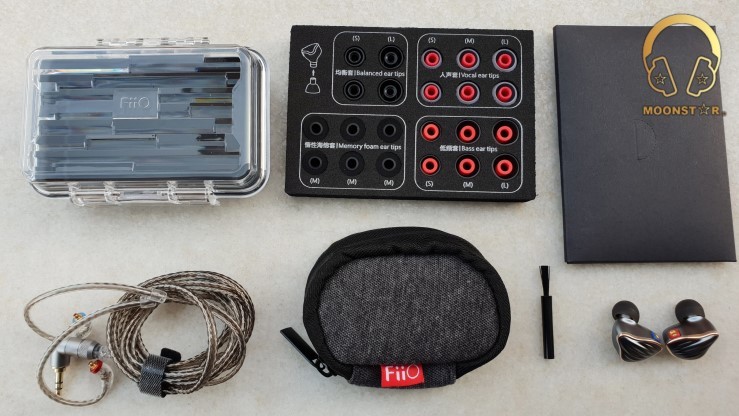
Each silicone and foam ear tip has a short description about the sound effect and the size.
They are 2 pairs of balanced ear tips (small/large size), 3 pairs of vocal ear tips (small/medium/large size), 3 pairs of bass ear tips (small/medium/large size) and 3 pairs of memory foam ear tips ((small/medium/large size).

The pelican case with Fiio branding has a nice pattern on the top cover and is a safe place for your FH5.


There is also a small and carry pouch with zipper that is made of fabric material and a cleaning tool, which are some nice additions.
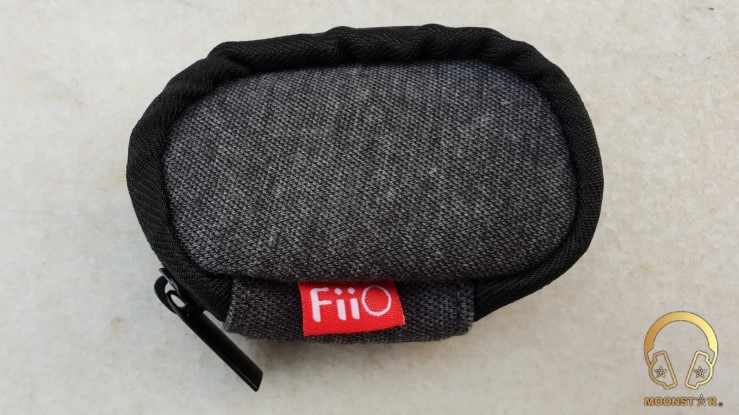
Design, Build Quality and Fit:
The Fiio FH5 has a very nice looking unique design that gives you a nice impression. The rare monitor housing has a patented “TRISHELL” structural design, made of a 5-axis CNC machined aluminum-magnesium material.

The faceplate (front cover) is fixed (according to Fiio) tightly together with multiple screws to the rare body to reduce resonance and distortion. The faceplate of the FH5 continuous Fiio’s design language that you can find on the Fiio F9 and F9 Pro, which looks like a see shell.
The Monitor is in grey color with exception of the golden frame on the front surface that gives the FH5 a premium feel.

On rear body of the monitor housing is a small vent and the left/right markings together with the sound nozzle which has a metal grill on the top to prevent the insertion of dust and ear wax.

On the top of the monitor housing is the MMCX (Micro Miniature Coaxial) female connector that sports a red ring on the right and blue ring on the left monitor.
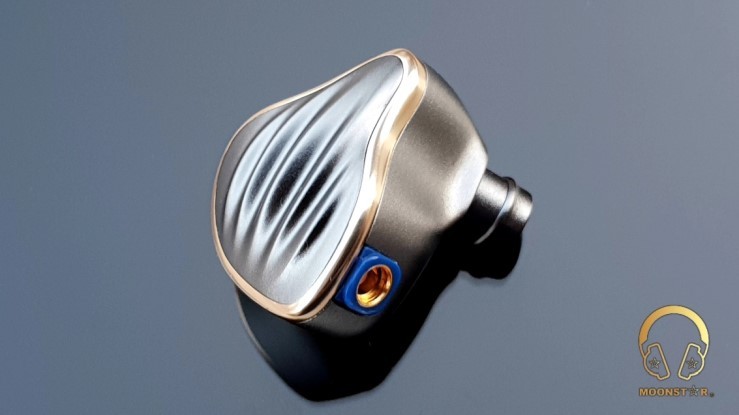
The Fiio FH5 has a nice shape which makes it very comfortable to wear. We have tested it with some of my friends in the community that have an bigger an smaller than average ear anatomy who where very happy with the comfort of the FH5.
When it come to the noise isolation of this IEM; I can say that it is on a average level that gives right enough isolation to use it pretty noise environments such as metro, bus or train without to disrupt peoples around you.
The Cable:
The Fiio FH5 comes with the 3.5mm single-ended LC-3.5B detachable cable that can also purchased separately to use with other IEM’s with MMCX connector. The LC-3.5B looks and feels very solid, which is made of high-purity monocrystalline silver-plated copper wire and that features an environmentally-friendly (according to Fiio) transparent TPU coating.
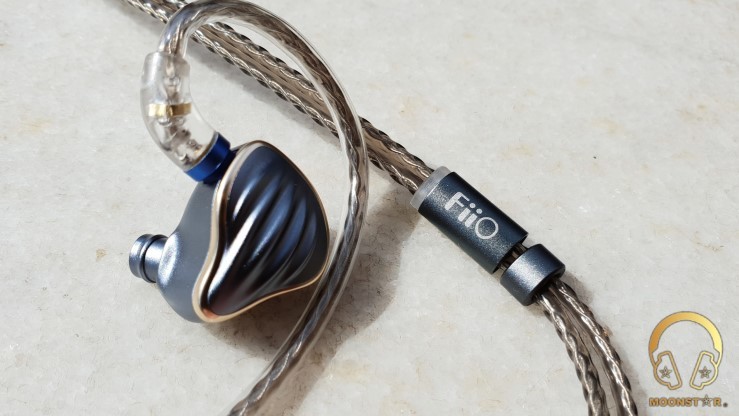

This MMCX male connectors are sitting pretty tight on the monitor and should last for years without any problem. The MMCX connectors have a transparent housing and on each connector is right left indicator, which is a red ring on the right and a blue ring on the right connector.

There is also an ear guide near the connector to wear this IEM comfortable over the ear.

The 3.5mm single ended (unbalanced) headphone jack has also a high quality craftsmanship and sports a grey metal housing with L angled profile in the same color as the monitor housing.

The cable sport also a Fiio branded Y splitter and chin slider made of the same metal material expect a small plastic part on the splitter.
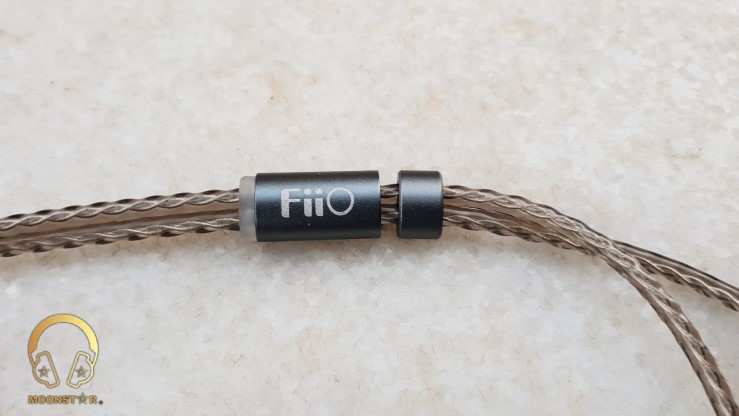
The LC-3.5B has very low microphonic effect and don’t shows this very annoying cable mixing issue you must handle with other cables.
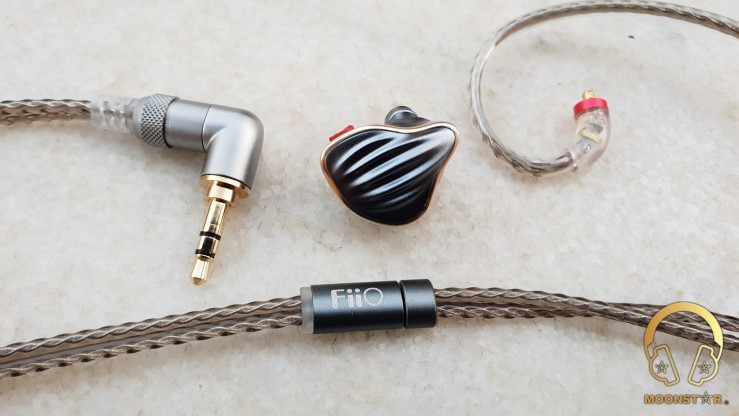
Other Remarkable Features:
a) The Quad Driver:
The FH5 comes with a hybrid driver design that combines balanced armature and dynamic drivers. Low frequencies will be produced by the 10mm polymer nanocomposite dynamic driver.
The Mid frequencies are produced by the Knowles ED30262 balanced armature driver, while lower and the higher treble frequencies are created by the Knowles 31082, which is a improved over the older Knowles 30017.
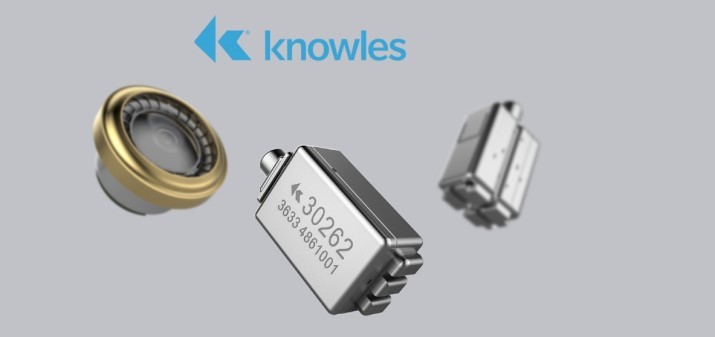
b) S.TURBO Technology:
The FH5’s low frequency sound tube adopts Fiio’s patented S.TURBO technology, which is a structural design that filters out unnecessary mid and high frequencies produced by the 10mm dynamic driver that is responsible to create the sub-bass and bass frequencies.

Drivability (Impedance):
The Fiio FH5 has quite low impedance of 19 ohm that makes it to a very easy to drive In-Ear Monitor. The FH5 is an ideal IEM to use with portable sources that have weak amplification such as mobile/smart phones, tablets and small audio players.
Technical Specifications:
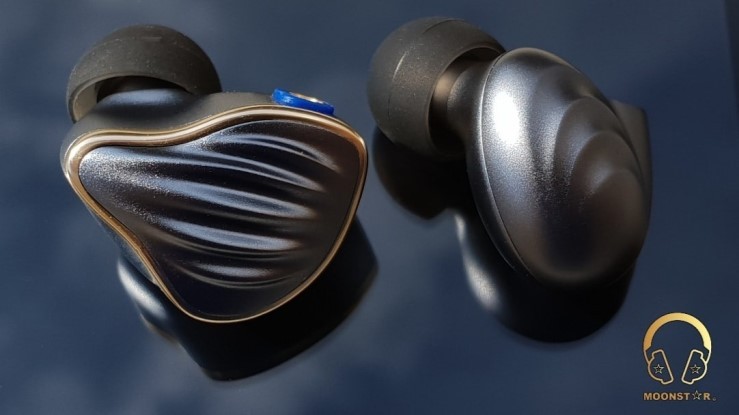
Sources used for this review:
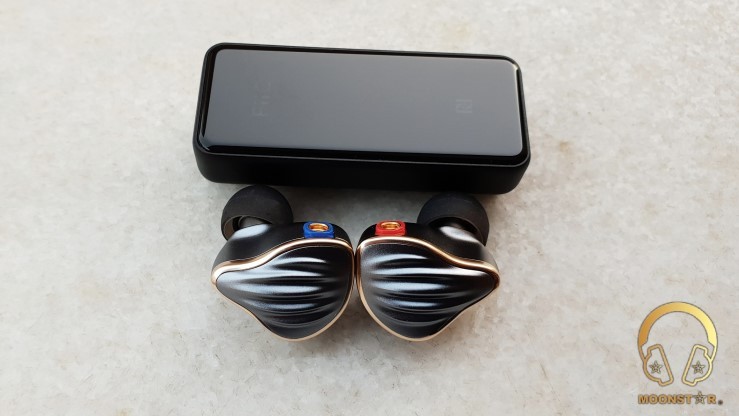
Albums & tracks used for this review:
The Sound:
The Fiio FH5 has a rather W-shaped tuning unlike most IEM's in the market, which prefer a V-shaped sound signature. This W-shaped sound signature shows a dominant / boosted sub-bass and upper midrange, with male vocals in the background and female vocals in the foreground.
The tonality of the Fiio FH5 is slightly warmer than neutral and forgiving presentation.

The Bass:
a) Sub-bass:
The Fiio FH5 has a powerful, deep and well extending sub-bass performance. It is possible to hear and to feel this deep and powerful sub-bass in tracks such as, Lorde’s “Royals”, Massive Attack’s “Angle” and Armin Van Buuren’s "Vini Vici". The sub-bass region has more impact/emphasis and quantity than the mid-bass area, which is a result of the W shaped sound signature. This amazing sub-bass performance is replaced in a very controlled manner by the mid-bass, which leads to an airy, fast and detailed presentation..
b) Bass and Midbass:
The mid-bass of the Fiio FH5 has slightly less emphasis than the sub-bass, but shows a pretty strong slam effect, which will be sufficient for most peoples except basshead's in terms of quantity and intensity.
The Fiio FH5 has a very fast and controlled bass, which is rarely seen at this price level. Furthermore the bass speed and tightness in genres such as edm/trance or metal music is well above average.
There are no negative situations such as looseness, hollowness and speed drops that makes the bass presentation quite clean and transparent.
The Fiio FH5 sound natural and controlled with percussion instruments such as bongo, drum, cajon etc. and represents them in a quite natural tonality.
Instruments like the bass guitar does not sound too thick or thin and have a good speed and emphasis, with a sufficient brightness in higher notes. GoGo Penguin’s pretty harsh contrabass performances sounds fast and clear, while Alboran Trio’s contrabass has a softer and musical tonality.
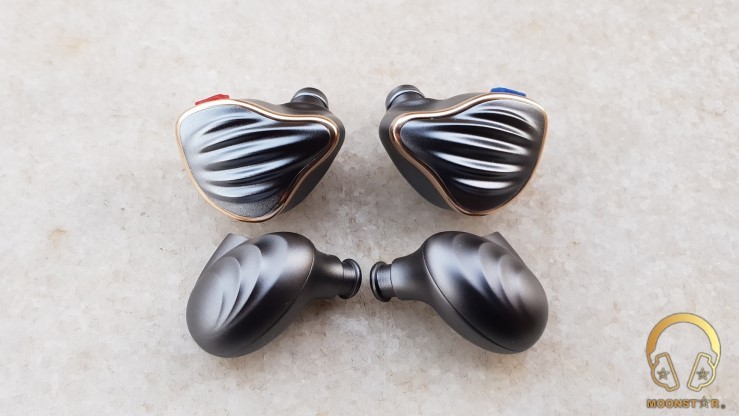
The Midrange:
The midrange of the Fiio FH5 is recessed due to the W shaped sound signature and shows a slightly warmer than neutral tonality, with an airy, transparent and clean presentation.
a) Vocals:
The Fiio FH5 is quite successful with the presentation of vocals. Male vocals are sounding slightly more recessed and distant than female vocals. The lower midrange is not as emphasized and in front like the upper midrange, which is the reason that male vocals are not as pronounced sounding as female voices. Male vocals are pretty clean and transparent and there is no hollowness or mixing. Vocals such as Dave Gahan, B. B. King or Eric Clapton are enjoyable and musical.
One of the main focus points of the Fiio FH5 is the female vocals, where I find it very successful. Female vocals sounding mildly warm, transparent and very lively, and it is possible to hear every feeling like sadness, enthusiasm, stiffness and softness.
The detail level and extension, which comes from the upper midrange, makes the Fiio FH5’s female vocal success far above average. One other good ability of the FH5 is the sibilance free presentation in the upper midrange region, when I have listened to female vocals like Laura Pergolizzi or Celine Dion.
b) Instruments:
The instrument tonality of the Fiio FH5 is clean vivid and on the warmer side of neutral, where instruments have a balanced presentation without to be too thick or thin. The sound of instruments such as pianos is emphasized, lively and bright, while the brightness increases towards the upper midrange.
String instruments such as acoustic guitars are showing a hint of warmness and are transparent and fairly musical presentation in Eric Clapton’s Unplugged Album, which was a joy to listen.
When it comes to the separation of instruments, I can easily say that the FH5 performs ways above its price tag.
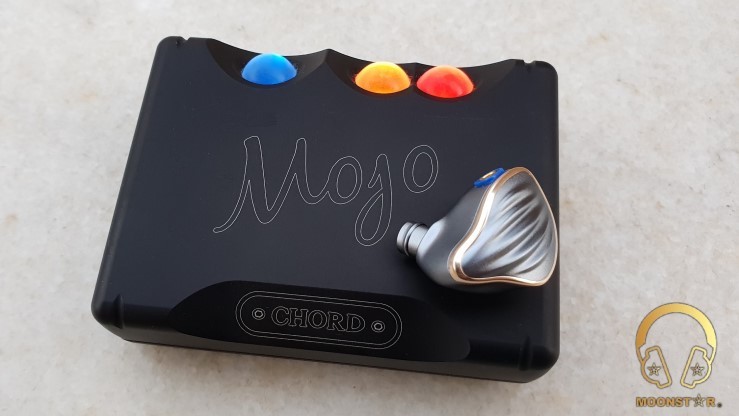
c) Upper Midrange:
The upper midrange of the FH5 is nicely pronounced in the 1 – 3 kHz region, which is improving the detail level and is adding air/space to the sound. The general tonality of the upper midrange is quite neutral and transparent.
The upper midrange of the FH5 is more forward and detailed than the treble range and sounds also pretty controlled and fairly detailed in moments where instruments are showing high distortion. The upper midrange extensions and energy with female vocals and instruments doesn’t show any remarkable deficiencies
The Treble Range:
The Fh5 has a soft and forgiving treble presentation, which is not as dominant as the upper midges and subbass region.
a) Lower Treble Range:
The treble extension, emphasis and detail decrease in the transition the upper treble range, that means that the lower treble range is more detail the upper treble region.
The definition and extensions of instruments such as hi-hats in genres like jazz music is pretty good in this area and there is no remarkable issue except the lack of extensions while listening to crash cymbals.
Instruments such as flute, piano or violin are sounding quite emphasized and exciting in the lower treble range.
b) Upper Treble Range:
The Fiio FH5 has a mild 7 kHz treble peak that starts to roll off fairly fast, which is decreasing the detail level but makes the presentation of the FH5 more relaxed and forgiving.
Fiio aimed at the upper treble a musical and non-fatiguing presentation. For example, hi-hats are more pronounced than crash cymbals and the extension of crash cymbals is shorter than those of the hi-hats.
The Fiio FH5 has a little roll-off in the upper treble range, but is quite successful in most music genres with its non fatiguing presentation.
The Soundstage:
The soundstage of the Fiio FH5 is not the widest in my In-Ear Monitor collection and shows an average width. However, this performance is suitable for a precise instrument placement. When it comes to the depth of the stage, the FH5 is more successful than its width. The soundstage has good depth which is an important factor for the fairly silence background.

Comparison:
Fiio FH5 versus iBasso IT04:

The iBasso IT04 has the same quad driver configuration such as the Fiio FH5, that is also a combination of 1 (one) dynamic and 3 (three) balanced armature drivers.
The material used or the monitor is different. The iBasso monitor is made of an acrylic shell that sports a carbon fiber faceplate, while Fiio decided to use the patented TRISHELL structure, which is made of CNC machined aluminum-magnesium alloy. Both IEM’s have detachable cables with MMCX (Micro Miniature Coaxial) connectors.
The overall built quality and comfort is pretty good on both IEM’s while the choice should be a matter of personal preference.
When it comes to the sound, the Fiio FH5 and the iBasso IT04 are showing a different sound signature. The Fiio FH5 has a W shaped presentation, while iBasso IT04 shows a mildly V shaped sound signature. The tonality is also fairly different; the IT04 has a pretty neutral tonality, while the FH5 sounds warmer.
Both In-Ear Monitors sharing a good sub-bass response, while the FH5 has a stronger and more emphasized sub-bass presentation, which goes also deeper and has more extension, than those of the IT04.
The bass of the IT04 has a linear character that shows an average bass quantity and intensity, while the FH5 is more intensive bass presentation. But the iBasso IT04 is in terms of bass speed and tightness superior to the FH5.
The bass presentation of both IEM’s is pretty controlled while the IT04 a little bit better in this regarding.
The midrange of the Fiio FH5 sounds noticeably more recessed than those of the iBasso IT04. The midrange of the IT04 sounds quite neutral and transparent, while the FH5 has a slightly warmer and musical presentation.
When it comes to the vocal performance and character; the Fiio FH5 is the more suitable IEM with male vocals because of the better lower midrange quantity. But when it comes to female vocals, I can say that the IT04 is superior to the FH5 because of the stronger and intensive upper midrange, which has a peak around the 8 kHz region. However, the FH5 sounds more emotional, musical and warmer while presenting female voices.
The iBssso IT04 showing us a quite neutral tonality and detailed instrument presentation, while the Fiio FH5 has a warmer tonality and musical instrument presentation. The overall instrument detail level of the iBasso IT04 is superior to those of the Fiio FH5, which is quite normal at this price difference.
Both the iBasso IT04 and the Fiio FH5 have an detailed and fairly good extending upper midrange presentation. One of the main differences is the upper midrange transition where the FH5 has better control. However, the upper midrange detail and overall clarity are more successful with the IT04.
The treble range and overall treble presentation of the iBasso IT04 is more upfront and noticeable, than those of the Fiio FH5, which has a smoother/softer presentation. The IT04 is also superior to the FH5 in terms of treble extension, intensity, quantity and detail.
The iBasso IT04 has wild hitting and good extending bells, while the FH5 represents the same instrument with shorter extension and in a softer, non-fatiguing way.
When it comes to the soundstage performance and separation of instruments, I have noticed that both In-Ear Monitors have enough width and depth for a relative precise separation. But there is a noticeable difference, because the iBasso IT04 has more width, while the Fiio FH5 sounds more airy and shows better depth.

Conclusion:
It was a real joy to review the Fiio FH5 which has me even more curious about future products of this company. The FH5 is an eye-catching IEM with its beautiful shell design and robust craftsmanship. But this would not be enough if it doesn’t have had a good sound such as it looks like, and YES the Fiio FH5 is a big success and a upgrade over the F9 and F9 Pro. It is even able to compete with IEM’s that have a higher price label.
Pros and Cons:
Introduction:
Fiio is a Chinese HiFi brand that was established in 2007 and has experience in researching and developing countless portable music products of different types, and sell Fiio-branded products through sales agents worldwide. The brand name Fiio is composed of Fi (fidelity from HiFi) and iO (number 1&0), representing the real feeling and convenient life that digital brings to life. Meanwhile, the Chinese “飞傲” is the transliteration of Fiio, indicating the positive and innovative spirit as thriving as spring.
After the success of Fiio’s most popular IEMs the F9 PRO and FH1 they launched their latest flagship the FH5 that has a 4 driver Hybrid (3 Balanced + 1 Dynamic) configuration and that I will now review for you.

Disclaimer:
I would like to thank Fiio for providing me the Fiio FH5 as review sample. I am not affiliated with Fiio beyond this review and all these words are reflecting my true and unaltered opinions about the product.
# This review was originally posted on my blog and now I want to share it with the Head-Fi community.
Price:
The MSRP price for the Fiio FH5 is 259,99 USD
- Purchase Link Amazon: https://amzn.to/2RPBiCz
- Purchase Link AliExpress: https://bit.ly/2NHNCl7
- Product Website: https://www.fiio.com/fh5
Package and Accessories:
The Fiio FH5 In-Ear Monitor is coming in a relative big cardboard box compared to the F9Pro that came in a smaller packaging. This box has a sleeve cover that displays a drawing of the FH5.

After you open this cover you will see the FH5 that is placed in a removable foam pad. The first appearance of the FH5 is pretty impressive and gives you the impression that you have bought a special product.

Right after you remove the foam pad you will see the nicely placed foam and silicone ear tips and the pelican case with Fiio branding.

Each silicone and foam ear tip has a short description about the sound effect and the size.
They are 2 pairs of balanced ear tips (small/large size), 3 pairs of vocal ear tips (small/medium/large size), 3 pairs of bass ear tips (small/medium/large size) and 3 pairs of memory foam ear tips ((small/medium/large size).

The pelican case with Fiio branding has a nice pattern on the top cover and is a safe place for your FH5.


There is also a small and carry pouch with zipper that is made of fabric material and a cleaning tool, which are some nice additions.

Design, Build Quality and Fit:
The Fiio FH5 has a very nice looking unique design that gives you a nice impression. The rare monitor housing has a patented “TRISHELL” structural design, made of a 5-axis CNC machined aluminum-magnesium material.

The faceplate (front cover) is fixed (according to Fiio) tightly together with multiple screws to the rare body to reduce resonance and distortion. The faceplate of the FH5 continuous Fiio’s design language that you can find on the Fiio F9 and F9 Pro, which looks like a see shell.
The Monitor is in grey color with exception of the golden frame on the front surface that gives the FH5 a premium feel.

On rear body of the monitor housing is a small vent and the left/right markings together with the sound nozzle which has a metal grill on the top to prevent the insertion of dust and ear wax.

On the top of the monitor housing is the MMCX (Micro Miniature Coaxial) female connector that sports a red ring on the right and blue ring on the left monitor.

The Fiio FH5 has a nice shape which makes it very comfortable to wear. We have tested it with some of my friends in the community that have an bigger an smaller than average ear anatomy who where very happy with the comfort of the FH5.
When it come to the noise isolation of this IEM; I can say that it is on a average level that gives right enough isolation to use it pretty noise environments such as metro, bus or train without to disrupt peoples around you.
The Cable:
The Fiio FH5 comes with the 3.5mm single-ended LC-3.5B detachable cable that can also purchased separately to use with other IEM’s with MMCX connector. The LC-3.5B looks and feels very solid, which is made of high-purity monocrystalline silver-plated copper wire and that features an environmentally-friendly (according to Fiio) transparent TPU coating.


This MMCX male connectors are sitting pretty tight on the monitor and should last for years without any problem. The MMCX connectors have a transparent housing and on each connector is right left indicator, which is a red ring on the right and a blue ring on the right connector.

There is also an ear guide near the connector to wear this IEM comfortable over the ear.

The 3.5mm single ended (unbalanced) headphone jack has also a high quality craftsmanship and sports a grey metal housing with L angled profile in the same color as the monitor housing.

The cable sport also a Fiio branded Y splitter and chin slider made of the same metal material expect a small plastic part on the splitter.

The LC-3.5B has very low microphonic effect and don’t shows this very annoying cable mixing issue you must handle with other cables.

Other Remarkable Features:
a) The Quad Driver:
The FH5 comes with a hybrid driver design that combines balanced armature and dynamic drivers. Low frequencies will be produced by the 10mm polymer nanocomposite dynamic driver.
The Mid frequencies are produced by the Knowles ED30262 balanced armature driver, while lower and the higher treble frequencies are created by the Knowles 31082, which is a improved over the older Knowles 30017.

b) S.TURBO Technology:
The FH5’s low frequency sound tube adopts Fiio’s patented S.TURBO technology, which is a structural design that filters out unnecessary mid and high frequencies produced by the 10mm dynamic driver that is responsible to create the sub-bass and bass frequencies.

Drivability (Impedance):
The Fiio FH5 has quite low impedance of 19 ohm that makes it to a very easy to drive In-Ear Monitor. The FH5 is an ideal IEM to use with portable sources that have weak amplification such as mobile/smart phones, tablets and small audio players.
Technical Specifications:
- Driver Configuration : Quad Driver with Hybrid Configuration
- Driver type : 1 x 10mm Dynamic Driver + 3 x Balanced Armature Driver (Knowles)
- Frequency response : 15Hz ~ 40kHz
- Sensitivity : 112 dB/mW
- Impedance : 19 Ω
- Max. input power : 100mW
- Plug : 3.5mm gold-plated L-shaped plug jack (CTIA standard)
- Connector type : MMCX Connector
- Cord length : 1.2 m
- Weight : 8 g (single monitor)
- Wearing type : Over the Ear

Sources used for this review:
- IEM : Fiio FH5 and iBasso IT04
- DAP/DAC/AMP : Fiio M7, Cayin N5II, Chord Mojo, Fiio BTR3, Sony WM1A

Albums & tracks used for this review:
- First Aid Kit - My Silver Lining (Spotify)
- London Grammar – Interlud (Live) (Flac 24bit/44kHz)
- Laura Pergolizzi – Lost On You “Live at Harvard and Stone” (Tidal Hi-Fi)
- Minor Empire – BulbulumAltinKafeste (Spotify)
- Leonard Cohen – You Wnt it Darker (Spotify)
- Dave Gahan – Kingdom (Tidal Hi-Fi)
- Eric Clapton – Unplugged (Flac 24bit/96kHz)
- Casey Abrams – Robot Lover (Tidal Hi-Fi)
- Vivaldi – Le QuarttroStagioni “The Four Season” (Tidal Hi-Fi)
- GoGo Penguin - Fanfares (Tidal Hi-Fi)
- Alboran Trio - Cinque Lunghissimi Minuti (Flac 16bit/44kHz)
- Otto Liebert& Luna Negra – The River (DSF) – Binaural Recording
- Future Heroes – Another World (Tidal Hi-fi)
- Lorde – Team (Flac 24bit/48kHz)
- Tom Player – Resonace Theory “Album” (Tidal Hi-Fi)
- Massive Attack – Angel (Tidal Hi-Fi)
- Portishead – It Could Be Sweet (Spotify)
- Armin Van Buuren - Vini Vici (Spotify)
- Liquid Tension Experiment 2 – Acid Rain (Spotify)
- Opeth – Damnation (Tidal Hi-Fi)
- Metallica – Sad but True (Flac 24bit/96kHz)
- Megadeth - Sweating Bullets (Tidal Hi-Fi)
- Slayer - Angel of Death (Spotify)
The Sound:
The Fiio FH5 has a rather W-shaped tuning unlike most IEM's in the market, which prefer a V-shaped sound signature. This W-shaped sound signature shows a dominant / boosted sub-bass and upper midrange, with male vocals in the background and female vocals in the foreground.
The tonality of the Fiio FH5 is slightly warmer than neutral and forgiving presentation.

The Bass:
a) Sub-bass:
The Fiio FH5 has a powerful, deep and well extending sub-bass performance. It is possible to hear and to feel this deep and powerful sub-bass in tracks such as, Lorde’s “Royals”, Massive Attack’s “Angle” and Armin Van Buuren’s "Vini Vici". The sub-bass region has more impact/emphasis and quantity than the mid-bass area, which is a result of the W shaped sound signature. This amazing sub-bass performance is replaced in a very controlled manner by the mid-bass, which leads to an airy, fast and detailed presentation..
b) Bass and Midbass:
The mid-bass of the Fiio FH5 has slightly less emphasis than the sub-bass, but shows a pretty strong slam effect, which will be sufficient for most peoples except basshead's in terms of quantity and intensity.
The Fiio FH5 has a very fast and controlled bass, which is rarely seen at this price level. Furthermore the bass speed and tightness in genres such as edm/trance or metal music is well above average.
There are no negative situations such as looseness, hollowness and speed drops that makes the bass presentation quite clean and transparent.
The Fiio FH5 sound natural and controlled with percussion instruments such as bongo, drum, cajon etc. and represents them in a quite natural tonality.
Instruments like the bass guitar does not sound too thick or thin and have a good speed and emphasis, with a sufficient brightness in higher notes. GoGo Penguin’s pretty harsh contrabass performances sounds fast and clear, while Alboran Trio’s contrabass has a softer and musical tonality.

The Midrange:
The midrange of the Fiio FH5 is recessed due to the W shaped sound signature and shows a slightly warmer than neutral tonality, with an airy, transparent and clean presentation.
a) Vocals:
The Fiio FH5 is quite successful with the presentation of vocals. Male vocals are sounding slightly more recessed and distant than female vocals. The lower midrange is not as emphasized and in front like the upper midrange, which is the reason that male vocals are not as pronounced sounding as female voices. Male vocals are pretty clean and transparent and there is no hollowness or mixing. Vocals such as Dave Gahan, B. B. King or Eric Clapton are enjoyable and musical.
One of the main focus points of the Fiio FH5 is the female vocals, where I find it very successful. Female vocals sounding mildly warm, transparent and very lively, and it is possible to hear every feeling like sadness, enthusiasm, stiffness and softness.
The detail level and extension, which comes from the upper midrange, makes the Fiio FH5’s female vocal success far above average. One other good ability of the FH5 is the sibilance free presentation in the upper midrange region, when I have listened to female vocals like Laura Pergolizzi or Celine Dion.
b) Instruments:
The instrument tonality of the Fiio FH5 is clean vivid and on the warmer side of neutral, where instruments have a balanced presentation without to be too thick or thin. The sound of instruments such as pianos is emphasized, lively and bright, while the brightness increases towards the upper midrange.
String instruments such as acoustic guitars are showing a hint of warmness and are transparent and fairly musical presentation in Eric Clapton’s Unplugged Album, which was a joy to listen.
When it comes to the separation of instruments, I can easily say that the FH5 performs ways above its price tag.

c) Upper Midrange:
The upper midrange of the FH5 is nicely pronounced in the 1 – 3 kHz region, which is improving the detail level and is adding air/space to the sound. The general tonality of the upper midrange is quite neutral and transparent.
The upper midrange of the FH5 is more forward and detailed than the treble range and sounds also pretty controlled and fairly detailed in moments where instruments are showing high distortion. The upper midrange extensions and energy with female vocals and instruments doesn’t show any remarkable deficiencies
The Treble Range:
The Fh5 has a soft and forgiving treble presentation, which is not as dominant as the upper midges and subbass region.
a) Lower Treble Range:
The treble extension, emphasis and detail decrease in the transition the upper treble range, that means that the lower treble range is more detail the upper treble region.
The definition and extensions of instruments such as hi-hats in genres like jazz music is pretty good in this area and there is no remarkable issue except the lack of extensions while listening to crash cymbals.
Instruments such as flute, piano or violin are sounding quite emphasized and exciting in the lower treble range.
b) Upper Treble Range:
The Fiio FH5 has a mild 7 kHz treble peak that starts to roll off fairly fast, which is decreasing the detail level but makes the presentation of the FH5 more relaxed and forgiving.
Fiio aimed at the upper treble a musical and non-fatiguing presentation. For example, hi-hats are more pronounced than crash cymbals and the extension of crash cymbals is shorter than those of the hi-hats.
The Fiio FH5 has a little roll-off in the upper treble range, but is quite successful in most music genres with its non fatiguing presentation.
The Soundstage:
The soundstage of the Fiio FH5 is not the widest in my In-Ear Monitor collection and shows an average width. However, this performance is suitable for a precise instrument placement. When it comes to the depth of the stage, the FH5 is more successful than its width. The soundstage has good depth which is an important factor for the fairly silence background.

Comparison:
Fiio FH5 versus iBasso IT04:

The iBasso IT04 has the same quad driver configuration such as the Fiio FH5, that is also a combination of 1 (one) dynamic and 3 (three) balanced armature drivers.
The material used or the monitor is different. The iBasso monitor is made of an acrylic shell that sports a carbon fiber faceplate, while Fiio decided to use the patented TRISHELL structure, which is made of CNC machined aluminum-magnesium alloy. Both IEM’s have detachable cables with MMCX (Micro Miniature Coaxial) connectors.
The overall built quality and comfort is pretty good on both IEM’s while the choice should be a matter of personal preference.
When it comes to the sound, the Fiio FH5 and the iBasso IT04 are showing a different sound signature. The Fiio FH5 has a W shaped presentation, while iBasso IT04 shows a mildly V shaped sound signature. The tonality is also fairly different; the IT04 has a pretty neutral tonality, while the FH5 sounds warmer.
Both In-Ear Monitors sharing a good sub-bass response, while the FH5 has a stronger and more emphasized sub-bass presentation, which goes also deeper and has more extension, than those of the IT04.
The bass of the IT04 has a linear character that shows an average bass quantity and intensity, while the FH5 is more intensive bass presentation. But the iBasso IT04 is in terms of bass speed and tightness superior to the FH5.
The bass presentation of both IEM’s is pretty controlled while the IT04 a little bit better in this regarding.
The midrange of the Fiio FH5 sounds noticeably more recessed than those of the iBasso IT04. The midrange of the IT04 sounds quite neutral and transparent, while the FH5 has a slightly warmer and musical presentation.
When it comes to the vocal performance and character; the Fiio FH5 is the more suitable IEM with male vocals because of the better lower midrange quantity. But when it comes to female vocals, I can say that the IT04 is superior to the FH5 because of the stronger and intensive upper midrange, which has a peak around the 8 kHz region. However, the FH5 sounds more emotional, musical and warmer while presenting female voices.
The iBssso IT04 showing us a quite neutral tonality and detailed instrument presentation, while the Fiio FH5 has a warmer tonality and musical instrument presentation. The overall instrument detail level of the iBasso IT04 is superior to those of the Fiio FH5, which is quite normal at this price difference.
Both the iBasso IT04 and the Fiio FH5 have an detailed and fairly good extending upper midrange presentation. One of the main differences is the upper midrange transition where the FH5 has better control. However, the upper midrange detail and overall clarity are more successful with the IT04.
The treble range and overall treble presentation of the iBasso IT04 is more upfront and noticeable, than those of the Fiio FH5, which has a smoother/softer presentation. The IT04 is also superior to the FH5 in terms of treble extension, intensity, quantity and detail.
The iBasso IT04 has wild hitting and good extending bells, while the FH5 represents the same instrument with shorter extension and in a softer, non-fatiguing way.
When it comes to the soundstage performance and separation of instruments, I have noticed that both In-Ear Monitors have enough width and depth for a relative precise separation. But there is a noticeable difference, because the iBasso IT04 has more width, while the Fiio FH5 sounds more airy and shows better depth.

Conclusion:
It was a real joy to review the Fiio FH5 which has me even more curious about future products of this company. The FH5 is an eye-catching IEM with its beautiful shell design and robust craftsmanship. But this would not be enough if it doesn’t have had a good sound such as it looks like, and YES the Fiio FH5 is a big success and a upgrade over the F9 and F9 Pro. It is even able to compete with IEM’s that have a higher price label.
Pros and Cons:
- + Build Quality
- + Accessories (especially the tips selection)
- + Wonderful Lively Presentation
- + Musical Tuning
- + Very Forgiving
- + Cable Quality
- - Soundstage could be slightly wider
- - Upper Treble Roll-Off
Moonstar
100+ Head-Fier
Pros: Excellent Overall Sound Performance for such a small All-in One Solution,
Solid Build Quality,
Esthetic Design,
3.5mm SE & 4.4mm Balanced Outputs,
Only Device in its Segment that is equipped with an Optical Output,
Clean & Hiss-free output,
Value for Your Money
Solid Build Quality,
Esthetic Design,
3.5mm SE & 4.4mm Balanced Outputs,
Only Device in its Segment that is equipped with an Optical Output,
Clean & Hiss-free output,
Value for Your Money
Cons: The glass surface looks beautiful but is also a fingerprint magnet,
No Protective Case,
No Back-Clip
No Protective Case,
No Back-Clip
IKKO Heimdallr ITB03 BT & USB DAC/Amplifier Review
Introduction:
IKKO Audio (IKKO Technology Co. Limited) is a relative new Chinese brand that designs & develops Hi-Fi components like In-Ear Monitors, Portable DAC/AMP, Docking Stations and many more.
The Heimdallr ITB03 that I will now review for you is the companies first Portable Bluetooth & USB DAC/Amplifier, which is an Ultra-Portable and very capable All-in One solution that is compatible with a wide variety of platforms including Android, iOS, MAC OS, Windows 10/11, Nintendo Switch, Sony PlayStation 5 and Microsoft XBOX devices. The Heimdallr ITB03 is equipped with 2x Asahi Kasei AK4377 DAC Chips and features 3.5mm Single Ended/Optical and 4.4mm Balanced (TRRRS) outputs. The Bluetooth connection is powered by Qualcomm’s latest and most advanced QCC5125 BT Chip, while the XMOS’s 8-Core XU208 USB Processor is dedicated for the USB DAC function.
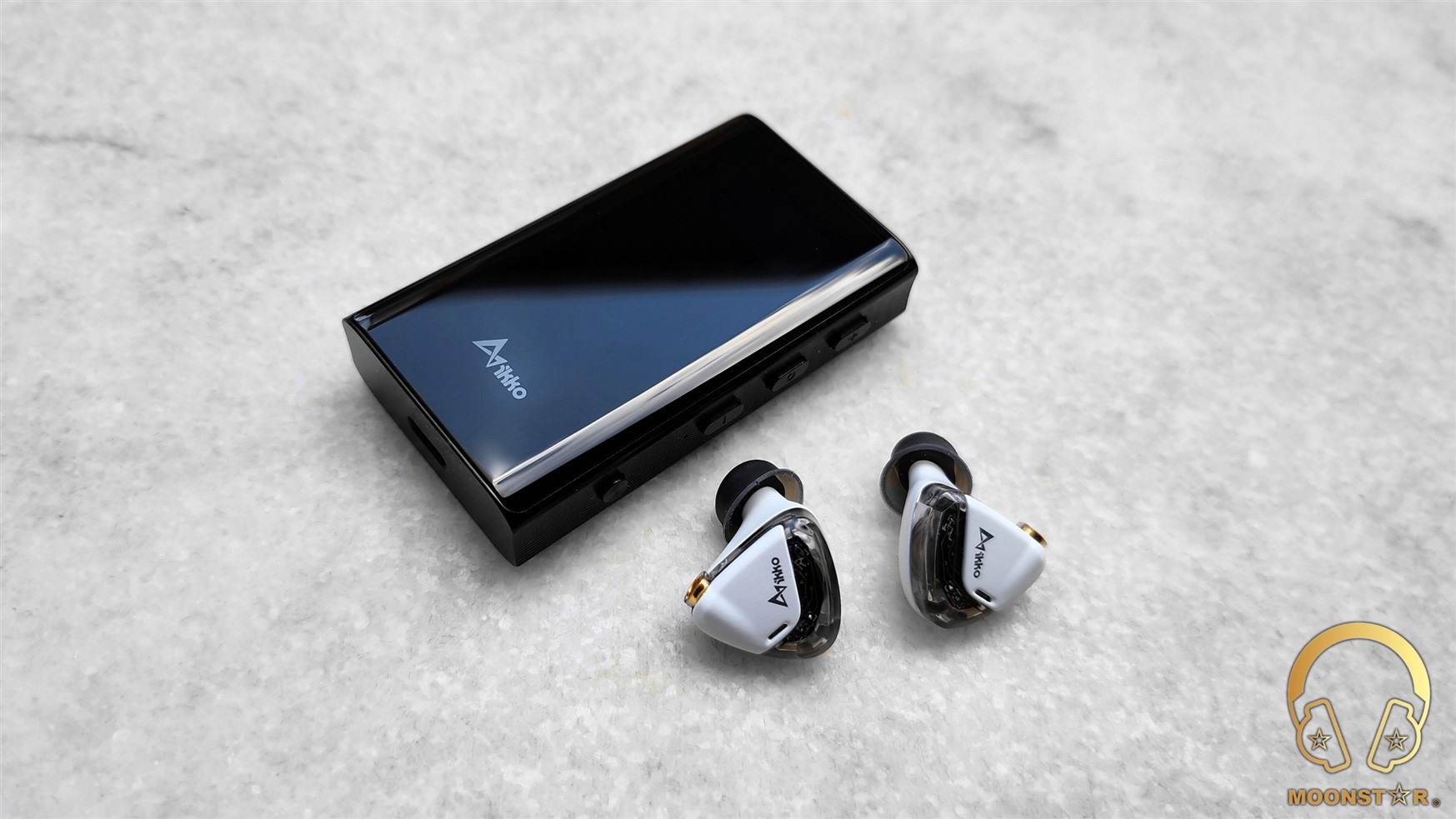
Disclaimer:
I would like to thank IKKO Audio for providing me the Heimdallr ITB03 sample for review purposes. I am not affiliated with IKKO Audio beyond this review and these words reflect my true and unaltered opinions about the product.
Price & Availability:
The actual price of the IKKO Heimdallr ITB03 is 149.00 US$. More information’s can be found under the link below;
Package & Accessories:
The IKKO Heimdallr ITB03 came inside a rectangular box in black color that sports the illustration and some product related brandings on the top.

Inside the box of the IKKO Heimdaller ITB03 are the following items/accessories;
- 1 x IKKO Heimdallr ITB03 Portable BT & USB DAC/Amplifier
- 1 x USB Type-C to USB A adapter
- 1 x USB Type-C to USB Type-C low profile cable
- 1 x USB Type-C to Lightning low profile cable
- 1 x Some Print Materials


Design & Build Quality:
The IKKO Heimdallr ITB03 is a Bluetooth & USB DAC/Amplifier that supports a wide variety of Wireless (LDAC, aptX, aptX-HD) and Wired (PCM, DSD) Lossless Audio Codecs packed in to an Ultra-Portable device, which shows a combination of glass and metal elements, the final result is a clean, robust and elegant looking device.

The Heimdallr ITB03 is an ultra-portable device with a solid look and feel when hold in your hands that shows a very good build quality. It has dimensions of about 70mm (L) *40mm (W) * 10mm (T) and weights approx. 72grams.

The deice features a metal frame and a glass surface that is located on both the top and rear surface with rounded edges, which offers a very good grip when hold in your hands.

On the top of the device is the IKKO brand logo and a small OLED screen with a resolution of 64×128 pixels that gives you lots of information’s like Connection Method, Battery Status, Decoding Rate, Volume, Lyrics, Audio Mode and Small Graphical EQ Animation on the main menu. I really like that the display shows you the name of the song that is played by the device, which is available in BT DAC/Amplifier mode. Even the Title of YouTube Songs and Videos is displayed, which is a nice feature.
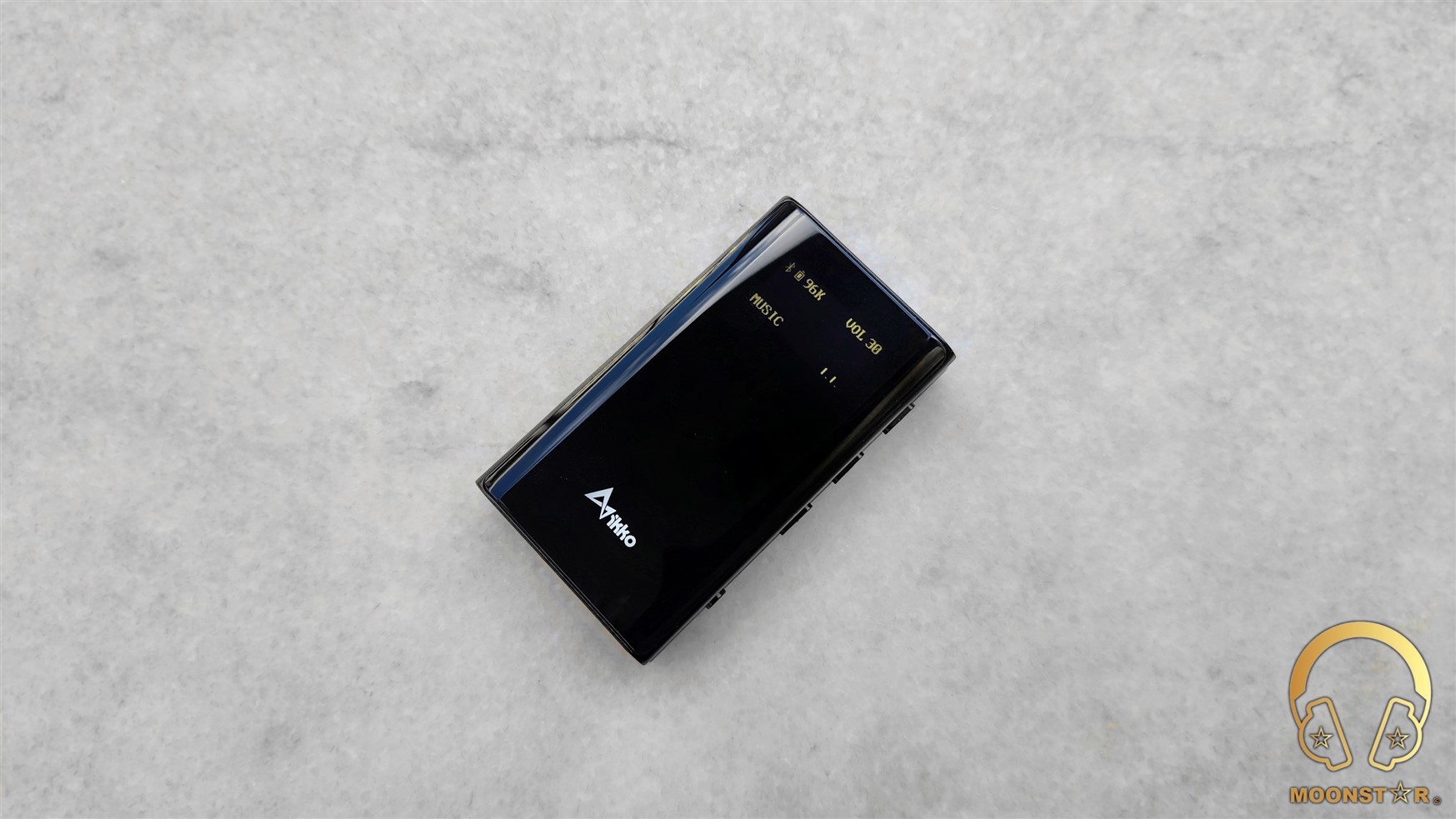
The right surface of the Heimdallr ITB03 is equipped with 4 multifunctional physical buttons and a small hole where you can reset the device.

The Volume Up and Volume Down buttons can be used to navigate in the selected menus.

The Play/Pause button is a Multifunctional Key in order to switch between multiple sub-menus such like Gain (Low / High), Dimmer (1 – 6), Chare Mode, Filters (1 – 4), Car Mode and Sound Modes (Music, Movie, Game, HiFi).

The Power button is another multi-function key that will give you the access in to the sub-menus, which also acts as display on/off and button.
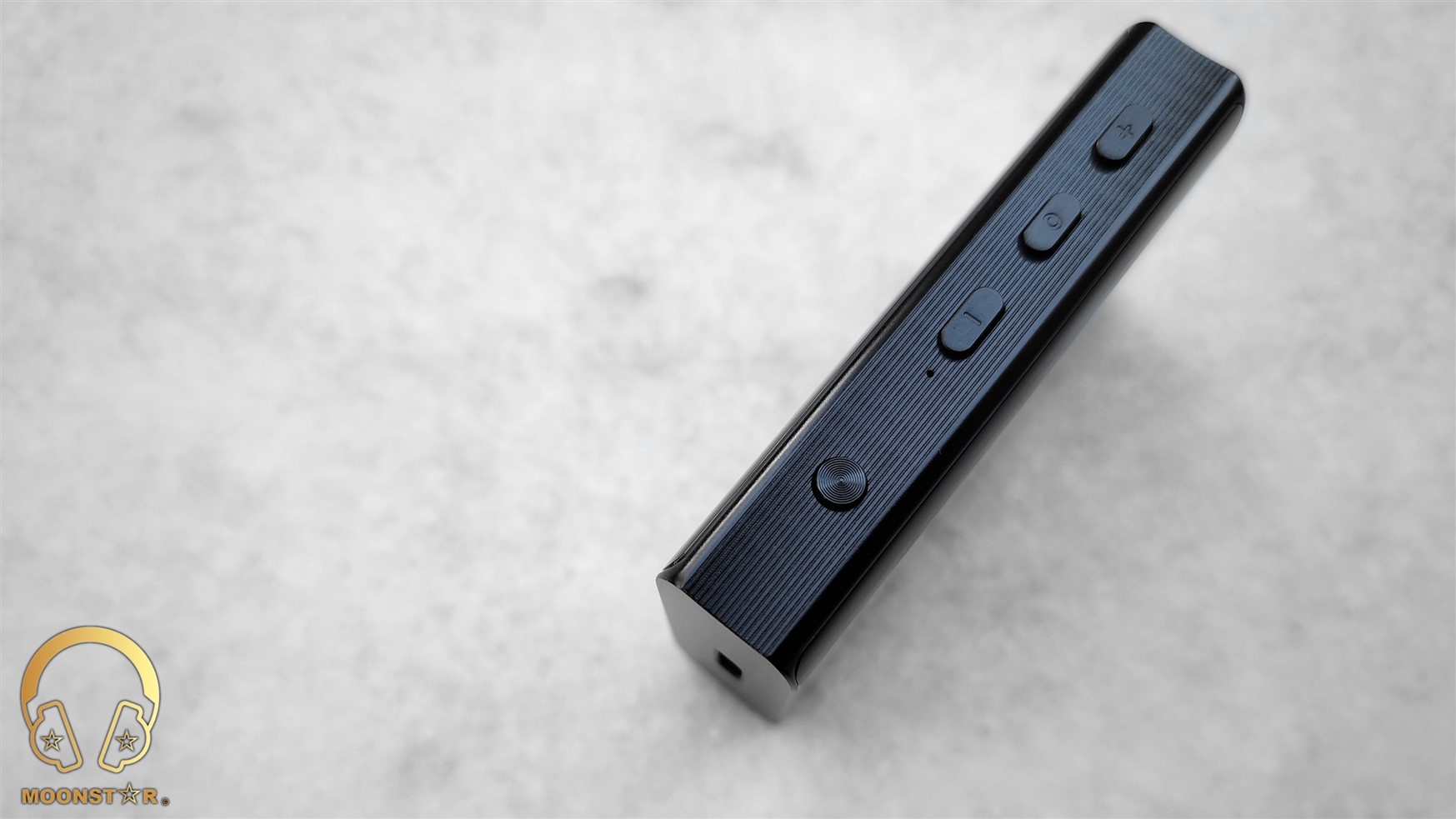
The left surface of the IKKO Heimdallr ITB03 sports a second opening dedicated for the build-in microphone for voice calls and voice commands when connected to a phone or tablet.

On the top of the IKKO Heimdallr ITB03 are the 3.5mm Single Ended, 4.4mm Balanced (TRRRS) analog outputs. The 3.5mm output serves also as Optical output interface, which is a great feature.
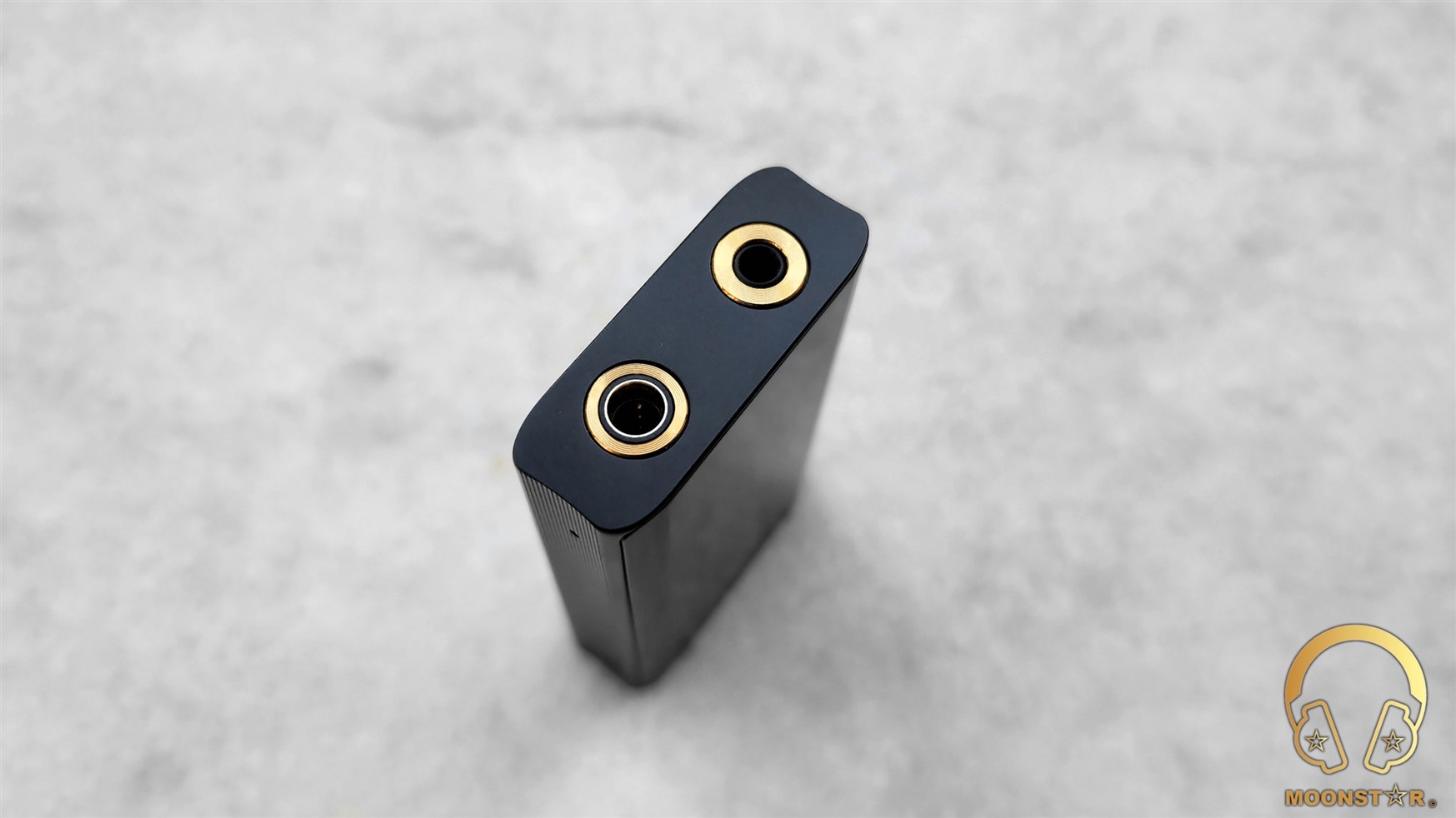
At the bottom of the device is the USB Type-C port that works for charging and digital sound input purposes.
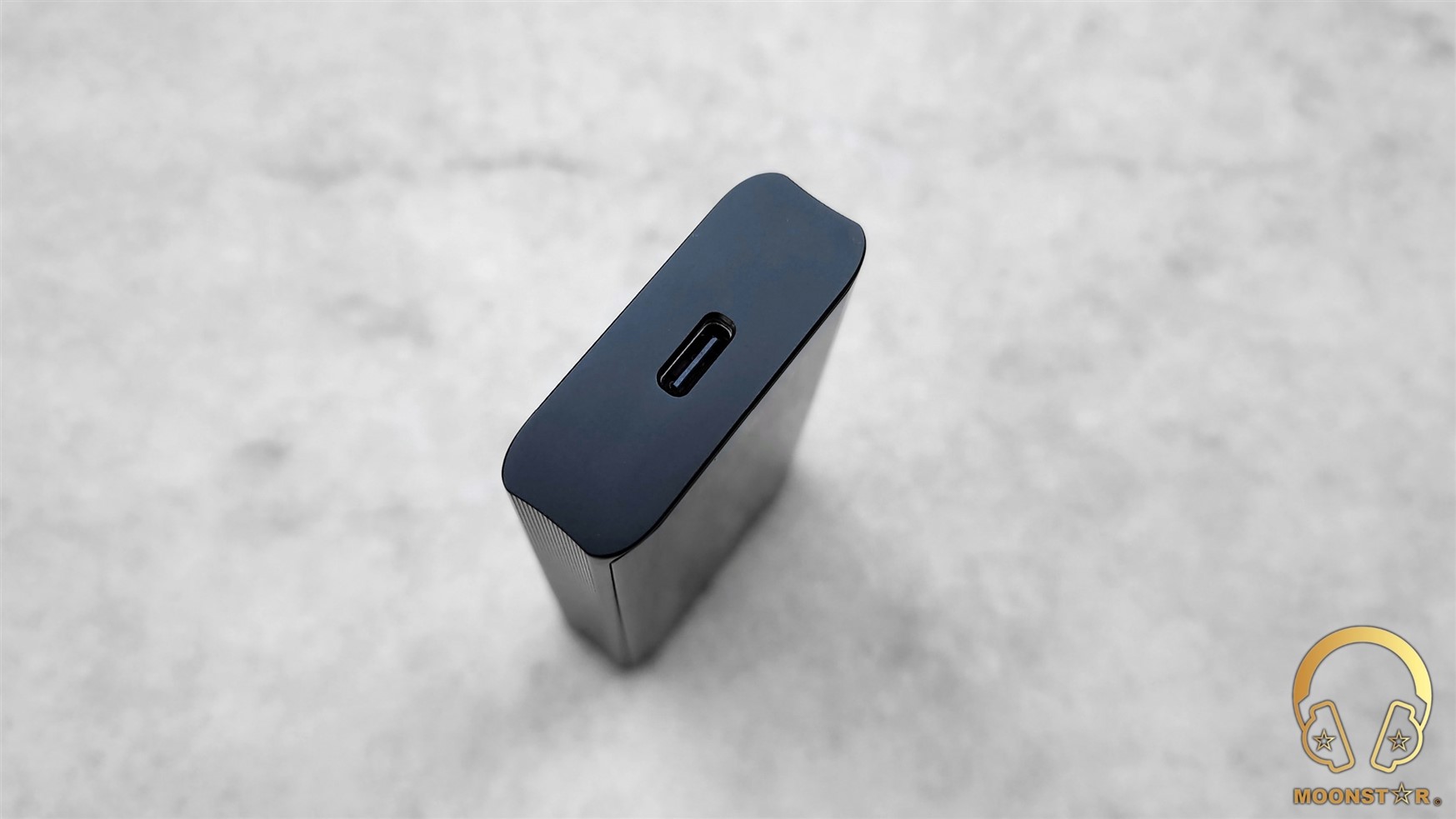
The rear surface of the Heimdallr ITB03 sports the Hi-Res Audio logo some technical detail & industrial certifications.

Here is also the NFC logo and antenna for quick paring with your Bluetooth source, which is a nice addition.

Technical Specifications:
- Model : Heimdallr ITB03
- DAC Chip : 2x Asahi Kasei AK4377
- USB Processor : XMOS 8-core XU208
- Sampling Rates : PCM 32bit/384kHz USB / 32bit/96kHz Optical / Native DSD128
- Headphone Amplifier : RT6863
- Output Ports : 3.5mm Single Ended (Analog & Optical) & 4.4mm Balanced (Analog)
- Bluetooth Chip : Qualcomm QCC5125
- Bluetooth Version : 5.0
- Bluetooth Codec’s : LDAC, APTX HD, AptX LL, AAC and SBC
- Operating Distance : approx. 10 Meters
- Output Power : 3.5mm SE 32mW @ 32Ω / 4.4mm BAL 125mW @ 32Ω
- SNR : 118dB both Single Ended & Balanced
- THD : -110dB
- Battery Size : 650mAh
- Battery Life : Up to 8 hours (SE, Single DAC)
- Charging Time : approx.1.5 hours
- Dimensions : approx. 70mm x 40mm x 10mm
- Weight : 72 grams
Hardware & Connectivity:
The IKKO Heimdallr ITB03 is an Ultra-Portable and very capable All-in One Bluetooth & USB DAC/Amplifier solution that is compatible with a wide variety of platforms including Android, iOS, MAC OS, Windows 10/11, Nintendo Switch, Sony PlayStation 5 and Microsoft XBOX devices. The Car mode is another feature that makes Heimdallr ITB03 also compatible for the use in your Car as an AUX source.

A. DAC (Digital to Analog Converter):
The IKKO Heimdallr ITB03 is equipped with 2x Asahi Kasei AK4377 DAC’s (Digital to Analog Converter) that supports PCM up to 32bit/384Khz and Native DSD up to DSD128. It offers a SNR (Signal to Noise Ratio) of about 118dB and THD (Total Harmonic Distortion) of -110dB.
The Asahi Kasei AK4377 DAC Chip offers 4 different Digital Filters that are listed below;
- Fillter1 Steep drop: sound dry and crisp.
- Fillter2 Steep drop after a short delay: mellow sound, suitable for pop music.
- Fillter3 Steep drop: Natural and mellow low end, good for slow music.
- Fillter4 Slow drop after a short delay: high sound reproduction, suitable for classical music.

B. Bluetooth & NFC Connectivity:
The IKKO Heimdallr ITB03 is equipped with Qualcomm’s latest and most advanced QCC5125 Bluetooth chip that supports the Bluetooth V5.0 protocol. The BT SoC of the device supports most of the advanced Hi-RES wireless codec’s including LDAC, LHDC, aptX HD, aptX LL, aptX, AAC and SBC.
The Heimdallr ITB03 offers a rock solid Bluetooth operating distance that works flawlessly up to 9 – 10 meters. The device has also a decent performance while watching to videos and movies on YouTube, Netflix, Disney+, Amazon Prime, which doesn’t have shown any remarkable lip-sync latency issues when paired to my Samsung Galaxy TAB S8 Ultra and Samsung Galaxy S22 Ultra, thanks to the support of the latest aptX-LL and LDAC low latency codec’s.
The pairing of the IKKO Heimdallr ITB03 with sources like Android/iOS phones, tablets, etc. are quite easy. You have also the option to pair it to other compatible devices with just a simple tap by using the NFC wireless short-range communication protocol, entirely avoiding the cumbersome traditional pairing process.

C. Outputs / Amplification / Drivability / Hissing:
The IKKO Heimdllr ITB03 comes with a balanced audio architecture, which means that each channel is driven separately from the other with its own DAC and Amplifier. The device is equipped with both 3.5mm Single Ended and 4.4mm Balanced analog interfaces that do offers a pretty powerful and clean output.
The Heimdallr ITB03 comes with 1x RT6863 independent amplifier. That RT6863 offers an output power of 32mW @ 32ohm over the 3.5mm Single Ended port and up to 125mW @32 Ohm over the 4.4mm Balanced output. The device has two gain options that are Low & High gain, which can be selected over the sub-menu. Both the 3.5mm Single Ended & 4.4mm Balanced outputs do show a pretty clean output with very low amount of hissing.
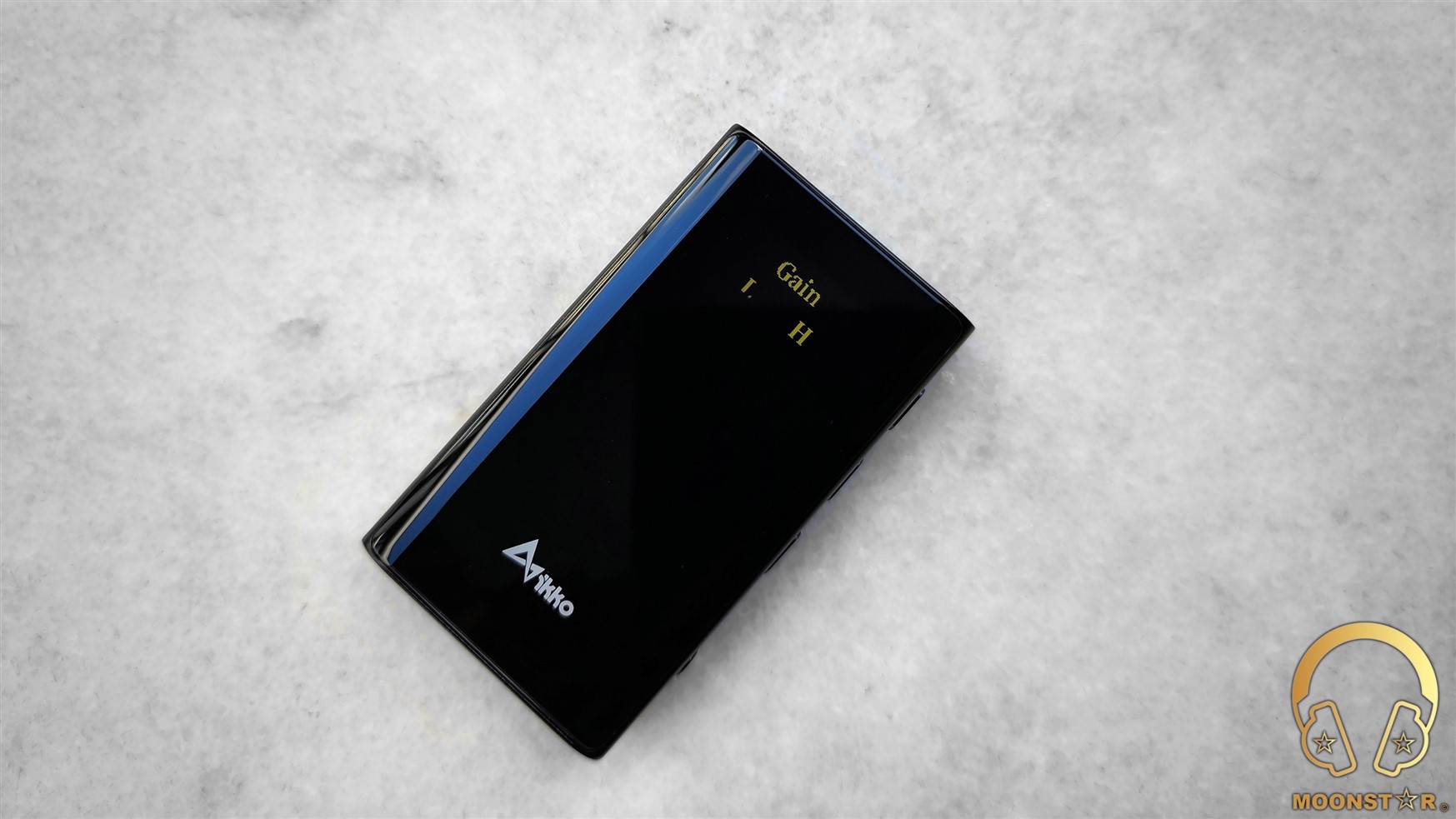
D. XMOS XUF 208 Chip & USB DAC function:
The IKKO Heimdallr ITB03 is a pretty capable device that utilizes an 8-Core XMOS XUF208 chip that gives it the ability to work as USB DAC/Amplifier, which will support sampling rates up to 32 bit/384kHz and Native up to DSD128. The USB DAC functionality can be activated under the HiFi Audio Mode option and supports USB UAC 2.0.
E. Microphone:
The IKKO Heimdallr ITB03 is equipped with a built-in microphone with supports Qualcomm’s cVc 8.0 noise cancellation technology in order to suppresses background noises. The microphone offers an average performance in terms of voice transfer that I have tested paired with my Samsung Galaxy S22 Ultra.
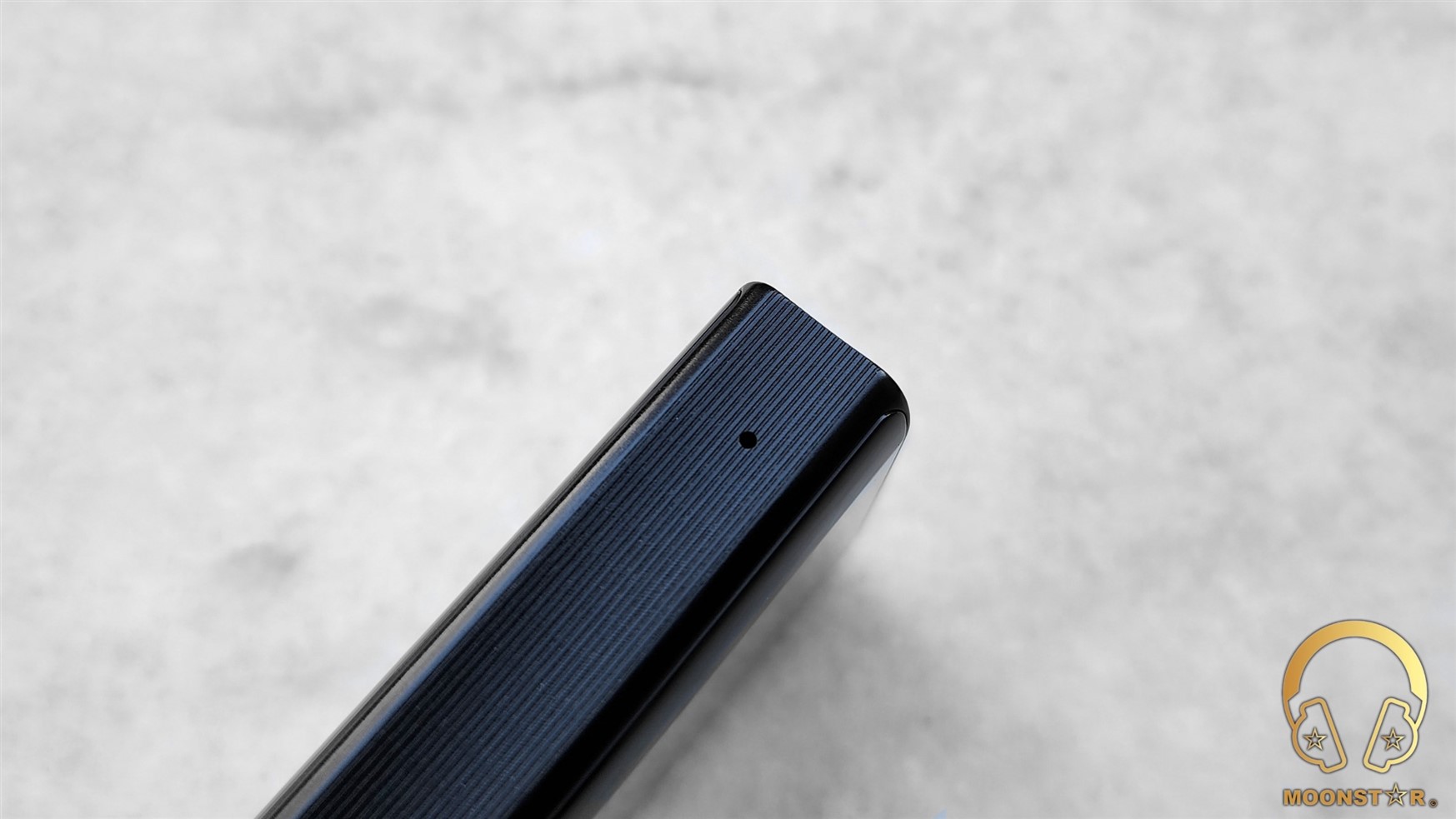
F. Battery Life:
The IKKO Heimdallr ITB03 is equipped with a built-in battery that has a capacity of approx. 650mAh, which takes about 1.5 hours to be fully charged. The 3.5mm Single Ended output offers around 7.5 – 8 Hours, while the more powerful 4.4mm Balanced out shows up to 6 hours of battery life at Low Gain and Volume 20 out of 60. The overall battery performance is pretty good for such a small device.
Equipment’s used for this review:
- DAC/Amplifier’s : IKKO Heimdallr ITB03, Shanling UP4 2022
- IEM’s/Headphones : IKKO Opal 2, FiiO FD7, iBasso IT07, SIVGA Oriole
- Sources : Samsung Galaxy S22 Ultra & TAB S8 Ultra, Asus TUF FX505DU

Albums & tracks used for this review:
- Adele – My Little Love (Spotify)
- Randy Crawford – On Day I Will Fly Away (Flac 16bit/44.1kHz)
- Hayley Westenra – Odyssey Album (Dezzer HiFi)
- Dionne Warwick – Walk On By (Flac 16bit/44.1kHz)
- Sarah McLachlan – Angel (Flac 24bit/48kHz)
- Sertap Erener – Aşk (Flac 16bit/44.1kHz)
- Edith Piaf – Non Je Ne Regrette Rien (Flac 16bit/44.1kHz)
- Diana Krall – So Wonderful (DSF)
- Aretha Franklin – I Say A Little Payer (Flac 24bit/96kHz)
- Sonya Yoncheva – (Giuseppe Verdi) II Trovatore, ActI (Flac 24bit/96kHz)
- Dave Gahan (Depeche Mode) – Free Love (Flac 24bit/96kHz)
- George Michael – Don’t Let the Sun Go Down on Me (Flac 24bit/192kHz)
- David Bowie – Heroes (Flac 24bit/192kHz)
- Elton John – Rocket Man ((Flac 24bit/96kHz)
- Barry White – Just The Way You Are (Flac 24bit/48kHz)
- Isaac Hayes – Walk On By (Flac 16bit/44.1kHz)
- Sting – Englishman in New York – (Flac 24bit/48kHz)
- Eric Clapton – Wonderful Tonight (Flac 24bit/96kHz)
- B. King – Riding With The King (Tidal Hi-Fi)
- Dave Gahan – Kingdom (Tidal Hi-Fi)
- U2 – Sunday Bloody Sunday (Flac 16bit/44.1kHz)
- Bro Safari, UFO! – Drama (Deezer HiFi)
- Armin Van Buuren – Vini Vici (Flac 16bit/44.1kHz)
- Daft Punk (feat. Panda Bear) – Doin’ it Right (Flac 24bit/96kHz)
- Jo Blankenburg – Meraki (Spotify)
- Lorde – Royals (Flac 24bit/48kHz)
- Massive Attack – Angel (Flac 24bit/48kHz)
- Toutant – Rebirth (Deezer HiFi)
- Gogo Penguin – Raven (Flac 24bit/192kHz)
- Gogo Penguin – Murmuration (Flac 24bit/192kHz)
- Photek – The Hidden Camera (Flac 24bit/96kHz)
- Portishead – It Could Be Sweet (Spotify)
- Max Richter – On the Nature of Daylight (Flac 24bit/96kHz)
- Charly Antolini – Duwadjuwandadu (Flac 24bit/192kHz)
- Abel Korzeniowski – Dance For Me Wallis (Deezer HiFi)
- Ferit Odman – Look, Stop & Listen (Flac 24bit/192kHz)
- Chopin – Nocturn No. 20 In C-Sharp Minor (Flac 16bit/44.1kHz)
- Fazıl Say – Nazım Oratoryosu (Live) (Flac 16bit/44.1kHz)
- Vivaldi – Le QuarttroStagioni “The Four Season” (Deezer HiFi)
- Otto Liebert & Luna Negra – The River (Flac 24bit/192kHz)
- Lunatic Soul – The Passage (Flac 16bit/44.1kHz)
- Deftones – My Own Summer (Shove it) (Flac 16bit/44.1kHz)
- Metallica – Sad but True (Flac 24bit/96kHz)
- Metallica – Master of Puppets (Flac 24bit/96kHz)
- Opeth – Windowpane (Flac 16bit/44.1kHz)
- Megadeth – Sweating Bullets (Tidal Hi-Fi)
- Muse – Hysteria (Flac 16bit/44.1kHz)
- Rush – Leave That Thing Alone (Flac 16bit/44.1kHz)
- Slayer – Angel of Death (Spotify)
- Liquid Tension Experiment 2 – Acid Rain (Spotify)
- Yosi Horikawa – Bubbles (Spotify)

The Sound:
The Hidizs DH80 is a DAC/Amplifier with a fairly dynamic sound character which shows a mild amount of coloration. The lower frequency area shows a nice sense of body and fullness, the midrange is pretty natural and detailed, while the treble range is successful in terms of extension, clarity and control.
This review has been written after a burn-in period of about 50 hours. My sound experience below are mainly based on impressions with In-Ear Monitors like the IKKO OH2, FiiO FD7, iBasso IT07 and SIVGA Oriole.
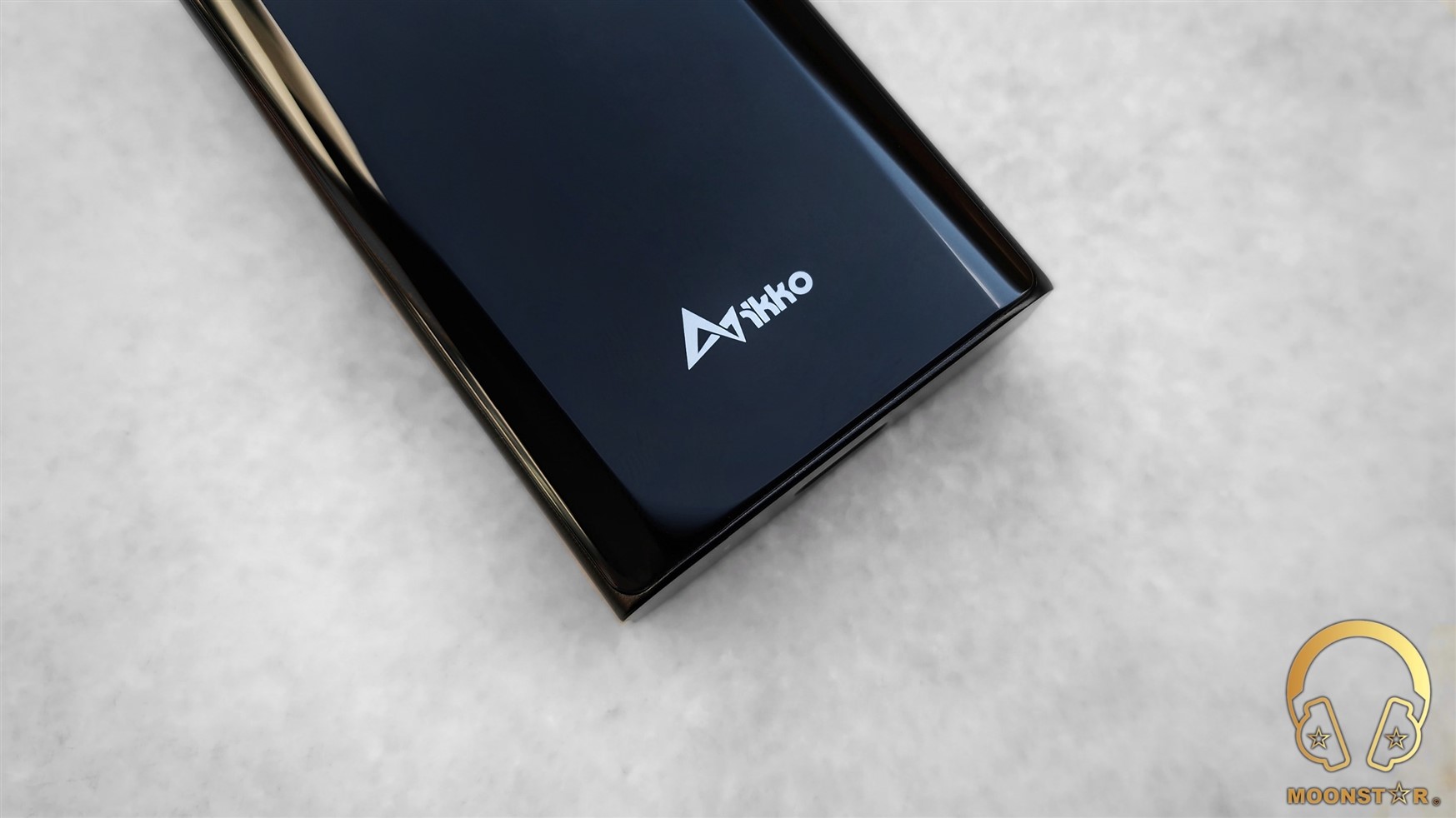
Bass:
The IKKO Heimdallr ITB03 has a pretty natural and linear bass response that shows a low amount of coloration that adds the general presentation a nice sense of musicality. The subbass region is reproduced with a decent grade of depth and extension when I listen to it with IEM’s like the FiiO FD7 and iBasso IT07. The 4.4mm balanced output is able to deliver a clean, controlled and deep subbass experience, when I listen to tracks such like Daft Punk’s “Doin’ it Right” or Lorde’s “Royals”.
The Heimdallr ITB03 has a pretty natural midbass response that offers a good grade of impact and control, without to lose the sense of clarity and resolution of the song I have listen to, while the coloration that is added is quite minimal. Songs with complex bass passages such like Gogo Penguin’s “Murmuration” or Charly Antolini’s “Duwadjuwandadu” are reproduced in a pretty clean and controlled manner, without to have any remarkable negative conditions such like a midbass hump or muddiness. The sense of layering and separation while listen to instruments such like a kick and snare drums is excellent, especially when paired with IEM’s like the FiiO FD7 and iBasso IT07.

Midrange:
The IKKO Heimdallr ITB03 shows a fairly natural, transparent and detailed midrange character, with a touch of warmth that adds the overall presentation a nice sense of musicality when I listen to instruments or to vocals that was pretty audible, especially when paired with IEM’s like the IKKO OH2 or FiiO FD7. The general midrange presentation of the Heimdallr ITB03 can be described as pretty balanced, lively and airy. The lower midrange is reproduced with a an efficient grade of body and depth that was pretty audible while listen to male vocals like Dave Gahan, David Bowie or Barry White or to strings such like a viola or acoustic guitar.
The upper midrange is shown with a decent level of clarity and resolution without to have negative conditions such like sibilance or over brightness. Instruments from guitars to flutes, from pianos to cellos are represented with an efficient amount of clarity and resolution, while or female vocals like Adel, Sertap Erener or Edith Piaf did sound pretty natural, lively and emotional. The resolution of instruments and human voices is pretty exciting for an ultra-portable BT/USB DAC/Amplifier at this price level.

Treble:
The IKKO Heimdallr ITB30 has a pretty balanced and natural character treble presentation that is shown with a decent sense of presence and brilliance. The coloration in this area is quite minimal, which shows only a tad of additional warmth and note weight. The transitions from the upper midrange towards the lower treble region are in general fairly controlled, especially in moments when instruments or soprano vocals are shown with higher level of distortion.
The lower treble region of the Heimdaller ITB03 shows a decent grade of clarity and definition, while the extension and separation of instruments such like violins and pianos is on a successful for a portable DAC/Amplifier at this price range. The upper treble area is shown with an efficient amount of airiness and sparkle. Percussions such like kick drums and hi-hats are reproduced with a sufficient sense of presence and airiness, while violins and toms do have just the right level of attack and extension when I do listen to it with IEM’s like the IKKO OH2. Crash and ride cymbals on the other hand do have a tad of warmth that helps do avoid negative conditions such like over sharpness.

Soundstage & Imaging:
The IKKO Heimdallr ITB03 shows a fairly spacious and airy soundstage atmosphere that meets my expectations from a product at this price range. Instruments and vocals do have enough headroom for a relative accurate placement and separation. The soundstage is reproduced with an efficient grade of depth and wideness, while the height of the stage is on a moderate level.
Comparison:
IKKO Heimdallr ITB03 versus Shanling UP4 2022 Edition:
The UP4 2022 Edition is Shanling’s latest Ultra-Portable BT & USB DAC/Amplifier, which is a direct rival of the IKKO Heimdallr ITB03 that I would like to compare for you.
The Shanling UP4 2022 shows a tad warmer tonality compared to the IKKO Heimdallr ITB03 that sounds a bit more neutral and balanced. The subbass region of both devices shows a pretty similar level of depth and extension, while the Heimdallr ITB03 offers a bit more clarity and resolution in this area when I do listen to kick-drums and bass guitars. The IKKO Heimdallr ITB03 has the slightly edge when it comes to the control and separation in the midbass area that was audible in songs with complex bass passages such like songs like Gogo Penguin’s Raven.

Both the Heimdallr ITB03 and the UP4 2022 Edition do offer a decent midrange performance, especially with respect for their price. The Shanling UP4 2022 sounds a tad warmer and fuller, due to a slightly coloration in the lower midrange area. The IKKO Heimdallr ITB03 on the other hand offers in general a more natural and spacious midrange presentation, with better sense of clarity and micro detail retrieval. Both sources do offer a pretty controlled upper midrange presentation, while the Heimdallr ITB03 sounds slightly more accurate and natural when I listen to female voices and instruments like violins and pianos.
The treble range of both the IKKO Heimdallr ITB03 and the Shanling UP4 2022 Edition sounds pretty energetic & pronounced, without to get out of control. The Heimdallr ITB03 has the slightly edge when it comes to the treble extension, while both are successful in terms of resolution.
Both devices do offer a decent performance in terms of separation and placement of instruments and vocals. However, the IKKO Heimdallr ITB03 shows a slightly higher sense of airiness and wideness, while the depth of the stage is relative similar.

Conclusion:
IKKO is an innovative company that is also known with its attention to the smallest details of all released products and the Heimdallr ITB03 is not an exception. The Heimdallr ITB03 Bluetooth & USB DAC/Amplifier impressed me in with its solid overall sound performance, build quality and all the well implemented hardware features, which are packed in to this ultra-portable devices with a very esthetic design that has a quite reasonable price. All in all, highly recommended!
Thank you for the Read!
Moonstar
100+ Head-Fier
Pros: Lifelike sound with great resolution,
Easy to drive,
Wonderful build quality (both monitor and cable),
MMCX connection means cable upgrade option,
Awesome Price to Performance Ratio
Easy to drive,
Wonderful build quality (both monitor and cable),
MMCX connection means cable upgrade option,
Awesome Price to Performance Ratio
Cons: Maybe a touch bright for some people
The Earbud with a Kind of Magic…
The NiceHCK EBX earbud was provided to me by NiceHCK Audio Store for free of charge as a review sample. I am not affiliated with NiceHCK Audio Store beyond this review and all these words reflect my true, unaltered, opinions about the product.

About NiceHCK Audio Store:
The company NICEHCK Audio was founded in 2015 in Shenzhen and is a professional dealer and trader of Chinese Hi-Fi Audio products, such as: Hi-Fi Earphone, Portable Player, Amplifier, Cable, Accessories. The main goal of NİceHCK is to provide Global Audiophiles with the best Chinese Hi-Fi Audio products through online stores like Aliexpress and Amazon.
The Price:
The NiceHCK EBX can be purchased on NiceHCK Audio Store for 138,00 USD.
Purchase Link for AliExpress (click)
Purchase Link for Amazon (click)
Introduction:
The NiceHCK EBX is the first Non-DIY flagship grade earbud of the company.
Package and Accessories:
The NiceHCK EBX comes in a small brown chard box that has the silver NiceHCK logo printed at the top of this box.
The box contains the following items;



Design, Fit and Build Quality:
The EBX main body is made of silver and black painted metal, while the speaker grill is made of a plastic material with a black color.
The earbud is available in 2 different color options, the so called Elegant Gold and the Classic Black model. My unit is the Classic Black model that is very well made and has no visible quality issues like burrs, gaps, etc..

One of the best things about this earbud is its cable upgrade capability. The EBX has a MMCX (Micro-Miniature Coaxial) connector that worked with all my tested cable with MMCX interface.
On top of the housing is a small bass vent right over the NickeHCK EBX marking.

The cable of the NiceHCK EBX is one of the sexiest looking stock cables that I have ever seen on an IEM or Earbud in this price range.
The 8 core copper and silver plated cooper mixed MMCX cable has a very nice touch feeling without any noticeable microphonic effects.

This cable has no chin slider, but there is a y-splitter that is made of a silver colored metal material that has a nice fashion look. The cable has a straight plug with a 3.5mm gold plated headphone jack and a nice looking carbon fiber texture.



Specifications:
The NiceHCK EBX is a single dynamic driver earbud and has a relative low impedance of 32 ohm. The driver is made of PET diaphragm and has a N48 type high magnetic magnet. The sound pressure level is according to NiceHCK specs around 200mV.
Some Technical Details:
Driver Type : 14.8 mm Single Dynamic PET Driver
Impedance : 32 ohm
Sound Pressure : 200mV
Sensitivity : 120dB ± 3dB (1kHz)
Freq. response : 20-20000Hz
Plug/Plating : 3.5mm Gold Plated straight plug
Wire Material : 8-core copper and silver plating mixed MMCX Cable
Cable length : 1.2m
Albums & tracks used for this review:
LP (Laura Pergolizzi) – Lost On You “Live at Harvard and Stone” (Tidal Hi-Fi)
Saskia Bruin – The Look of Love (DSF)
Dire Straits – Money For Nothing (DSF)
Mile Davis – Kind of Blue Album (Tidal Hi-fi)
Michael Jackson - Billie Jean (DSF)
Emmanuel Pahud (Claude Debussy) – Syrinx (Apple Music)
Aretha Franklin – I Say a Little Prayer (Apple Music)
Diana Krall - So Wonderful (DSF)
Otto Liebert & Luna Negra – Up Close “Album” (DSF) – Binaural Recording
Alboran Trio’s – Cinque Lunghissimi Minuti (Tidal Hi-Fi)
Lazarus A.D. – The Onslaught (ALAC)
Opeth – Damnation (Tidal Hi-Fi)
Daft Punk – Get Lucky (Flac 24bit/192kHz)
Michael Jackson - Billie Jean (DSF)
Yosi Horikawa – Bubbles (Flac 16bit/44kHz)
Sources used for this review:
Erabud : NiceHCK EBX, K’S 300 Samsara Version, VE Zen 2.0
DAP/DAC : Cayin N5II, Chord Mojo, Aune M2, Hidizs AP60II

Drivability:
The NiceHCK EBX has a relative low impedance of 32 ohm. This low value makes the EBX to an easy to drive earbud that will work great with most smartphones, media and audio players.
The Sound:
This NiceHCK EBX review is written after a burn-in process of 120 hours. I have used the stock donut foams due this review.
Tonality:
The NiceHCK EBX has a V shaped sound signature with a hint of bass warmth and a small emphasis to the top end. The first thing you will notice about the sound of the EBX is the extreme clarity of its overall presentation with almost any source.
Frequencies:
You can immediately notice that the lows of the NiceHCK are very accurate and controlled, without sounding overpowered or too shy. I must say that the bass quality and quantity of this earbud is really good and has the most convincing bass responses I have heard from any earbud in this price range.
The Bass presentation, especially in the sub bass area reminds me to this of the Rose Masya, that have the same wow effect with its headphone like presentation. The bass texture is really good with a decent definition and body.
The right definition for the midrange of the NiceHCK EBX is in one word “Crystal Clear”. This is the most impressive part of this earbud, because the vocal presentation of both male and female artists sounds amazing!
The midrange of the NiceHCK EBX is slightly laid-back and there is only a small amount of coloration that comes from the mid bass, which adds vocals a hint of warmth and fullness without to affect the transparency and clearness of the presentation.
The vocal performance of the NiceHCK EBX in “Saskia Bruin’s – The Look of Love “ is a good example how well this earbud performs. There is also good attention to micro details that makes the EBX to one of the best earbud choices for critical listening.
There is only a very low amount off upper midrange harshness around 3 kHz that is noticeable in some bad recorded studio albums like those of Metallica, LoL.
The treble range around 4-6 kHz is well presented and gives the EBX this effortless clarity and definition. This range is not over-boosted, so that there is no harshness that would otherwise irritated your ears after long listening periods.
Instrument like flutes, cymbals and guitar strings sounding detailed and having this very nice crispiness. The Instrument presentation in C.P.E Bach Emmanuel Pahud’s - Fluet Concerto sounds lifelike.
The upper treble tuning around 8-10 kHz gives the NiceHCK EBX a nice energy with lots of air and a beautiful sparkle. The treble extension is quite good and the overall resolution improves the separation and gives a nice detailed presentation.

The Soundstage and Imaging:
The NiceHCK EBX is not a open back earbud but is has a quit good soundstage presentation, better that many closed back competitors.
The depth is impressive, but what the EBX makes special is the wide stage, that is even better than my beloved Rose Masya, LoL. The placement and the air between instruments are great.
The overall imaging is accurate and the instrument separation, even in some complex tracks like Alboran Trio’s – Cinque Lunghissimi Minuti is stunning.

Comparison with other Earbuds:
I have compared the NiceHCK EBX with some of my High Level Earbuds and here are some examples.
EBX vs. Rose Masya:
The Rose Masya is one of the favorite earbuds in my collection due its special out of the head sound.
Build quality and Fit:
The NiceHCK EBX has the upper hand for build quality due the well made metal housing versus the 3D printed plastic shell of the Rose Masya. Both earbuds have cable upgrade options but they are using different connectors. The Masya has 0.75mm 2 pin connectors, while the EBX has an MMCX interface. The cable of the EBX is the best I have ever seen in this price category and those of the Masya has no change against it.
The fit of the Rose Masya is little bit problematic due the large housing. The NiceHCK EBX is more comfortable and has the better fit and feel.
The Sound:
The Rose Masya and the NiceHCK EBX have similarities in the subbass department. The quantity on both is nearly identical with a share a good speed and control. They the main difference starts with the bass quantity, especially the midbass quantity.
The Rose Masya has more midbass that make it sound a bit fuller and warmer then NiceHCK EBX. The bass and mid bass of the EBX is more balanced and has also additional texture and resolution.
The midrange of the Masya is more forward that makes the vocals sounding more intimate and emotional, but the EBX has the upper hand with its great definition and clarity.
There is no noticeable stress and remarkable harshness in the upper midrange. High octave female vocals or instruments like cymbal, piano etc. sounding quite controlled.
The NiceHCK EBX wins in treble clarity and micro-details and sound a litte more controlled than Rose Masya.
Both, Rose Masya and the NiceHCK have a nice sense of space, with a great extended soundstage. There is not a high difference but the NiceHCK EBX has additional depth and a better imaging that Rose Masya.
EBX vs. K’S 300 Samsara Version:
The K’S 300 Samsara Version is one of my favorite Earbuds together with the Rose Masya. It sound very mature and the sound signature well balanced with a hint of bass warmth.
Build quality and Fit:
The NiceHCK EBX has the better build quality with its more robust metal housing. The Samsara on the other hand has this classical plastic MX500 like housing with a glossy finish that is very common for DIY earbuds. The EBX is more flexible due its advantage for a cable upgrade option, but both have a nice and sturdy cable while the EBX cable looks sexier to my eyes.
Both erabuds have a relative good fit without being uncomfortable after some hours.
The Sound:
The EBX and the Samsara have a relative balanced sound signature, while the Samsara sounds a bit darker and a touch warmer then the EBX.
The Samara has more bass presence, while the EBX has a bit more sub bass. They are very capable earbuds in the bass department, with nice controlled and well textured presentation.
The Samsara needs a lot of juice (it’s a 300 ohm earbud) to show its real potential, while the EBX is easy to drive and relative efficient.
The main difference begins with the midrange. The Samsra has a darker, warmer and a bit grainier vocal and instrument presentation, while the Nice HCK EBX sounds more lifelike, vivid and transparent.
I like the Samsara more with male vocals, while the EBX sounds to me better with female vocals, but this is a bit subjective and a matter of personal preference, but it doesn’t change the fact that both earbuds are very good in micro detail and overall resolution.
The treble response of these two earbuds is a bit different. The Samsara sound more controlled and balanced, while the EBX has more treble presence that gives it additional sparkle and a sense of airiness. The Samsara is very controlled, even in very loud volume level with is high ohm advantage (300 ohm), while the EBX can loose this control sometimes in high volume levels.
Both earbuds share a decent soundstage, but there is a small difference. The EBX has more width and the Samsara more depth.

Conclusion:
The NiceHCK EBX is a masterpiece for “Sound Clarity”. It is a great example to show us, that earbuds have a great potential for real HiFi sound. The great build quality and sexy cable that can be upgraded is a nice additional feature that is highly regarded these times.
Summary (plus and minus):
+ Lifelike sound with great resolution
+ Easy to drive
+ Wonderful build quality (both monitor and cable)
+ MMCX connection means cable upgrade option
+ Awesome Price to Performance Ratio
- Maybe a touch bright for some people

This review was originally posted on "Moonstar Reviews" :
https://moonstarreviews.net
The NiceHCK EBX earbud was provided to me by NiceHCK Audio Store for free of charge as a review sample. I am not affiliated with NiceHCK Audio Store beyond this review and all these words reflect my true, unaltered, opinions about the product.

About NiceHCK Audio Store:
The company NICEHCK Audio was founded in 2015 in Shenzhen and is a professional dealer and trader of Chinese Hi-Fi Audio products, such as: Hi-Fi Earphone, Portable Player, Amplifier, Cable, Accessories. The main goal of NİceHCK is to provide Global Audiophiles with the best Chinese Hi-Fi Audio products through online stores like Aliexpress and Amazon.
The Price:
The NiceHCK EBX can be purchased on NiceHCK Audio Store for 138,00 USD.
Purchase Link for AliExpress (click)
Purchase Link for Amazon (click)
Introduction:
The NiceHCK EBX is the first Non-DIY flagship grade earbud of the company.
Package and Accessories:
The NiceHCK EBX comes in a small brown chard box that has the silver NiceHCK logo printed at the top of this box.
The box contains the following items;
- 1 pair of NiceHCK EBX Earbud
- 10 pairs of foams ear pads
- 1 pcs. 3.5mm Gold Plated Cable with MMCX Connectors
- 1 pcs. Shirt Clip
- 1 pcs. NiceHCK carrying case



Design, Fit and Build Quality:
The EBX main body is made of silver and black painted metal, while the speaker grill is made of a plastic material with a black color.
The earbud is available in 2 different color options, the so called Elegant Gold and the Classic Black model. My unit is the Classic Black model that is very well made and has no visible quality issues like burrs, gaps, etc..

One of the best things about this earbud is its cable upgrade capability. The EBX has a MMCX (Micro-Miniature Coaxial) connector that worked with all my tested cable with MMCX interface.
On top of the housing is a small bass vent right over the NickeHCK EBX marking.

The cable of the NiceHCK EBX is one of the sexiest looking stock cables that I have ever seen on an IEM or Earbud in this price range.
The 8 core copper and silver plated cooper mixed MMCX cable has a very nice touch feeling without any noticeable microphonic effects.

This cable has no chin slider, but there is a y-splitter that is made of a silver colored metal material that has a nice fashion look. The cable has a straight plug with a 3.5mm gold plated headphone jack and a nice looking carbon fiber texture.



Specifications:
The NiceHCK EBX is a single dynamic driver earbud and has a relative low impedance of 32 ohm. The driver is made of PET diaphragm and has a N48 type high magnetic magnet. The sound pressure level is according to NiceHCK specs around 200mV.
Some Technical Details:
Driver Type : 14.8 mm Single Dynamic PET Driver
Impedance : 32 ohm
Sound Pressure : 200mV
Sensitivity : 120dB ± 3dB (1kHz)
Freq. response : 20-20000Hz
Plug/Plating : 3.5mm Gold Plated straight plug
Wire Material : 8-core copper and silver plating mixed MMCX Cable
Cable length : 1.2m
Albums & tracks used for this review:
LP (Laura Pergolizzi) – Lost On You “Live at Harvard and Stone” (Tidal Hi-Fi)
Saskia Bruin – The Look of Love (DSF)
Dire Straits – Money For Nothing (DSF)
Mile Davis – Kind of Blue Album (Tidal Hi-fi)
Michael Jackson - Billie Jean (DSF)
Emmanuel Pahud (Claude Debussy) – Syrinx (Apple Music)
Aretha Franklin – I Say a Little Prayer (Apple Music)
Diana Krall - So Wonderful (DSF)
Otto Liebert & Luna Negra – Up Close “Album” (DSF) – Binaural Recording
Alboran Trio’s – Cinque Lunghissimi Minuti (Tidal Hi-Fi)
Lazarus A.D. – The Onslaught (ALAC)
Opeth – Damnation (Tidal Hi-Fi)
Daft Punk – Get Lucky (Flac 24bit/192kHz)
Michael Jackson - Billie Jean (DSF)
Yosi Horikawa – Bubbles (Flac 16bit/44kHz)
Sources used for this review:
Erabud : NiceHCK EBX, K’S 300 Samsara Version, VE Zen 2.0
DAP/DAC : Cayin N5II, Chord Mojo, Aune M2, Hidizs AP60II

Drivability:
The NiceHCK EBX has a relative low impedance of 32 ohm. This low value makes the EBX to an easy to drive earbud that will work great with most smartphones, media and audio players.
The Sound:
This NiceHCK EBX review is written after a burn-in process of 120 hours. I have used the stock donut foams due this review.
Tonality:
The NiceHCK EBX has a V shaped sound signature with a hint of bass warmth and a small emphasis to the top end. The first thing you will notice about the sound of the EBX is the extreme clarity of its overall presentation with almost any source.
Frequencies:
You can immediately notice that the lows of the NiceHCK are very accurate and controlled, without sounding overpowered or too shy. I must say that the bass quality and quantity of this earbud is really good and has the most convincing bass responses I have heard from any earbud in this price range.
The Bass presentation, especially in the sub bass area reminds me to this of the Rose Masya, that have the same wow effect with its headphone like presentation. The bass texture is really good with a decent definition and body.
The right definition for the midrange of the NiceHCK EBX is in one word “Crystal Clear”. This is the most impressive part of this earbud, because the vocal presentation of both male and female artists sounds amazing!
The midrange of the NiceHCK EBX is slightly laid-back and there is only a small amount of coloration that comes from the mid bass, which adds vocals a hint of warmth and fullness without to affect the transparency and clearness of the presentation.
The vocal performance of the NiceHCK EBX in “Saskia Bruin’s – The Look of Love “ is a good example how well this earbud performs. There is also good attention to micro details that makes the EBX to one of the best earbud choices for critical listening.
There is only a very low amount off upper midrange harshness around 3 kHz that is noticeable in some bad recorded studio albums like those of Metallica, LoL.
The treble range around 4-6 kHz is well presented and gives the EBX this effortless clarity and definition. This range is not over-boosted, so that there is no harshness that would otherwise irritated your ears after long listening periods.
Instrument like flutes, cymbals and guitar strings sounding detailed and having this very nice crispiness. The Instrument presentation in C.P.E Bach Emmanuel Pahud’s - Fluet Concerto sounds lifelike.
The upper treble tuning around 8-10 kHz gives the NiceHCK EBX a nice energy with lots of air and a beautiful sparkle. The treble extension is quite good and the overall resolution improves the separation and gives a nice detailed presentation.

The Soundstage and Imaging:
The NiceHCK EBX is not a open back earbud but is has a quit good soundstage presentation, better that many closed back competitors.
The depth is impressive, but what the EBX makes special is the wide stage, that is even better than my beloved Rose Masya, LoL. The placement and the air between instruments are great.
The overall imaging is accurate and the instrument separation, even in some complex tracks like Alboran Trio’s – Cinque Lunghissimi Minuti is stunning.

Comparison with other Earbuds:
I have compared the NiceHCK EBX with some of my High Level Earbuds and here are some examples.
EBX vs. Rose Masya:
The Rose Masya is one of the favorite earbuds in my collection due its special out of the head sound.
Build quality and Fit:
The NiceHCK EBX has the upper hand for build quality due the well made metal housing versus the 3D printed plastic shell of the Rose Masya. Both earbuds have cable upgrade options but they are using different connectors. The Masya has 0.75mm 2 pin connectors, while the EBX has an MMCX interface. The cable of the EBX is the best I have ever seen in this price category and those of the Masya has no change against it.
The fit of the Rose Masya is little bit problematic due the large housing. The NiceHCK EBX is more comfortable and has the better fit and feel.
The Sound:
The Rose Masya and the NiceHCK EBX have similarities in the subbass department. The quantity on both is nearly identical with a share a good speed and control. They the main difference starts with the bass quantity, especially the midbass quantity.
The Rose Masya has more midbass that make it sound a bit fuller and warmer then NiceHCK EBX. The bass and mid bass of the EBX is more balanced and has also additional texture and resolution.
The midrange of the Masya is more forward that makes the vocals sounding more intimate and emotional, but the EBX has the upper hand with its great definition and clarity.
There is no noticeable stress and remarkable harshness in the upper midrange. High octave female vocals or instruments like cymbal, piano etc. sounding quite controlled.
The NiceHCK EBX wins in treble clarity and micro-details and sound a litte more controlled than Rose Masya.
Both, Rose Masya and the NiceHCK have a nice sense of space, with a great extended soundstage. There is not a high difference but the NiceHCK EBX has additional depth and a better imaging that Rose Masya.
EBX vs. K’S 300 Samsara Version:
The K’S 300 Samsara Version is one of my favorite Earbuds together with the Rose Masya. It sound very mature and the sound signature well balanced with a hint of bass warmth.
Build quality and Fit:
The NiceHCK EBX has the better build quality with its more robust metal housing. The Samsara on the other hand has this classical plastic MX500 like housing with a glossy finish that is very common for DIY earbuds. The EBX is more flexible due its advantage for a cable upgrade option, but both have a nice and sturdy cable while the EBX cable looks sexier to my eyes.
Both erabuds have a relative good fit without being uncomfortable after some hours.
The Sound:
The EBX and the Samsara have a relative balanced sound signature, while the Samsara sounds a bit darker and a touch warmer then the EBX.
The Samara has more bass presence, while the EBX has a bit more sub bass. They are very capable earbuds in the bass department, with nice controlled and well textured presentation.
The Samsara needs a lot of juice (it’s a 300 ohm earbud) to show its real potential, while the EBX is easy to drive and relative efficient.
The main difference begins with the midrange. The Samsra has a darker, warmer and a bit grainier vocal and instrument presentation, while the Nice HCK EBX sounds more lifelike, vivid and transparent.
I like the Samsara more with male vocals, while the EBX sounds to me better with female vocals, but this is a bit subjective and a matter of personal preference, but it doesn’t change the fact that both earbuds are very good in micro detail and overall resolution.
The treble response of these two earbuds is a bit different. The Samsara sound more controlled and balanced, while the EBX has more treble presence that gives it additional sparkle and a sense of airiness. The Samsara is very controlled, even in very loud volume level with is high ohm advantage (300 ohm), while the EBX can loose this control sometimes in high volume levels.
Both earbuds share a decent soundstage, but there is a small difference. The EBX has more width and the Samsara more depth.

Conclusion:
The NiceHCK EBX is a masterpiece for “Sound Clarity”. It is a great example to show us, that earbuds have a great potential for real HiFi sound. The great build quality and sexy cable that can be upgraded is a nice additional feature that is highly regarded these times.
Summary (plus and minus):
+ Lifelike sound with great resolution
+ Easy to drive
+ Wonderful build quality (both monitor and cable)
+ MMCX connection means cable upgrade option
+ Awesome Price to Performance Ratio
- Maybe a touch bright for some people

This review was originally posted on "Moonstar Reviews" :
https://moonstarreviews.net
karanehir35
.Thank you for your review. This earbud is very good.
I love your voice very much.
I love your voice very much.
Moonstar
Yes, it looks lot like the BS1 cable. Maybe I can compare it when I receive the BS1 official  I hope you liked my review
I hope you liked my review 
 I hope you liked my review
I hope you liked my review 
Moonstar
100+ Head-Fier
Pros: Overall Bass Performance,
Midrange Tonality and Detail Retrieval,
Musical Instrument and Intimate Vocal Presentation,
Build Quality and Esthetics,
High Value for your Money
Midrange Tonality and Detail Retrieval,
Musical Instrument and Intimate Vocal Presentation,
Build Quality and Esthetics,
High Value for your Money
Cons: Headband is maybe a bit small for bigheads,
None for a Headphone at this price tag
None for a Headphone at this price tag
SIVGA Phoenix Headphone Review
Introduction:
SIVGA Electronic Technology Co., Ltd, is a Chinese brand located in Dongguan city of China, focuses on designing and producing high-end audio products include wooden earphones, In-Ear Monitors with multiple drivers and planar magnet headphones. All products of the company are designed and produced internally.
The SIVGA Phoenix is the latest member of the Over-Ear Headphone product series with an open back design that features a 50mm diameter dynamic driver. This dynamic driver has a uniquely developed polycarbonate film diaphragm with 3mm thick Ne-Fe-B magnet and a coil that is made of special copper clad aluminum wire material.

Disclaimer:
The Phoenix headphone was provided to me by the SIVGA for review purposes. I am not affiliated with SIVGA beyond this review and these words reflect my true and unaltered opinions about the product.
PS: The original post was shared on Moonstar Reviews website under the following link: https://moonstarreviews.net/sivga-phoenix-headphone-review/
Price:
The MSRP price for the SIVGA Phoenix is 299,99 USD and can be purchased from the links below;
Package and Accessories:
The SIVGA Phoenix came in a pretty big box with brandings and an illustration of the Phoenix on the top and some technical detail at the back side.

The box is in black color with exceptions of the sides that do have a wooden effect.

This box contains the following items;

The Headphone Carrying Case with zipper mechanism is made of leather and sports the SIVGA branding on the top. The case has a lanyard and zipper mechanism is of very high quality.

The inner surface of the hard carry case has a fabric coating to avoid the Phoenix from any possible scratches.
The detachable cable is approx. 160cm long and features a nice fabric coating. The cable wire is made of high purity single crystalline copper material.

The cable has two 2.5mm male connectors, one for the left ear-cup and one for the right ear-cup.

Each of the connectors features a metal housing with left and right marking, while the plugs do have extra ring indicators (red for the right and green for the left channel).

The cable of the Phoenix sports also a metal Y splitter in black color.

The cable features a 3.5mm headphone jack with a straight profiled metal housing in black color that sport the SIVGA logo in white color. The headphone plug has also a flexible strain relief in form of a spring that offer extra protection.

The Design, Build Quality, Comfort:
The SIVGA Phoenix is an Over-Ear Headphone with an open back design that features a wooden ear-cups which gives it a very nice look and premium feel.

The overall build quality of the SIVGA Phoenix is of very high quality and doesn’t show any imperfections like such like gaps and annoying cracks when you bend the headband.

The housing of the ear-cups is a combinations of zebra wood and stainless steel grille with a black backing varnish. The zebra wood housing is made by CNC carving, together with multiple processes such as grinding, polishing and painting, etc.

The main part of the headband is made of stainless steel material with a matte black painting. The clamping force of the headband is not too much for my average sized head which makes the Phoenix ideal for long listening periods.

The connection parts are on the other hand are also in black color and ae made of aviation grade aluminum material with CNC machining that should offer a higher durability.

The headband holders/hangers do have the SIVGA logo on both sides and do have Left (L) and Right (R) indictors in white color.

Each ear cup has a 2.5mm female connector that offers a tight and secure connection.

The headband has an up & down adjustment and a rotation adjustment mechanism. The headband is not very large so if you have an above average head the size of the Phoenix could maybe tad small for you.

The headband padding is made of suede leather with a bulged design to avoid pressure and to offer extra comfort for longer listening periods.

The ear pads of the SIVGA Phoenix do have a soft and very comfortable padding with low pressure to my ears.

This ear pads do have a protein leather (pleather) surface on the outside and a very skin friendly fabric surface that is ideal for skin contact, especially in warm summer periods. The fabric surface offers better anti-sweating compared to ear pads with a pleather/leather surface.

The SIVGA Phoenix has an average weight of approx. 296gr which is quite ok for a full sized over-ear headphone.
Isolation:
The SIVGA Phoenix is a headphone with an open back design. It has not the same open back design such like a Sennheiser HD600/HD650 or the HiFiMAN DEVA and can be described as semi open because of a damping material under the grille that .

This semi open design reminds me to those of the Philips Fidelio X2 is more effective against noise/sound leakage from the outside to the inside and from the inside to the outside.

Technical Specifications:

Drivability:
The SIVGA Phoenix is a pretty easy to drive full sized headphone thanks to a low impedance of 32Ω and a sensitivity of 103dB which makes it highly compatible with relative weak sources like Smartphone’s, Tablet’s and DAP’s with low amplification.
Equipment’s used for this review:

Albums & tracks used for this review:

The Sound:
The SIVGA Phoenix has a mildly V shaped sound signature with a nicely done warm tonality and entertaining presentation. The bass is deep, textured and full bodied; the midrange is emotional and detailed, while the upper midrange and treble region offers a surprisingly good level of extension, airiness and sparkle.

Bass:
The SIVGA Phoenix shows a surprisingly good performance in terms of subbass depth and extension for an open back headphone, which I believe is because of the large driver and semi open back design. The depth and quantity is maybe not on par with a bass-head headphones but should be in general quite enough for most listeners.
The general tonality of the subbass is pretty warm, soft and full bodied with good level of rumble which offers also good controlled at the same time with no remarkable distortion.
The subbass quantity and speed is great with bass intensive genres such like Hip-Hop, EDM, Trance or Pop, etc. and has shown a quite exiting performance with some of my reference songs like Massive Attack’s “Angel”, Daft Punk’s – Doin’ it Right ” or while listen to more complex tracks such like Gogo Penguin’s “Raven.
The midbass region of the SIVGA Phoenix is tight and impactful in its presentation, along with a good level of speed and control for a full sized headphone at this price range. Instruments like bass guitars or cross drums are fairly accented, soft and warmish in its tonality with good amount of impact and intensity.
The general bass response of the SIVGA Phoenix is pretty fast and controlled with good level of layering and resolution. What I do really like about the Phoenix is the softness and general timbre of the bass tonality, which is not overwhelming or too boomy in its presentation.

Midrange:
SIVGA offers with its Phoenix headphone a pretty lush, full bodied and musical midrange presentation that shows also a nice amount of clarity, airiness and resolution. The midrange of the SIVGA Phoenix shows a performance that is above its price range.
Vocals:
The SIVGA Phoenix is a pretty successful open pack headphone in terms of definition and separation of instruments and the vocals, while the vocals are slightly more upfront compared to the instruments.
Male vocals do sound fairly detailed and emotional, with a good level of depth and fullness thanks to the well-tuned lower midrange character. Male vocals such like David Bowie, Eric Clapton or Elton John do sound pretty emotional and are very pleasant to listen to.
Female vocals on the other hand do sound quite intimate, detailed and pretty lively with moderate level of extension. The timbre while listen to female vocals such like Tina Turner, Edith Piaf or Diana Krall is outstanding for a Headphone at this price range. The general presentation of female vocals is warmish, emotional and pretty rich in terms of detail and doesn’t shows any unwanted like sibilance.
Instruments:
The general instrument tonality of the SIVGA Phoenix is warm smooth and musical. Instruments like pianos are mildly bright, pronounced and vivid. Instruments like acoustic guitars are slightly warm, bassy and musical, while pianos are soft in the lower midrange.
Other instruments like violins are fatigue-free and do have a moderate level of brightness.
Instruments like saxophones and the tuba are very successful in terms of thickness and depth due thanks to the pretty successful subbass depth.

Upper Midrange & Treble:
The SIVGA Phoenix shows a pretty balanced upper midrange character which is neither too low nor too high in terms of intensity. It offers enough detail and clarity for female vocals and instruments like the trumpet or clarinet. Here are no remarkable issues like over sharpness or sibilance. The upper midrange transitions are in general fairly controlled and do show a sufficient level of extension that is pretty enough for a headphone at this price region.
The treble range of the SIVGA Phoenix is bright, slightly warm and very controlled. The general emphasis and airiness is on a moderate level with good amount of sparkle. The hits of instruments like does of the Hi-hats do come a bit from the background and the extension in on an average level.
Other instruments like the ride and crash cymbal are more highlighted and do have a better extension. If you want a good amount of clarity and sparkle but at the same time a fatigue-free presentation with sufficient extension, the SIVGA Phoenix is a good option for you.

Soundstage & Imaging:
The SIVGA Phoenix is an open-back headphone that means you could high expectations in terms of soundstage performance. Yes, the Phoenix is pretty successful and shows an above average performance in this area, especially for a headphone at this price range, but due to a slightly damping of the drivers behind the grilles the Phoenix sounds a bit more narrow compared to other open-back headphones like my HiFiMAN DEVA or the Sennheiser HD650 that I have listened many times before.
The SIVGA Phoenix is also successful headphone in terms of imaging with its fairly precise placement of the instruments and vocals.

Comparison:
SIVGA Phoenix versus HiFiMAN Deva (wired):
Both the SIVGA Phoenix and the HiFiMAN Deva are full sized open-back headphones, while the main difference is the driver technology. The Phoenix features a dynamic driver while the Deva is a headphone with a planar magnetic driver. The driver technology has a pretty noticeable effect on the sound character and overall performance that I will explain below.
The SIVGA Phoenix has a warmer, fuller and more musical tonality compared to the HiFiMAN Deva that shows also a fairly warm, slightly brighter and more neutral tonality.
The SIVGA Phoenix has the upper hand in terms of subbass depth, quantity and extension with its pretty powerful 50mm diameter dynamic driver. The Phoenix offer more subbass rumble while the HiFiMAN Deva has the upper hand in terms of speed. The Deva offers slightly better subbass layering and control and shows a faster decay, while both are pretty equal in terms of detail retrieval.
The midbass region of the SIVGA Phoenix shows more impact, better extension and weight compared to the HiFiMAN Deva which is a bit shy in this area. The Deva has a slightly advantage in terms of speed while the control is pretty similar.

The midrange of the SIVGA Phoenix is slightly more forward and shows also a warmer overall tonality and fuller character. The HiFiMAN Deva offers a more neutral slightly more recessed and brighter tonality that has less weight in this area compared to the SIVGA Phoenix. The Phoenix has the upper hand in terms of lower midrange depth and extension which makes it more successful with male vocals and with instruments such like violas, trumpets and acoustic guitars. The HiFiMAN Deva shows slightly more upper midrange intensity and extension which makes it slightly more ideal for female vocals or instruments such like violins or flutes.
The midrange of the HiFiMAN Deva sounds more airy and spacious, while the SIVGA Phoenix shows a more intimate and musical presentation.
The treble range of both headphones is quite successful in terms of control and detail retrieval. The HiFiMAN Deva shows slightly more sparkle and higher amount of airiness, while the SIVGA Phoenix offers a smoother presentation which makes it more ideal for longer listening periods.
Both Headphones are successful in terms of soundstage performance and separation of instruments and vocals. The HiFiMAN Deva has the upper hand in terms of soundstage width and airiness. The SIVGA Phoenix on the other hand is slightly more successful when it comes to the soundstage depth.

Conclusion:
The SIVGA Phoenix is a full-sized headphone which offers an amazing value for your money in terms of sound performance, esthetics, comfort and overall build quality. It has one of the best bass performances I have heard form an open back headphone and shows also a detailed and musical midrange, along with a treble range that has a good level of extension and control. The wooden ear-cups ae very attractive and the ear pads are very comfortable, while the hard case which is made of leather is also a nice addition.
Pros & Cons:
Thank you for reading!
PS: The original post was shared on Moonstar Reviews website under the following link: https://moonstarreviews.net/sivga-phoenix-headphone-review/
Introduction:
SIVGA Electronic Technology Co., Ltd, is a Chinese brand located in Dongguan city of China, focuses on designing and producing high-end audio products include wooden earphones, In-Ear Monitors with multiple drivers and planar magnet headphones. All products of the company are designed and produced internally.
The SIVGA Phoenix is the latest member of the Over-Ear Headphone product series with an open back design that features a 50mm diameter dynamic driver. This dynamic driver has a uniquely developed polycarbonate film diaphragm with 3mm thick Ne-Fe-B magnet and a coil that is made of special copper clad aluminum wire material.
- SIVGA Web Page: http://www.sivgaaudio.com/
Disclaimer:
The Phoenix headphone was provided to me by the SIVGA for review purposes. I am not affiliated with SIVGA beyond this review and these words reflect my true and unaltered opinions about the product.
PS: The original post was shared on Moonstar Reviews website under the following link: https://moonstarreviews.net/sivga-phoenix-headphone-review/
Price:
The MSRP price for the SIVGA Phoenix is 299,99 USD and can be purchased from the links below;
Package and Accessories:
The SIVGA Phoenix came in a pretty big box with brandings and an illustration of the Phoenix on the top and some technical detail at the back side.
The box is in black color with exceptions of the sides that do have a wooden effect.
This box contains the following items;
- 1 piece x SIVGA Phoenix Over-Ear Headphone
- 1 pair x Headphone Cable
- 1 piece x Headphone Carrying Case
- 1 piece x Cable Bag
The Headphone Carrying Case with zipper mechanism is made of leather and sports the SIVGA branding on the top. The case has a lanyard and zipper mechanism is of very high quality.
The inner surface of the hard carry case has a fabric coating to avoid the Phoenix from any possible scratches.
The detachable cable is approx. 160cm long and features a nice fabric coating. The cable wire is made of high purity single crystalline copper material.
The cable has two 2.5mm male connectors, one for the left ear-cup and one for the right ear-cup.
Each of the connectors features a metal housing with left and right marking, while the plugs do have extra ring indicators (red for the right and green for the left channel).
The cable of the Phoenix sports also a metal Y splitter in black color.
The cable features a 3.5mm headphone jack with a straight profiled metal housing in black color that sport the SIVGA logo in white color. The headphone plug has also a flexible strain relief in form of a spring that offer extra protection.
The Design, Build Quality, Comfort:
The SIVGA Phoenix is an Over-Ear Headphone with an open back design that features a wooden ear-cups which gives it a very nice look and premium feel.
The overall build quality of the SIVGA Phoenix is of very high quality and doesn’t show any imperfections like such like gaps and annoying cracks when you bend the headband.
The housing of the ear-cups is a combinations of zebra wood and stainless steel grille with a black backing varnish. The zebra wood housing is made by CNC carving, together with multiple processes such as grinding, polishing and painting, etc.
The main part of the headband is made of stainless steel material with a matte black painting. The clamping force of the headband is not too much for my average sized head which makes the Phoenix ideal for long listening periods.
The connection parts are on the other hand are also in black color and ae made of aviation grade aluminum material with CNC machining that should offer a higher durability.
The headband holders/hangers do have the SIVGA logo on both sides and do have Left (L) and Right (R) indictors in white color.
Each ear cup has a 2.5mm female connector that offers a tight and secure connection.
The headband has an up & down adjustment and a rotation adjustment mechanism. The headband is not very large so if you have an above average head the size of the Phoenix could maybe tad small for you.
The headband padding is made of suede leather with a bulged design to avoid pressure and to offer extra comfort for longer listening periods.
The ear pads of the SIVGA Phoenix do have a soft and very comfortable padding with low pressure to my ears.
This ear pads do have a protein leather (pleather) surface on the outside and a very skin friendly fabric surface that is ideal for skin contact, especially in warm summer periods. The fabric surface offers better anti-sweating compared to ear pads with a pleather/leather surface.
The SIVGA Phoenix has an average weight of approx. 296gr which is quite ok for a full sized over-ear headphone.
Isolation:
The SIVGA Phoenix is a headphone with an open back design. It has not the same open back design such like a Sennheiser HD600/HD650 or the HiFiMAN DEVA and can be described as semi open because of a damping material under the grille that .
This semi open design reminds me to those of the Philips Fidelio X2 is more effective against noise/sound leakage from the outside to the inside and from the inside to the outside.
Technical Specifications:
- Driver : 50mm diameter dynamic driver with polycarbonate film diaphragm
- Frequency Response : 20Hz – 20 KHz
- Sensitivity : 103 dB +/-3dB
- Impedance : 32 Ohm
- Cable Length : approx. 160cm
- Headphone Plug : 3.5mm TRS
- Weight : 296gr
Drivability:
The SIVGA Phoenix is a pretty easy to drive full sized headphone thanks to a low impedance of 32Ω and a sensitivity of 103dB which makes it highly compatible with relative weak sources like Smartphone’s, Tablet’s and DAP’s with low amplification.
Equipment’s used for this review:
- Headphones : SIVGA Phoenix, HiFiMAN DEVA
- Paired Sources : iBasso DX220 MAX, FiiO M3 Pro, Samsung Galaxy S9+, IPad Air2
Albums & tracks used for this review:
- Dave Brubeck – Take Five (DSD 2.8Mhz)
- Gogo Penguin – Raven (Flac 24bit/192kHz)
- Otto Liebert& Luna Negra – The River (DSD) – Binaural Recording
- Vivaldi – Le QuarttroStagioni “The Four Season” (Wav 24bit/88kHz)
- Tina Turner – Let’s Stay Together (Flac 24bit/88kHz)
- Edith Piaf – Non, je ne regrette rien (Flac 24bit/96kHz)
- Aretha Franklin – I Say a Little Prayer (Wav 16bit/44.1kHz)
- Diana Krall – So Wonderful (DSF)
- No Doubt – Hella Gut (Spotify)
- Elton John – Your Song (Flac 24bit/192kHz)
- David Bowie – Black Star (Flac 24bit/96kHz)
- Dave Gahan – Kingdom (Flac 16bit/44.1kHz)
- Eric Clapton – Layla (Flac 24bit/96kHz)
- B.B. King – Riding With The King (Flac 24bit/96kHz)
- Audiomachine – Blood and Stone (Spotify)
- Daft Punk – Doin’ it Right (Flac 24bit/96kHz)
- Armin Van Buuren – Vini Vici (Spotify)
- Lorde – Royal (Flac 24bit/48kHz)
- Photek – The Hidden Camera (Spotify)
- Massive Attack – Angel (Flac 24bit/192kHz)
- Portishead – The Hidden Camera (MP3 320kpbs)
- Michael Jackson – Billie Jean (Flac 24bit/96kHz)
- Liquid Tension Experiment 2 – Acid Rain (Flac 16bit/44.1kHz)
- Twerl – Lishu (Spotify)
- U2 – Sunday Bloody Sunday (Flac 16bit/44.1kHz)
- Opeth – Windowpane (Wav 16bit/44kHz)
- Metallica – Sad but True (Flac 24bit/96kHz)
- Megadeth – Sweating Bullets (Flac 24bit/96kHz)
- Slayer – Angel of Death (Flac 24bit/96kHz)
The Sound:
The SIVGA Phoenix has a mildly V shaped sound signature with a nicely done warm tonality and entertaining presentation. The bass is deep, textured and full bodied; the midrange is emotional and detailed, while the upper midrange and treble region offers a surprisingly good level of extension, airiness and sparkle.
Bass:
The SIVGA Phoenix shows a surprisingly good performance in terms of subbass depth and extension for an open back headphone, which I believe is because of the large driver and semi open back design. The depth and quantity is maybe not on par with a bass-head headphones but should be in general quite enough for most listeners.
The general tonality of the subbass is pretty warm, soft and full bodied with good level of rumble which offers also good controlled at the same time with no remarkable distortion.
The subbass quantity and speed is great with bass intensive genres such like Hip-Hop, EDM, Trance or Pop, etc. and has shown a quite exiting performance with some of my reference songs like Massive Attack’s “Angel”, Daft Punk’s – Doin’ it Right ” or while listen to more complex tracks such like Gogo Penguin’s “Raven.
The midbass region of the SIVGA Phoenix is tight and impactful in its presentation, along with a good level of speed and control for a full sized headphone at this price range. Instruments like bass guitars or cross drums are fairly accented, soft and warmish in its tonality with good amount of impact and intensity.
The general bass response of the SIVGA Phoenix is pretty fast and controlled with good level of layering and resolution. What I do really like about the Phoenix is the softness and general timbre of the bass tonality, which is not overwhelming or too boomy in its presentation.
Midrange:
SIVGA offers with its Phoenix headphone a pretty lush, full bodied and musical midrange presentation that shows also a nice amount of clarity, airiness and resolution. The midrange of the SIVGA Phoenix shows a performance that is above its price range.
Vocals:
The SIVGA Phoenix is a pretty successful open pack headphone in terms of definition and separation of instruments and the vocals, while the vocals are slightly more upfront compared to the instruments.
Male vocals do sound fairly detailed and emotional, with a good level of depth and fullness thanks to the well-tuned lower midrange character. Male vocals such like David Bowie, Eric Clapton or Elton John do sound pretty emotional and are very pleasant to listen to.
Female vocals on the other hand do sound quite intimate, detailed and pretty lively with moderate level of extension. The timbre while listen to female vocals such like Tina Turner, Edith Piaf or Diana Krall is outstanding for a Headphone at this price range. The general presentation of female vocals is warmish, emotional and pretty rich in terms of detail and doesn’t shows any unwanted like sibilance.
Instruments:
The general instrument tonality of the SIVGA Phoenix is warm smooth and musical. Instruments like pianos are mildly bright, pronounced and vivid. Instruments like acoustic guitars are slightly warm, bassy and musical, while pianos are soft in the lower midrange.
Other instruments like violins are fatigue-free and do have a moderate level of brightness.
Instruments like saxophones and the tuba are very successful in terms of thickness and depth due thanks to the pretty successful subbass depth.
Upper Midrange & Treble:
The SIVGA Phoenix shows a pretty balanced upper midrange character which is neither too low nor too high in terms of intensity. It offers enough detail and clarity for female vocals and instruments like the trumpet or clarinet. Here are no remarkable issues like over sharpness or sibilance. The upper midrange transitions are in general fairly controlled and do show a sufficient level of extension that is pretty enough for a headphone at this price region.
The treble range of the SIVGA Phoenix is bright, slightly warm and very controlled. The general emphasis and airiness is on a moderate level with good amount of sparkle. The hits of instruments like does of the Hi-hats do come a bit from the background and the extension in on an average level.
Other instruments like the ride and crash cymbal are more highlighted and do have a better extension. If you want a good amount of clarity and sparkle but at the same time a fatigue-free presentation with sufficient extension, the SIVGA Phoenix is a good option for you.
Soundstage & Imaging:
The SIVGA Phoenix is an open-back headphone that means you could high expectations in terms of soundstage performance. Yes, the Phoenix is pretty successful and shows an above average performance in this area, especially for a headphone at this price range, but due to a slightly damping of the drivers behind the grilles the Phoenix sounds a bit more narrow compared to other open-back headphones like my HiFiMAN DEVA or the Sennheiser HD650 that I have listened many times before.
The SIVGA Phoenix is also successful headphone in terms of imaging with its fairly precise placement of the instruments and vocals.
Comparison:
SIVGA Phoenix versus HiFiMAN Deva (wired):
Both the SIVGA Phoenix and the HiFiMAN Deva are full sized open-back headphones, while the main difference is the driver technology. The Phoenix features a dynamic driver while the Deva is a headphone with a planar magnetic driver. The driver technology has a pretty noticeable effect on the sound character and overall performance that I will explain below.
The SIVGA Phoenix has a warmer, fuller and more musical tonality compared to the HiFiMAN Deva that shows also a fairly warm, slightly brighter and more neutral tonality.
The SIVGA Phoenix has the upper hand in terms of subbass depth, quantity and extension with its pretty powerful 50mm diameter dynamic driver. The Phoenix offer more subbass rumble while the HiFiMAN Deva has the upper hand in terms of speed. The Deva offers slightly better subbass layering and control and shows a faster decay, while both are pretty equal in terms of detail retrieval.
The midbass region of the SIVGA Phoenix shows more impact, better extension and weight compared to the HiFiMAN Deva which is a bit shy in this area. The Deva has a slightly advantage in terms of speed while the control is pretty similar.
The midrange of the SIVGA Phoenix is slightly more forward and shows also a warmer overall tonality and fuller character. The HiFiMAN Deva offers a more neutral slightly more recessed and brighter tonality that has less weight in this area compared to the SIVGA Phoenix. The Phoenix has the upper hand in terms of lower midrange depth and extension which makes it more successful with male vocals and with instruments such like violas, trumpets and acoustic guitars. The HiFiMAN Deva shows slightly more upper midrange intensity and extension which makes it slightly more ideal for female vocals or instruments such like violins or flutes.
The midrange of the HiFiMAN Deva sounds more airy and spacious, while the SIVGA Phoenix shows a more intimate and musical presentation.
The treble range of both headphones is quite successful in terms of control and detail retrieval. The HiFiMAN Deva shows slightly more sparkle and higher amount of airiness, while the SIVGA Phoenix offers a smoother presentation which makes it more ideal for longer listening periods.
Both Headphones are successful in terms of soundstage performance and separation of instruments and vocals. The HiFiMAN Deva has the upper hand in terms of soundstage width and airiness. The SIVGA Phoenix on the other hand is slightly more successful when it comes to the soundstage depth.
Conclusion:
The SIVGA Phoenix is a full-sized headphone which offers an amazing value for your money in terms of sound performance, esthetics, comfort and overall build quality. It has one of the best bass performances I have heard form an open back headphone and shows also a detailed and musical midrange, along with a treble range that has a good level of extension and control. The wooden ear-cups ae very attractive and the ear pads are very comfortable, while the hard case which is made of leather is also a nice addition.
Pros & Cons:
- + Overall Bass Performance
- + Midrange Tonality and Detail Retrieval
- + Musical Instrument and Intimate Vocal Presentation
- + Build Quality and Esthetics
- + High Value for your Money
- – Headband is maybe a bit small for bigheads
- – None for a Headphone at this price tag
Thank you for reading!
PS: The original post was shared on Moonstar Reviews website under the following link: https://moonstarreviews.net/sivga-phoenix-headphone-review/
Last edited:
harry501501
Can't make my mind up between these and the Sundara. It's been a while since I bought headphones as I mostly stick to IEMs, but I'm wanting to create a new desktop setup. I've currently got the SMSL Sanskrit 10th M2, with a decent powered SMSL AMP or SMSL Valve AMP coming from it. I'm thinking of spending some dosh tho on the iFi Audio ZEN CAN and iFi Audio ZEN DAC with decent open-back headphones. Originally I was going to go with the AKG K71 or K712 PRO, but then I saw the Phoenix... which led me to Sundara comparisons coming up.
harry501501
BTW, great review, I enjoyed reading it
Moonstar
Thank you for your kindness!
Moonstar
100+ Head-Fier
Pros: Very Natural & Balanced Presentation,
Highly Controlled & Fast Bass Response,
Transparent, Detailed & Somewhat Organic Midrange Character,
Airy, Lively and Fatigue free Treble Tuning with Good Sense of Resolution,
Holographic Soundstage,
Beautiful Design & Solid Build Quality,
Rich Accessory & Features Package (Interchangeable Audio Jacks & Sound Tubes)
Highly Controlled & Fast Bass Response,
Transparent, Detailed & Somewhat Organic Midrange Character,
Airy, Lively and Fatigue free Treble Tuning with Good Sense of Resolution,
Holographic Soundstage,
Beautiful Design & Solid Build Quality,
Rich Accessory & Features Package (Interchangeable Audio Jacks & Sound Tubes)
Cons: Needs a Source with good Amplification (DAP M11 Pro, DAC/AMP Q5s) to show its real potential,
Not ideal for Bass-Heads,
Average Passive Isolation,
Long Burn-In Period,
Carry case looks fancy but could be slightly bigger (Pelican Case Could be better)
Not ideal for Bass-Heads,
Average Passive Isolation,
Long Burn-In Period,
Carry case looks fancy but could be slightly bigger (Pelican Case Could be better)
FiiO FD7 Pure Beryllium Diaphragm Dynamic Driver IEM Review
Introduction:
FiiO announced last year in August their Brand New Dynamic Driver Flagship IEM the FD7 together with the FDX, which is their 14th Anniversary Limited (Collector’s) Edition In-Ear Monitor. The FD7 features a top tier Single Dynamic Driver with a 12mm Pure Beryllium Diaphragm and utilizes a front acoustic prism & semi-open acoustic design. Moreover, it comes with an anti-standing wave “volcanic field” system and offers 3 pairs of interchangeable sound tubes.
- Product Website: FiiO FD7 IEM

Disclaimer:
I would like to thank FiiO for providing the FiiO FD7 as review sample. I am not affiliated with FiiO beyond this review and all these words are reflecting my true and unaltered opinions about the product.
Price & Availability:
The actual price of the FiiO FD7 is 599,99 USD, which is pretty attractive compared to other IEM’s with Pure Beryllium Diaphragm Dynamic Driver, for example the Final Audio A8000 (1.999 USD) and the Dunu Luna (1.699 USD), especially if you are curious about a product with this type of driver technology.
More information’s can be found under the link below;
Package & Accessories:
The packaging of the FD7 looks pretty similar to those of the FD5 that came also inside a rectangular black box that shows the product illustration and the motto of the company, which is “Born for Music“ on the top.

This box has been wrapped with a fancy cardboard sleeve that features some product related brandings and the illustration of the FD7 on the top.
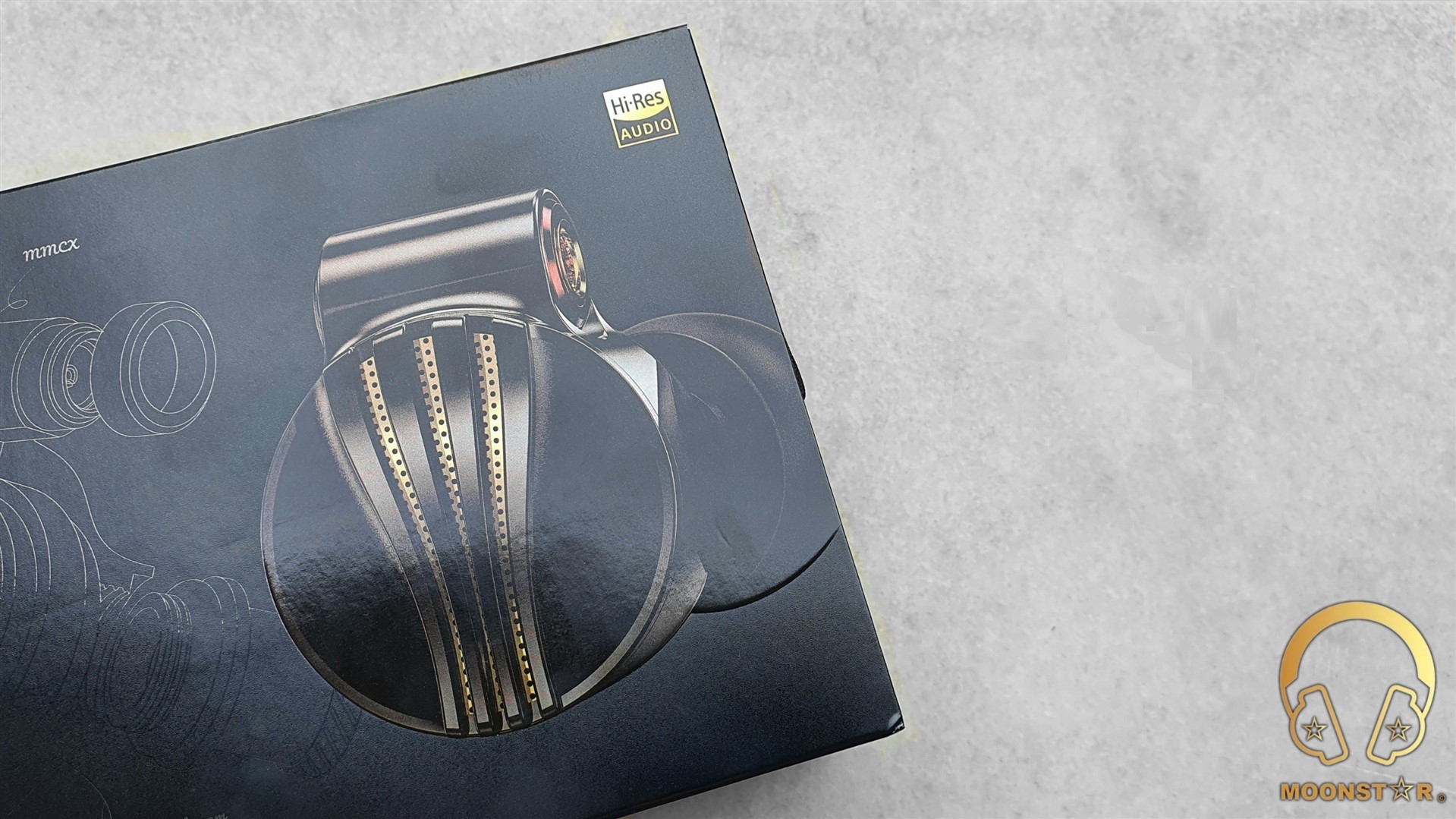
Inside the box are the following contents/accessories;
- 1 pair x FiiO FD7 In-Ear Monitors
- 1 pcs x Detachable cable with MMCX connectors
- 3 pcs x Interchangeable Headphone Jacks (3.5mm SE, 2.5mm Balanced, 4.4mm Balanced)
- 3 pcs x Interchangeable Sound Tubes (Bass, Balanced, Treble)
- 3 pairs x Bass Ear tips
- 3 pairs x Vocal Ear tips
- 3 pairs x Balanced Ear tips (1 pair came preinstalled)
- 2 pairs x SpinFit Silicone Ear tips
- 2 pairs x Triple Flange Silicone Ear tips
- 2 pairs x Memory Foam Ear Tips
- 1 piece x HB5 Storage Case
- 1 piece x Cleaning Brush
- 1 piece x SK1 Magnetic Cable Organizer (can also be purchased here separately)
- 1 piece x FiiO MMCX Assist Tool
- 1 piece x Warranty Card and User Manual

The FiiO FD7 offers a very rich ear tips collection that is placed in a foam layer that shows some short descriptions about the sound effects and the size of the tips. The collections includes 3 pairs of SpinFit silicone tips (S/M/L), 3 pairs of balanced ear tips (S/M/L size), 3 pairs of vocal ear tips (S/M/L size), 3 pairs of bass ear tips (S/M/L size), 2 pairs of memory foam ear tips (M/M/ size) and 2 pairs of Bi-Flange ear tips (M Size).
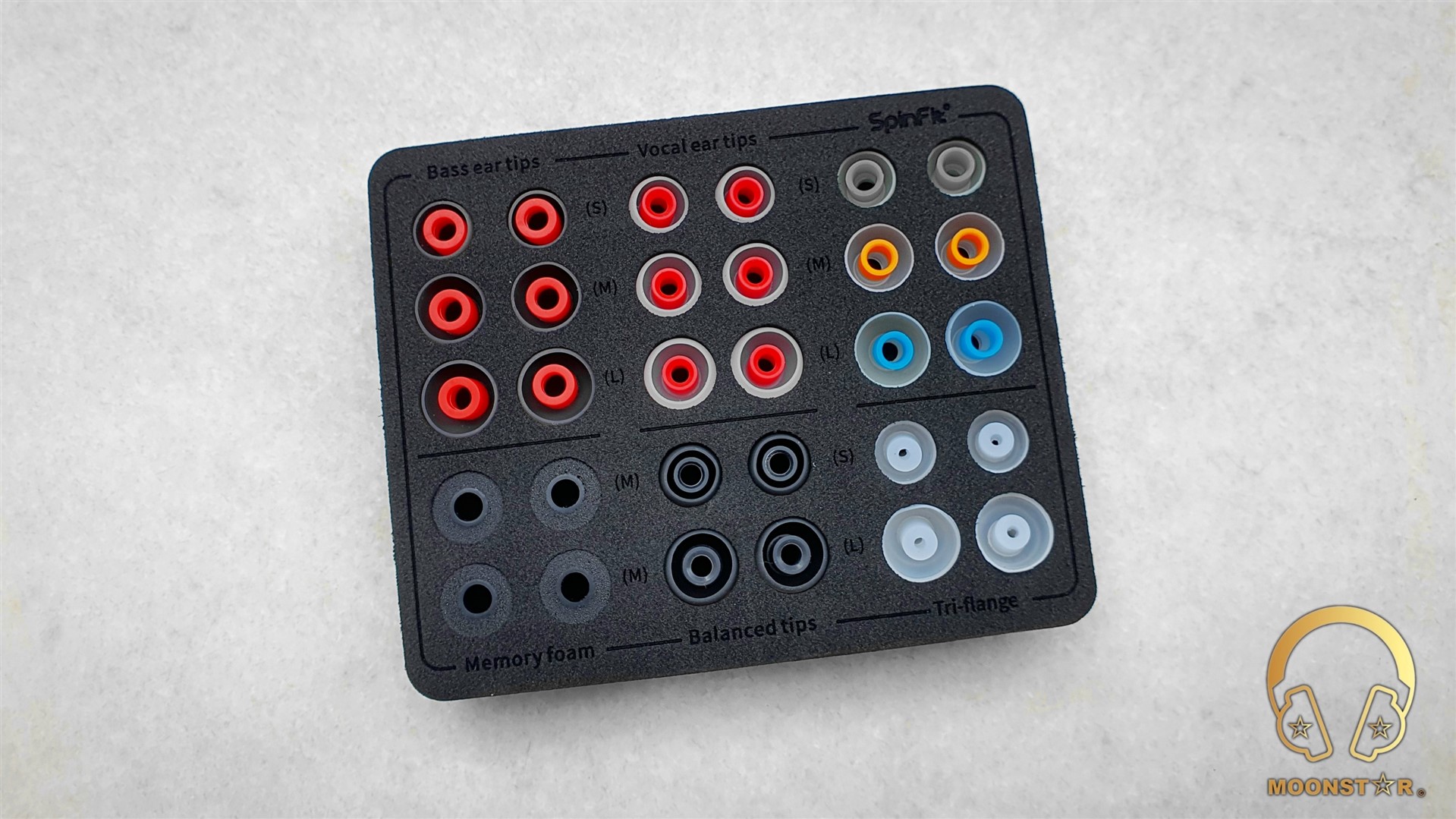
The HB5 storage case is another highlight of the FD7, which has a pretty luxurious appearance.


The accessories package includes also some useful additions such like the SK1 Magnetic Cable Organizer, a cleaning brush and FiiO’s new MMCX Assist Tool.
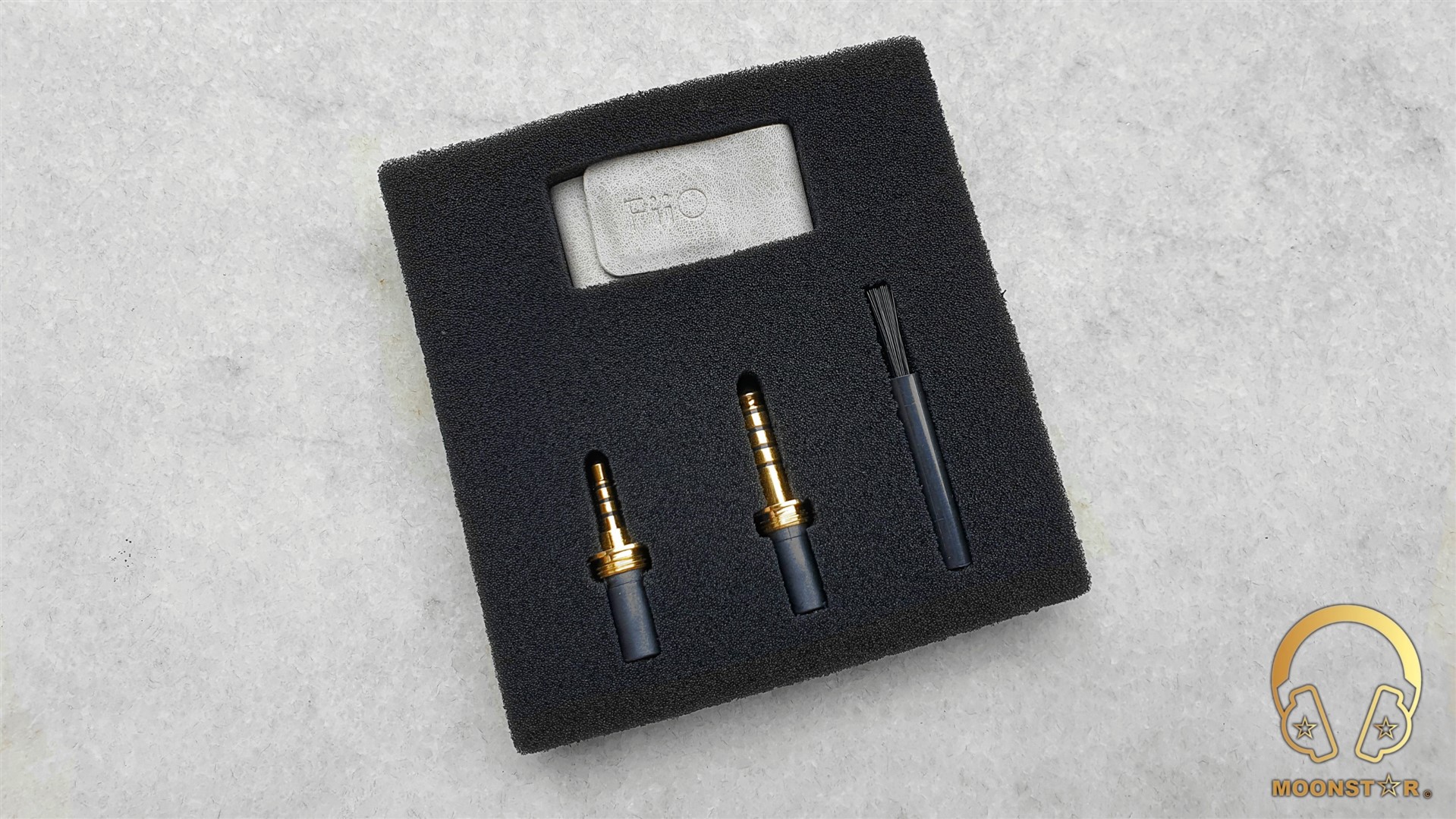
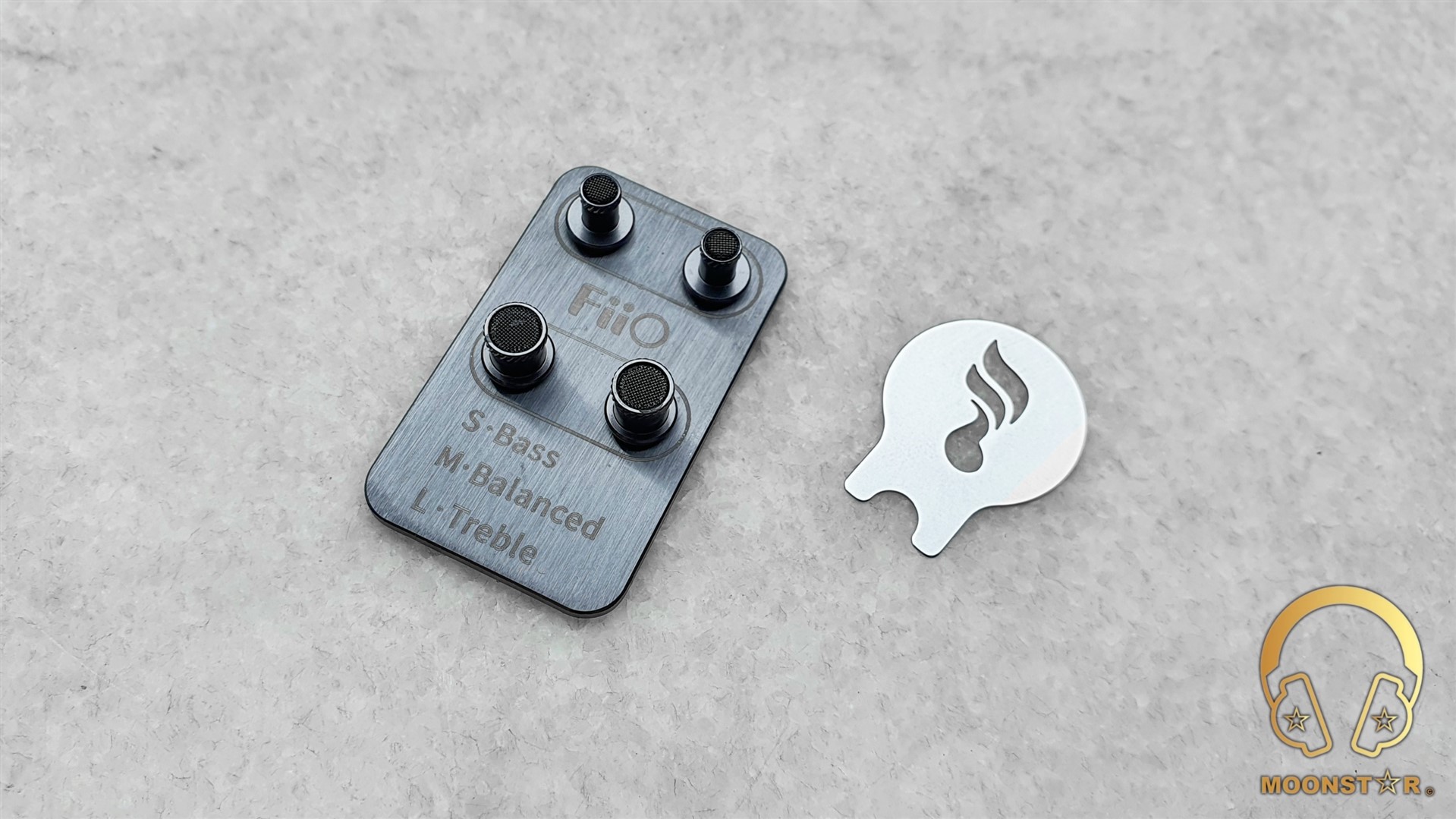
Design & Build Quality:
The FD7 is a solid looking In-Ear Monitor with its rigid monitor shell made of metal material in combination with a black finish. The appearance is pretty similar to those of the FD5, which was the first IEM of the company that had such a cylindrical shaped design. The FD7 does in fact implement many of the design elements we saw on the FD5 and takes them further, such like the semi-open & front acoustic prism design, volcanic field and many more.

The color scheme of the FD7 reflects the Chinese landscape paintings such like gold flake rivers and vast black mountains. On the front is the faceplate of the FiiO FD7 with its semi open back design and the so-called volcanic field system behind it.
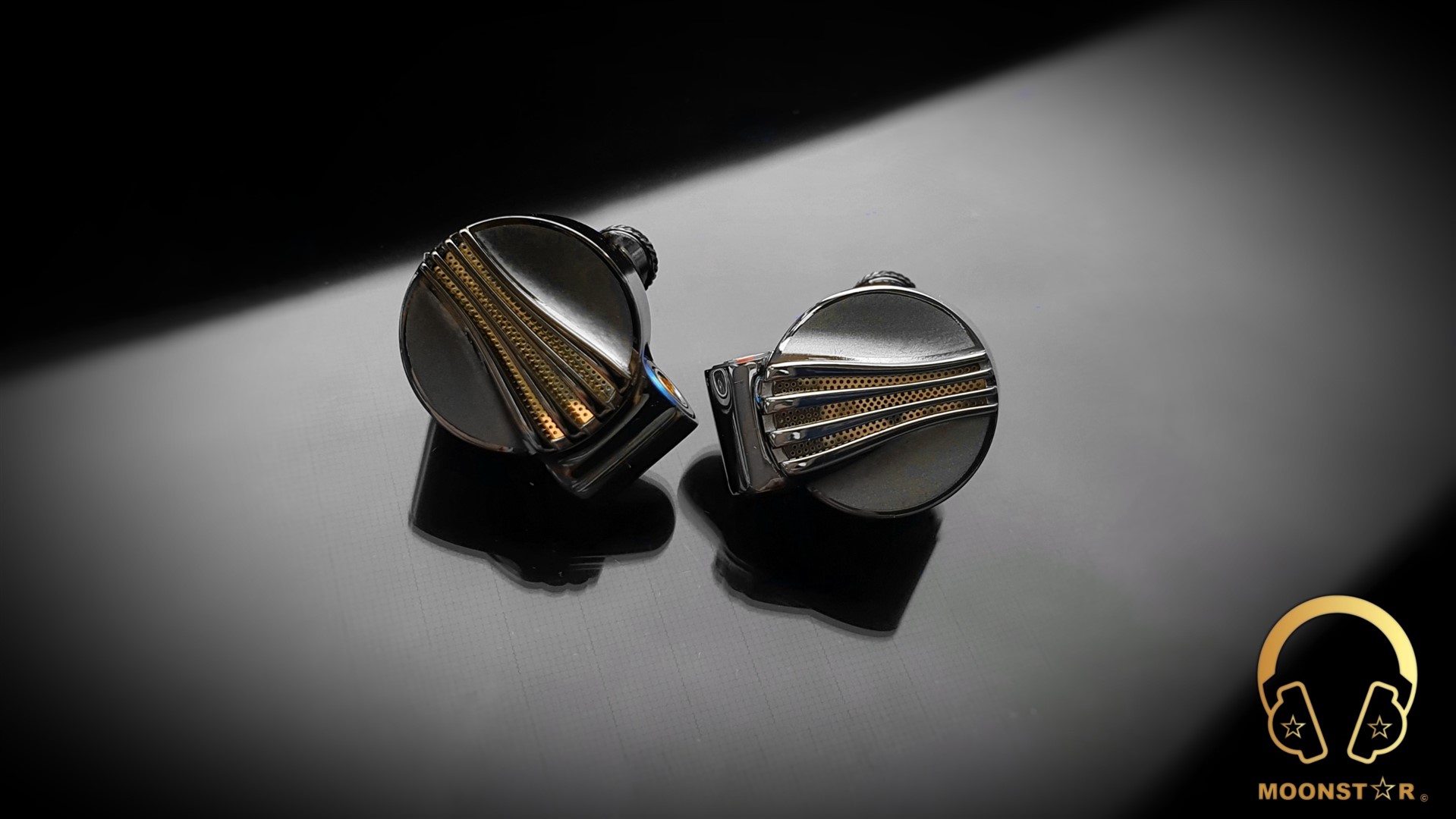
The rear part has a curved cylindrical shape same like the FD5, FD3/FD3 Pro and the FA7S.
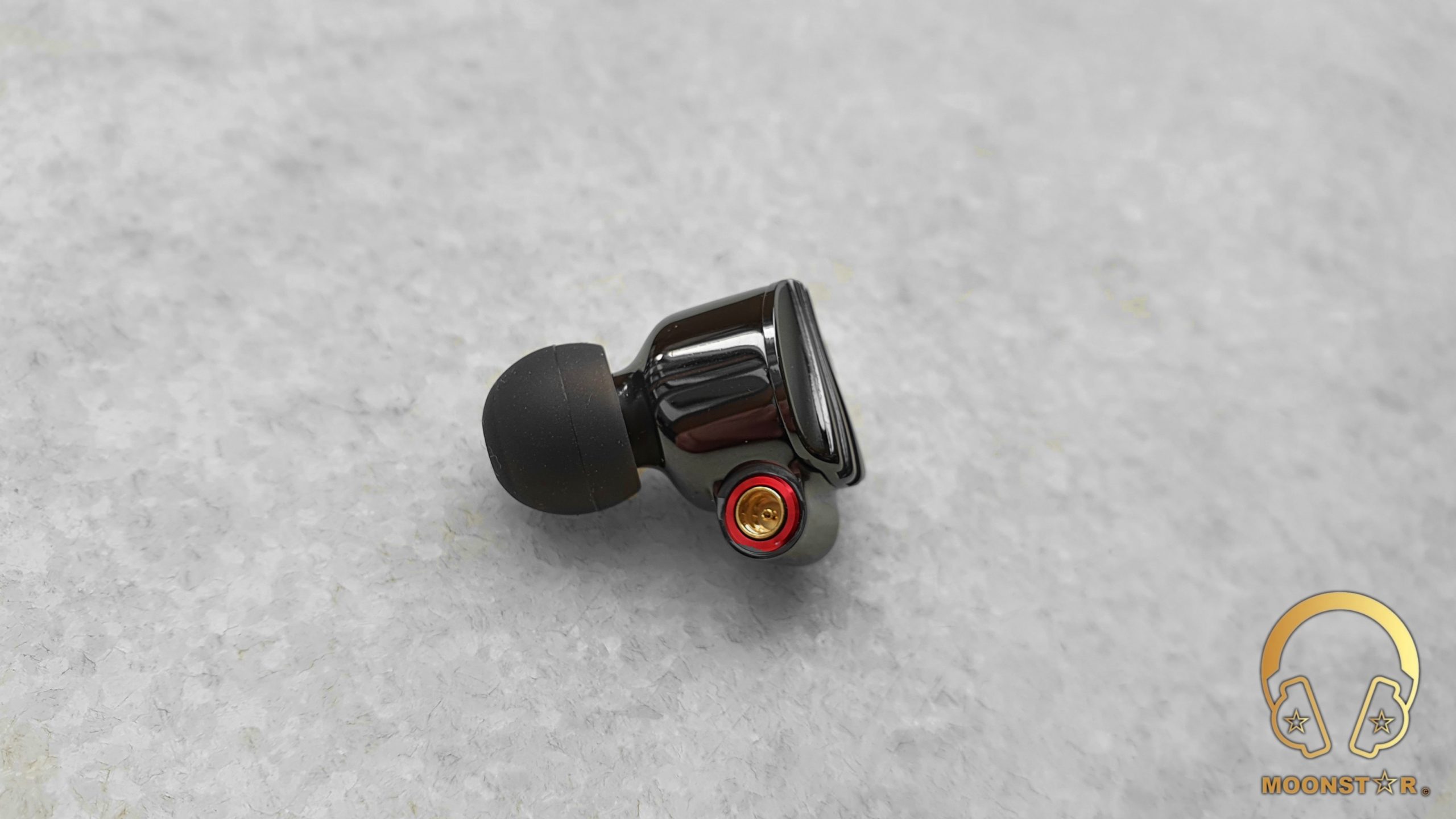
Here are the L (Left) & R (Right) markings and a small vent for the huge 12mm diameter Dynamic Driver that is located near the unscrewable sound nozzle area.
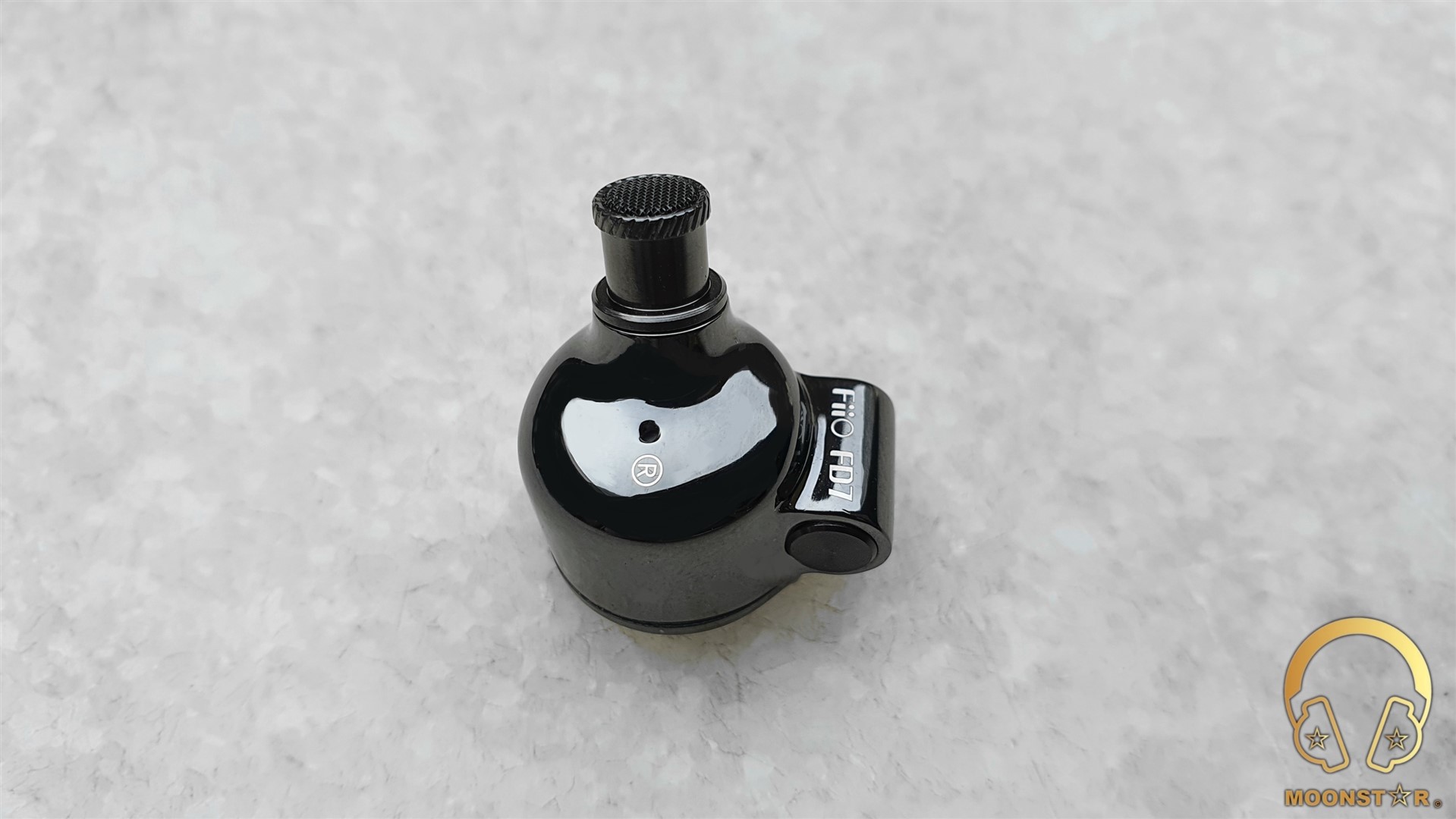
The monitor sports a protruding part with the MMCX (Micro Miniature Coaxial) female connectors on the top. The left MMCX female connector has a blue and the one on the right monitor has a red color indicator.
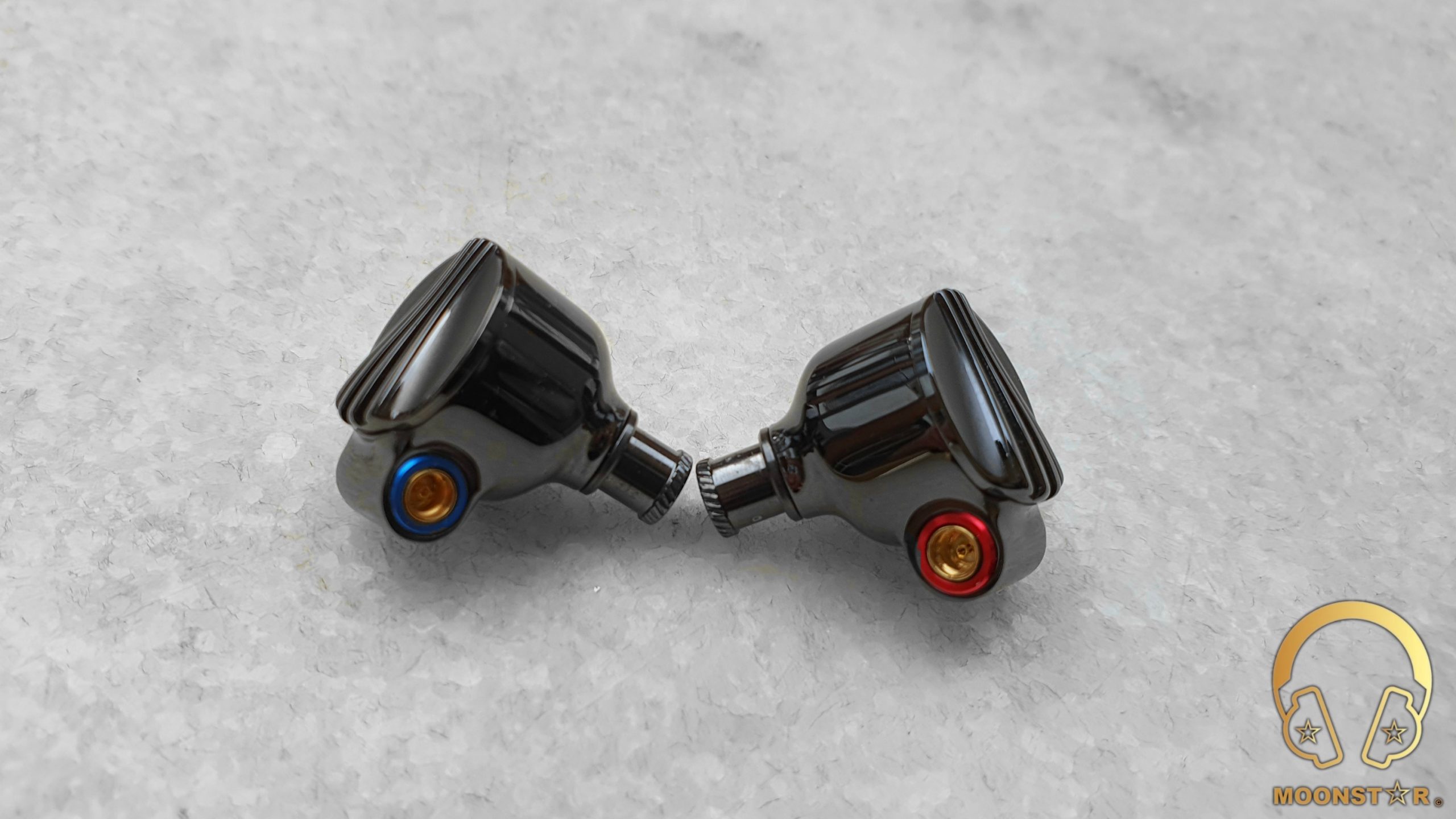
The sound nozzle has an “Interchangeable Sound Tube” design same as the one we have seen on the FD5.
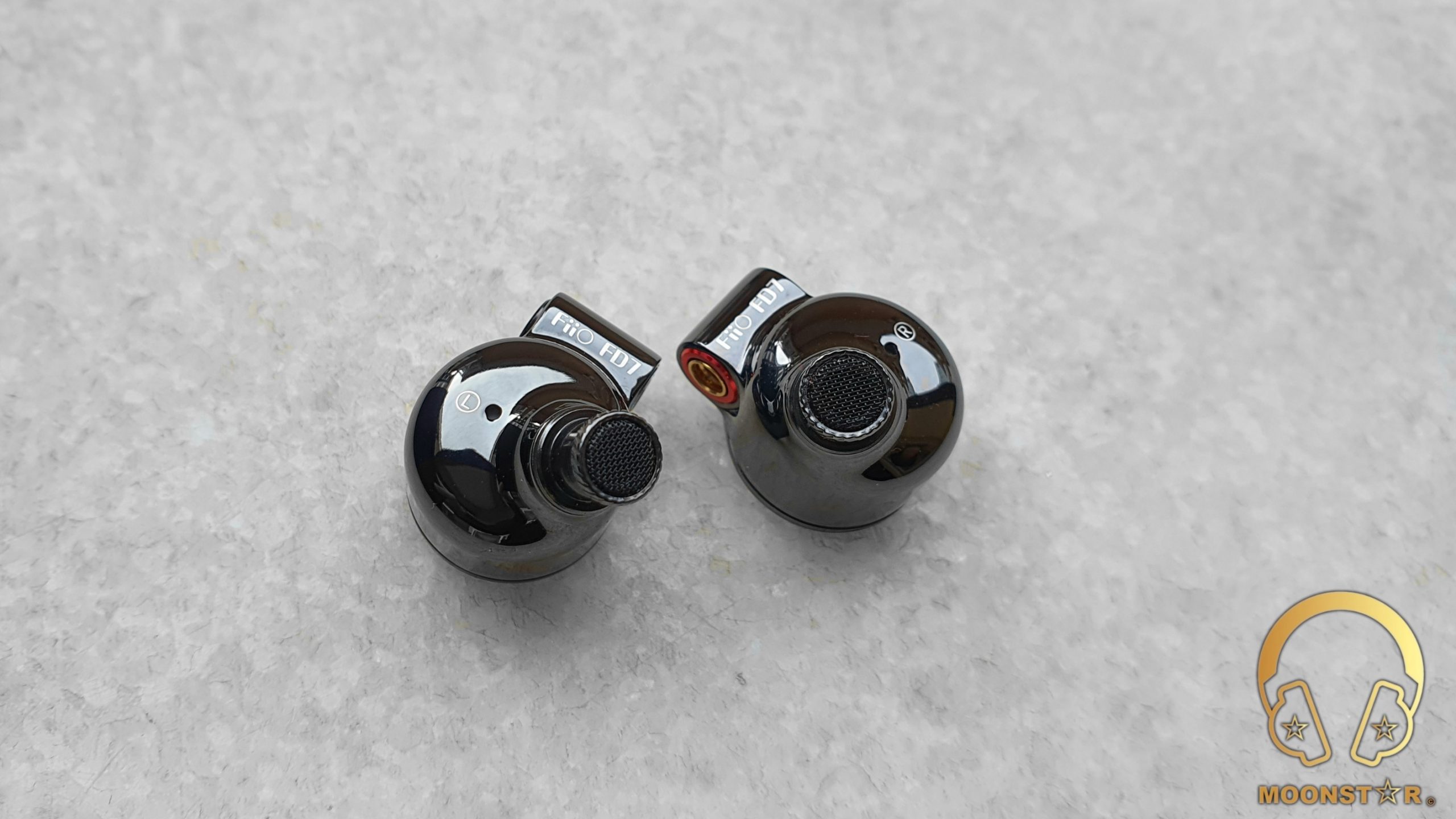
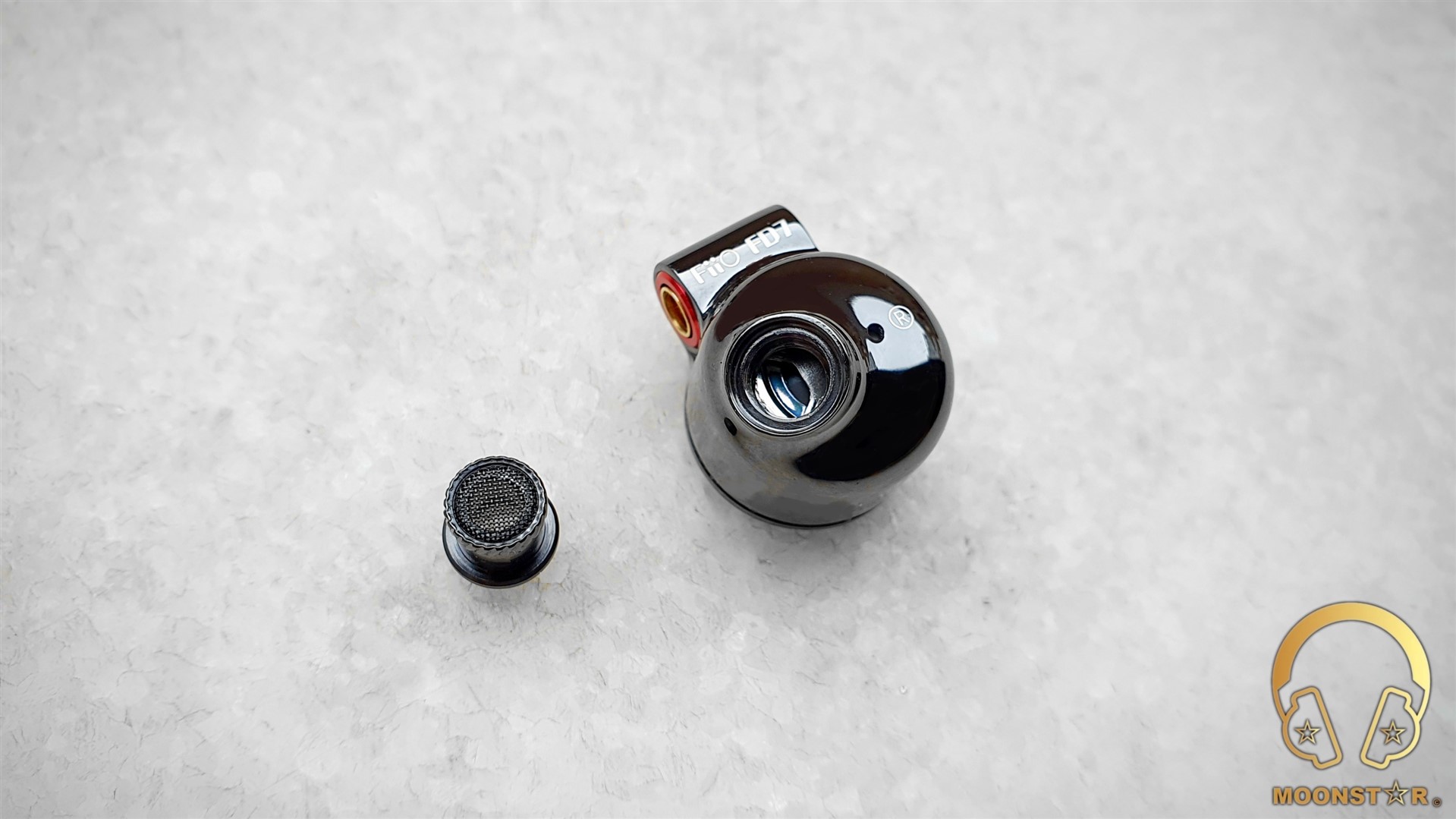
The FD7 comes this time with 3 different Interchangeable Sound Tubes, which are Bass, Balanced and Treble. The treble tube has the largest diameter, while the Bass tube has the smallest diameter.

Detachable Cable:
The FiiO FD7 comes with a high quality 4 core detachable cable made of 224 strands of high-purity Monocrystalline Silver wires.

The cable has a Litz braided design that features an environmental friendly medical grade TPU insulation with very low amount of microphonic effect.

The FD7 utilizes angled expanded MMCX connectors, which went through many ergonomic iterations and improvements, in order to achieve maximum comfort.
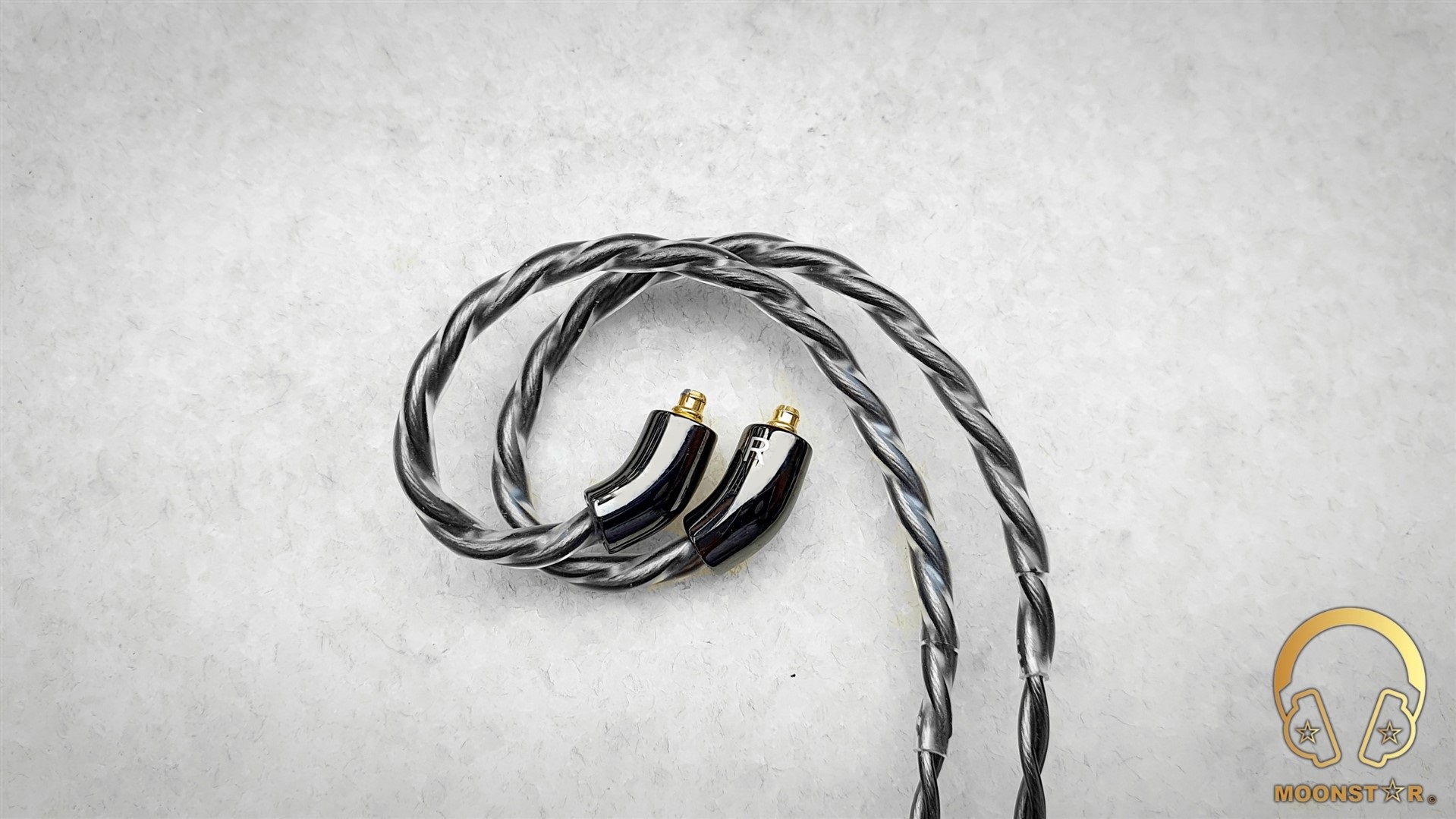
The cable features a metal Y splitter with the FiiO branding on the top and comes with a metal chin slider made of the same metal material in black (gunmetal) color.
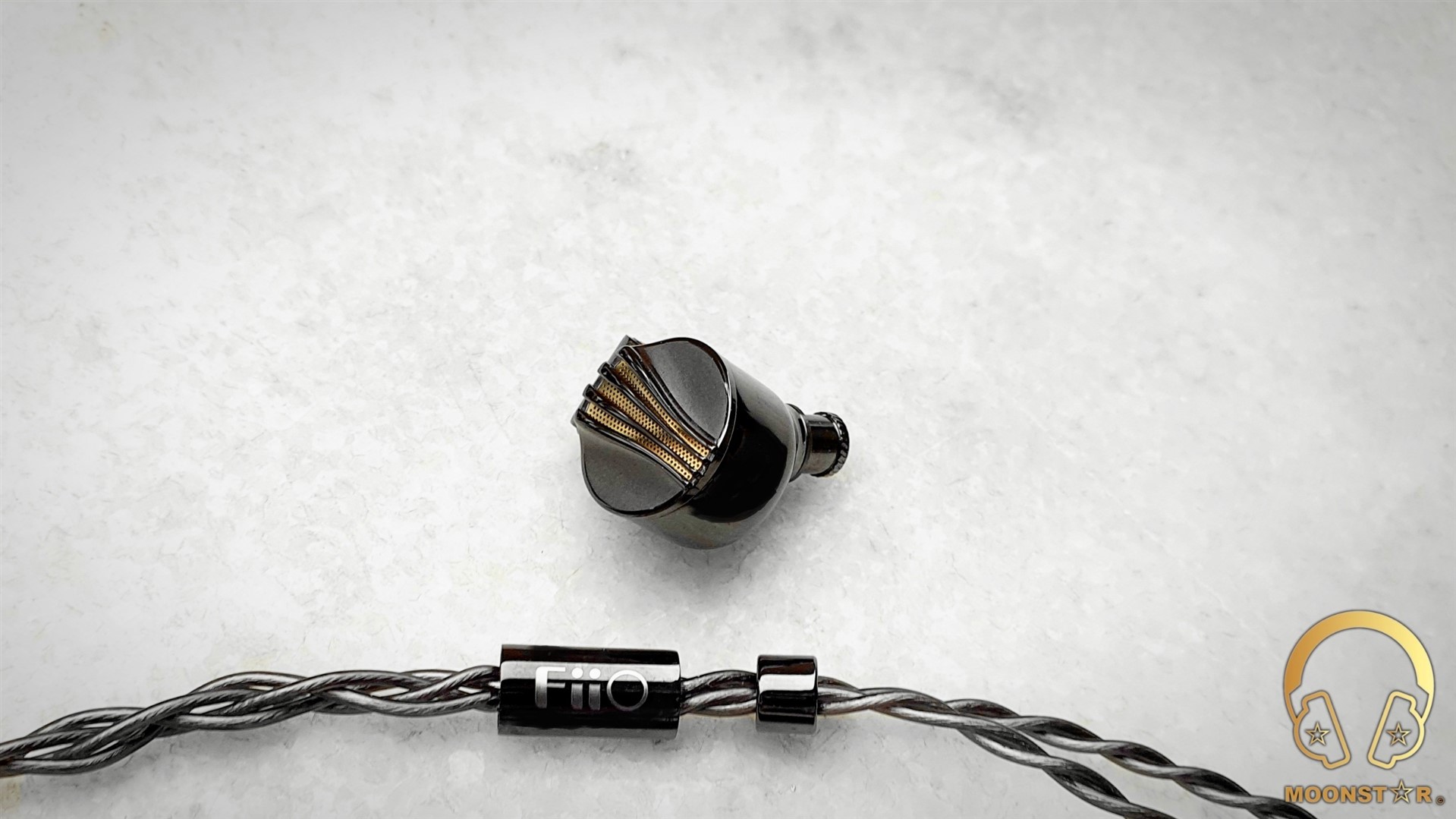
The detachable cable comes with an Interchangeable Headphone Plug that has a unique twist and lock mechanism same like the one we have seen on the FD5. It offers 3 (three) plug variants, which are the 3.5mm Single Ended (TRS) plug, 2.5mm Balanced (TRRS) plug and the 4.4mm Balanced (TRRRS) Pentaconn plug.
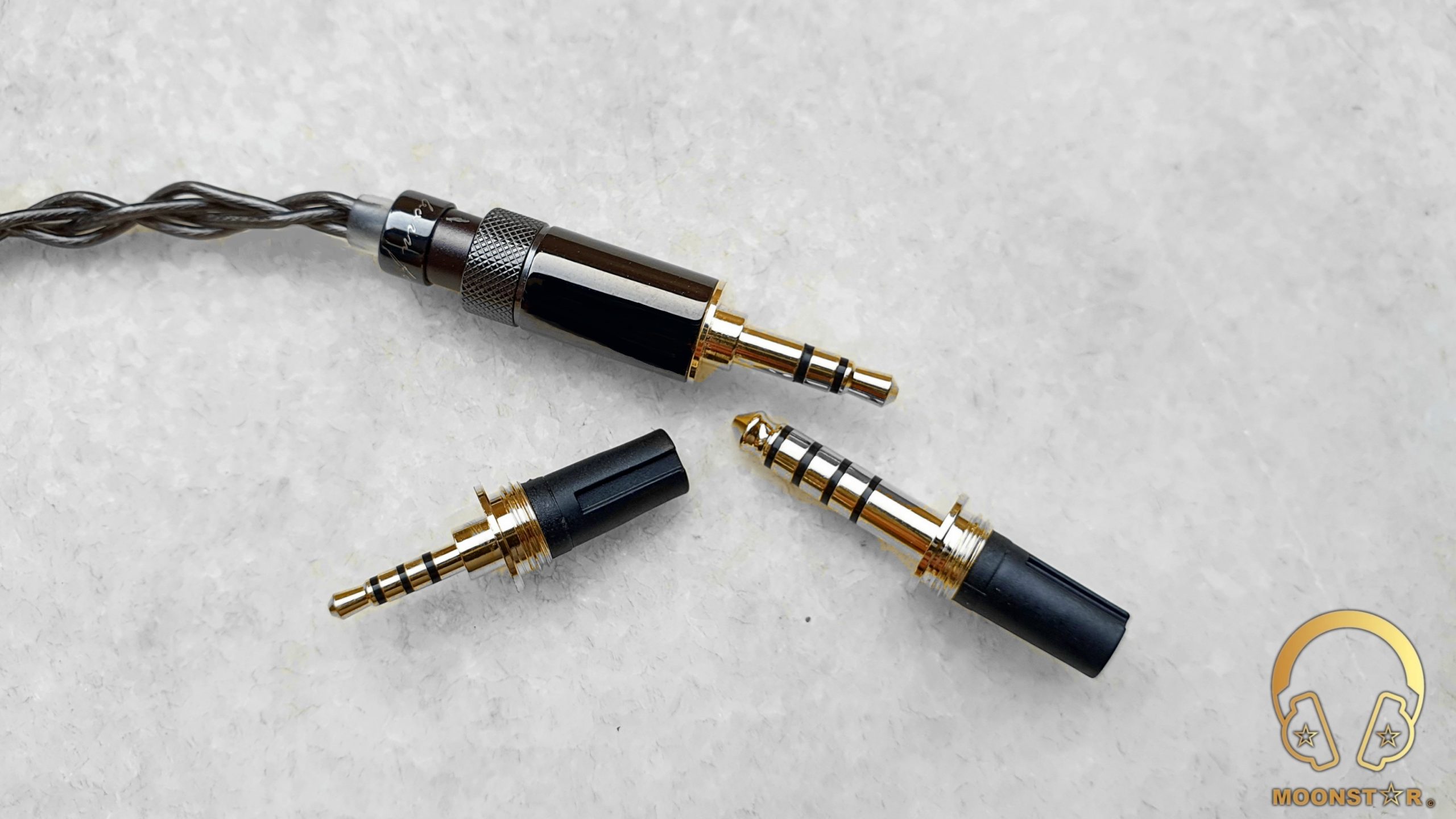
The housing of the headphone plug has a strait profile and is made of the same metal material in black color.
Isolation & Comfort:
The passive noise isolation of the FiiO FD7 is on an average level, since it features a unique semi-open-back design. However, the isolation is efficient enough for the use it in fairly noise environments such like a metro, bus or train.
The FiiO FD7 offers a quite ergonomic fit thanks to its curved cylindrical shape. This shape makes it pretty ideal for the use for longer listening periods without to hurt my ears with an average sized ear concha.
Drivability & Pairing:
The FiiO FD7 has an impedance of 50Ω (Ohm) and a sensitivity of about 111dB @ 1mW. It can be driven with relative weak sources such like Smartphone’s or Tablets. However, I do highly recommend to pair the FD7 with more powerful and detailed devices such like DAP’s (FiiO M11 Pro / M11 Plus) DAC/AMP’s (FiiO Q5s, BTR5), or DAC/Amplifier Dongles (FiiO KA3) to hear the true potential of this wonderful sounding In-Ear Monitor.

Remarkable Features:
A) 12mm Diameter Pure Beryllium Diaphragm [Edit]:
The FiiO FD7 utilizes a 12mm diameter pure beryllium diaphragm dynamic driver. Beryllium material is 4 times more rigid than steel while only weighing ¼ as much as titanium and has 3 times the transient performance compared to titanium drivers for a faster overall sound response.
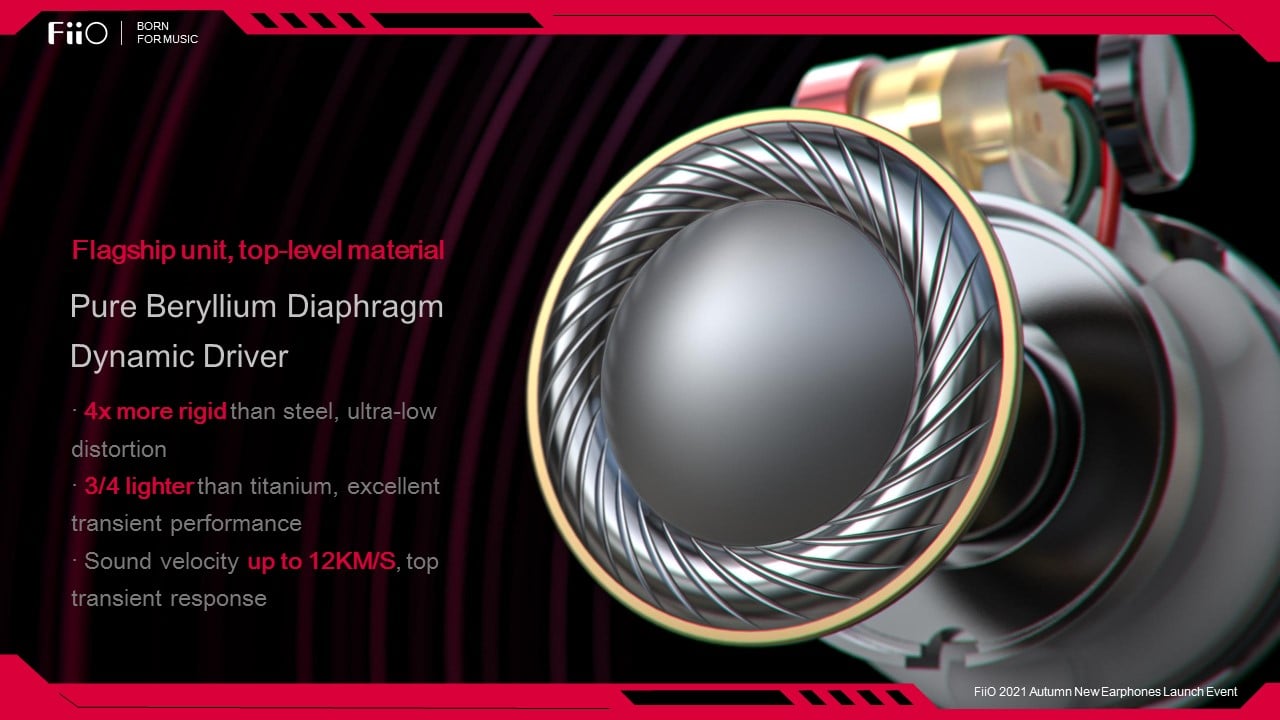
B) Volcanic Field & Semi-Open Design:
The “Volcanic Field” reduces standing waves and distortion, and overall improves the diffusion of bass waves in the FD7 wired earphones. In addition, the FD7’s semi-open design relieves pressure on the ear for more comfortable listening.
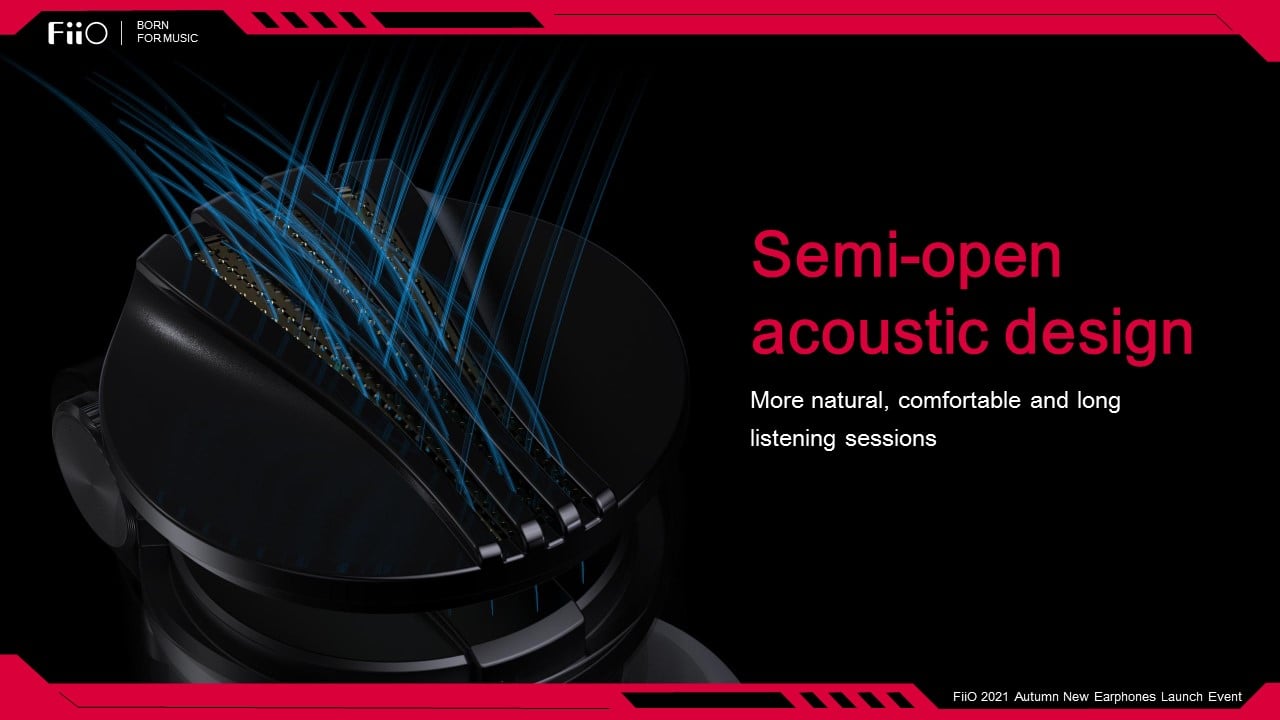
C) Acoustic Prism:
The FD7 features an acoustic prism system that effectively changes and precisely controls the way sound waves travel through the monitors to enhance how high frequency waves propagate and to ensure audio phases are correct.
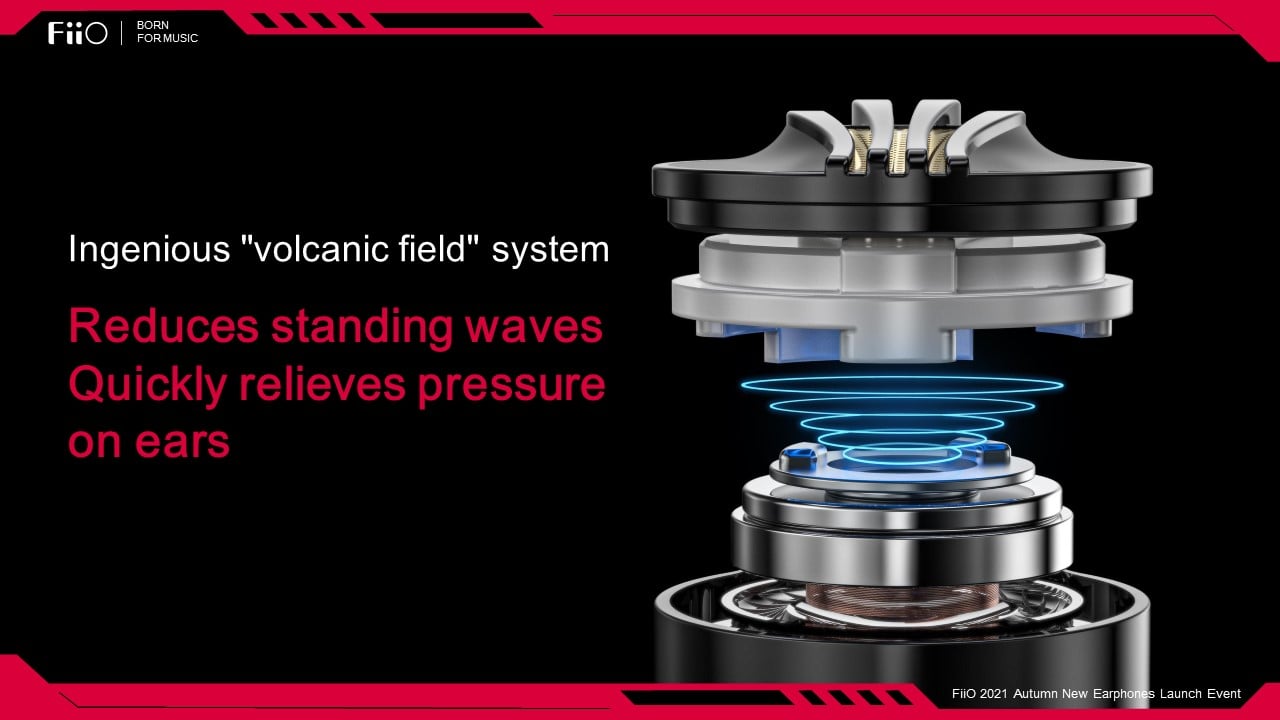
Technical Specifications:
- Driver Type : 12mm Pure Beryllium Diaphragm Dynamic Driver
- Frequency response : 10Hz-40kHz
- Impedance : 50Ω@1kHz
- Sensitivity : 111dB@1mW
- Max input power : 100mW
- Cable : 4 Core High Purity Monocrystalline Silver Wire Cable
- Cable length : 120cm
- Weight : 11 grams (single unit)
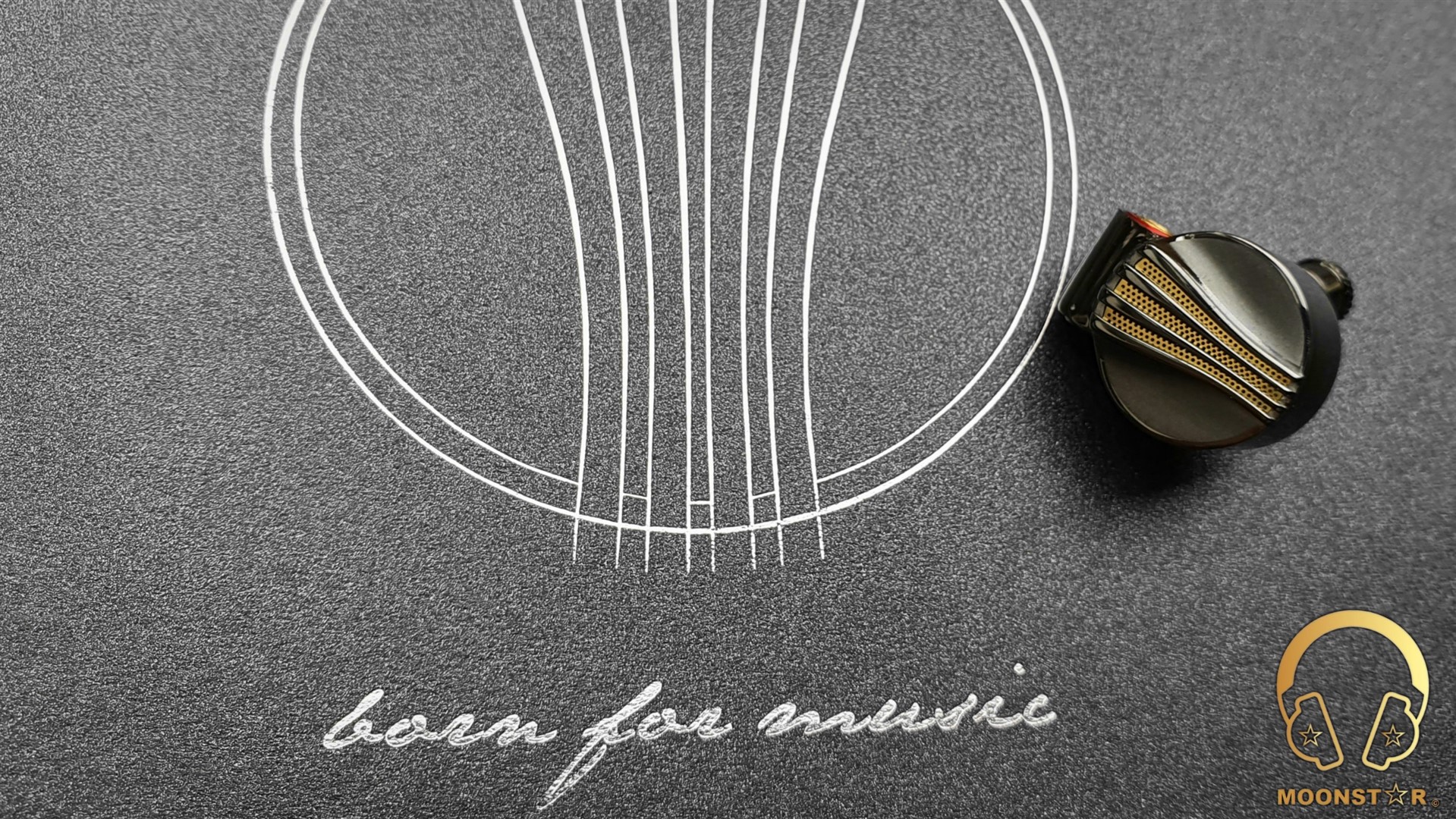
Sources used for this review:
- IEM : FiiO FD7, Final Audio B1, Metalure Wave
- DAP/DAC/AMP : FiiO M11 Pro, FiiO Q5s, FiiO BTR5, FiiO KA3
Albums & tracks used for this review:
- Adele – My Little Love (Spotify)
- Randy Crawford – On Day I Will Fly Away (Flac 16bit/44.1kHz)
- Mariah Carrey – Without You (Flac 16bit/44.1kHz)
- Hayley Westenra – Odyssey Album (Dezzer HiFi)
- Sarah McLachlan – Angel (Flac 24bit/48kHz)
- Sertap Erener – Aşk (Flac 16bit/44.1kHz)
- Edith Piaf – Non Je Ne Regrette Rien (Flac 16bit/44.1kHz)
- Diana Krall – So Wonderful (DSF)
- Aretha Franklin – I Say A Little Payer (Flac 24bit/96kHz)
- David Bowie – Heroes (Flac 24bit/192kHz)
- Elton John – Rocket Man ((Flac 24bit/96kHz)
- Barry White – Just The Way You Are (Flac 24bit/48kHz)
- Isaac Hayes – Walk On By (Flac 16bit/44.1kHz)
- Sting – Englishman in New York – (Flac 24bit/48kHz)
- Eric Clapton – Wonderful Tonight (Flac 24bit/96kHz)
- B.B. King – Riding With The King (Tidal Hi-Fi)
- Dave Gahan – Kingdom (Tidal Hi-Fi)
- U2 – Sunday Bloody Sunday (Flac 16bit/44.1kHz)
- Bro Safari, UFO! – Drama (Deezer HiFi)
- Armin Van Buuren – Vini Vici (Flac 16bit/44.1kHz)
- Really Slow Motion – Deadwood (Deezer HiFi)
- Jo Blankenburg – Meraki (Spotify)
- Lorde – Royal (Flac 24bit/48kHz)
- Toutant – Rebirth (Deezer HiFi)
- Gogo Penguin – Raven (Flac 24bit/192kHz)
- GoGo Penguin – Fanfares (Flac 24bit/192kHz)
- Portishead – It Could Be Sweet (Spotify)
- Charly Antolini – Duwadjuwandadu (Flac 24bit/192kHz)
- Michael Jackson – Billie Jean (Flac 24bit/192kHz)
- Ferit Odman – Look, Stop & Listen (Flac 24bit/192kHz)
- Chopin – Nocturn No. 20 In C-Sharp Minor (Flac 16bit/44.1kHz)
- Fazıl Say – Nazım Oratoryosu (Live) (Flac 16bit/44.1kHz)
- Vivaldi – Le QuarttroStagioni “The Four Season” (Deezer HiFi)
- Otto Liebert& Luna Negra – The River (Flac 24bit/192kHz)
- Lunatic Soul – The Passage (Flac 16bit/44.1kHz)
- Deftones – My Own Summer (Shove it) (Flac 16bit/44.1kHz)
- Photek – The Hiden Camera (Spotify)
- Muse – Hysteria (Flac 24bit/48kHz)
- Metallica – Sad but True (Flac 24bit/96kHz)
- Opeth – Windowpane (Flac 16bit/44.1kHz)
- Megadeth – Sweating Bullets (Tidal Hi-Fi)
- Rush – YYZ (Flac 16bit/44.1kHz)
- Rush – Leave That Thing Alone (Flac 16bit/44.1kHz)
- Slayer – Angel of Death (Spotify)s
- Liquid Tension Experiment 2 – Acid Rain (Spotify)
- Yosi Horikawa – Bubbles (Spotify)
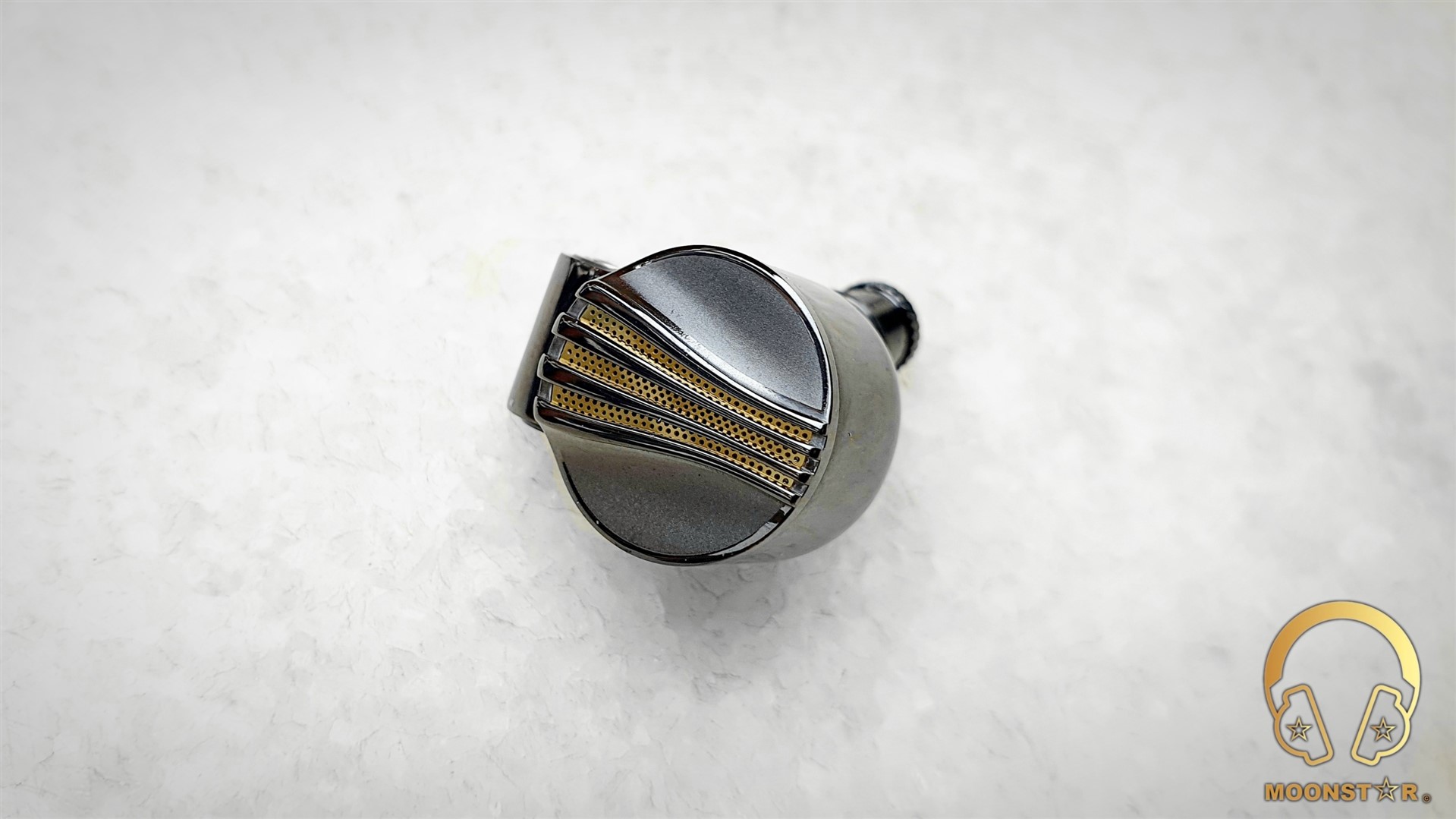
The Sound:
The FiiO FD7 is a very fluid, highly controlled and detailed sounding In-Ear Monitor, which shows a slightly warmer than neutral tonality and a pretty natural timbre that satisfied me immediately. The FD7 has a quite expansive and airy soundstage atmosphere that reminds me more to those of headphones rather than regular In-Ear Monitors. The bass shows a decent level of layering an impressive sense of speed and control. The midrange is highly transparent, organic and detailed, while the treble area is quite energetic but surprisingly controlled, and has a good grade of extension.

The FD7 comes with FiiO’s latest Interchangeable Sound Tube design. The package includes three (3) pairs of filters, which are the Bass, Balanced and Treble Tubes. The Balanced Tube offers the default tuning of the FD7, which is my favorite pair since it offers the most realistic, balanced and natural/uncolored presentation of this system.
Right below are my impressions and comparison of the Bass & Treble Tube, directly compared to the Balanced Sound Tuning Tube (Default/Reference).
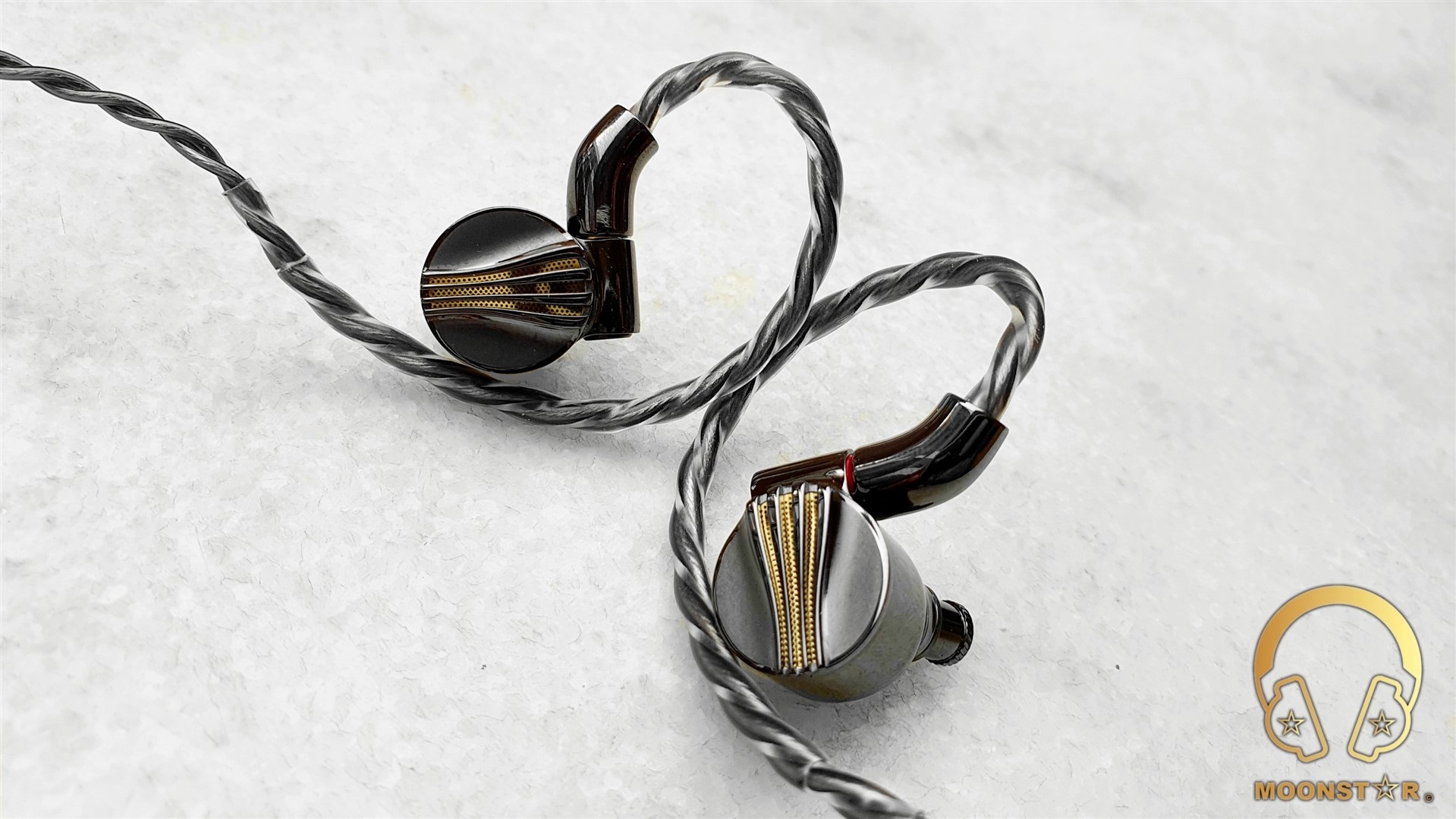
Bass Tube:
The Bass Tube is the one with the smallest diameter. It shows the warmest tonality and helps to increase the lower frequency response. It has the highest amount of coloration and shows the most entertaining sound signature of all tree Sound Tubes. The subbass region shows more depth and rumble, while the decay remains unchanged, which impressively fast for a dynamic driver IEM, thanks to the use of the Pure Beryllium Diaphragm. The midbass sounds slightly ore impactful compared to the Balanced and Treble filter, while the sense of speed and control in this are still unchanged. Moreover, the lower midrange shows more intensity compared to the balanced and treble filter, especially when I do listen to male vocals or strings like cellos and acoustic guitars.
Treble Tube:
The Treble Tube is the one with the brightest tonality. It is not a night and day difference but the still audible. The upper midrange and lower treble region sounds more highlighted compared to the Balanced Tube, especially the in direct comparison to the Bass Tube. The upper midrange shows a tad more transparency, while the lower midrange is losing some body and depth. The transitions from the upper midrange towards the treble region do still sound controlled. The lower treble region offers a bit more clarity, while the upper treble are gains some additional airiness and sparkle.

PS: This review has been written after a burn-in period of 160 hours since the Pure Beryllium Diaphragm needs some time to show its true potential. My impressions below are based to my impression with the Balanced Sound Tube that has been carefully installed to the FD7, which offers in my opinion the most realistic, versatile and pleasant to listen to sound profile. I have used the stock cable and the Balanced Silicone Ear Tips. My main sources are the FiiO M11 Pro and the FiiO Q5S. The list of tracks I have listen during this review are listed above for your information.
Analyzing the Frequency Response of the FiiO FD7:
Bass:
The FD7 utilizes a 12mm Pure Beryllium Diaphragm Dynamic Driver offers an impressive grade of bass speed and control. It is not as impactful like previous FD Series In-Ear Monitors such like the FD5, however the resolution, clarity and layering is on a TOTL level.
The subbass region of the FD7 has a moderate level of depth and extension, while the rumble is suitable for most genres especially when you use it with the Bass Tube. Bass heavy genres such like EDM, House music, Glitch hop, etc. are not the strength of the FD7, so if you prefer an IEM with thunderous subbass rumble instead of control and technicality in this area, the FD7 wouldn’t be the best choice.
The FiiO FD7 offers an outstanding performance in terms of authority when I do listen to songs with complex bass passages such like Gogo Penguin’s “Raven” and Photek’s “The Hidden Camera”.
The midbass region is a bit more pronounced compared to the subbass area. The tonality of this region is slightly warmer then neutral, while it shows an impressive sense of control, tightness and realism tanks to highly capable 12mm Pure Beryllium Diaphragm Dynamic Driver. Instruments from contrabass to drums, from def to bongo’s all have been reproduced in a pretty natural and realistic manner. The quality and intensity of the midbass is neither too low nor too much when you use the Bass Tube.

Midrange:
The FiiO FD7 shows a fluid, petty organic and natural midrange character and offers a nicely smooth and quite lively presentation in this area that got immediately my attention, especially when I have listen genres like jazz, blues and classical music. This area shows slightly warm tonality and a coloration that is there but not overdone. The midrange atmosphere is pretty transparent and airy, while the level of resolution is quite close to much more expensive Top Tier In-Ear Monitors.
Vocals & Instruments:
The general vocal presentation of the FiiO FD7 sounds quite realistic and detailed with both male and female. There is a slightly coloration in this area that helps to create a fluid and special timbre, which is quite exciting to listen to. The lower midrange has just the right amount of depth and body to create a pretty intimate and emotional male vocal presentation when I do listen to voices like Isaac Hayes, Sting or Barry White.
Female vocals do sound more detailed and lifelike compared to previous FiiO IEM’s including the FD5 and FH7. The tonality is a tad warmer than neutral, while the sense of clarity and resolution is top notch. What the FD7 makes so special in this area is that it is able to produce a decent level of vividness/brightness without to sound unnatural, to have negative conditions such as sibilance or sharpness, when I do listen to female voices like Edith Piaf, Sertap Erener or Mariah Carey.
The midrange of the FiiO FD7 shows an excellent sense of transparency and airiness, so that instruments are well separated from each other, which is an advantage when I do listen to songs with complex and instrument dense passages such like GoGo Penguin’s “Fanfares”. Instruments from pianos to cymbals, from flutes to cellos are reproduced in a pretty detailed and energetic yet nicely controlled manner, thanks to the well adjusted upper midrange that is produced by the Pure Beryllium Diaphragm Dynamic Driver.

Upper midrange & Treble:
The FiiO FD7 has offers a pretty rich and technically competitive upper midrange and treble performance for an In-Ear Monitor at this price category. It is more forgiving to poor recorded songs compared to the FD5, since it has a precise adjusted yet not overdone roll-off around the 3 kHz region that gives it a nice sense of smoothness in this area.
The upper midrange transitions are quite clear and highly controlled when I do listen to instruments such as cymbals, drums or to guitars. For example, the guitar solos played with high distortions such like those in Megadeth’s “Sweating Bullets”, Slayer’s “Angel of Deaths” and Rush’s “Leave That Thing Alone” are reproduced with a good level of authority and clarity.
The treble range of the FD7 sounds noticeably more controlled compared to the FD5, which sounded a bit sharp and also less forgiving to poor recorded songs. It still able to produce an excellent sense of clarity and resolution in the lower treble region, and is also able to create a decent grade of airiness and sparkle in the upper treble register.
Instruments such like cymbals or hi-hats in both jazz and metal music do sound nicely pronounced, detailed and are shown with a good level of extension. The FD7 is able to produce a decent sense of resolution and sparkle in this area, when I do listen to a wide variety of instruments from pianos to flutes, from violins to synthesizers.
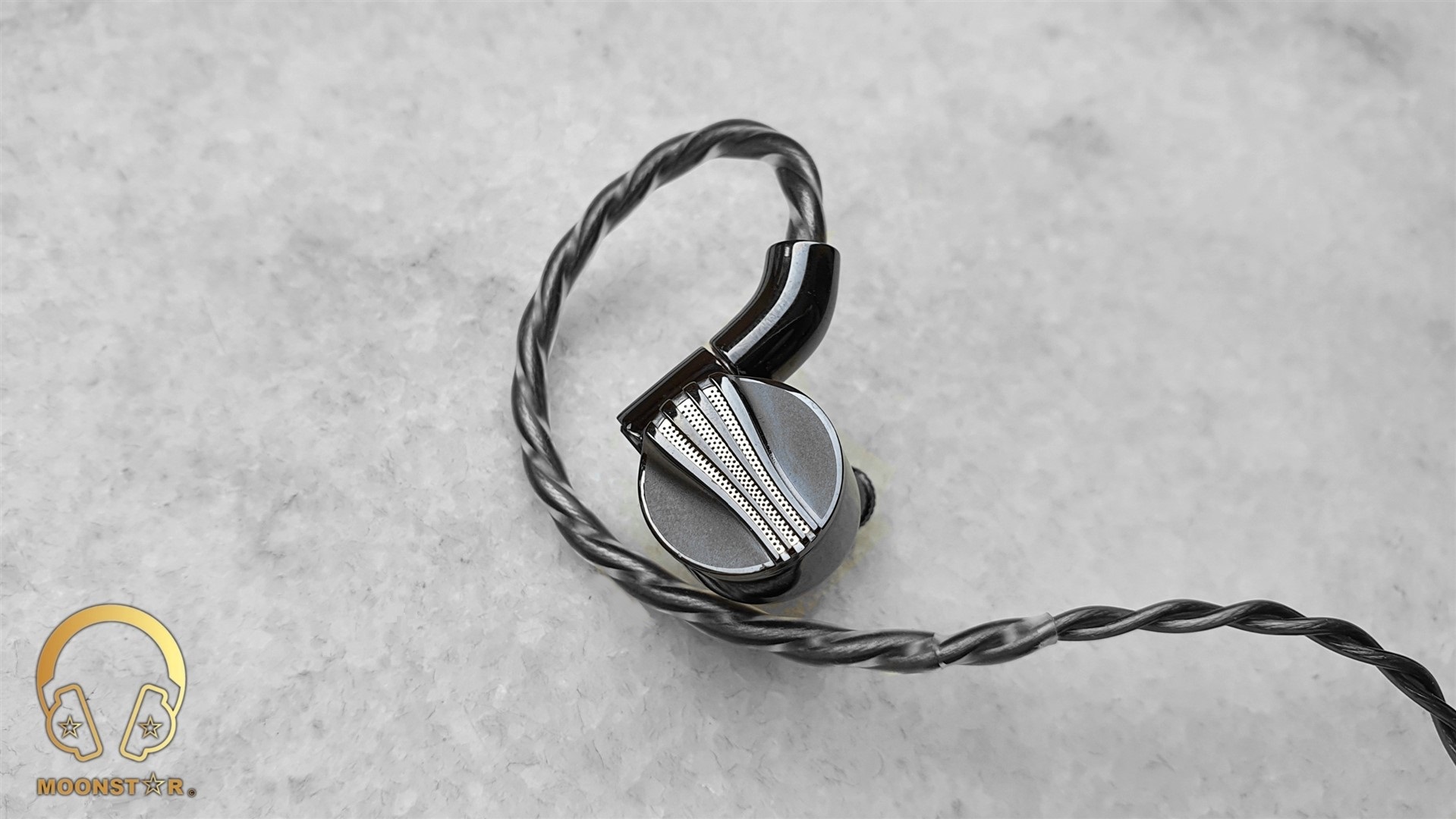
Soundstage & Imaging:
The FiiO FD7 shows a pretty realistic soundstage atmosphere with a decent sense of airiness and transparency thanks to the semi-open back design, which creates ideal conditions for a precise placement of instruments and vocals. The soundstage shows an above average wideness and pretty good level of depth and height.
Some Comparisons:
FiiO FD7 versus Final Audio B1:
The Final Audio B1 has a warmer tonality and shows a higher level of coloration compared to the FiiO FD7 that offers a more natural tonality and organic timbre.
The subbass region of the FD7 shows a slightly better level of depth and is superior in terms of authority and decay. The midbass area of the Final Audio B1 is more highlighted, warm, dens and impactful, however it can’t hold up with the FiiO FD7 when it comes to the clarity, resolution and overall layering in this area.
The midrange of the Final Audio B1 shows a warmer tonality and is also a bit more laid back in tits presentation, when compared to the FiiO FD7 that shows a more transparency and airiness in this area. The lower midrange of the B1 sounds pore pronounced and full-bodied, while the FD7 has the upper hand in terms of clarity and resolution. The upper midrange of the FiiO FD7 is more highlighted and detailed, while both IEMs do sound pretty controlled.
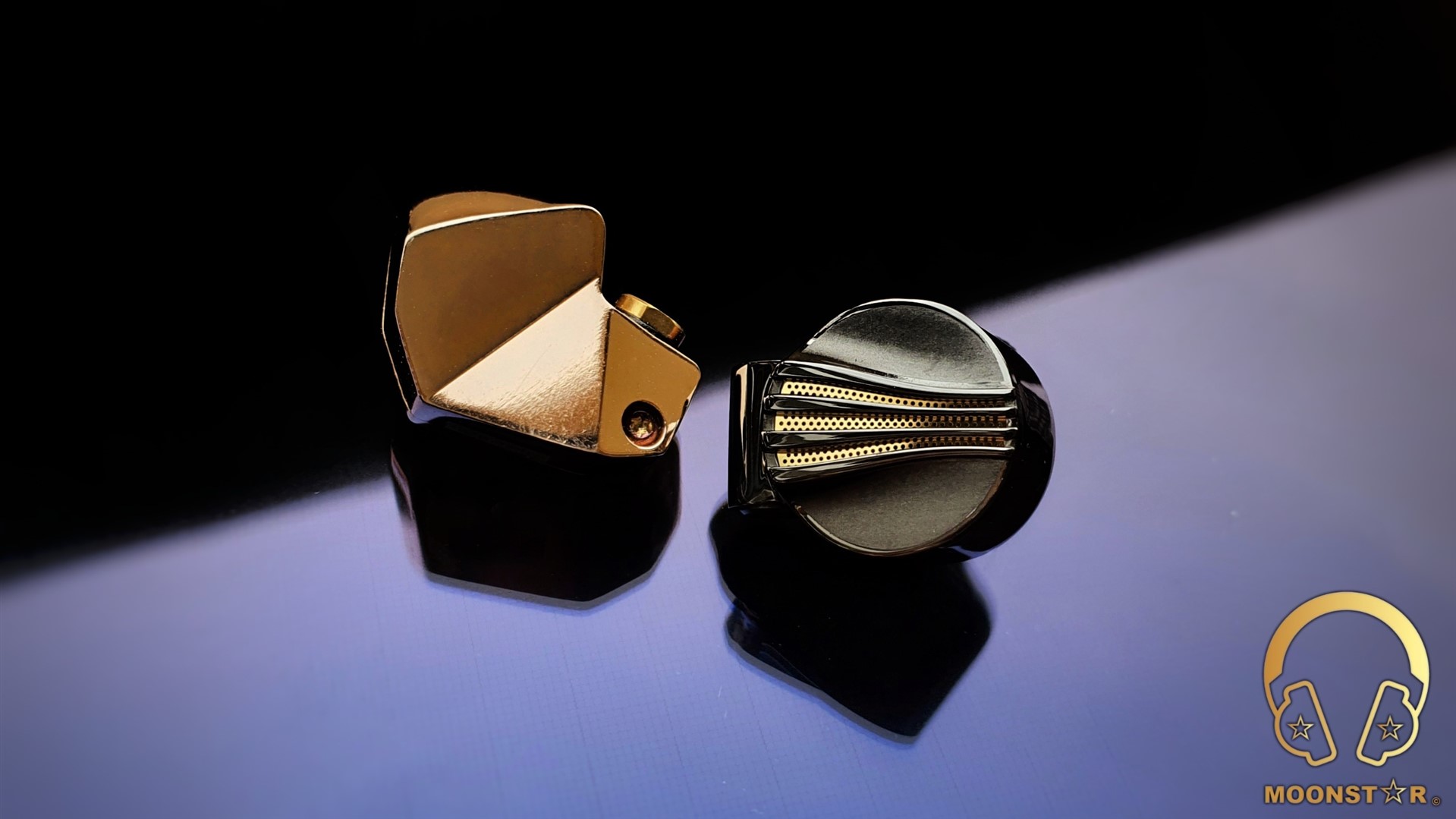
Both In-Ear Monitors are successful in the treble region in terms of technical performance.
The FiiO FD7 shows a more balanced, natural and controlled treble tuning, and offers also a better sense of clarity and definition in the lower treble region, while the Final Audio B1 has the slightly edge when it comes to the upper treble extension.
Both IEM’s are successful in terms of soundstage performance. However, the FiiO FD7 offers in general a better sense of airiness and spaces between instruments as well as vocals. The FD7 has the upper when it comes to the wideness of the stage, while the difference for the depth is quite minimal.
FiiO FD7 versus Metalure Wave:
The Metalure Wave is a pretty musical sounding In-Ear Monitor with a relative warm tonality that shows a mildly V shaped sound signature. The Wave is the IEM with a higher grade of coloration and shows a noticeably warmer tonality in direct comparison to the FD7.
Metalure Wave is slightly more successful in terms of subbass depth and quantity and shows more midbass intensity. The FiiO FD7 on the other hand is superior when it comes to the speed, control and layering in lower frequency region. The FD7 offers also better grade of clarity and has the slightly edge when it comes to the overall resolution.

The midrange of the Metalure Wave is warm and soft, while the level of transparency and airiness are on an average level. FiiO FD7 on the other hand, shows a more balanced, natural and transparent midrange presentation. The Wave has the upper hand in terms of lower midrange depth and male vocals, while the FD7 is superior when it comes to the general clarity and resolution of the midrange, especially in the upper midrange register.
The treble range of the FiiO FD7 offers a better sense of extension, clarity and definition while both IEM’s are controlled in this area. The upper treble region of the Metalure Wave sounds less airy and energetic compared to the FiiO FD7.
When it comes to the soundstage performance, I can say that the FiiO FD7 has the upper hand in terms of both wideness and depth.

Conclusion:
I am a lucky audiophile that has had the opportunity to review almost any FiiO IEM. Every new product of this company surprised me with its high value for its price, when it comes to the sound, esthetics and build quality. However, the FD7 is FiiO’s most natural, realistic and mature sounding IEM. It offers a very fluid, quite organic and detailed overall presentation from the lows up to the highs. This sound is packed in to a pretty comfortable and very esthetic looking monitor shell that comes with FiiO’s new interchangeable sound tube design, and a high purity silver cable with interchangeable plugs, which are part of the very rich accessory package.
Thank you for the Read!
Last edited:
Moonstar
100+ Head-Fier
Pros: Overall Bass Performance (Power, Control, Resolution),
Highly Transparent & Detail Midrange Presentation (with Balanced Audio Filter),
Smooth, Airy and Controlled Treble Tuning (with Balanced Audio Filter),
Great Looking Ultra Robust Monitor made from Titanium Material,
Accessory Package (Pure Silver Cable, Interchangeable Audio Plugs & Audio Filters, etc.)
Highly Transparent & Detail Midrange Presentation (with Balanced Audio Filter),
Smooth, Airy and Controlled Treble Tuning (with Balanced Audio Filter),
Great Looking Ultra Robust Monitor made from Titanium Material,
Accessory Package (Pure Silver Cable, Interchangeable Audio Plugs & Audio Filters, etc.)
Cons: Sounds a bit unforgiving in the upper register with the Green Filter,
Solid Looking Titanium Shell is a bit heavy,
Average Passive Noise Isolation
Solid Looking Titanium Shell is a bit heavy,
Average Passive Noise Isolation
FiiO FH9 Hybrid IEM Review
Introduction:
2021 was a very productive year for FiiO, especially when it comes to In-Ear Monitors, whether Hybrids (FH5s/FH5s Pro), Single Dynamic Driver (FD3, FD5, FD7/FDX) and Pure Balanced Armature Driver (FA7s) In-Ear Monitors.
The FH9 is the brand new flagship Hybrid IEM of the company that features a 6BA+1DD driver configuration. The Hybrid Driver configuration is a combination of 6x Balanced Armature Drivers + 1x Dynamic Driver with a 13.6mm Diameter Self-Developed DLC (Diamond like Carbon) Diaphragm. The High frequencies are produced with the Knowles SWFK-31736 drivers.
Some other remarkable features are a Titanium Alloy Construction, Interchangeable Audio filters and a Semi Open Acoustic Design.

Disclaimer:
I would like to thank FiiO for providing the FiiO FH9 as review sample. I am not affiliated with FiiO beyond this review and all these words are reflecting my true and unaltered opinions about the product.
Price & Availability:
The actual price of the FiiO FH9 is 599.99 US$. More information’s can be found under the links below;
Package and Accessories:
The FH9 came inside a rectangular box that was wrapped with a fancy looking cardboard sleeve that features the product illustration and some product related brandings on the top.

After you remove the cardboard sleeve you will see the main box in black color that sport a sketch of the FH9 on the top and the motto of the company, which is “born for music”.

This box of the FiiO FH9 contains the following items;
- 1 pair x FiiO FH9 Hybrid In-Ear Monitors
- 1 piece x 8 Core detachable cable with MMCX connectors
- 1 piece x Interchangeable Headphone Plugs 4.4mm TRRRS, 2.5mm TRRS & 3.5mm TRS
- 3 pairs x Interchangeable Audio Filters (Green, Black, Red “Black came Pre-installed”)
- 3 pairs x Bass Ear tips (S/M/L)
- 3 pairs x Vocal Ear tips (S/M/L)
- 3 pairs x Balanced Ear tips (S/M/L)
- 3 pairs x SpinFit Ear Tips (S/M/L - 1 pair came preinstalled)
- 2 pairs x Double Flange Ear tips (M/M size)
- 2 pairs x Memory Foam Ear Tips (M/M size)
- 1 piece x HB5 Storage Case
- 1 piece x Cleaning Brush
- 1 piece x SK1 Magnetic Cable Organizer (can also be purchased here separately)
- 1 piece x MMCX Assist Tool
- 1 piece x Warranty Card and User Manual

The FH9 comes with a very rich ear tips collection same like other FiiO products that I have reviewed in the past, which has been placed in to a foam layer that is showing a short description about the sound effect and the size.
Here are 3 pairs of balanced ear tips (S/M/L size), 3 pairs of vocal ear tips (S/M/L size), 3 pairs of bass ear tips (S/M/L size), 2 pairs of SpinFit Ear Tips (S/M/L - 1 pair came preinstalled), 2 pairs of memory foam ear tips (M/M/ size), 2 pairs of Double Flange ear tips (M/M Size).

Inside the box are also 3 different Interchangeable Headphone Plugs (the 3.5mm SE, 2.5mm & 4.4mm Balanced plugs), which are part of the 8 core High Purity Monocrystalline Pure Silver upgrade cable.

The FH9 came also with some nice additions such like the SK1 Magnetic Cable Organizer, a cleaning tool and the FiiO MMCX Assist Tool.
Design & Build Quality:
The FH9 is an extremely stunning looking In-Ear Monitor that reflex FiiO’s next generation industrial design language. The FH9 features a Pure Titanium Alloy construction that is a very rigid material, which is also according to FiiO, able to greatly minimize unwanted harmonics and resonances to improve the overall sound performance.
The monitor shell of the FH9 is precisely made with five-axis CNC machining since titanium is a harder to process material compared to aluminum and stainless steel material.

Inside the heart of each monitor is a Hybrid Driver configuration, which is a combination of 6x Knowles Balanced Armature Drivers (SWFK-31736) + 1x Dynamic Driver with a 13.6mm Diameter Self-Developed DLC (Diamond like Carbon) Diaphragm.

The inner shell design is engineered to eliminate unwanted harmonic resonances generated and reduces negative conditions such as sibilance in combination with the new sound tube design.
On the front of the monitors that we also describe as faceplate is are two openings with a impressive looking design shape that features a fine woven mesh, which is part of the latest Semi-Open Back Cavity design.

At the rear side of the monitor housing are L (left) / R (Right) markings, a pressure relief vent and the slightly angled sound nozzle.

The FH9 features 3 pairs of Interchangeable Audio Filters, which are the Green (Treble), Black (Balanced) and Red (Bass) filters. You can install one of the 3 filters that do have a fine metal mesh on the top to prevent the insertion of strange particles such like dust and ear wax.

The top of monitor shell sports a new expanded female MMCX (Micro Miniature Coaxial) connector design with blue (left) / red (right) blue indicator circles. This new design offers a more stable connection.

The overall build quality of the monitors is top notch same like other FiiO products, without to show any imperfections such like gaps, burs, etc.
Detachable MMCX Cable:
The FiiO FH9 comes with a very good stock cable, which is made of High-Purity Monocrystalline Silver wires. It has 8 cores and 28 strands per core that makes 224 wires strands in total. Each wire is individually isolated and all are braided together in the Litz style.
The cable features special isolation made from environmentally friendly TPU material in grey color. This TPU material is also resistant against yellowing after long-term use and against stiffening when in low-temperature environments.

The MMCX connectors are made from stainless steel material and do have a curve shaped that is based on scientific research to make the FH9 more comfortably for longer listening periods and on the go.

The expanded angled MMCX connectors with left "blue" and right "red" indicators make it easy to connect and detach the FH9. Near the MMCX connectors are transparent heat-shrink ear hooks for a better over the era wearing experience.

The cable sports a chin slider and y splitter made of metal in silver color. The y splitter has the FiiO branding on the top.

The detachable cable of the FiiO FH9 has a unique Interchangeable Headphone Plug design and offers 3 (three) plug variants, which are the 3.5mm Single Ended (TRS) plug, 2.5mm Balanced (TRRS) plug and the 4.4mm Balanced (TRRRS) Pentaconn plug.

The housing of the headphone plug has a strait profile and is made of the same metal material in silver metal color.

Comfort & Isolation:
The FiiO FH9 is maybe not one of the smallest IEM’s on the market since it features 7 drivers per earpiece and a very complex acoustic design. However, the shape of the monitor shell fits perfectly in to my ears with an average ear concha, and doesn’t hurt them even after longer listening periods.
When it comes to the passive noise isolation, I can say that it is on an average level, since it has a semi-open back design and a monitor shape that doesn’t allow a very deep insertion of the nozzle. But don’t get me wrong, the isolation is efficient enough for the use it in fairly noise environments such as metro, bus or train, while it is not suitable for the use on the stage.

Efficiency & Pairing:
The FiiO FH9 is a relative efficient to drive In-Ear Monitor thanks to an impedance of 18Ω and a sensitivity of approx. 108dB/mW. This makes the FH9 to a pretty compatible IEM for most audio sources form Smartphone’s to Tablets or small Digital Audio Players/Mp3 players with a relative weak amplification.
Technical Specifications:
- Driver Configuration : 6x Knowles BA +1x DD Hybrid Driver
- Frequency Resp. : 10Hz ~ 40kHz
- Sensitivity : 108 dB/mW
- Impedance : 18 Ω
- MAX Input : 100mW
- Plug : Interchangeable Plugs (3.5mm SE, 2.5mm & 4.4mm Balanced)
- Connector Type : MMCX Connector
- Cord Length : 120cm
- Wearing Type : Over the Ear
- Weight : 12.8gram (Single Monitor)
Sources used for this review:
- IEM : FiiO FH9, Final Audio B1, Oriveti O400
- DAP/DAC/AMP : FiiO M11 Pro, FiiO Q5s
Albums & Tracks used for this review:
- Adele – My Little Love (Spotify)
- Randy Crawford – On Day I Will Fly Away (Flac 16bit/44.1kHz)
- Hayley Westenra – Odyssey Album (Dezzer HiFi)
- Dionne Warwick – Walk On By (Flac 16bit/44.1kHz)
- Sarah McLachlan – Angel (Flac 24bit/48kHz)
- Sertap Erener – Aşk (Flac 16bit/44.1kHz)
- Edith Piaf – Non Je Ne Regrette Rien (Flac 16bit/44.1kHz)
- Diana Krall – So Wonderful (DSF)
- Aretha Franklin – I Say A Little Payer (Flac 24bit/96kHz)
- David Bowie – Heroes (Flac 24bit/192kHz)
- Elton John – Rocket Man ((Flac 24bit/96kHz)
- Barry White – Just The Way You Are (Flac 24bit/48kHz)
- Isaac Hayes – Walk On By (Flac 16bit/44.1kHz)
- Sting – Englishman in New York – (Flac 24bit/48kHz)
- Eric Clapton – Wonderful Tonight (Flac 24bit/96kHz)
- B.B. King – Riding With The King (Tidal Hi-Fi)
- Dave Gahan – Kingdom (Tidal Hi-Fi)
- U2 – Sunday Bloody Sunday (Flac 16bit/44.1kHz)
- Bro Safari, UFO! – Drama (Deezer HiFi)
- Armin Van Buuren – Vini Vici (Flac 16bit/44.1kHz)
- Really Slow Motion – Deadwood (Deezer HiFi)
- Jo Blankenburg – Meraki (Spotify)
- Lorde – Royal (Flac 24bit/48kHz)
- Toutant – Rebirth (Deezer HiFi)
- Portishead – It Could Be Sweet (Spotify)
- Charly Antolini – Duwadjuwandadu (Flac 24bit/192kHz)
- Michael Jackson - Billie Jean (Flac 24bit/192kHz)
- Gogo Penguin – Raven (Flac 24bit/192kHz)
- 2Cellos – With or Without You (Spotify)
- Ferit Odman – Look, Stop & Listen (Flac 24bit/192kHz)
- Chopin – Nocturn No. 20 In C-Sharp Minor (Flac 16bit/44.1kHz)
- Fazıl Say – Nazım Oratoryosu (Live) (Flac 16bit/44.1kHz)
- Vivaldi – Le QuarttroStagioni “The Four Season” (Deezer HiFi)
- Otto Liebert& Luna Negra – The River (Flac 24bit/192kHz)
- Lunatic Soul – The Passage (Flac 16bit/44.1kHz)
- Deftones – My Own Summer (Shove it) (Flac 16bit/44.1kHz)
- Metallica – Sad but True (Flac 24bit/96kHz)
- Opeth – Windowpane (Flac 16bit/44.1kHz)
- Megadeth – Sweating Bullets (Tidal Hi-Fi)
- Rush’s – Leave That Thing Alone (Flac 16bit/44.1kHz)
- Slayer – Angel of Death (Spotify)s
- Liquid Tension Experiment 2 – Acid Rain (Spotify)
- Yosi Horikawa – Bubbles (Spotify)
The Sound:
The FiiO FH9 is a Hybrid In-Ear Monitor with a mildly warm tonality, which offers pretty dynamic, lively and entertaining sound profile from the lows up to the highs. The bass of the FH9 is powerful yet controlled; the midrange is nicely transparent and detailed from the lower midrange up to the upper midrange, while the treble area is shown with a decent sense of extension and clarity.
Tuning Filters Explained:
- Black Filter : Reference Tuning that shows the most balanced frequency response
- Red Filter : Increase of Bass intensity, slightly reduced Treble forwardness
- Green Filter : Treble Boost, mildly increase in treble intensity and overall brightness

Please note that my review below is mainly based on my sound impressions with the Balanced Silicone Ear Tip Black in combination with the Black Audio Filter, which is the default Reference Filter of the FH9. I have used the stock 8-core Pure Silver cable and have paired the FH9 with the FiiO M11 Pro and FiiO Q5s.
Bass:
The bass of the FH9 is produced by FiiO’s self developed second generation 13.6mm diameter DLC (Diamond like Carbon) diaphragm dynamic driver that is able to create an decent subbass performance, which shows great sense of power, depth and extension when needed. What I really like about the subbass character of the FH9 is that it shows a good level of rumble and intensity without to affect the clarity in this area, when I do listen to string instruments such like a contrabass and bass guitar or to percussion instruments like kick drums. The subbass depth and rumble of the 13.6 diameter DLC diaphragm dynamic diver in songs like Lorde’s “Royals”, Massive Attack’s “Angle” or Armin Van Buuren’s "Vini Vici" is very exiting.
The midbass area of the FiiO FH9 shows an above average intensity that is always in control, especially with the Back Balanced Audio Filter. It is punchy, shows a good level of resolution and the best part is that is offers a fast response and quick decay for such a large dynamic driver, which shows how further FiiO has come with its second generation DLC diaphragm Dynamic Driver. Percussion instruments such like cross drums or brass instruments like trumpets do sound pretty accented and are reproduced with a mildly warm and nicely soft tonality.
While the FH9 has not a reference oriented bass presentation, it offers a solid bass performance whatever you listen, from pop to electronic from rock to dub step.

Midrange:
The FiiO FH9 shows a highly transparent and spacious midrange presentation and offers a decent performance in this area in terms of resolution. The tonality of the midrange is slightly warmer than neutral while the sense of airiness is on an impressive level thanks to the well-adjusted Knowles Balanced Armature Drivers that are dedicated for the midrange as well as the new Semi-Open Back design.
The lower midrange has a moderate level of depth and intensity that is sufficient to show a good sense of depth and body when I do listen to romantic male voices such like Barry White and Isaac Hayes or Sting. The level of clarity and resolution of this area is impressive and can easily hold up with higher priced Top Tier IEM’s, while I maybe would wish a tad more body in this area.
Female vocals on the other hand are reproduced in a very lively, detailed and controlled manner, without to show any remarkable sibilance or harshness, even while listen to soprano voices such like Hayley Westenra or Sertap Erener, when I do use the Black (Balanced) and Red Audio Filters. The Green Filter on the other hand is a slightly more prone to sibilance, especially if I do listen to records with poor quality. The level of detailed retrieval and realism when I do listen to Adel, Aretha Franklin and Diana Krall was quite impressive.
The FiiO FH9 shows a fairly natural, lively and detailed instrument presentation with decent sense of airiness and separation. Instruments pianos and clarinets do sound pretty vivid, clear and are shown with an above average level of extension, while violas and trumpets do sound moderately bold, pretty natural and detailed.

Upper Midrange & Treble:
The both the upper midrange and the lower treble area of the FiiO FH9 are quite pronounced, while the transitions are in general pretty controlled, especially with the Black and Red Audio Filters. The FH9 offers a good sense of authority when instruments do play with high level of distortion, only the Green Audio Filter sounds a bit prone to sibilance and sharpness.
The lower treble area sounds fairly bright and is able to produce an above average level of clarity and definition. Instruments such as organs, pianos and soprano voices are shown with a good grade of presence.
The upper treble range of the FH9 sounds pretty natural and detailed, especially for an In-Ear Monitor at this price level. It is able to create a good sense of airiness and sparkle when I do listen to tenor saxophones, tenor and soprano voices.
Instrument such as hi-hats in metal music do come slightly from the background, while the hits still quite audible. Crash cymbals on the other hand do sound in general pretty realistic and detailed, while the extension is on an efficient level.
Overall, the general treble quantity and intensity will satisfy most users. I really liked the balance of the treble range when I do listen to the FiiO FH9, especially with the Black Audio Filter and Balanced Silicone Ear Tips.
Soundstage & Imaging:
The FiiO FH9 offers an impressive performance in terms of separation and placement of both instruments and vocals offers, thanks to the very spacious and airy soundstage atmosphere that is additionally supported by its Semi-Open Back design. Both the depth and the wideness of the soundstage are on an above average level.

Some Comparisons:
FiiO FH9 (599 US$) versus Final Audio B1 (699 US$):
Both the Final Audio B1 and the FiiO FH9 are hybrid driver IEM’s, while the FH9 has a 6BA+1DD and the B1 a 1BA+1DD diver configuration. The Final Audio B1 needs much more power do show its true potential, while the FiiO FH9 is much easier to driver. Both IEM’s do have a solid build quality and do shows a pretty good fit and isolation, while the B1 is slightly pricier.
The subbass region of both the FH9 and the B1 is quite pronounced, while the B1 shows slightly more rumble and intensity towards the midbass region. The FH9 has the upper hand when it comes to the clarity and resolution in this area, while the grade of decay and control is pretty similar. The midbass region of the B1 sounds more pronounced and shows a higher level of impact and intensity. The FH9 offers a better sense of clarity and resolution in this area.
The midrange of the Final Audio B1 is a touch warmer in tonality and shows slightly more body and depth in the lower midrange area, which makes it slightly more successful with male vocals and instruments like acoustic guitars and cellos. The FiiO FH5 on the other hand offer a more natural and neutral tonality with better sense of transparency and airiness. The upper midrange is more highlighted and detailed, which is audible when I do listen to female vocals and instruments such like violins and pianos.
The both the Final Audio B1 and the FiiO FH9 do offer a good treble performance in terms of resolution, brightness and extension without to sound overly sharp. However, the FiiO FH9 is superior when it comes to the lower treble presentation, which shows a better level of extension and detail retrieval. The Final Audio B1 on the other sounds more highlighted in the upper treble region, where it has the slightly edge in terms of airiness and resolution.
The FiiO FH9 is the better IEM if soundstage performance and the separation of instruments and vocals is important for you. It offers a better level of depth and wideness, thanks to its semi-open back design.
FiiO FH9 (599 US$) versus Oriveti OH500 (499 US$):
The Oriveti OH500 is also a hybrid driver IEM that offers a 4BA+1DD configuration, which are located inside a very comfortable resin housing. The FiiO FH9 on the other hand looks more robust and fancy in direct comparison while it is slightly more expensive.
The Oriveti OH500 has noticeably warmer tonality compared to the FiiO FH9, and shows a more V shaped sound signature with emphasized lows and highs.
The subbass region of the Oriveti OH500 sounds more highlighted and shows more depth and rumble in this area. However, the FiiO FH9 is superior when it comes to the resolution and control. The FH9 offers also a better level of layering, tightness and speed especially when I do listen to complex bass passages like Gogo Penguin’s “Raven”.
The midrange of the Oriveti OH500 is warm and soft, while the level of transparency and airiness are on an average level. The FiiO FH9 on the other hand offers a more natural, neutral and transparent midrange character with better sense of airiness and resolution. The lower midrange of the FiiO FH9 is slightly more emphasized then those of the Oriveti OH500, while the biggest difference is in clarity and resolution of this area when with male vocals and instruments such as cellos and violas.
The upper midrange and lower treble regions of the FiiO FH9 are reproduced with a higher grade of intensity and detail retrieval, while both IEM’s are pretty controlled in moments when instruments do play with high distortion. The upper treble range of the OH500 is more pronounced especially around the 8kHz region. However, the FH9 offers a better sense of authority and smoothness.
Both the FiiO FH9 and the Oriveti OH500 are successful in terms of soundstage performance. The main difference is that the FH9 has the upper hand for soundstage width, while the OH500 has the slightly edge when it comes to the depth of the stage.

Conclusion:
The FH9 is another solid product from FiiO that has an impressive sound performance with its highly transparent and detailed midrange, airy and well extending treble tuning, and a bass response that is powerful yet controlled. This sound is produced with a brand new 6BA+1DD hybrid driver configuration and semi open-back design, which are located inside a gorgeous looking monitor made from titanium material. All this features are crowned with a very rich accessory package that includes a high quality 8 core pure silver cable with Interchangeable Headphone Plugs, the HB5 leather case and many ear tips.
Thank you for your Read!
Attachments
CT007
"...a new expanded female MMCX". This MMCX connector looks just like every other one..?
Brohammer40K
The FH9 is my go-to these days. They liked to escape my ears until I switched to a lighter cable and Dunu S&S tips but are just correct in so many other ways. I listened to them side by side with the IE600 and my first thought was "....that's it?"
Moonstar
100+ Head-Fier
Pros: Genre friendly sound tuning,
Very emotional and nicely detailed midrange (Gold Filter),
Clarity,
Deep subbass and full-bodied presentation,
Sound Tuning Filters,
Nice accessories package
Very emotional and nicely detailed midrange (Gold Filter),
Clarity,
Deep subbass and full-bodied presentation,
Sound Tuning Filters,
Nice accessories package
Cons: The over the ear design of the cable is a bit uncomfortable,
Soundstage could be slightly deeper
Soundstage could be slightly deeper
FLC Technology FLCD Review
The True Friend of all Music Genres!
About FLC Technology:
FLC Technology Co. Ltd. is based in China and is committed to developing and producing high-end in-ear monitors (IEM) and custom in-ear monitors (CIEM). In 2011, FLC were one of the first companies in China to launch a hybrid CIEM.
The FLC 8 was there first hybrid IEM, featuring the ability to customize 36 different sound signatures to your liking; the FLC Technology FLC 8 came many nozzle filters and plugs.
Now I want review the FLC 8D, which is one of their latest product together with the FLC 8N and FLC Celeste.
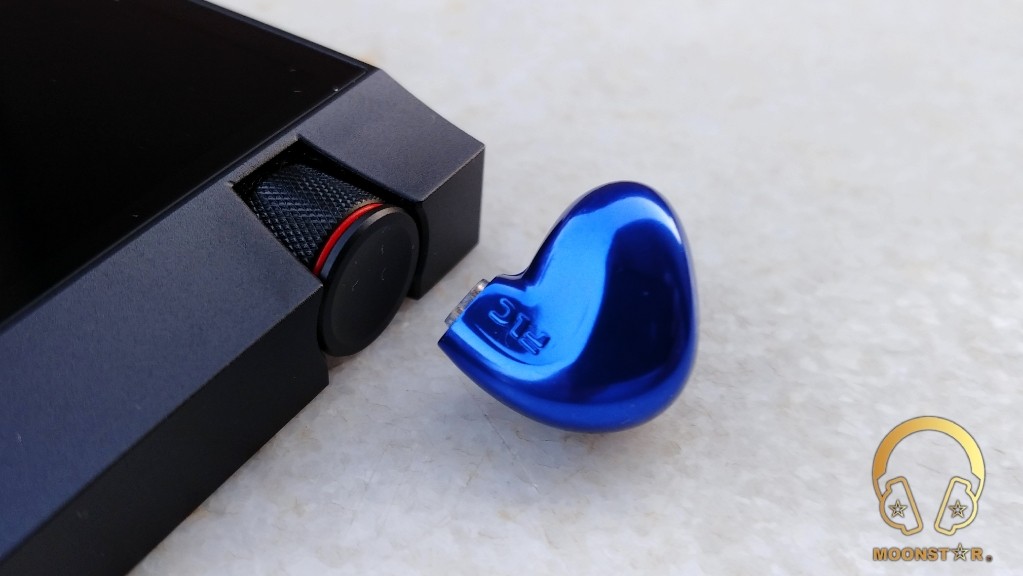
Disclaimer:
The FLC 8D IEM was provided to me by FLC Technology via Lend Me UR Ears as a review sample. I am not affiliated with FLC Technology or Lend Me UR Ears and any third person beyond this review and all these words reflect my true, unaltered, opinions about the product.
About Me: https://moonstarreviews.net
The Price:
The FLC 8D can be found under the following purchase link;
Purchase link: http://www.lendmeurears.com/flc8n/
Package and Accessories:
The FLC 8D came in a light brown cardboard box, which sports silver printed FLC Logo. This box has a magnetized cover and a folding system, which is separated in to partitions. At the first partitions you can find the FLC 8D monitors buried in to a yellow foam mold. At the second partitions you can find the following accessories;


The metal case that is included to the box looks pretty stylish and has a velvet inner coating, which should protect the FLC 8D from possible impacts and scratches.


There is also a metal capsule in blue color with a screw system and a key ring, where you can find 4 pairs of sound tuning filters that are the Gold, Gunmetal, Green and the Blue one. Those sound tuning filters are screwable. Those filters are the highlight of this In-Ear Monitor.


The box is also including a Shirt Clips, Tweezer, 1/4" to 3.5mm Adapter and Earwax cleaning tool, which are a nice additional.

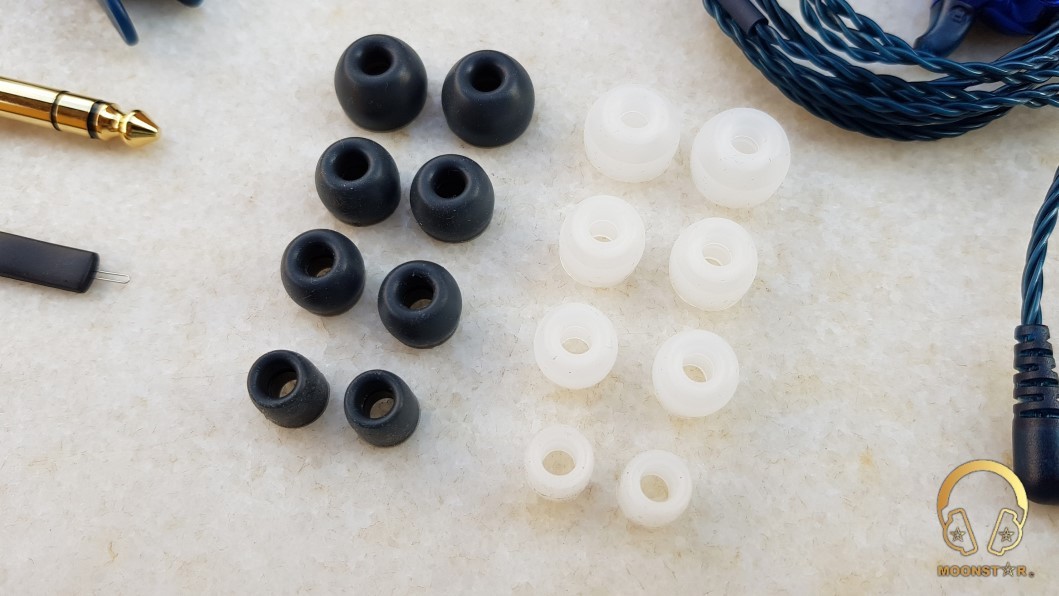
Design, Fit and Build Quality:
The housing of the FLC 8D is made of CNC machined metal which looks and feels very durable in my hands. The shell has a dark blue housing with a metallic/reflective appearance, which looks pretty nice.

On front the monitor shell is a small FLC Logo.

On the rear are the sound nozzle where you can screw in 4 different types of sound filters for midrange & treble tuning and 3 mini holes which are serving for bass ventilation.


On the Top is the 0,78mm female plug, where you can attach your upgrade cable with 2pin male connectors.

When it comes to aspects like fit and comfort, I can confirm that the FLC 8D is giving a pretty comfortable wearing experience and can be worn for many hours without to hurt your ears. The only negative in terms of comfort is the cable which is a bit uncomfortable to wear over the ear.

The isolation of the FLC 8D is on an average level that is enough to use it in environments such like bus, metro or train.
The Cable:
According to FLC Technology Specs; the FLC 8D comes with a 4 core braided 7N crystal copper wire with a purity of 99.99998%. This cable was produced by a self-designed special weaving machine, which is providing no welding in the cable, to ensure that the signal is lossless during the transmission process.
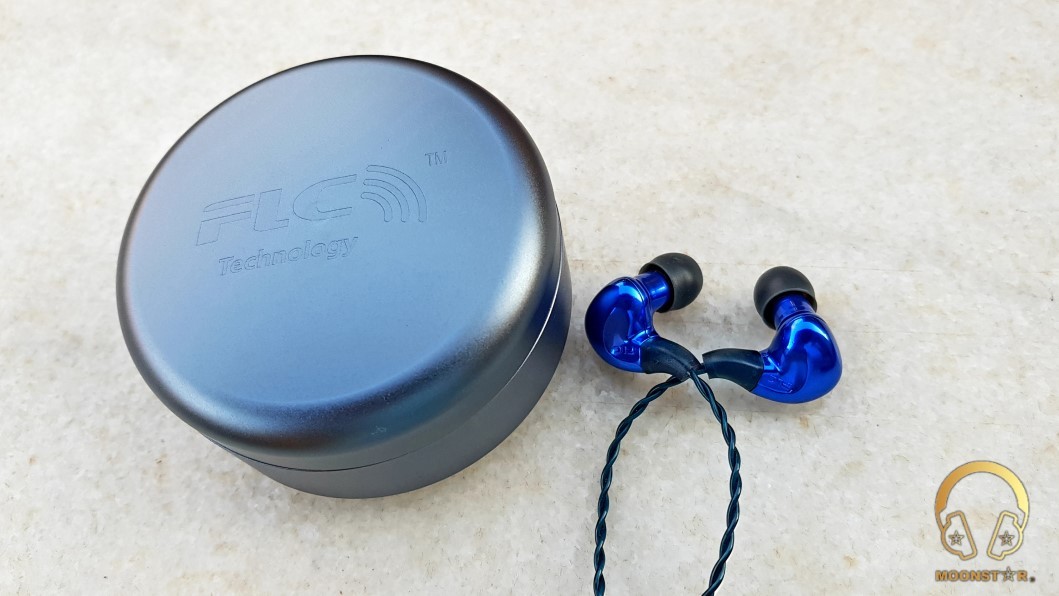
The Cable has a nice blue colored plastic coating with relative low microphonic effects.

This cable has 0.78mm male connectors and a right angled 2.5mm Balanced or 3.5mm Single Ended Headphone Jack depending of your purchase.
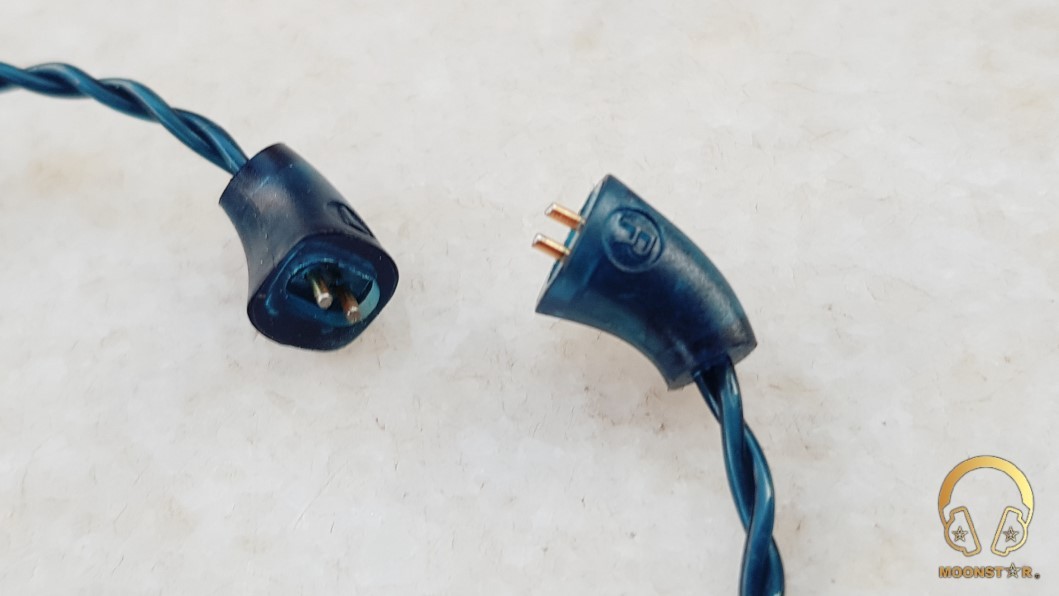
The cable sports a chin slider and a y splitter that are made of plastic.

Technical Specifications:
Drivability/Sensitivity:
The FLC Technology FLC 8D is a pretty efficient IEM with fairly low impedance of 11 ohm’s which makes it to an ideal In-Ear Monitor for the use with portable sources such like smartphones, tablet’s, etc.. It can be driven easily to high volumes without to need an external amplifier.

Sources:
a) In Ear Monitor : FLC Technology FLC 8D, FiiO FH5
b) DAP/DAC : QLS QA361, Cayin N5II, FiiO M7, Astell&Kern A6norma SR15, Astell &Kern AK70, HiFiMAN Supermini

Albums & Tracks used for this review:

The Sound:
The FLC 8D is a very musical and genre friendly In-Ear Monitor with a slightly warmish tonality. The bass is fast and gives a nice weight to the overall presentation. The midrange shows a hint of warmness and is slightly laid back in its presentation, while the treble, especially the upper treble range are vivid and airy in its presentation.
As I have mentioned before, the FLC 8D have 4 pairs of sound tuning filter with which you are able to change the sound character especially the midrange and the treble.
The Sound Tuning Filters:
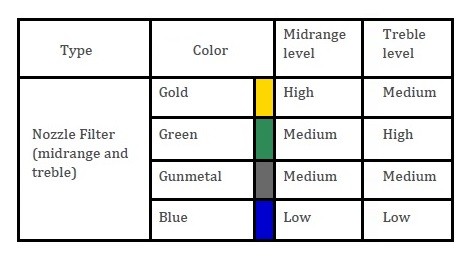
The Bass:
The FLC 8D has no bass tuning plugs like the FLC 8S and the FLC 8N that means that the bass character remains pretty identical, even if you change the filter that is showing only small changes in the midbass area.
The general bass character of the FLC 8D can be described as powerful but clean with focus to the subbass region. The speed in this range is above average and is showing good control and doesn’t overshadowing the rest of the sound spectrum. The subbass of the FLC 8D goes pretty deep and is showing good extension.
The bass of the FLC 8D is pretty detailed and is showing a pretty good refinement which is rarely found in this price category. The bass is tight and the quantity will satisfy most listeners with exception of those that describe itself as a bass-head.
The midbass of the FLC 8D has less weight in the lower frequency region than the subbass (20 – 50 Hz) and the bass (60-250 Hz), but is showing an pretty clear character and gives the overall sound a full bodied presentation.
Instruments such as bass guitars, contrabass, etc are shown by the FLC 8D with a fairly natural presentation.
The bass presentation of the FLC 8D is also pretty clean and smooth without to overwhelm you even after long listening periods.

The Midrange:
The FLC 8D has a slightly laid back midrange presentation with a slightly warmer than neutral (warmish) tonality. As I mentioned before, there are 4 (four) sound tuning filter that are able to change the midrange and treble presentation.
a) Midrange - Gold Filter:
The Gold filter is my personal favorite because of the additional emotion of the vocals compared to the other 3 filters. This filter is the ideal choice for those who prefer an intimate vocal presentation.
The Gold filter are showing a transparent, full bodied and detailed midrange performance, where vocals are positioned slightly behind of the instruments. The gold filter performs also pretty well in terms of vocal and instrument separation, without to show any remarkable mixings and unwanted sibilance issues. Both male and female vocals are fairly detail, while male vocals have good depth and female voices showing a soft and full bodied presentation.
The Gold filter is superior to all other filter (Gunmetal, Green, and Blue) in terms of detail, airiness and for vocal/instrument performance.
b) Midrange - Gunmetal Filter:
The Gunmetal filter has a more fairly balanced midrange presentation where the mids are slightly more recessed than with the Gold filter. When it comes to the vocals, both male and female voices are sharing a pretty equal sound performance.
The gold filter sounds warmer and more intimate than the Gunmetal filter, which can be described as fairly more balanced in its sound characteristic.
The detail level of the Gunmetal filter is slightly inferior in performance, compare to the Gold filter, but is superior to the Green and Blue filters.
c) Midrange - Green Filter:
The Green filter shows the brightest midrange tonality of this filter collection due to the stronger upper midrange and treble emphasis. This sound character makes the overall presentation of the midrange noticeable airier and spacious than the Gold and Gunmetal filter, but more prone to sibilance and harshness.
Both male and female vocals sounding thinner and brighten than with those of the Gold and Gunmetal filter.
The Green filter sounds less natural and emotional compared to the Gold and Gun metal filter, but is superior in terms of airiness and clearness.
d) Midrange - Blue Filter:
The Blue filter has the most recessed/laid back midrange presentation of all sound tuning filters. The midrange is not as airy and bright like the green filter and it's missing some detail and clearness you can find with the other three filters. The overall midrange presentation is slightly veiled and is missing the lush timber you can find with the Gold filter.
The Blue filter is the most forgiving and relaxed sounding filter in the collection that is ideal for those who are sensitive to brightness and are looking for a fatigue free listening experience. This filter is also the perfect choice for bad mastered tracks such like Metallica’s – Sad but True.
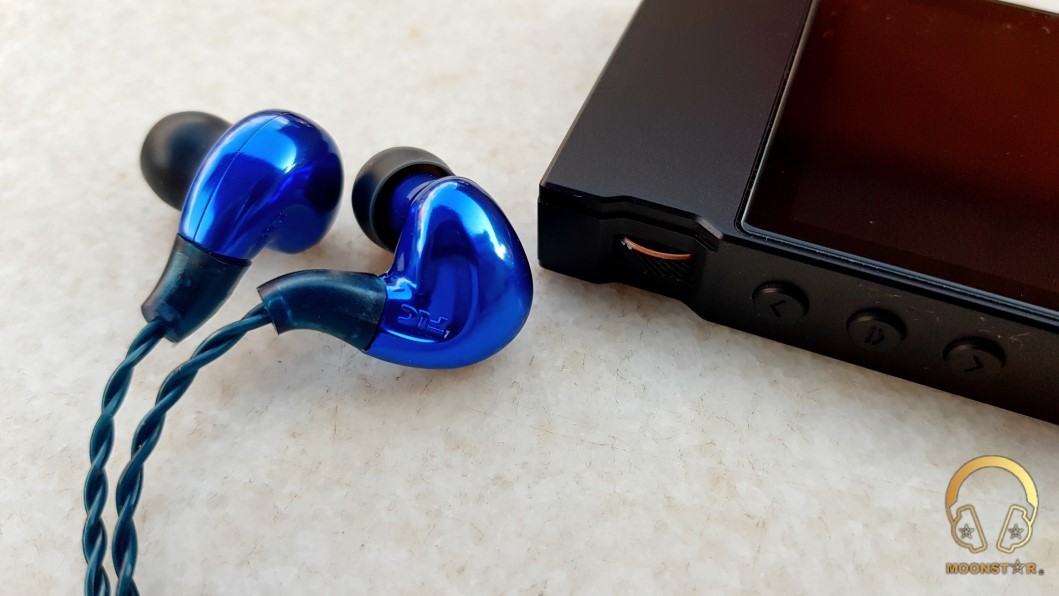
The Treble:
The FLC 8D has a noticeable roll-off in the lower treble range, while the upper treble (brilliance) is boosted with a peak around 7kHz. The general treble presentation is bright, airy with a nice amount of sparkle and pretty good extension.
The Filters, which are coming with the FLC8D, are showing a quite noticeable difference in performance and character. The Green one is the filter with the highest treble quantity, while the blue one has the lowest treble response. The Gold and Gunmetal filters on the other hand are pretty balanced in terms of treble response.
The Gold and Gunmetal filters have a fairly balanced treble presentation compared to the Green and Blue filters. Both of these filters are showing the right amount of sparkle and air, which is needed for an IEM to be classified as Hi-Fi. The best thing about the Gold and Gunmetal filters is the very low sibilance and harshness, while I have listen to Megadeth’s - Sweating Bullets or Metallica’s - Sad But True.
The Gunmetal filter sounds slightly more detailed and emphasized than the Gold filter, while the treble quantity and extension of the Gunmetal are superior to the Blue, but inferior to the Green filters.
The Blue filter on the other hand, has the lowest treble quantity of all four filters. The Blue filter has a lower treble quantity and less extension compared to all other filters, but is ideal for those who have treble sensitivity and are looking for a treble tuning, which is ideal for long listening periods.
The green filter has the airiest, most spacious and detailed sounding treble presentation, which makes it to a ideal choice for genres such like classical music, while it doesn’t suite for modern genres such like pop or rock due the relative bright nature and thin presentation, which is a bit prone to harshness. The Green filter has the best treble extension, while treble tonality is slightly unnatural, metallic and cold compared to the Gold and Gunmetal filter.

Soundstage:
The soundstage of the FLC 8D is showing an above average performance in terms of wideness and depth of the stage, which is ideal for a quite precise placement and separation of instruments, even in complex passages. The soundstage is wider than its depth and is showing a pretty spacious and airy presentation.
FLC 8D versus FiiO FH5
Both the FiiO FH5 and the FLC 8D are In-Ear Monitors with Hybrid Driver (BA + DD) configuration.
The FiiO FH5 has a W-shaped sound signature in which the subbass, the female vocals and the upper middle range are pronounced and the male vocals and the midbass are slightly recessed in its presentation. The FLC 8D, on the other hand, has a sound tuning option (filter), allowing us to change the sound from neutral, to warmer, and more full-bodied presentations.
The FiiO FH5 features a subbass with good depth and a moderate-intensity bass, while the FLC 8D can produce a higher subbass depth and a slightly stronger bass.
The midbass presentation of the FLC 8D is quite powerful and punchy, while it is superior to the FiiO FH5 in terms of speed and control.
We can play with the midrange of the FLC 8D with its sound tuning filters. The FiiO FH5, on the other hand, has a midrange that is slightly set back, with the exception of the female vocals, which are more in the foreground due to the higher center emphasis.
The midrange of the FiiO FH5 is warmer than that of the FLC 8D, which has slightly less warmth and additional transparency. The male vocals of the FLC 8D are deeper and more detailed than the FiiO FH5. The FH5 is more successful with female vocals when you use the FLC 8D with the blue and green filters, but is superior to the FH5 when the Golden Filter comes is n use.
Both IEMs have a fairly controlled and fatigue-free appearance of the upper midrange with good transition. In this frequency range, the FLC 8D has the upper hand with its slightly higher transparency, airiness and resolution.
The treble presentation of the FLC 8D and the FiiO FH5 is energetic, lifelike and has a good extension. The lower treble range of the FiiO FH5 is more pronounced, while the upper treble (presence) of the FLC 8D is more pronounced and also more detailed than those of the FH5. The FLC 8D is superior to the FH5 in terms of treble expansion, while the FiiO FH5 is more successful in terms of control.
The soundstage of both In-Ear Monitors is suitable for a very accurate separation and placement of instruments. The main difference is, that the FLC 8D has the wider stage, while the FiiO FH5 has a bit more depth. I can also confirm that the soundstages of both IEMs are pretty airy and spacious in their presentation.
Conclusion:
The FLC 8D is a very capable In-Ear Monitor that shares a good level of detail and that a solid build quality. It will be a true nightmare for other In-Ear makers who are selling the same sound for double the price. The genre friendly sound characteristic of the FLC 8D and the capability to chance the sound signature based on your preference makes this IEM to a bang for the buck.
Pros and Cons:
The True Friend of all Music Genres!
About FLC Technology:
FLC Technology Co. Ltd. is based in China and is committed to developing and producing high-end in-ear monitors (IEM) and custom in-ear monitors (CIEM). In 2011, FLC were one of the first companies in China to launch a hybrid CIEM.
The FLC 8 was there first hybrid IEM, featuring the ability to customize 36 different sound signatures to your liking; the FLC Technology FLC 8 came many nozzle filters and plugs.
Now I want review the FLC 8D, which is one of their latest product together with the FLC 8N and FLC Celeste.

Disclaimer:
The FLC 8D IEM was provided to me by FLC Technology via Lend Me UR Ears as a review sample. I am not affiliated with FLC Technology or Lend Me UR Ears and any third person beyond this review and all these words reflect my true, unaltered, opinions about the product.
About Me: https://moonstarreviews.net
The Price:
The FLC 8D can be found under the following purchase link;
Purchase link: http://www.lendmeurears.com/flc8n/
Package and Accessories:
The FLC 8D came in a light brown cardboard box, which sports silver printed FLC Logo. This box has a magnetized cover and a folding system, which is separated in to partitions. At the first partitions you can find the FLC 8D monitors buried in to a yellow foam mold. At the second partitions you can find the following accessories;


- 1 pair x FLC 8D In-Ear Monitor
- 1 pcs x 2.5mm Balanced or 3.5mm Single Ended 2 Pin Cable (depends on your order)
- 8 pairs x Silicone Eartips (Each two pairs of L/M/S/Ultra-S size)
- 4 pairs x Sound Tuning Filters (Gold, Gunmetal, Green and Blue filters)
- 1 pcs x Tuning accessories box
- 1 pcs x Tweezer
- 1 pcs x Earwax cleaning tool
- 1 pcs x 1/4" to 3.5mm Adapter
- 1 pcs x Airplane earphone adapter
- 1 pcs x Shirt Clips
- 1 pcs x Metal Hard Case
The metal case that is included to the box looks pretty stylish and has a velvet inner coating, which should protect the FLC 8D from possible impacts and scratches.


There is also a metal capsule in blue color with a screw system and a key ring, where you can find 4 pairs of sound tuning filters that are the Gold, Gunmetal, Green and the Blue one. Those sound tuning filters are screwable. Those filters are the highlight of this In-Ear Monitor.


The box is also including a Shirt Clips, Tweezer, 1/4" to 3.5mm Adapter and Earwax cleaning tool, which are a nice additional.


Design, Fit and Build Quality:
The housing of the FLC 8D is made of CNC machined metal which looks and feels very durable in my hands. The shell has a dark blue housing with a metallic/reflective appearance, which looks pretty nice.

On front the monitor shell is a small FLC Logo.

On the rear are the sound nozzle where you can screw in 4 different types of sound filters for midrange & treble tuning and 3 mini holes which are serving for bass ventilation.


On the Top is the 0,78mm female plug, where you can attach your upgrade cable with 2pin male connectors.

When it comes to aspects like fit and comfort, I can confirm that the FLC 8D is giving a pretty comfortable wearing experience and can be worn for many hours without to hurt your ears. The only negative in terms of comfort is the cable which is a bit uncomfortable to wear over the ear.

The isolation of the FLC 8D is on an average level that is enough to use it in environments such like bus, metro or train.
The Cable:
According to FLC Technology Specs; the FLC 8D comes with a 4 core braided 7N crystal copper wire with a purity of 99.99998%. This cable was produced by a self-designed special weaving machine, which is providing no welding in the cable, to ensure that the signal is lossless during the transmission process.

The Cable has a nice blue colored plastic coating with relative low microphonic effects.

This cable has 0.78mm male connectors and a right angled 2.5mm Balanced or 3.5mm Single Ended Headphone Jack depending of your purchase.

The cable sports a chin slider and a y splitter that are made of plastic.

Technical Specifications:
- Driver : Hybrid Driver 1 x 8.6mm Dynamic Driver + 2 x Balanced Armature
- Sensitivity : 107dB / mW, 1000Hz
- Frequency Response : 20-20KHz
- Impedance : 11 Ohm
- Connector : 0.78mm
- Cable Length : 1.2 Meters
- Plug : 2.5mm Balanced or 3.5mm Single Ended Plug with Gold Plating
Drivability/Sensitivity:
The FLC Technology FLC 8D is a pretty efficient IEM with fairly low impedance of 11 ohm’s which makes it to an ideal In-Ear Monitor for the use with portable sources such like smartphones, tablet’s, etc.. It can be driven easily to high volumes without to need an external amplifier.

Sources:
a) In Ear Monitor : FLC Technology FLC 8D, FiiO FH5
b) DAP/DAC : QLS QA361, Cayin N5II, FiiO M7, Astell&Kern A6norma SR15, Astell &Kern AK70, HiFiMAN Supermini

Albums & Tracks used for this review:
- B.B.King – The Trill is Gone (Tidal Hi-Fi)
- Dave Gahan – Kingdom (Tidal Hi-Fi)
- Leonard Cohen – You Wnt it Darker (Spotify)
- Eric Clapton – Wonderful Tonight True (Flac 24bit/96kHz)
- Metallica – Sad but True (Flac 24bit/96kHz)
- Megadeth - Sweating Bullets (Tidal Hi-Fi)
- Opeth – Damnation (Tidal Hi-Fi)
- Liquid Tension Experiment 2 – Acid Rain (Spotify)
- London Grammar – Interlud (Live) (Flac 24bit/44kHz)
- Laura Pergolizzi – Lost On You “Live at Harvard and Stone” (Tidal Hi-Fi)
- First Aid Kit - My Silver Lining (Spotify)
- Minor Empire – BulbulumAltinKafeste (Spotify)
- Vivaldi – Le QuarttroStagioni “The Four Season” (Tidal Hi-Fi)
- Alboran Trio’s – Cinque Lunghissimi Minuti (Tidal Hi-Fi)
- Otto Liebert & Luna Negra – Up Close “Album” (DSF) – Binaural Recording
- Lorde – Team (Flac 24bit/48kHz)
- Massive Attack – Angel (Tidal Hi-Fi)
- Portishead – It Could Be Sweet (Spotify)

The Sound:
The FLC 8D is a very musical and genre friendly In-Ear Monitor with a slightly warmish tonality. The bass is fast and gives a nice weight to the overall presentation. The midrange shows a hint of warmness and is slightly laid back in its presentation, while the treble, especially the upper treble range are vivid and airy in its presentation.
As I have mentioned before, the FLC 8D have 4 pairs of sound tuning filter with which you are able to change the sound character especially the midrange and the treble.
The Sound Tuning Filters:
- Gold Filter : Most mid-frequency and medium high frequency
- Blue Filter : Less mid-frequency and less high frequency
- Green Filter : Medium mid-frequency and most high frequency
- Gunmetal Filter : Medium mid-frequency and medium high frequency

The Bass:
The FLC 8D has no bass tuning plugs like the FLC 8S and the FLC 8N that means that the bass character remains pretty identical, even if you change the filter that is showing only small changes in the midbass area.
The general bass character of the FLC 8D can be described as powerful but clean with focus to the subbass region. The speed in this range is above average and is showing good control and doesn’t overshadowing the rest of the sound spectrum. The subbass of the FLC 8D goes pretty deep and is showing good extension.
The bass of the FLC 8D is pretty detailed and is showing a pretty good refinement which is rarely found in this price category. The bass is tight and the quantity will satisfy most listeners with exception of those that describe itself as a bass-head.
The midbass of the FLC 8D has less weight in the lower frequency region than the subbass (20 – 50 Hz) and the bass (60-250 Hz), but is showing an pretty clear character and gives the overall sound a full bodied presentation.
Instruments such as bass guitars, contrabass, etc are shown by the FLC 8D with a fairly natural presentation.
The bass presentation of the FLC 8D is also pretty clean and smooth without to overwhelm you even after long listening periods.

The Midrange:
The FLC 8D has a slightly laid back midrange presentation with a slightly warmer than neutral (warmish) tonality. As I mentioned before, there are 4 (four) sound tuning filter that are able to change the midrange and treble presentation.
a) Midrange - Gold Filter:
The Gold filter is my personal favorite because of the additional emotion of the vocals compared to the other 3 filters. This filter is the ideal choice for those who prefer an intimate vocal presentation.
The Gold filter are showing a transparent, full bodied and detailed midrange performance, where vocals are positioned slightly behind of the instruments. The gold filter performs also pretty well in terms of vocal and instrument separation, without to show any remarkable mixings and unwanted sibilance issues. Both male and female vocals are fairly detail, while male vocals have good depth and female voices showing a soft and full bodied presentation.
The Gold filter is superior to all other filter (Gunmetal, Green, and Blue) in terms of detail, airiness and for vocal/instrument performance.
b) Midrange - Gunmetal Filter:
The Gunmetal filter has a more fairly balanced midrange presentation where the mids are slightly more recessed than with the Gold filter. When it comes to the vocals, both male and female voices are sharing a pretty equal sound performance.
The gold filter sounds warmer and more intimate than the Gunmetal filter, which can be described as fairly more balanced in its sound characteristic.
The detail level of the Gunmetal filter is slightly inferior in performance, compare to the Gold filter, but is superior to the Green and Blue filters.
c) Midrange - Green Filter:
The Green filter shows the brightest midrange tonality of this filter collection due to the stronger upper midrange and treble emphasis. This sound character makes the overall presentation of the midrange noticeable airier and spacious than the Gold and Gunmetal filter, but more prone to sibilance and harshness.
Both male and female vocals sounding thinner and brighten than with those of the Gold and Gunmetal filter.
The Green filter sounds less natural and emotional compared to the Gold and Gun metal filter, but is superior in terms of airiness and clearness.
d) Midrange - Blue Filter:
The Blue filter has the most recessed/laid back midrange presentation of all sound tuning filters. The midrange is not as airy and bright like the green filter and it's missing some detail and clearness you can find with the other three filters. The overall midrange presentation is slightly veiled and is missing the lush timber you can find with the Gold filter.
The Blue filter is the most forgiving and relaxed sounding filter in the collection that is ideal for those who are sensitive to brightness and are looking for a fatigue free listening experience. This filter is also the perfect choice for bad mastered tracks such like Metallica’s – Sad but True.

The Treble:
The FLC 8D has a noticeable roll-off in the lower treble range, while the upper treble (brilliance) is boosted with a peak around 7kHz. The general treble presentation is bright, airy with a nice amount of sparkle and pretty good extension.
The Filters, which are coming with the FLC8D, are showing a quite noticeable difference in performance and character. The Green one is the filter with the highest treble quantity, while the blue one has the lowest treble response. The Gold and Gunmetal filters on the other hand are pretty balanced in terms of treble response.
The Gold and Gunmetal filters have a fairly balanced treble presentation compared to the Green and Blue filters. Both of these filters are showing the right amount of sparkle and air, which is needed for an IEM to be classified as Hi-Fi. The best thing about the Gold and Gunmetal filters is the very low sibilance and harshness, while I have listen to Megadeth’s - Sweating Bullets or Metallica’s - Sad But True.
The Gunmetal filter sounds slightly more detailed and emphasized than the Gold filter, while the treble quantity and extension of the Gunmetal are superior to the Blue, but inferior to the Green filters.
The Blue filter on the other hand, has the lowest treble quantity of all four filters. The Blue filter has a lower treble quantity and less extension compared to all other filters, but is ideal for those who have treble sensitivity and are looking for a treble tuning, which is ideal for long listening periods.
The green filter has the airiest, most spacious and detailed sounding treble presentation, which makes it to a ideal choice for genres such like classical music, while it doesn’t suite for modern genres such like pop or rock due the relative bright nature and thin presentation, which is a bit prone to harshness. The Green filter has the best treble extension, while treble tonality is slightly unnatural, metallic and cold compared to the Gold and Gunmetal filter.

Soundstage:
The soundstage of the FLC 8D is showing an above average performance in terms of wideness and depth of the stage, which is ideal for a quite precise placement and separation of instruments, even in complex passages. The soundstage is wider than its depth and is showing a pretty spacious and airy presentation.
FLC 8D versus FiiO FH5
Both the FiiO FH5 and the FLC 8D are In-Ear Monitors with Hybrid Driver (BA + DD) configuration.
The FiiO FH5 has a W-shaped sound signature in which the subbass, the female vocals and the upper middle range are pronounced and the male vocals and the midbass are slightly recessed in its presentation. The FLC 8D, on the other hand, has a sound tuning option (filter), allowing us to change the sound from neutral, to warmer, and more full-bodied presentations.
The FiiO FH5 features a subbass with good depth and a moderate-intensity bass, while the FLC 8D can produce a higher subbass depth and a slightly stronger bass.
The midbass presentation of the FLC 8D is quite powerful and punchy, while it is superior to the FiiO FH5 in terms of speed and control.
We can play with the midrange of the FLC 8D with its sound tuning filters. The FiiO FH5, on the other hand, has a midrange that is slightly set back, with the exception of the female vocals, which are more in the foreground due to the higher center emphasis.
The midrange of the FiiO FH5 is warmer than that of the FLC 8D, which has slightly less warmth and additional transparency. The male vocals of the FLC 8D are deeper and more detailed than the FiiO FH5. The FH5 is more successful with female vocals when you use the FLC 8D with the blue and green filters, but is superior to the FH5 when the Golden Filter comes is n use.
Both IEMs have a fairly controlled and fatigue-free appearance of the upper midrange with good transition. In this frequency range, the FLC 8D has the upper hand with its slightly higher transparency, airiness and resolution.
The treble presentation of the FLC 8D and the FiiO FH5 is energetic, lifelike and has a good extension. The lower treble range of the FiiO FH5 is more pronounced, while the upper treble (presence) of the FLC 8D is more pronounced and also more detailed than those of the FH5. The FLC 8D is superior to the FH5 in terms of treble expansion, while the FiiO FH5 is more successful in terms of control.
The soundstage of both In-Ear Monitors is suitable for a very accurate separation and placement of instruments. The main difference is, that the FLC 8D has the wider stage, while the FiiO FH5 has a bit more depth. I can also confirm that the soundstages of both IEMs are pretty airy and spacious in their presentation.
Conclusion:
The FLC 8D is a very capable In-Ear Monitor that shares a good level of detail and that a solid build quality. It will be a true nightmare for other In-Ear makers who are selling the same sound for double the price. The genre friendly sound characteristic of the FLC 8D and the capability to chance the sound signature based on your preference makes this IEM to a bang for the buck.
Pros and Cons:
- + Genre friendly sound tuning
- + Very emotional and nicely detailed midrange (Gold Filter)
- + Clarity
- + Deep subbass and full-bodied presentation
- + Sound Tuning Filters
- + Nice accessories package
- - The over the ear design of the cable is a bit uncomfortable
- - Soundstage could be slightly deeper
Moonstar
100+ Head-Fier
Pros: Great Sound (especially the midrange area),
Good detail retrieval,
Low to none hissing,
Lots of OTG Cables (inclusive Apple lighting),
Plug and Play capability for Android and IOS
Good detail retrieval,
Low to none hissing,
Lots of OTG Cables (inclusive Apple lighting),
Plug and Play capability for Android and IOS
Cons: No battery means additional battery drain for the source
The Audirect Beam Review
About Audirect:
Audirect is part of Shenzen Micronetwork Technology Co., Ltd. located in Shenzen – China and is engaged since more than 6 years in the development, production and sales of portable DAC’s and the Audirect Beam is the latest DAC / AMP of the company.
Audirect Webpage: Audirect.cc
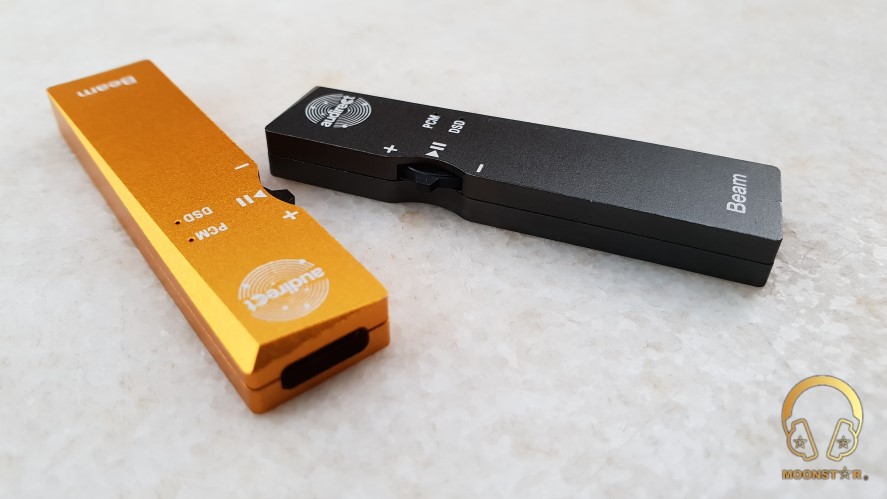
Disclaimer:
I would like to thank Audirect for providing me a sample of the Audirect Beam DAC/AMPfor review purposes. I am not affiliated with Audirect beyond this review and these words reflect my true, unaltered opinions about the product.
PS: This review was originally posted on my Review Blog, which I want now to share with the Head-Fi community:
Original Post: http://moonstarreviews.net/audirect-beam-review/
Price:
The MSRP Price for the Audirect Beam portable DAC/AMP is $99,00 USD
Purchase Link: Audirect Beam & Accessories
Introduction:
The Audirect Beam DAC& is a small very small sized Hi-Fi DAC and Headphone Amplifier created for people who are not satisfied with sound of their Phone, Table and onboard soundcard of their PC or Laptop.
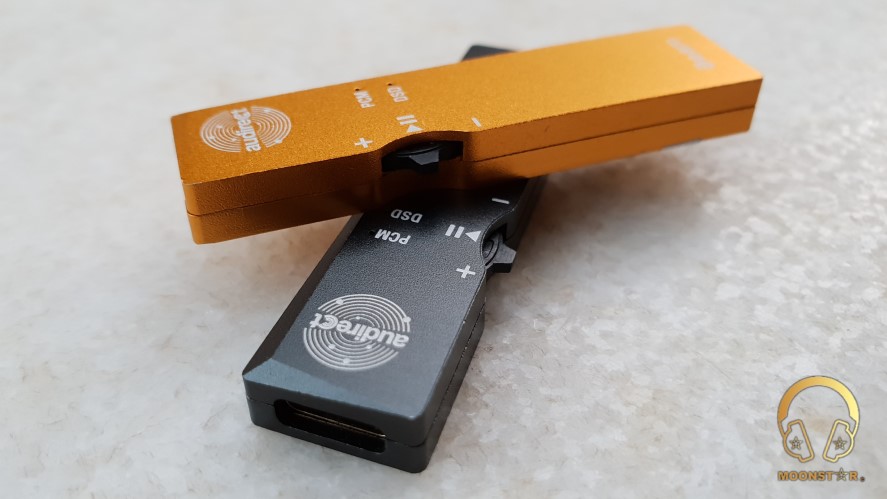
Package and Accessories:
The device comes in a relative thin and small white card-box that sports the brand and model (Beam) name. There is also a small window where you can see the Beam without to open the box. This box is including the following items;
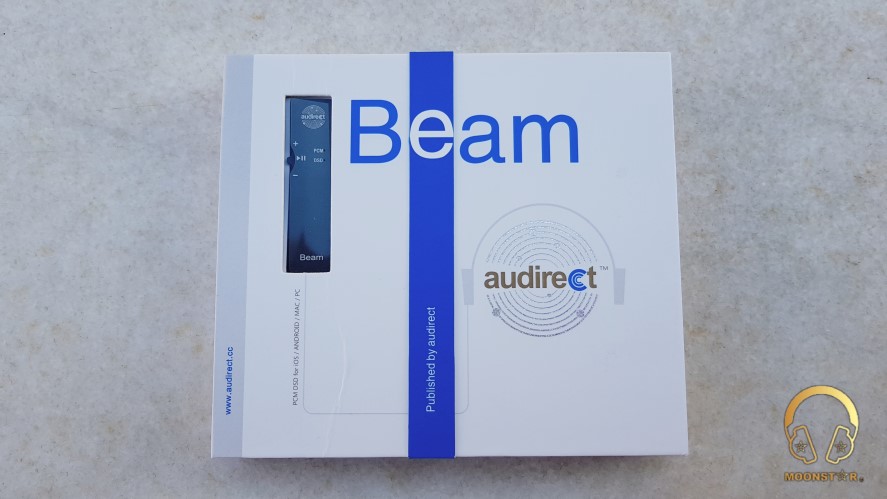
Audirect Beam has put some nice accessories in to the package with almost 3 different UBC Type-C OTG cables. Especially the Apple Lightning to USB Type-C OTG cable is a hard to find and a very nice addition in my opinion.
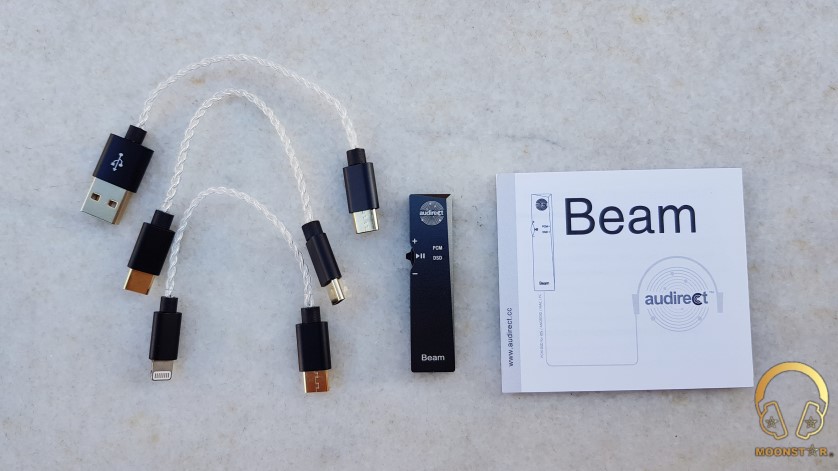
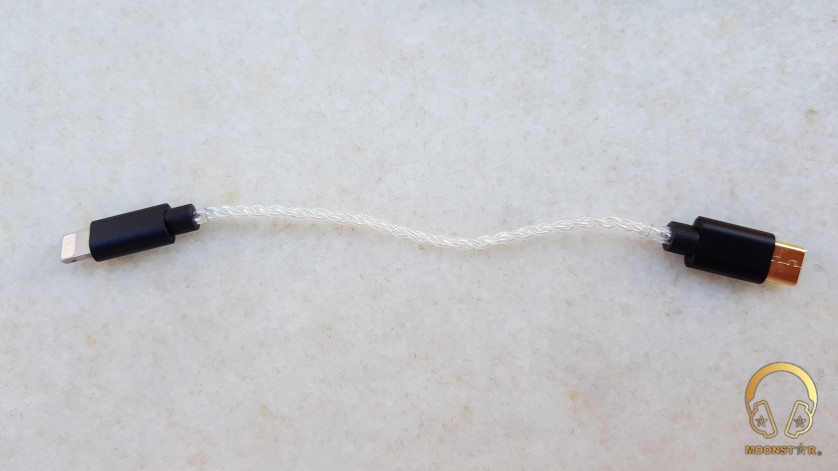
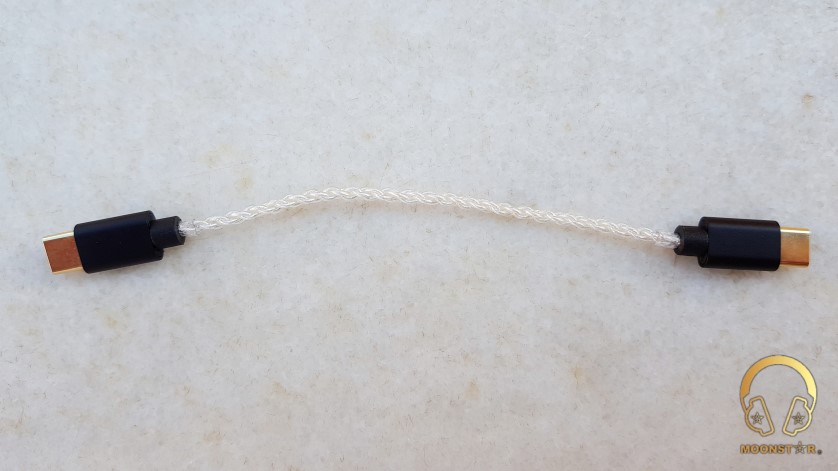
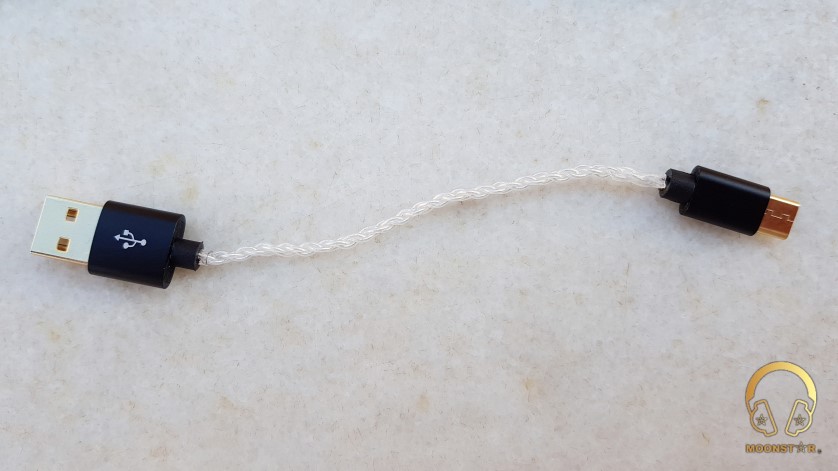
Design and Build Quality:
The Audirect Beam is a very small and lightweight device with a well made/solid metal housing, which has a dimension of 52x14x6mm and a net weight of 12g (according to Audirect specs).

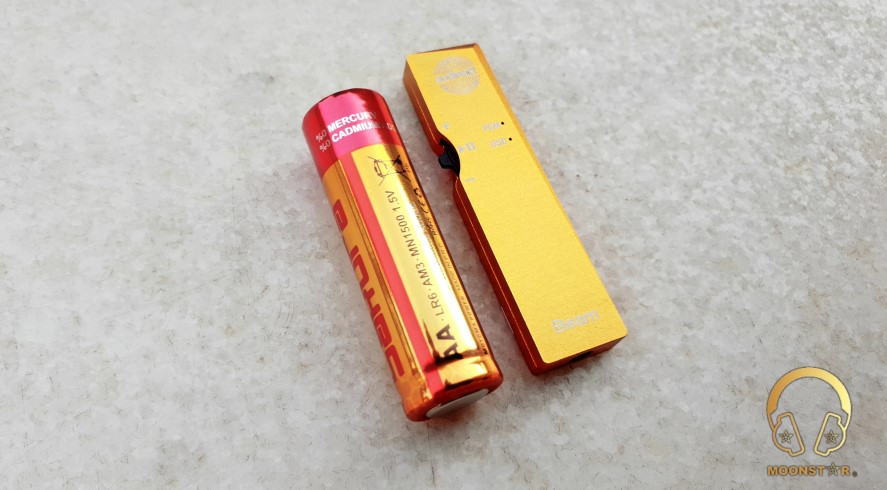
At the top is the USB-Type C female data connection.

At the bottom of the device is the 3.5mm headphone jack (unbalanced).
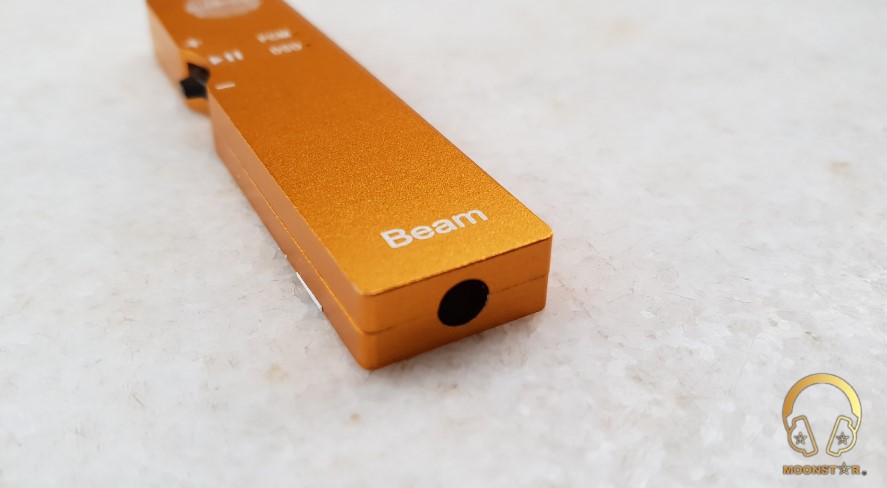
On the front of the DAC is the Audirect and the Beam logo. There are also two (2) led indicators, one for PCM and one for DSD conversation.
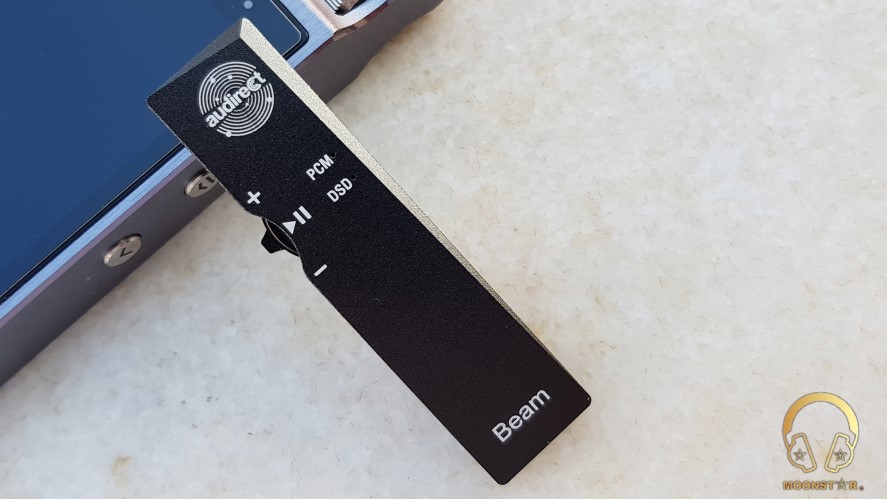
On the back of the device are four (4) screws and information like certificates/serial number.
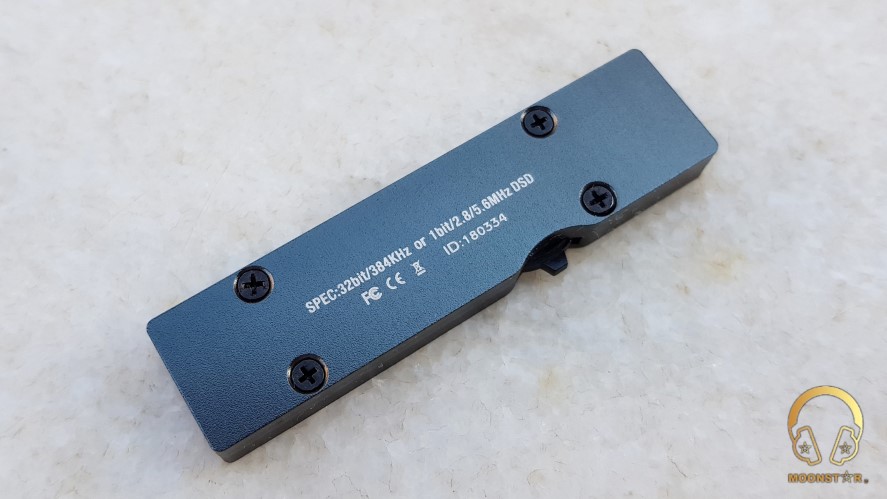
At the right side of the Beam is an action key dedicated for volume up, down and play/pause functions.
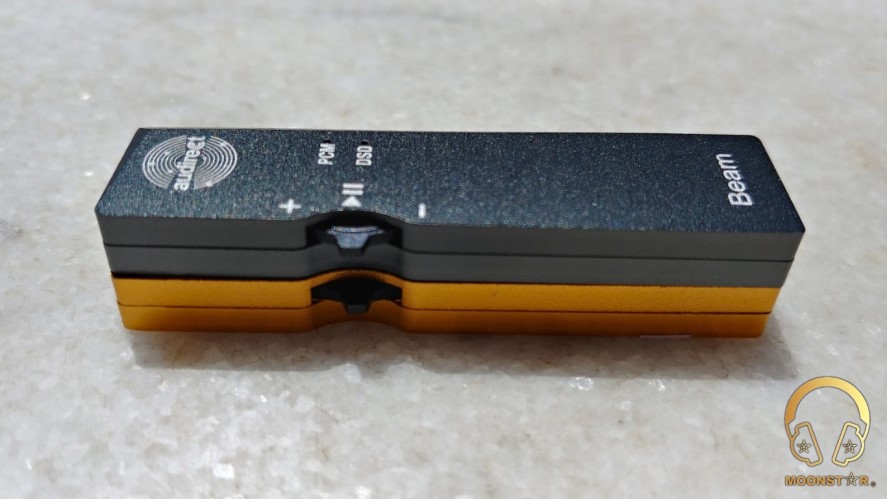
They are two color options, which are gold and grey, but my personal favorite is the one in grey color, which looks pretty nice.
Technical Specifications:
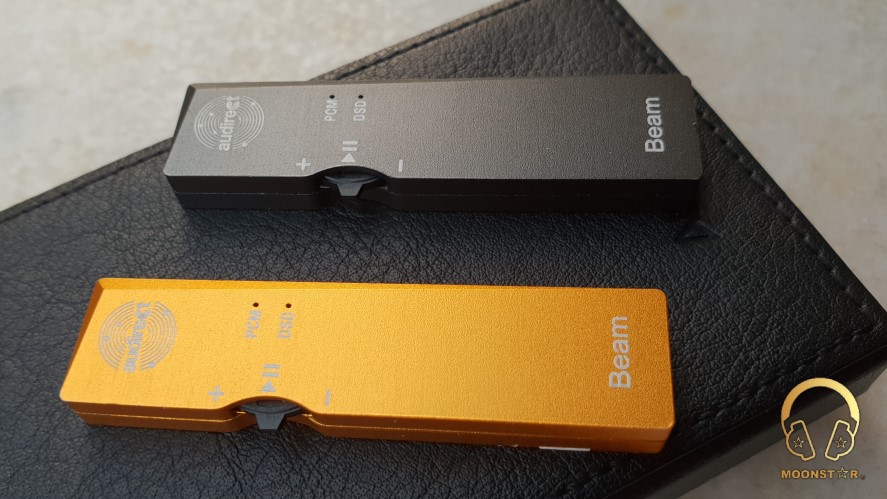
Hardware & Software:
The Audirect Beam DAC & AMP is a pretty small device with some nice hardware specs.
DAC & AMP Section:
The Audirect Beam DAC/AMP sports the ES9018 SABRE HiFi SoC (System on a Chip), which is made by the company ESS Technology Inc. This HiFi type System-On-Chip (SoC) integrates the Digital to Analog Converter (DAC) and the headphone amplifier with an output switch.
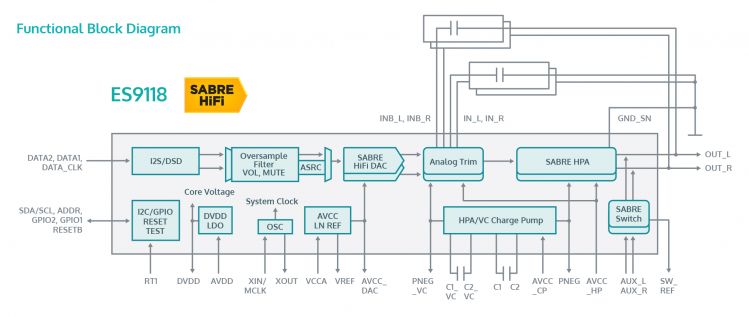
The ES9118 HiFi SoC is supporting the ESS patented 32-bit HyperStream architecture to deliver up to 125 dB SNR and -112 dB Total Harmonic Distortion plus Noise (THD+N). It also supports some of the popular high resolution and lossless audio formats including FLAC, ALAC, AIFF and WAV.
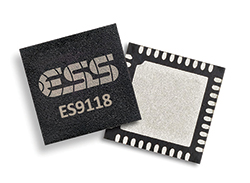
Supported Audio Formats:
Drivability:
The onboard amplifier, which is integrated to the ES9018 SoC is has a output rated of 49mW into 32Ω and 2Vrms into 600Ω. It was capable to driver my Sony SA3000 and Audio-Technica ATH-M50 to very loud volume levels.
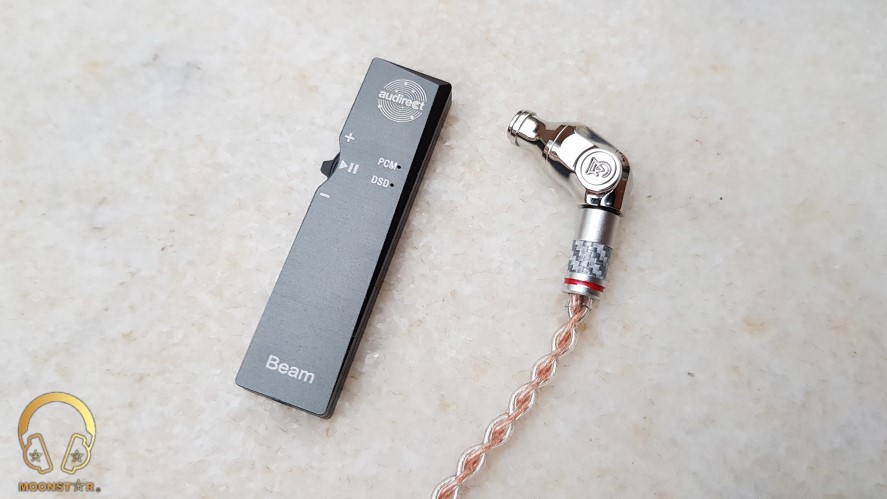
Battery Draining:
The Audirect Beam shows less battery drain than my old Fiio E10K, the first generation of Audioquest Dragonfly 1.0, Dragonfly Black and Red.
Hissing:
One of the remarkable and pretty surprising features of the Audirect Beam is the clean sound output. The Beam sounds pretty clean with some of my sensitive IEM’s like the iBasso IT04 and the DUNU Falcon-C.
Equipments used for this review:
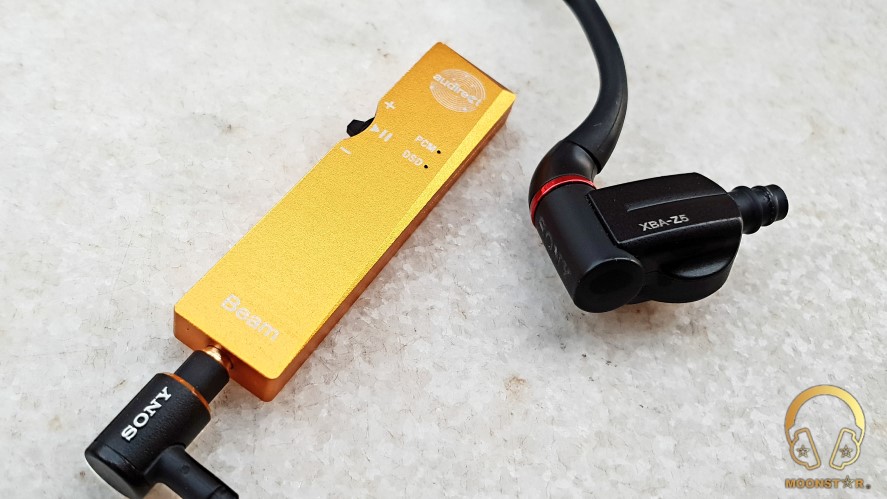
Albums & tracks used for this review:
Sound Analysis:
The Audirect Beam has a coherent and well balanced smooth and slightly bright tonality, which sounds in general very musical.
I have burn-in the Audirect Beam for approx. 150 hours before I wrote this review.
Please note that this is a low budget DAC and all my comments about the sound quality are in consideration of this price range.
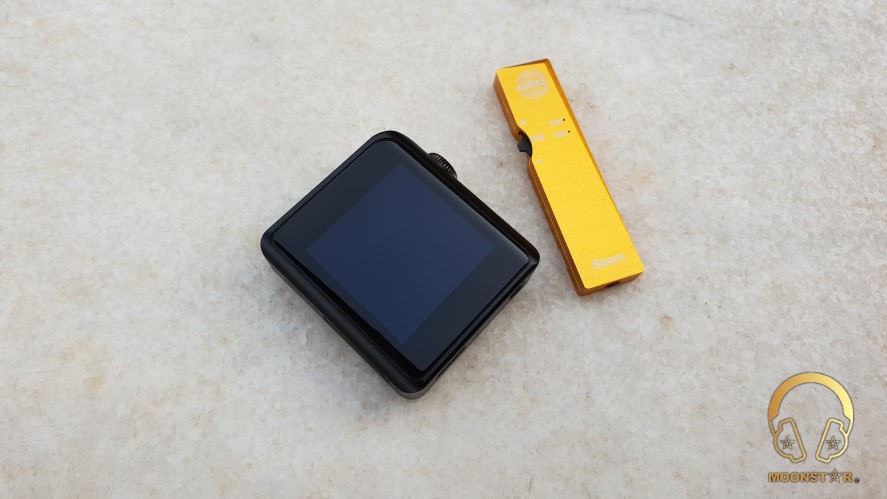
Bass:
The bass presentation of the Audirect Beam is pretty fast, controlled and linear. The sub-bass extension is moderate and the quantity is on an average level. Even if I wanted a bit more sub-bass depth, this is a situation that challenges the limits of this DACAMP on the basis of efficiency.
The Audirect Beam is pretty good in terms of speed and control that defines the detail level of the bass. The bass presentation of the Beam is more in a punchy than boomy character and there is no muddiness or interference while presenting some bass heavy genres like Trance, EDM, etc.
The bass quantity will satisfy most users with the exception of people who prefer presentation on a bass-head level.
Midrange:
The midrange is the focus point of the Audirect Beam. This device is very successful in the midrange especially for its size and its price, with its slightly bright, relative neutral and transparent, clean and clear midrange presentation.
Vocals:
The Audirect Beam pretty successful with female vocals, because of the relative prominent, detailed and well extended upper-midrange presentation. A noticeable plus point of the Beam is the ability, not to be harsh with its relative transparent vocal presentation. I liked the Beam with both mezzo-soprano and soprano level female vocals, because of the pretty good transition and control, form the top to the end and vice versa.
When it comes to male vocals; the Audirect Beam shows a deep, clean and transparent presentation, without any remarkable interference and muddiness. The source is important in this manner, because if you use an IEM with a neutral tuning, the Beam will sound slightly thinner than normal with male vocals.
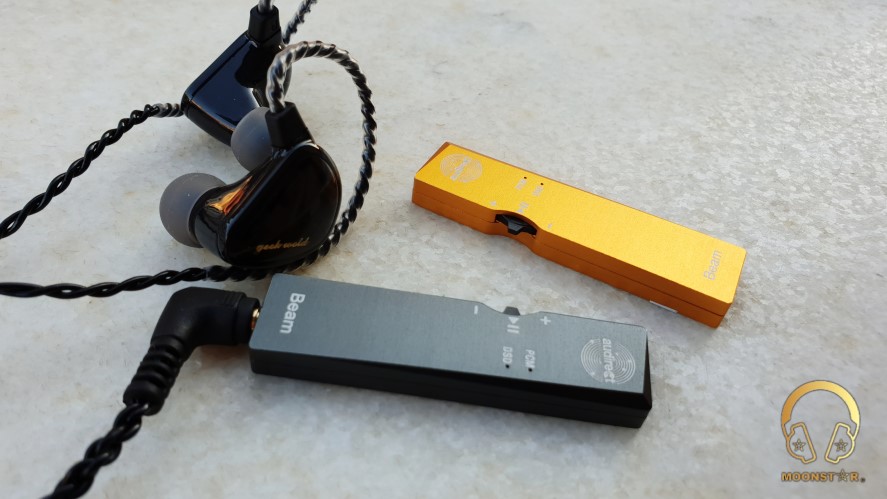
Instruments:
The Audirect Beam shows a slightly bright, close to neutral, natural and clear instrument tonality. The Beam represents instruments in a detailed and airy way, with good separation and definition. Pianos sounding slightly bright and pronounced, acoustic guitars are natural, transparent and fast, violins are slightly bright and doesn’t sounding harsh, but there is missing only a hint or warmness with violas.
Upper Midrange and Treble:
The upper midrange of the Audirect Beam is fairly pronounced and controlled, without any remarkable interference and sibilance. Instruments like piano, violin or cymbals sounding pretty fast and controlled.
The treble range of the Audirect Beam is not very upfront or too recessed and sounds quite neutral and clear. The treble extension is at a moderate level, but this makes a fatigue free listening possible.
The treble quantity and intension is pretty good and is able to catch the treble speed of some fast treble intensive genres like metal music, which is in my opinion a noticeable advantage. This ability makes a good detail rendering possible. The Beam is pretty successful in terms of control, emphasis and extension with instruments like side flutes while rising from the upper-midrange to the treble range. The Beam will also satisfy those who like a good detail rendering while listening to genres like electronic music.
Soundstage:
The Audirect Beam offers a very spacious and airy stage, where the instruments have enough space to spread out. This feature is also avoiding any conflicting and disorganizing of the instruments.
The soundstage has slightly less depth than its wideness, but don’t get me wrong, because the soundstage is by no way shallow. One other noticeable attribute of the soundstage is arrangement of instruments, which performs better in the horizontal direction than in the vertical.
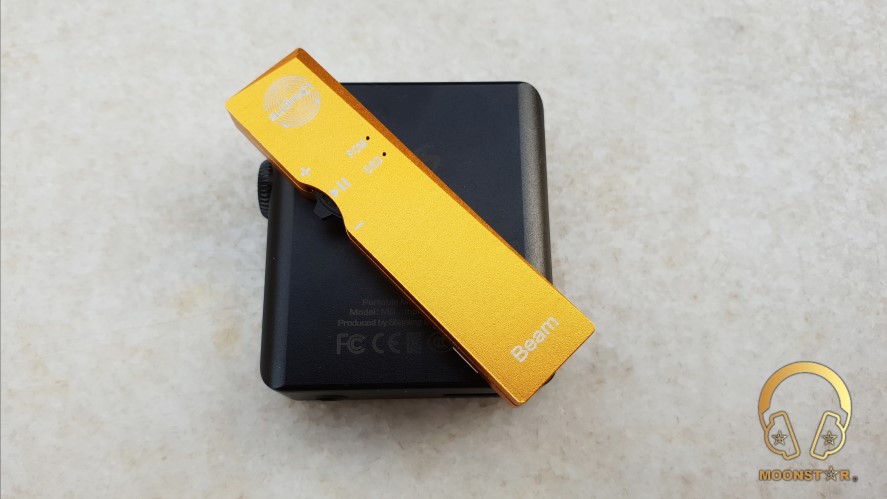
Comparison:
Audirect Beam versus Audioquest Dragonfly Black:
Both the Audirect Beam and the Audioquest Dragonfly Back are very capable devices in a price range between $100,00 – 150,00 USD.
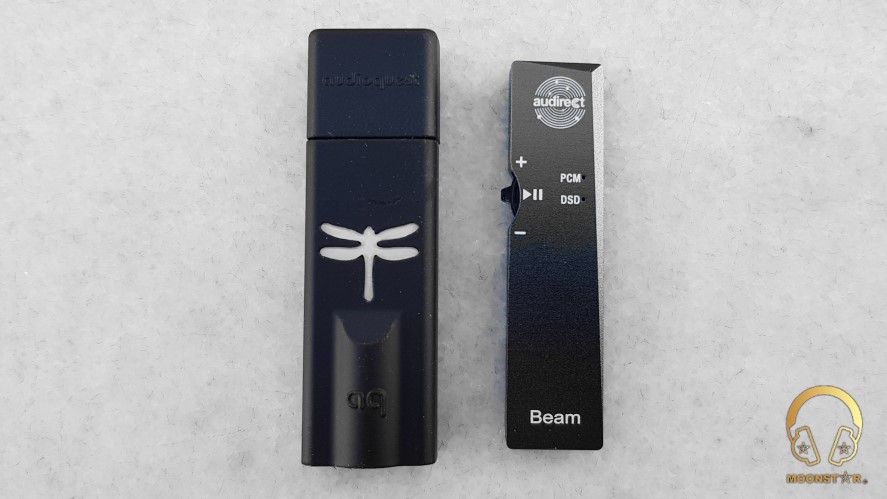
The Dragonfly Black has warmer tonality with an additional emphasis at the lower end.
The bass of the Audirect Beam sounds more linear and balanced than those of the Dragonfly Black, which has additional impact. The sub-bass of the Dragonfly Black are showing more depth and rumble, but have slightly less extension and definition compared to the Beam.
The bass of the Audirect Beam is faster and has better layering than those of the Dragonfly Black.
The midrange of the Dragonfly Black is warmer and ticker than those of the Audirect Beam, which has a more natural and transparent presentation. The Dragonfly Black sounds very delicious with male vocals, while the Audirect Beam has the upper hand for female vocals because of its brighter tonality and upper midrange emphasis.
Instruments like Bass Guitars and Drums sounding better with the Dragonfly Black, while the Audirect Beam sounds more natural with instruments like violins, side flutes etc.
The Audirect Beam has a brighter, more pronounced top end, which is superior to the Audioquet Dragonfly Black in terms of treble extension and control. The Beam sounds also slightly more detailed than the Dragonfly Black that is otherwise an already good performer at this price range.
When it comes to soundstage performance, both have an above average soundstage wideness, where the Beam has a slightly wider presentation. The soundstage depth is for both devices on a moderate level.
Conclusion:
The Audirect Beam is probably one of the best sounding portable DAC/AMP’s in its price tag. The great sound, tiny size and lower power consumption makes it to a nice option for those who are not satisfied with the performance of their phone, tablet and onboard soundcard of their Laptop or Desktop PC.
Pos and Cons:
About Audirect:
Audirect is part of Shenzen Micronetwork Technology Co., Ltd. located in Shenzen – China and is engaged since more than 6 years in the development, production and sales of portable DAC’s and the Audirect Beam is the latest DAC / AMP of the company.
Audirect Webpage: Audirect.cc

Disclaimer:
I would like to thank Audirect for providing me a sample of the Audirect Beam DAC/AMPfor review purposes. I am not affiliated with Audirect beyond this review and these words reflect my true, unaltered opinions about the product.
PS: This review was originally posted on my Review Blog, which I want now to share with the Head-Fi community:
Original Post: http://moonstarreviews.net/audirect-beam-review/
Price:
The MSRP Price for the Audirect Beam portable DAC/AMP is $99,00 USD
Purchase Link: Audirect Beam & Accessories
Introduction:
The Audirect Beam DAC& is a small very small sized Hi-Fi DAC and Headphone Amplifier created for people who are not satisfied with sound of their Phone, Table and onboard soundcard of their PC or Laptop.

Package and Accessories:
The device comes in a relative thin and small white card-box that sports the brand and model (Beam) name. There is also a small window where you can see the Beam without to open the box. This box is including the following items;
- 1 pcs x Audirect Beam DAC&
- 1 pcs x USB 2.0 to USB Type-C OTG cable
- 1 pcs x USB Type-C to USB Type-C OTG cable
- 1 pcs x Lightning to USB Type-C OTG Cable

Audirect Beam has put some nice accessories in to the package with almost 3 different UBC Type-C OTG cables. Especially the Apple Lightning to USB Type-C OTG cable is a hard to find and a very nice addition in my opinion.




Design and Build Quality:
The Audirect Beam is a very small and lightweight device with a well made/solid metal housing, which has a dimension of 52x14x6mm and a net weight of 12g (according to Audirect specs).


At the top is the USB-Type C female data connection.

At the bottom of the device is the 3.5mm headphone jack (unbalanced).

On the front of the DAC is the Audirect and the Beam logo. There are also two (2) led indicators, one for PCM and one for DSD conversation.

On the back of the device are four (4) screws and information like certificates/serial number.

At the right side of the Beam is an action key dedicated for volume up, down and play/pause functions.

They are two color options, which are gold and grey, but my personal favorite is the one in grey color, which looks pretty nice.
Technical Specifications:
- DAC : ES9018 HiFi SoC
- AMP : ES9018 HiFi SoC
- Output Power : -114dB TND+N, 2Vrms @ 600Ω -108dB THD+N, 49mW @ 32Ω
up to 1.1Vrms - Frequency response : 20-30000Hz (-0.15dB)
- Distortion : 0.0004%
- SNR : +125dB SNR, +120dB DNR
- PCM : PCM 16-32bit, 32-384KHz
- DSD : DoP64, DoP128, Native DSD64/128/256
- Internal resistance : <1Ω
- Input port : USB-C
- Output port : 3.5mm
- Dimensions : 52x14x6mm
- Weight : 12g

Hardware & Software:
The Audirect Beam DAC & AMP is a pretty small device with some nice hardware specs.
DAC & AMP Section:
The Audirect Beam DAC/AMP sports the ES9018 SABRE HiFi SoC (System on a Chip), which is made by the company ESS Technology Inc. This HiFi type System-On-Chip (SoC) integrates the Digital to Analog Converter (DAC) and the headphone amplifier with an output switch.

The ES9118 HiFi SoC is supporting the ESS patented 32-bit HyperStream architecture to deliver up to 125 dB SNR and -112 dB Total Harmonic Distortion plus Noise (THD+N). It also supports some of the popular high resolution and lossless audio formats including FLAC, ALAC, AIFF and WAV.

Supported Audio Formats:
- The Audirect Beam supports the following formats that I have tested out during this review;
- DSD (64/128), FLAC, ALAC, APE, WAV, AAC, OGG, MP3, WMA
Drivability:
The onboard amplifier, which is integrated to the ES9018 SoC is has a output rated of 49mW into 32Ω and 2Vrms into 600Ω. It was capable to driver my Sony SA3000 and Audio-Technica ATH-M50 to very loud volume levels.

Battery Draining:
The Audirect Beam shows less battery drain than my old Fiio E10K, the first generation of Audioquest Dragonfly 1.0, Dragonfly Black and Red.
Hissing:
One of the remarkable and pretty surprising features of the Audirect Beam is the clean sound output. The Beam sounds pretty clean with some of my sensitive IEM’s like the iBasso IT04 and the DUNU Falcon-C.
Equipments used for this review:
- DAC’s : Audirect Beam, Audioquest Dragonfly Black
- IEM’s : Vsonic Ares, iBasso IT04, Campfire Audio Polaris, Final E5000, FLC8N
- Earbuds : Simphonio Dragon2+, Astrotec Lyra Collection
- Headphones : Audio-Technica ATH50M, Sony SA3000
- Source : Meizu 7 Pro, Samsung Galaxy S9 Plus, iPad Air 2, Dell Inspirion 5521

Albums & tracks used for this review:
- Liquid Tension Experiment 2 – Acid Rain (Spotify)
- Opeth – Damnation (Tidal Hi-Fi)
- Megadeth – Sweating Bullets (Flac 16bit/44kHz)
- Metallica – Sad bu True (Flac 24bit/96kHz)
- Jehan Barbur – Yollar (Spotify)
- Minor Empire – Bulbulum Altin Kafeste (Spotify)
- London Grammar – Interlud (Live) (Flac 24bit/44kHz)
- Laura Pergolizzi – Lost On You “Live at Harvard and Stone” (Tidal Hi-Fi)
- Dire Straits – Money for Nothing (DSD 64)
- Otto Liebert & Luna Negra – The River (DSF) – Binaural Recording
- GoGo Penguin – Fanfares (Tidal Hi-Fi)
- Adam Taylor – Colour to the Moon (Flac 16bit/44kHz)
- Casey Abrams – Robot Lover (Tidal Hi-Fi)
- Lorde – Team (Flac 24bit/48kHz)
- Tom Player – Resonace Theory “Album” (Tidal Hi-Fi)
- Deeperise feat. Jabbar – Move On (Spotify)
Sound Analysis:
The Audirect Beam has a coherent and well balanced smooth and slightly bright tonality, which sounds in general very musical.
I have burn-in the Audirect Beam for approx. 150 hours before I wrote this review.
Please note that this is a low budget DAC and all my comments about the sound quality are in consideration of this price range.

Bass:
The bass presentation of the Audirect Beam is pretty fast, controlled and linear. The sub-bass extension is moderate and the quantity is on an average level. Even if I wanted a bit more sub-bass depth, this is a situation that challenges the limits of this DACAMP on the basis of efficiency.
The Audirect Beam is pretty good in terms of speed and control that defines the detail level of the bass. The bass presentation of the Beam is more in a punchy than boomy character and there is no muddiness or interference while presenting some bass heavy genres like Trance, EDM, etc.
The bass quantity will satisfy most users with the exception of people who prefer presentation on a bass-head level.
Midrange:
The midrange is the focus point of the Audirect Beam. This device is very successful in the midrange especially for its size and its price, with its slightly bright, relative neutral and transparent, clean and clear midrange presentation.
Vocals:
The Audirect Beam pretty successful with female vocals, because of the relative prominent, detailed and well extended upper-midrange presentation. A noticeable plus point of the Beam is the ability, not to be harsh with its relative transparent vocal presentation. I liked the Beam with both mezzo-soprano and soprano level female vocals, because of the pretty good transition and control, form the top to the end and vice versa.
When it comes to male vocals; the Audirect Beam shows a deep, clean and transparent presentation, without any remarkable interference and muddiness. The source is important in this manner, because if you use an IEM with a neutral tuning, the Beam will sound slightly thinner than normal with male vocals.

Instruments:
The Audirect Beam shows a slightly bright, close to neutral, natural and clear instrument tonality. The Beam represents instruments in a detailed and airy way, with good separation and definition. Pianos sounding slightly bright and pronounced, acoustic guitars are natural, transparent and fast, violins are slightly bright and doesn’t sounding harsh, but there is missing only a hint or warmness with violas.
Upper Midrange and Treble:
The upper midrange of the Audirect Beam is fairly pronounced and controlled, without any remarkable interference and sibilance. Instruments like piano, violin or cymbals sounding pretty fast and controlled.
The treble range of the Audirect Beam is not very upfront or too recessed and sounds quite neutral and clear. The treble extension is at a moderate level, but this makes a fatigue free listening possible.
The treble quantity and intension is pretty good and is able to catch the treble speed of some fast treble intensive genres like metal music, which is in my opinion a noticeable advantage. This ability makes a good detail rendering possible. The Beam is pretty successful in terms of control, emphasis and extension with instruments like side flutes while rising from the upper-midrange to the treble range. The Beam will also satisfy those who like a good detail rendering while listening to genres like electronic music.
Soundstage:
The Audirect Beam offers a very spacious and airy stage, where the instruments have enough space to spread out. This feature is also avoiding any conflicting and disorganizing of the instruments.
The soundstage has slightly less depth than its wideness, but don’t get me wrong, because the soundstage is by no way shallow. One other noticeable attribute of the soundstage is arrangement of instruments, which performs better in the horizontal direction than in the vertical.

Comparison:
Audirect Beam versus Audioquest Dragonfly Black:
Both the Audirect Beam and the Audioquest Dragonfly Back are very capable devices in a price range between $100,00 – 150,00 USD.

The Dragonfly Black has warmer tonality with an additional emphasis at the lower end.
The bass of the Audirect Beam sounds more linear and balanced than those of the Dragonfly Black, which has additional impact. The sub-bass of the Dragonfly Black are showing more depth and rumble, but have slightly less extension and definition compared to the Beam.
The bass of the Audirect Beam is faster and has better layering than those of the Dragonfly Black.
The midrange of the Dragonfly Black is warmer and ticker than those of the Audirect Beam, which has a more natural and transparent presentation. The Dragonfly Black sounds very delicious with male vocals, while the Audirect Beam has the upper hand for female vocals because of its brighter tonality and upper midrange emphasis.
Instruments like Bass Guitars and Drums sounding better with the Dragonfly Black, while the Audirect Beam sounds more natural with instruments like violins, side flutes etc.
The Audirect Beam has a brighter, more pronounced top end, which is superior to the Audioquet Dragonfly Black in terms of treble extension and control. The Beam sounds also slightly more detailed than the Dragonfly Black that is otherwise an already good performer at this price range.
When it comes to soundstage performance, both have an above average soundstage wideness, where the Beam has a slightly wider presentation. The soundstage depth is for both devices on a moderate level.
Conclusion:
The Audirect Beam is probably one of the best sounding portable DAC/AMP’s in its price tag. The great sound, tiny size and lower power consumption makes it to a nice option for those who are not satisfied with the performance of their phone, tablet and onboard soundcard of their Laptop or Desktop PC.
Pos and Cons:
- + Great Sound (especially the midrange area)
- + Good detail retrieval
- + Low to none hissing
- + Lots of OTG Cables (inclusive Apple lighting)
- + Plug and Play capability for Android and IOS
- – No battery means additional battery drain for the source

























